Tag #behaviour
1798 papers:
 EDM-2019-BotelhoBH #detection #re-engineering #student
EDM-2019-BotelhoBH #detection #re-engineering #student- Machine-Learned or Expert-Engineered Features? Exploring Feature Engineering Methods in Detectors of Student Behavior and Affect (AFB, RSB, NTH).
 EDM-2019-GuthrieC #learning #online #quality #student
EDM-2019-GuthrieC #learning #online #quality #student- Adding duration-based quality labels to learning events for improved description of students' online learning behavior (MWG, ZC).
 EDM-2019-HowlinD #approach #clustering #detection #fuzzy #student #using
EDM-2019-HowlinD #approach #clustering #detection #fuzzy #student #using- Detecting Outlier Behaviors in Student Progress Trajectories Using a Repeated Fuzzy Clustering Approach (CPH, CDD).
 EDM-2019-KarumbaiahOB #metric #performance #student
EDM-2019-KarumbaiahOB #metric #performance #student- The Influence of School Demographics on the Relationship Between Students' Help-Seeking Behavior and Performance and Motivational Measures (SK, JO, RSB).
 EDM-2019-MussackFSC #learning #problem #similarity #towards
EDM-2019-MussackFSC #learning #problem #similarity #towards- Towards discovering problem similarity through deep learning: combining problem features and user behavior (DM, RF, PS, PCL).
 ICSME-2019-NewmanPA #identifier #modelling
ICSME-2019-NewmanPA #identifier #modelling- Modeling the Relationship Between Identifier Name and Behavior (CDN, AP, RSA), pp. 376–378.
 MSR-2019-YangC0 #development #predict #source code #specification
MSR-2019-YangC0 #development #predict #source code #specification- Predicting co-changes between functionality specifications and source code in behavior driven development (AZHY, DAdC, YZ0), pp. 534–544.
 SCAM-2019-HarrandSMB #bytecode #java
SCAM-2019-HarrandSMB #bytecode #java- The Strengths and Behavioral Quirks of Java Bytecode Decompilers (NH, CSV, MM, BB), pp. 92–102.
 SCAM-2019-Kessel019a #comparison #equivalence #functional #on the
SCAM-2019-Kessel019a #comparison #equivalence #functional #on the- On the Efficacy of Dynamic Behavior Comparison for Judging Functional Equivalence (MK, CA0), pp. 193–203.
 SCAM-2019-StorerB #automation #development #exclamation #generative #testing
SCAM-2019-StorerB #automation #development #exclamation #generative #testing- Behave Nicely! Automatic Generation of Code for Behaviour Driven Development Test Suites (TS, RB), pp. 228–237.
 SEFM-2019-BravettiZ #contract
SEFM-2019-BravettiZ #contract- Relating Session Types and Behavioural Contracts: The Asynchronous Case (MB, GZ), pp. 29–47.
 SEFM-2019-PappTB #detection #towards
SEFM-2019-PappTB #detection #towards- Towards Detecting Trigger-Based Behavior in Binaries: Uncovering the Correct Environment (DP, TT, LB), pp. 491–509.
 AIIDE-2019-WangSZ #learning #modelling
AIIDE-2019-WangSZ #learning #modelling- Beyond Winning and Losing: Modeling Human Motivations and Behaviors with Vector-Valued Inverse Reinforcement Learning (BW, TS, XSZ), pp. 195–201.
 AIIDE-2019-ZhangSFK #semantics
AIIDE-2019-ZhangSFK #semantics- Knowledge-Powered Inference of Crowd Behaviors in Semantically Rich Environments (XZ, DS, PF, MK), pp. 202–209.
 CHI-PLAY-2019-AhmadBKTNE #analysis #modelling
CHI-PLAY-2019-AhmadBKTNE #analysis #modelling- Modeling Individual and Team Behavior through Spatio-temporal Analysis (SA, AB, EK, ZT, THDN, MSEN), pp. 601–612.
 CoG-2019-AndroulakakisF #evolution #problem
CoG-2019-AndroulakakisF #evolution #problem- Evolution of Kiting Behavior in a Two Player Combat Problem (PA, ZEF), pp. 1–8.
 CoG-2019-FriedmanS
CoG-2019-FriedmanS - Desirable Behaviors for Companion Bots in First-Person Shooters (AF, JS), pp. 1–8.
 CoG-2019-MassoudBBGP #game studies #profiling #using
CoG-2019-MassoudBBGP #game studies #profiling #using- Eco-driving Profiling and Behavioral Shifts Using IoT Vehicular Sensors Combined with Serious Games (RM, FB, RB, ADG, SP), pp. 1–8.
 CoG-2019-ParmeterF #game studies #interactive #music
CoG-2019-ParmeterF #game studies #interactive #music- Influencing the Behavioral Responses of Players in an Interactive Narrative Game through Music and Arousal Congruency (LP, MF), pp. 1–4.
 CoG-2019-PellingG #probability
CoG-2019-PellingG #probability- Two Human-Like Imitation-Learning Bots with Probabilistic Behaviors (CP, HJG), pp. 1–7.
 CoG-2019-PerezTBF #game studies #interactive #video
CoG-2019-PerezTBF #game studies #interactive #video- Exploring User Motor Behaviour in Bimanual Interactive Video Games (NPP, LT, EB, IF), pp. 1–7.
 CoG-2019-SoaresB #classification
CoG-2019-SoaresB #classification- Deep Variational Autoencoders for NPC Behaviour Classification (ESS, VB), pp. 1–4.
 CoG-2019-WangSCF #game studies #online
CoG-2019-WangSCF #game studies #online- Personality and Behavior in Role-based Online Games (ZW, AS, AC, EF), pp. 1–8.
 DiGRA-2019-Lim #game studies #motivation
DiGRA-2019-Lim #game studies #motivation- Different Frames of Players and the Motivation of Prosocial Behaviors in Digital Games (JSL).
 VS-Games-2019-HoffmannMW #education #game studies
VS-Games-2019-HoffmannMW #education #game studies- Perfectionism in Games - Analyzing Playing Behaviors in an Educational Game (GH, RM, CW), pp. 1–4.
 VS-Games-2019-ZojajiP #education #towards
VS-Games-2019-ZojajiP #education #towards- Towards Virtual Agents for Supporting Appropriate Small Group Behaviors in Educational Contexts (SZ, CP0), pp. 1–2.
 CIKM-2019-0009XWSWZG #comprehension #online
CIKM-2019-0009XWSWZG #comprehension #online- Understanding Default Behavior in Online Lending (YY0, YX, CW, YS, FW, YZ, MG), pp. 2043–2052.
 CIKM-2019-GhoshS
CIKM-2019-GhoshS - Session-based Search Behavior in Naturalistic Settings for Learning-related Tasks (SG, CS), pp. 2449–2452.
 CIKM-2019-Pothirattanachaikul #documentation
CIKM-2019-Pothirattanachaikul #documentation- Analyzing the Effects of Document's Opinion and Credibility on Search Behaviors and Belief Dynamics (SP, TY, YY, MY), pp. 1653–1662.
 CIKM-2019-QianW0 #comprehension #modelling #named #process
CIKM-2019-QianW0 #comprehension #modelling #named #process- BePT: A Behavior-based Process Translator for Interpreting and Understanding Process Models (CQ, LW, AK0), pp. 1873–1882.
 CIKM-2019-ShresthaMAV #graph #interactive #learning #social
CIKM-2019-ShresthaMAV #graph #interactive #learning #social- Learning from Dynamic User Interaction Graphs to Forecast Diverse Social Behavior (PS, SM, DA, SV), pp. 2033–2042.
 CIKM-2019-WangL #learning #network
CIKM-2019-WangL #learning #network- Spotting Terrorists by Learning Behavior-aware Heterogeneous Network Embedding (PCW, CTL), pp. 2097–2100.
 CIKM-2019-YangLSB #interactive #predict
CIKM-2019-YangLSB #interactive #predict- Exploring The Interaction Effects for Temporal Spatial Behavior Prediction (HY, TL, YS, EB), pp. 2013–2022.
 CIKM-2019-YeWYJZXY #graph #network #representation
CIKM-2019-YeWYJZXY #graph #network #representation- Bayes EMbedding (BEM): Refining Representation by Integrating Knowledge Graphs and Behavior-specific Networks (YY, XW, JY, KJ, JZ, YX, HY), pp. 679–688.
 CIKM-2019-ZhangPZZWXJ #e-commerce #visual notation
CIKM-2019-ZhangPZZWXJ #e-commerce #visual notation- Virtual ID Discovery from E-commerce Media at Alibaba: Exploiting Richness of User Click Behavior for Visual Search Relevance (YZ, PP, YZ, KZ, JW, YX, RJ), pp. 2489–2497.
 ICML-2019-AyedLC #modelling #process #statistics
ICML-2019-AyedLC #modelling #process #statistics- Beyond the Chinese Restaurant and Pitman-Yor processes: Statistical Models with double power-law behavior (FA, JL, FC), pp. 395–404.
 ICML-2019-HannaNS #evaluation #policy
ICML-2019-HannaNS #evaluation #policy- Importance Sampling Policy Evaluation with an Estimated Behavior Policy (JH, SN, PS), pp. 2605–2613.
 ICML-2019-ZhuWYWM #probability
ICML-2019-ZhuWYWM #probability- The Anisotropic Noise in Stochastic Gradient Descent: Its Behavior of Escaping from Sharp Minima and Regularization Effects (ZZ, JW, BY, LW, JM), pp. 7654–7663.
 KDD-2019-BellettiCC #dependence
KDD-2019-BellettiCC #dependence- Quantifying Long Range Dependence in Language and User Behavior to improve RNNs (FB, MC, EHC), pp. 1317–1327.
 KDD-2019-ChenSJ0Z0 #effectiveness #performance #recommendation #reuse #using
KDD-2019-ChenSJ0Z0 #effectiveness #performance #recommendation #reuse #using- Effective and Efficient Reuse of Past Travel Behavior for Route Recommendation (LC, SS, CSJ, BY0, ZZ, LS0), pp. 488–498.
 KDD-2019-ChenZBXL #predict #what
KDD-2019-ChenZBXL #predict #what- Investment Behaviors Can Tell What Inside: Exploring Stock Intrinsic Properties for Stock Trend Prediction (CC, LZ, JB0, CX, TYL), pp. 2376–2384.
 KDD-2019-GuoHJZW0 #multi #network #predict #realtime #using
KDD-2019-GuoHJZW0 #multi #network #predict #realtime #using- Buying or Browsing?: Predicting Real-time Purchasing Intent using Attention-based Deep Network with Multiple Behavior (LG, LH, RJ, BZ, XW, BC0), pp. 1984–1992.
 KDD-2019-HuangWZZZYC #modelling #multi #online #predict
KDD-2019-HuangWZZZYC #modelling #multi #online #predict- Online Purchase Prediction via Multi-Scale Modeling of Behavior Dynamics (CH0, XW, XZ, CZ, JZ, DY, NVC), pp. 2613–2622.
 KDD-2019-NosakhareP #modelling #probability
KDD-2019-NosakhareP #modelling #probability- Probabilistic Latent Variable Modeling for Assessing Behavioral Influences on Well-Being (EN, RWP), pp. 2718–2726.
 KDD-2019-PiBZZG #modelling #predict
KDD-2019-PiBZZG #modelling #predict- Practice on Long Sequential User Behavior Modeling for Click-Through Rate Prediction (QP, WB, GZ, XZ, KG), pp. 2671–2679.
 KDD-2019-WangJCJ #named #predict
KDD-2019-WangJCJ #named #predict- TUBE: Embedding Behavior Outcomes for Predicting Success (DW, TJ, NVC, MJ0), pp. 1682–1690.
 KDD-2019-YabeTSSU #predict #using #web
KDD-2019-YabeTSSU #predict #using #web- Predicting Evacuation Decisions using Representations of Individuals' Pre-Disaster Web Search Behavior (TY, KT, TS, YS, SVU), pp. 2707–2717.
 MoDELS-2019-AlferezPSBR #development #modelling #requirements
MoDELS-2019-AlferezPSBR #development #modelling #requirements- Bridging the Gap between Requirements Modeling and Behavior-Driven Development (MA, FP, MS, LCB, JRR), pp. 239–249.
 PLDI-2019-ScalasYB #message passing #source code #verification
PLDI-2019-ScalasYB #message passing #source code #verification- Verifying message-passing programs with dependent behavioural types (AS, NY, EB), pp. 502–516.
 ASE-2019-ChenSHWL #case study #experience #generative #testing #using
ASE-2019-ChenSHWL #case study #experience #generative #testing #using- An Experience Report of Generating Load Tests Using Log-Recovered Workloads at Varying Granularities of User Behaviour (JC, WS, AEH, YW, JL), pp. 669–681.
 ESEC-FSE-2019-MenghiNGB #automation #generative #modelling #nondeterminism #online #testing
ESEC-FSE-2019-MenghiNGB #automation #generative #modelling #nondeterminism #online #testing- Generating automated and online test oracles for Simulink models with continuous and uncertain behaviors (CM, SN, KG, LCB), pp. 27–38.
- ICSE-2019-AbidSDAM #developer #java #matter
- Developer reading behavior while summarizing Java methods: size and context matters (NJA, BS, ND, HA, JIM), pp. 384–395.
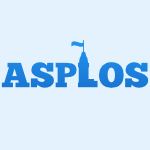 ASPLOS-2019-DangwalCMS
ASPLOS-2019-DangwalCMS - Safer Program Behavior Sharing Through Trace Wringing (DD, WC, JM, TS), pp. 1059–1072.
 CASE-2019-AzefackPAGCBX #approach #detection #smarttech
CASE-2019-AzefackPAGCBX #approach #detection #smarttech- An Approach for Behavioral Drift Detection in a Smart Home (CA, RP, VA, GG, CMC, RB, XX), pp. 727–732.
 CASE-2019-BabuZBCM #recognition
CASE-2019-BabuZBCM #recognition- An Intelligent Action Recognition System to assess Cognitive Behavior for Executive Function Disorder (ARB, MZ, JRB, DC, FM), pp. 164–169.
 CASE-2019-GaoZ0 #learning #modelling #navigation
CASE-2019-GaoZ0 #learning #modelling #navigation- Modeling Socially Normative Navigation Behaviors from Demonstrations with Inverse Reinforcement Learning (XG, XZ, MT0), pp. 1333–1340.
 CGO-2019-NelsonP #comprehension
CGO-2019-NelsonP #comprehension- Understanding RDMA Behavior in NUMA Systems (JN, RP), pp. 273–274.
 ICTSS-2019-AichernigB0HPRR #hybrid #machine learning #modelling #testing
ICTSS-2019-AichernigB0HPRR #hybrid #machine learning #modelling #testing- Learning a Behavior Model of Hybrid Systems Through Combining Model-Based Testing and Machine Learning (BKA, RB, ME0, MH, FP, WR, AR, MT, MT), pp. 3–21.
 EDM-2018-ChenLCBC #analysis #learning #scalability
EDM-2018-ChenLCBC #analysis #learning #scalability- Behavioral Analysis at Scale: Learning Course Prerequisite Structures from Learner Clickstreams (WC, ASL, DC, CGB, MC).
 EDM-2018-DuDP #analysis #learning #named
EDM-2018-DuDP #analysis #learning #named- ELBA: Exceptional Learning Behavior Analysis (XD, WD, MP).
 EDM-2018-GitinabardKLW #certification #predict #social
EDM-2018-GitinabardKLW #certification #predict #social- Your Actions or Your Associates? Predicting Certification and Dropout in MOOCs with Behavioral and Social Features (NG, FK, CL, EYW).
 EDM-2018-LorenzenHA #education #online #student
EDM-2018-LorenzenHA #education #online #student- Tracking Behavioral Patterns among Students in an Online Educational System (SL, NH, SA).
 EDM-2018-RajendranKCLB #learning #predict
EDM-2018-RajendranKCLB #learning #predict- Predicting Learning by Analyzing Eye-Gaze Data of Reading Behavior (RR, AK, KEC, DTL, GB).
 EDM-2018-SawyerRAL #analysis #game studies #learning #problem #student
EDM-2018-SawyerRAL #analysis #game studies #learning #problem #student- Filtered Time Series Analyses of Student Problem-Solving Behaviors in Game-based Learning (RS, JPR, RA, JCL).
 EDM-2018-SinghSCD #learning #modelling #multi #student
EDM-2018-SinghSCD #learning #modelling #multi #student- Modeling Hint-Taking Behavior and Knowledge State of Students with Multi-Task Learning (HS, SKS, RC, PD).
 ICPC-2018-LiNJWHW #evolution #learning #named
ICPC-2018-LiNJWHW #evolution #learning #named- Logtracker: learning log revision behaviors proactively from software evolution history (SL, XN, ZJ, JW, HH, TW0), pp. 178–188.
 ICPC-2018-LiuDAA #component #execution #identification #interface
ICPC-2018-LiuDAA #component #execution #identification #interface- Component interface identification and behavioral model discovery from software execution data (CL, BFvD, NA, WMPvdA), pp. 97–107.
 MSR-2018-CiborowskaKD #detection #developer #reuse #using #web
MSR-2018-CiborowskaKD #detection #developer #reuse #using #web- Detecting and characterizing developer behavior following opportunistic reuse of code snippets from the web (AC, NAK, KD), pp. 94–97.
 MSR-2018-Soto-ValeroBB #analysis #debugging #detection #process
MSR-2018-Soto-ValeroBB #analysis #debugging #detection #process- Detection and analysis of behavioral T-patterns in debugging activities (CSV, JB, BB), pp. 110–113.
 SANER-2018-BinamunguE0 #challenge #development #maintenance #specification
SANER-2018-BinamunguE0 #challenge #development #maintenance #specification- Maintaining behaviour driven development specifications: Challenges and opportunities (LPB, SME, NK0), pp. 175–184.
- IFM-2018-KamburjanC
- Stateful Behavioral Types for Active Objects (EK, TCC), pp. 214–235.
 AIIDE-2018-NeufeldMB #approach #execution #hybrid #network
AIIDE-2018-NeufeldMB #approach #execution #hybrid #network- A Hybrid Approach to Planning and Execution in Dynamic Environments Through Hierarchical Task Networks and Behavior Trees (XN, SM, SB), pp. 201–207.
 AIIDE-2018-OliveiraNSR #evolution #interactive
AIIDE-2018-OliveiraNSR #evolution #interactive- Evolving Behaviors for an Interactive Cube-Based Artifact (VMO, HADdN, FAAMNS, CSR), pp. 81–87.
 CHI-PLAY-2018-PfauSM #modelling #towards
CHI-PLAY-2018-PfauSM #modelling #towards- Towards Deep Player Behavior Models in MMORPGs (JP, JDS, RM), pp. 381–392.
 CIG-2018-IshiharaIIHT #game studies #implementation #monte carlo
CIG-2018-IshiharaIIHT #game studies #implementation #monte carlo- Monte-Carlo Tree Search for Implementation of Dynamic Difficulty Adjustment Fighting Game AIs Having Believable Behaviors (MI, SI, RI, TH, RT), pp. 1–8.
 CIKM-2018-CaiBWSSW #interactive #modelling #online #process
CIKM-2018-CaiBWSSW #interactive #modelling #online #process- Modeling Sequential Online Interactive Behaviors with Temporal Point Process (RC, XB, ZW, YS, PS, HW), pp. 873–882.
 CIKM-2018-CaoCCTLL #assessment #community #detection #enterprise #network
CIKM-2018-CaoCCTLL #assessment #community #detection #enterprise #network- Behavior-based Community Detection: Application to Host Assessment In Enterprise Information Networks (CC, ZC, JC, LAT, CL, ZL), pp. 1977–1985.
 CIKM-2018-ChenKBRKKB #analysis #predict
CIKM-2018-ChenKBRKKB #analysis #predict- Predictive Analysis by Leveraging Temporal User Behavior and User Embeddings (CC, SK, HB, RAR, EK, BK, RCB), pp. 2175–2182.
 CIKM-2018-GeZZCLYHLSLYHZZ #image #matter #modelling #using #visual notation
CIKM-2018-GeZZCLYHLSLYHZZ #image #matter #modelling #using #visual notation- Image Matters: Visually Modeling User Behaviors Using Advanced Model Server (TG, LZ, GZ, KC, SL, HY, ZH, BL, PS, HL, PY, SH, ZZ, XZ, YZ, KG), pp. 2087–2095.
 CIKM-2018-KrishnanSS #learning #online
CIKM-2018-KrishnanSS #learning #online- Insights from the Long-Tail: Learning Latent Representations of Online User Behavior in the Presence of Skew and Sparsity (AK, AS, HS), pp. 297–306.
 CIKM-2018-LeiXWP #mining #named
CIKM-2018-LeiXWP #mining #named- CAPatternMiner: Mining Ship Collision Avoidance Behavior from AIS Trajectory Data (PRL, LPX, YTW, WCP), pp. 1875–1878.
 CIKM-2018-SantuLCZ #modelling #named
CIKM-2018-SantuLCZ #modelling #named- JIM: Joint Influence Modeling for Collective Search Behavior (SKKS, LL, YC, CZ), pp. 637–646.
 CIKM-2018-ShuaiLYLLY #network #social
CIKM-2018-ShuaiLYLLY #network #social- Newsfeed Filtering and Dissemination for Behavioral Therapy on Social Network Addictions (HHS, YCL, DNY, YFL, WCL, PSY), pp. 597–606.
 CIKM-2018-WuSDHFC #named #rest
CIKM-2018-WuSDHFC #named #rest- RESTFul: Resolution-Aware Forecasting of Behavioral Time Series Data (XW, BS, YD, CH0, LF, NVC), pp. 1073–1082.
 CIKM-2018-YamamotoYF #people #towards #web
CIKM-2018-YamamotoYF #people #towards #web- Exploring People's Attitudes and Behaviors Toward Careful Information Seeking in Web Search (TY, YY, SF), pp. 963–972.
 CIKM-2018-ZhuangTD #question #sequence
CIKM-2018-ZhuangTD #question #sequence- Can User Behaviour Sequences Reflect Perceived Novelty? (MZ, EGT, GD), pp. 1507–1510.
 ECIR-2018-BrazierH #case study #comparative
ECIR-2018-BrazierH #case study #comparative- A Comparative Study of Native and Non-native Information Seeking Behaviours (DB, MH), pp. 237–248.
 ECIR-2018-MaxwellA #modelling
ECIR-2018-MaxwellA #modelling- Information Scent, Searching and Stopping - Modelling SERP Level Stopping Behaviour (DM, LA), pp. 210–222.
 ICML-2018-NieZP #visualisation
ICML-2018-NieZP #visualisation- A Theoretical Explanation for Perplexing Behaviors of Backpropagation-based Visualizations (WN, YZ, AP), pp. 3806–3815.
 ICML-2018-ZhitnikovMM #statistics
ICML-2018-ZhitnikovMM #statistics- Revealing Common Statistical Behaviors in Heterogeneous Populations (AZ, RM, TM), pp. 5945–5954.
 ICPR-2018-DehzangiM #predict #using
ICPR-2018-DehzangiM #predict #using- Unobtrusive Driver Drowsiness Prediction Using Driving Behavior from Vehicular Sensors (OD, SM), pp. 3598–3603.
 ICPR-2018-DhakaIS #linear #modelling
ICPR-2018-DhakaIS #linear #modelling- Latent Linear Dynamics for Modeling Pedestrian Behaviors (DD, MI, AS), pp. 1592–1597.
 ICPR-2018-JinZWJ #clustering #detection #representation
ICPR-2018-JinZWJ #clustering #detection #representation- Sparse Representation and Weighted Clustering Based Abnormal Behavior Detection (DJ, SZ, SW, XYJ), pp. 1574–1579.
 ICPR-2018-SunZWJ #detection #learning
ICPR-2018-SunZWJ #detection #learning- Weak Supervised Learning Based Abnormal Behavior Detection (XS, SZ, SW, XYJ), pp. 1580–1585.
 ICPR-2018-YangCTWZ #recognition
ICPR-2018-YangCTWZ #recognition- Recognition of Infants' Gaze Behaviors and Emotions (BY, JC, YT, LW, HZ), pp. 3204–3209.
 KDD-2018-BaiQD #modelling
KDD-2018-BaiQD #modelling- Discovering Models from Structural and Behavioral Brain Imaging Data (ZB, BQ, ID), pp. 1128–1137.
 KDD-2018-ChungCHLE #detection #visual notation
KDD-2018-ChungCHLE #detection #visual notation- Detection of Apathy in Alzheimer Patients by Analysing Visual Scanning Behaviour with RNNs (JC, SAC, NH, KLL, ME), pp. 149–157.
 KDD-2018-GongW #analysis #modelling #network #sentiment #social
KDD-2018-GongW #analysis #modelling #network #sentiment #social- When Sentiment Analysis Meets Social Network: A Holistic User Behavior Modeling in Opinionated Data (LG, HW), pp. 1455–1464.
 KDD-2018-HangPN #predict #student
KDD-2018-HangPN #predict #student- Exploring Student Check-In Behavior for Improved Point-of-Interest Prediction (MH, IP, JN), pp. 321–330.
 KDD-2018-LiZLHMC #learning #recommendation
KDD-2018-LiZLHMC #learning #recommendation- Learning from History and Present: Next-item Recommendation via Discriminatively Exploiting User Behaviors (ZL, HZ, QL0, ZH, TM, EC), pp. 1734–1743.
 KDD-2018-WangFZWZA #analysis #how #learning #representation
KDD-2018-WangFZWZA #analysis #how #learning #representation- You Are How You Drive: Peer and Temporal-Aware Representation Learning for Driving Behavior Analysis (PW, YF, JZ, PW, YZ, CCA), pp. 2457–2466.
 KDD-2018-WangJZEC #learning #multi
KDD-2018-WangJZEC #learning #multi- Multi-Type Itemset Embedding for Learning Behavior Success (DW, MJ0, QZ, ZE, NVC), pp. 2397–2406.
 MoDELS-2018-ChenKSPJ
MoDELS-2018-ChenKSPJ - Digital Behavioral Twins for Safe Connected Cars (XC, EK, SS, VMP, ZJ), pp. 144–153.
 ECOOP-2018-AnconaDZ #infinity #modelling
ECOOP-2018-AnconaDZ #infinity #modelling- Modeling Infinite Behaviour by Corules (DA, FD, EZ), p. 31.
 POPL-2018-BaoKPS #modelling #source code
POPL-2018-BaoKPS #modelling #source code- Analytical modeling of cache behavior for affine programs (WB, SK, LNP, PS), p. 26.
 SAS-2018-PrabhuMV #learning #proving #safety
SAS-2018-PrabhuMV #learning #proving #safety- Efficiently Learning Safety Proofs from Appearance as well as Behaviours (SP, KM, RV), pp. 326–343.
 ESEC-FSE-2018-LlerenaBBSR #modelling #nondeterminism #probability #verification
ESEC-FSE-2018-LlerenaBBSR #modelling #nondeterminism #probability #verification- Verifying the long-run behavior of probabilistic system models in the presence of uncertainty (YRSL, MB, MB, GS, DSR), pp. 587–597.
- ICSE-2018-BellerSSZ #debugging #on the
- On the dichotomy of debugging behavior among programmers (MB, NS, DS, AZ), pp. 572–583.
- ICSE-2018-DamevskiCSKP #developer #ide #modelling #predict #topic #using
- Predicting future developer behavior in the IDE using topic models (KD, HC, DCS, NAK, LLP), p. 932.
- ICSE-2018-DanglotPBM #case study #correctness #runtime
- Correctness attraction: a study of stability of software behavior under runtime perturbation (BD, PP, BB, MM), p. 481.
- ICSE-2018-LangeNTY #framework #message passing #using #verification
- A static verification framework for message passing in Go using behavioural types (JL, NN, BT, NY), pp. 1137–1148.
- ICSE-2018-MadalaDA #approach #combinator
- A combinatorial approach for exposing off-nominal behaviors (KM, HD, DA), pp. 910–920.
- ICSE-2018-ShanNS #android #detection #self
- Self-hiding behavior in Android apps: detection and characterization (ZS, IN, RS), pp. 728–739.
 CASE-2018-FleischerBCRKT #automation #integration #metric #process
CASE-2018-FleischerBCRKT #automation #integration #metric #process- Integration of Electronic Pipettes into a Dual-arm Robotic System for Automated Analytical Measurement Processes Behaviors (HF, DB, XC, TR, MK, KT), pp. 22–27.
 CASE-2018-RenWLG #learning #online #video
CASE-2018-RenWLG #learning #online #video- Learning Traffic Behaviors by Extracting Vehicle Trajectories from Online Video Streams (XR, DW, ML, KG), pp. 1276–1283.
 ESOP-2018-SimpsonV #algebra #equivalence
ESOP-2018-SimpsonV #algebra #equivalence- Behavioural Equivalence via Modalities for Algebraic Effects (AS, NFWV), pp. 300–326.
 ICST-2018-HendersonP #control flow #fault #locality
ICST-2018-HendersonP #control flow #fault #locality- Behavioral Fault Localization by Sampling Suspicious Dynamic Control Flow Subgraphs (TADH, AP), pp. 93–104.
 ICST-2018-JiLCPZ0YL #network #nondeterminism #search-based #testing
ICST-2018-JiLCPZ0YL #network #nondeterminism #search-based #testing- Uncovering Unknown System Behaviors in Uncertain Networks with Model and Search-Based Testing (RJ, ZL, SC, MP, TZ0, SA0, TY0, XL), pp. 204–214.
 ICTSS-2018-DesaiG #constraints #generative #ocl #testing
ICTSS-2018-DesaiG #constraints #generative #ocl #testing- Generating OCL Constraints from Test Case Schemas For Testing Model Behavior (ND0, MG), pp. 62–68.
 ICSA-2017-CzepaTZKWR #architecture #constraints #empirical #on the #semantics
ICSA-2017-CzepaTZKWR #architecture #constraints #empirical #on the #semantics- On the Understandability of Semantic Constraints for Behavioral Software Architecture Compliance: A Controlled Experiment (CC, HT, UZ, TTTK, EW, CR), pp. 155–164.
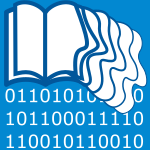 JCDL-2017-SinghNGBMG #case study #dataset #reuse
JCDL-2017-SinghNGBMG #case study #dataset #reuse- Citation Sentence Reuse Behavior of Scientists: A Case Study on Massive Bibliographic Text Dataset of Computer Science (MS0, AN, DG, NAB, AM0, PG), pp. 277–280.
 EDM-2017-AnKM #question
EDM-2017-AnKM #question- Can Typical Behaviors Identified in MOOCs be Discovered in Other Courses? (TSA, CK, AM).
 EDM-2017-BauerFP #analysis #challenge #game studies #problem
EDM-2017-BauerFP #analysis #challenge #game studies #problem- Analysis of problem-solving behavior in open-ended scientific-discovery game challenges (AB, JF, ZP).
 EDM-2017-DongB #learning #modelling #student
EDM-2017-DongB #learning #modelling #student- An Extended Learner Modeling Method to Assess Students' Learning Behaviors (YD, GB).
 EDM-2017-GeigleZ #markov #modelling #student
EDM-2017-GeigleZ #markov #modelling #student- Modeling MOOC Student Behavior With Two-Layer Hidden Markov Models (CG, CZ).
 EDM-2017-HarrakBL #identification #student
EDM-2017-HarrakBL #identification #student- Identifying relationships between students' questions type and their behavior (FH, FB, VL).
 EDM-2017-KaiAPBMWM #online #predict #student
EDM-2017-KaiAPBMWM #online #predict #student- Predicting Student Retention from Behavior in an Online Orientation Course (SK, JMLA, LP, RSB, KM, HW, MM).
 EDM-2017-KarumbaiahLAWA #student
EDM-2017-KarumbaiahLAWA #student- Addressing Student Behavior and Affect with Empathy and Growth Mindset (SK, RL, DA, BPW, IA).
 EDM-2017-LanBYC
EDM-2017-LanBYC - Behavior-Based Latent Variable Model for Learner Engagement (ASL, CGB, TYY, MC).
 EDM-2017-ParedesHH #comprehension #programming #student #using
EDM-2017-ParedesHH #comprehension #programming #student #using- Understanding Student's Reviewing and Reflection Behaviors Using Web-based Programming Grading Assistant (YVMP, PKH, SIHH).
 ICPC-2017-AlexandruPG #parsing #using
ICPC-2017-AlexandruPG #parsing #using- Replicating parser behavior using neural machine translation (CVA, SP, HCG), pp. 316–319.
 ICPC-2017-BorgAR #impact analysis
ICPC-2017-BorgAR #impact analysis- Software engineers' information seeking behavior in change impact analysis: an interview study (MB, EA, PR), pp. 12–22.
 ICPC-2017-MostafaRW #android #maintenance #named #network
ICPC-2017-MostafaRW #android #maintenance #named #network- NetDroid: summarizing network behavior of Android apps for network code maintenance (SM, RR, XW), pp. 165–175.
 ICSME-2017-ChaparroFM #debugging #locality #query #using
ICSME-2017-ChaparroFM #debugging #locality #query #using- Using Observed Behavior to Reformulate Queries during Text Retrieval-based Bug Localization (OC, JMF, AM), pp. 376–387.
 ICSME-2017-CokerDGKSP #exception #metric
ICSME-2017-CokerDGKSP #exception #metric- Behavior Metrics for Prioritizing Investigations of Exceptions (ZC, KD, CLG, NAK, DCS, LLP), pp. 554–563.
 ICSME-2017-Rodeghero #algorithm #automation #documentation #generative
ICSME-2017-Rodeghero #algorithm #automation #documentation #generative- Behavior-Informed Algorithms for Automatic Documentation Generation (PR), pp. 660–664.
 SANER-2017-MaruyamaHYC #refactoring
SANER-2017-MaruyamaHYC #refactoring- Frame-based behavior preservation in refactoring (KM, SH, NY, EC), pp. 573–574.
 SANER-2017-MoonSLK #analysis #generative #how #what
SANER-2017-MoonSLK #analysis #generative #how #what- Log generation for coding behavior analysis: For focusing on how kids are coding not what they are coding (RJM, KMS, HYL, HJK), pp. 575–576.
 AIIDE-2017-BunianCCE #difference #game studies #modelling #using
AIIDE-2017-BunianCCE #difference #game studies #modelling #using- Modeling Individual Differences in Game Behavior Using HMM (SB, AC, RCC, MSEN), pp. 158–164.
 AIIDE-2017-DrakeSL #adaptation #towards
AIIDE-2017-DrakeSL #adaptation #towards- Towards Adaptability of Demonstration-Based Training of NPC Behavior (JD, AS, ML), pp. 179–185.
 AIIDE-2017-WangRMML #data-driven #interactive #personalisation #simulation
AIIDE-2017-WangRMML #data-driven #interactive #personalisation #simulation- Simulating Player Behavior for Data-Driven Interactive Narrative Personalization (PW, JPR, WM, BWM, JCL), pp. 255–261.
 CHI-PLAY-2017-SchaekermannRWK #game studies #metric #motivation #profiling #self
CHI-PLAY-2017-SchaekermannRWK #game studies #metric #motivation #profiling #self- Curiously Motivated: Profiling Curiosity with Self-Reports and Behaviour Metrics in the Game “Destiny” (MS, GR, GW, SK, DMJ0, AD, RS, LEN), pp. 143–156.
 CHI-PLAY-2017-SeeleMBHS #artificial reality #exclamation #game studies #how #question #social
CHI-PLAY-2017-SeeleMBHS #artificial reality #exclamation #game studies #how #question #social- Here's Looking At You Anyway!: How Important is Realistic Gaze Behavior in Co-located Social Virtual Reality Games? (SS, SM, HB, RH, JS), pp. 531–540.
 CIG-2017-GrossiR #communication #multi
CIG-2017-GrossiR #communication #multi- Evolved communication strategies and emergent behaviour of multi-agents in pursuit domains (GG, BR), pp. 110–117.
 CIG-2017-LoiaconoA #evolution
CIG-2017-LoiaconoA #evolution- Fight or flight: Evolving maps for cube 2 to foster a fleeing behavior (DL, LA), pp. 199–206.
 CIG-2017-PhucNK #learning #statistics #using
CIG-2017-PhucNK #learning #statistics #using- Learning human-like behaviors using neuroevolution with statistical penalties (LHP, KN, KI), pp. 207–214.
 FDG-2017-KariAS
FDG-2017-KariAS - Behavior change types with Pokémon GO (TK, JA, MS), p. 10.
 FDG-2017-KouJV #community #game studies #online
FDG-2017-KouJV #community #game studies #online- Prosocial behavior in an online game community: an ethnographic study (YK, MJ, HV), p. 6.
 FDG-2017-RaimbaultC #clustering #game studies
FDG-2017-RaimbaultC #clustering #game studies- Session based behavioral clustering in open world sandbox game TUG (MSR, CC), p. 4.
 CIKM-2017-CaiLZ #detection #modelling #social
CIKM-2017-CaiLZ #detection #modelling #social- Detecting Social Bots by Jointly Modeling Deep Behavior and Content Information (CC, LL, DZ), pp. 1995–1998.
 CIKM-2017-ChenYW0HZ
CIKM-2017-ChenYW0HZ - Exploiting Spatio-Temporal User Behaviors for User Linkage (WC, HY, WW0, LZ0, WH, XZ0), pp. 517–526.
 CIKM-2017-LiuL #effectiveness
CIKM-2017-LiuL #effectiveness- Exploiting User Consuming Behavior for Effective Item Tagging (SL, HL), pp. 2175–2178.
 CIKM-2017-WangFTH #modelling #recommendation #topic #visual notation
CIKM-2017-WangFTH #modelling #recommendation #topic #visual notation- Improving the Gain of Visual Perceptual Behaviour on Topic Modeling for Text Recommendation (CW, YF, ZT, YH), pp. 2339–2342.
 CIKM-2017-WuSZ #approach #detection #modelling #performance
CIKM-2017-WuSZ #approach #detection #modelling #performance- A Fast Trajectory Outlier Detection Approach via Driving Behavior Modeling (HW0, WS, BZ), pp. 837–846.
 CIKM-2017-YanLWLZJZ #on the #video
CIKM-2017-YanLWLZJZ #on the #video- On Migratory Behavior in Video Consumption (HY, THL, GW0, YL0, HZ0, DJ, BYZ), pp. 1109–1118.
 CIKM-2017-ZhuangDT #comprehension
CIKM-2017-ZhuangDT #comprehension- Understanding Engagement through Search Behaviour (MZ, GD, EGT), pp. 1957–1966.
 ECIR-2017-BrazierH #case study
ECIR-2017-BrazierH #case study- E-Government and the Digital Divide: A Study of English-as-a-Second-Language Users' Information Behaviour (DB, MH), pp. 266–277.
 ECIR-2017-CapraAZ
ECIR-2017-CapraAZ - The Effects of Search Task Determinability on Search Behavior (RC, JA, YZ), pp. 108–121.
 ECIR-2017-SepliarskaiaRR #personalisation
ECIR-2017-SepliarskaiaRR #personalisation- Simple Personalized Search Based on Long-Term Behavioral Signals (AS, FR, MdR), pp. 95–107.
 ICML-2017-FarinaKS #game studies
ICML-2017-FarinaKS #game studies- Regret Minimization in Behaviorally-Constrained Zero-Sum Games (GF, CK, TS), pp. 1107–1116.
 ICML-2017-HannaTSN #evaluation #policy
ICML-2017-HannaTSN #evaluation #policy- Data-Efficient Policy Evaluation Through Behavior Policy Search (JPH, PST, PS, SN), pp. 1394–1403.
 KDD-2017-Cao
KDD-2017-Cao - Behavior Informatics to Discover Behavior Insight for Active and Tailored Client Management (LC), pp. 15–16.
 KDD-2017-XiaoGVT #learning
KDD-2017-XiaoGVT #learning- Learning Temporal State of Diabetes Patients via Combining Behavioral and Demographic Data (HX, JG0, LHV, DST), pp. 2081–2089.
 KDD-2017-YuCSZY #framework #social
KDD-2017-YuCSZY #framework #social- A Temporally Heterogeneous Survival Framework with Application to Social Behavior Dynamics (LY, PC0, CS, TZ, SY), pp. 1295–1304.
 PLDI-2017-LeeKSHDMRL
PLDI-2017-LeeKSHDMRL - Taming undefined behavior in LLVM (JL, YK, YS, CKH, SD, DM, JR, NPL), pp. 633–647.
 ESEC-FSE-2017-PastoreMM #identification #named
ESEC-FSE-2017-PastoreMM #identification #named- BDCI: behavioral driven conflict identification (FP, LM, DM), pp. 570–581.
 ESEC-FSE-2017-RegisCBPRPAGF #alloy #analysis #modelling #specification
ESEC-FSE-2017-RegisCBPRPAGF #alloy #analysis #modelling #specification- DynAlloy analyzer: a tool for the specification and analysis of alloy models with dynamic behaviour (GR, CC, SGB, MP, FR, PP, NA, JPG, MFF), pp. 969–973.
 ASPLOS-2017-KimTGJPW
ASPLOS-2017-KimTGJPW - Kill the Program Counter: Reconstructing Program Behavior in the Processor Cache Hierarchy (JK, ET, PVG, DAJ, SHP, CW), pp. 737–749.
 CASE-2017-NagavalliCS #multi #on the #scheduling
CASE-2017-NagavalliCS #multi #on the #scheduling- On time-optimal behavior scheduling of robotic swarms for achieving multiple goals (SN, NC, KPS), pp. 1546–1553.
 CASE-2017-YaoWL #game studies
CASE-2017-YaoWL #game studies- Gaming behavior in wholesale electricity markets with active demand response (GY, JW, XL), pp. 1186–1190.
 ESOP-2017-CairesP
ESOP-2017-CairesP - Linearity, Control Effects, and Behavioral Types (LC, JAP), pp. 229–259.
 ICST-2017-WangBO #comparison #execution #question #testing
ICST-2017-WangBO #comparison #execution #question #testing- Behavioral Execution Comparison: Are Tests Representative of Field Behavior? (QW, YB, AO), pp. 321–332.
 TAP-2017-GogollaHDD #ocl #uml
TAP-2017-GogollaHDD #ocl #uml- Checking UML and OCL Model Behavior with Filmstripping and Classifying Terms (MG, FH, KHD, ND0), pp. 119–128.
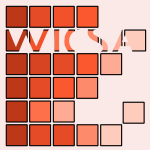 WICSA-2016-NicolaescuL #architecture #consistency #re-engineering
WICSA-2016-NicolaescuL #architecture #consistency #re-engineering- Behavior-Based Architecture Reconstruction and Conformance Checking (AN, HL), pp. 152–157.
 WICSA-2016-OquendoLB #architecture #specification
WICSA-2016-OquendoLB #architecture #specification- Specifying Architecture Behavior with SysADL (FO, JCL, TB), pp. 140–145.
 EDM-2016-CraigHXFH #identification #learning #persistent #predict
EDM-2016-CraigHXFH #identification #learning #persistent #predict- Identifying relevant user behavior and predicting learning and persistence in an ITS-based afterschool program (SDC, XH, JX, YF, XH), pp. 581–582.
 EDM-2016-GelmanRDVJ #comparison
EDM-2016-GelmanRDVJ #comparison- Acting the Same Differently: A Cross-Course Comparison of User Behavior in MOOCs (BUG, MR, CD, KV, AJ), pp. 376–381.
 EDM-2016-JoTFRG #learning #modelling #social
EDM-2016-JoTFRG #learning #modelling #social- Expediting Support for Social Learning with Behavior Modeling (YJ, GT, OF, CPR, DG), pp. 400–405.
 EDM-2016-LiuBLBBBM #analysis
EDM-2016-LiuBLBBBM #analysis- MOOC Learner Behaviors by Country and Culture; an Exploratory Analysis (ZL, RB, CL, TB, RSB, YB, DSM), pp. 127–134.
 EDM-2016-MalkiewichBSKP #education #game studies #problem
EDM-2016-MalkiewichBSKP #education #game studies #problem- Classifying behavior to elucidate elegant problem solving in an educational game (LM, RSB, VS, SK, LP), pp. 448–453.
 EDM-2016-McBroomJKY #mining #student
EDM-2016-McBroomJKY #mining #student- Mining behaviors of students in autograding submission system logs (JM, BJ, IK, KY), pp. 159–166.
 EDM-2016-MoriC #identification #online #performance #student
EDM-2016-MoriC #identification #online #performance #student- Identifying Student Behaviors Early in the Term for Improving Online Course Performance (MM, PC), pp. 611–612.
 EDM-2016-Nam #adaptation #learning #predict
EDM-2016-Nam #adaptation #learning #predict- Predicting Off-task Behaviors for Adaptive Vocabulary Learning System (SN), pp. 672–674.
 EDM-2016-RamanarayananK #collaboration #novel #problem
EDM-2016-RamanarayananK #collaboration #novel #problem- Novel features for capturing cooccurrence behavior in dyadic collaborative problem solving tasks (VR, SK), pp. 620–621.
 EDM-2016-TissenbaumBK #game studies #markov #modelling #visitor
EDM-2016-TissenbaumBK #game studies #markov #modelling #visitor- Modeling Visitor Behavior in a Game-Based Engineering Museum Exhibit with Hidden Markov Models (MT, MB, VK), pp. 517–522.
 EDM-2016-TomkinsRG #case study #performance #predict #student
EDM-2016-TomkinsRG #case study #performance #predict #student- Predicting Post-Test Performance from Student Behavior: A High School MOOC Case Study (ST, AR, LG), pp. 239–246.
 ICPC-2016-MakiharaIYFI #detection #programming
ICPC-2016-MakiharaIYFI #detection #programming- Detecting exploratory programming behaviors for introductory programming exercises (EM, HI, NY, KF, HI), pp. 1–4.
 MSR-2016-AveryDSG #mining
MSR-2016-AveryDSG #mining- Externalization of software behavior by the mining of norms (DA, HKD, BTRS, AKG), pp. 223–234.
 SANER-2016-LimaSLCMF #energy #functional #haskell
SANER-2016-LimaSLCMF #energy #functional #haskell- Haskell in Green Land: Analyzing the Energy Behavior of a Purely Functional Language (LGL, FSN, PL, FC, GM, JPF), pp. 517–528.
 SANER-2016-YuLQW #android
SANER-2016-YuLQW #android- Revisiting the Description-to-Behavior Fidelity in Android Applications (LY, XL, CQ, SW0), pp. 415–426.
 CIAA-2016-WeidemanMBW #ambiguity #automaton #backtracking #nondeterminism #regular expression #using
CIAA-2016-WeidemanMBW #ambiguity #automaton #backtracking #nondeterminism #regular expression #using- Analyzing Matching Time Behavior of Backtracking Regular Expression Matchers by Using Ambiguity of NFA (NW, BvdM, MB, BWW), pp. 322–334.
- IFM-2016-ChenAGSM #classification #on the #robust #verification
- On Robust Malware Classifiers by Verifying Unwanted Behaviours (WC, DA0, ADG, CAS, IM), pp. 326–341.
 AIIDE-2016-DebkowskiMYYYFK #collaboration #game studies #multi #named #online #using
AIIDE-2016-DebkowskiMYYYFK #collaboration #game studies #multi #named #online #using- Contained: Using Multiplayer Online Games to Quantify Success of Collaborative Group Behavior (DD, AM, NY, LY, YY, SF, MK), pp. 149–154.
 AIIDE-2016-DrakeSL
AIIDE-2016-DrakeSL - Demonstration-Based Training of Non-Player Character Tactical Behaviors (JD, AS, ML), pp. 30–36.
 CHI-PLAY-2016-RaptisFA #difference #game studies #performance #question
CHI-PLAY-2016-RaptisFA #difference #game studies #performance #question- Do Field Dependence-Independence Differences of Game Players Affect Performance and Behaviour in Cultural Heritage Games? (GER, CAF, NMA), pp. 38–43.
 CIG-2016-DrachenGGHLSK #analysis #clustering #comparative #profiling
CIG-2016-DrachenGGHLSK #analysis #clustering #comparative #profiling- Guns and guardians: Comparative cluster analysis and behavioral profiling in destiny (AD, JG, CG, EH, PL, RS, DK), pp. 1–8.
 CIG-2016-SorensenOR #evolution #interactive
CIG-2016-SorensenOR #evolution #interactive- Breeding a diversity of Super Mario behaviors through interactive evolution (PDS, JMO, SR), pp. 1–7.
 CIG-2016-SungurS #algorithm #learning
CIG-2016-SungurS #algorithm #learning- Voluntary behavior on cortical learning algorithm based agents (AKS, ES), pp. 1–7.
 DiGRA-FDG-2016-WellsSL #energy #feedback #game studies
DiGRA-FDG-2016-WellsSL #energy #feedback #game studies- Behaviour Change Wheel Driven Normative Feedback in a Serious Game for Energy Conservation (LW, KdS, IJL).
 CIKM-2016-GuoS #analysis #mobile #scalability #towards
CIKM-2016-GuoS #analysis #mobile #scalability #towards- Large-Scale Analysis of Viewing Behavior: Towards Measuring Satisfaction with Mobile Proactive Systems (QG, YS), pp. 579–588.
 CIKM-2016-HoLSKDWZS #algorithm #distributed #graph #scalability
CIKM-2016-HoLSKDWZS #algorithm #distributed #graph #scalability- A Distributed Graph Algorithm for Discovering Unique Behavioral Groups from Large-Scale Telco Data (QH, WL, ES, SK, TAD, JW, ICZ, ASN), pp. 1353–1362.
 CIKM-2016-MaxwellA #analysis #performance
CIKM-2016-MaxwellA #analysis #performance- Agents, Simulated Users and Humans: An Analysis of Performance and Behaviour (DM, LA), pp. 731–740.
 CIKM-2016-Niebler0ZDH #named #navigation #social
CIKM-2016-Niebler0ZDH #named #navigation #social- FolkTrails: Interpreting Navigation Behavior in a Social Tagging System (TN, MB0, DZ, SD, AH), pp. 2311–2316.
 CIKM-2016-Preotiuc-Pietro #twitter
CIKM-2016-Preotiuc-Pietro #twitter- Studying the Dark Triad of Personality through Twitter Behavior (DPP, JC, SG, LHU), pp. 761–770.
 CIKM-2016-QiuSCCK #crowdsourcing #named #predict
CIKM-2016-QiuSCCK #crowdsourcing #named #predict- CrowdSelect: Increasing Accuracy of Crowdsourcing Tasks through Behavior Prediction and User Selection (CQ, ACS, BC, JC, DRK), pp. 539–548.
 ECIR-2016-LamposAGZC #social #social media
ECIR-2016-LamposAGZC #social #social media- Inferring the Socioeconomic Status of Social Media Users Based on Behaviour and Language (VL, NA, JKG, BZ, IJC), pp. 689–695.
 ECIR-2016-Russell-RoseC #retrieval
ECIR-2016-Russell-RoseC #retrieval- Real-World Expertise Retrieval: The Information Seeking Behaviour of Recruitment Professionals (TRR, JC), pp. 669–674.
 ECIR-2016-ZhuangTD #evaluation #information retrieval #interactive
ECIR-2016-ZhuangTD #evaluation #information retrieval #interactive- The Relationship Between User Perception and User Behaviour in Interactive Information Retrieval Evaluation (MZ, EGT, GD), pp. 293–305.
 ICML-2016-AbelHL #abstraction #approximate
ICML-2016-AbelHL #abstraction #approximate- Near Optimal Behavior via Approximate State Abstraction (DA, DEH, MLL), pp. 2915–2923.
 ICPR-2016-KatsageorgiouZH #analysis #data-driven #interactive
ICPR-2016-KatsageorgiouZH #analysis #data-driven #interactive- Unsupervised mouse behavior analysis: A data-driven study of mice interactions (VMK, MZ, HH, VF0, FP, DS, VM), pp. 925–930.
 ICPR-2016-SuzuuchiK #analysis #multi
ICPR-2016-SuzuuchiK #analysis #multi- Location-associated indoor behavior analysis of multiple persons (SS, MK), pp. 2079–2084.
 ICPR-2016-TamboB #predict
ICPR-2016-TamboB #predict- Temporal dynamics of tip fluorescence predict cell growth behavior in pollen tubes (ALT, BB), pp. 1171–1176.
 ICPR-2016-YangA #online
ICPR-2016-YangA #online- Analyzing user behavior in online advertising with facial expressions (SY, LA), pp. 4238–4243.
 KDD-2016-JiangFH #multi #named #representation
KDD-2016-JiangFH #multi #named #representation- CatchTartan: Representing and Summarizing Dynamic Multicontextual Behaviors (MJ0, CF, JH0), pp. 945–954.
 KDD-2016-KhanB #modelling #predict
KDD-2016-KhanB #modelling #predict- Predictors without Borders: Behavioral Modeling of Product Adoption in Three Developing Countries (MRK, JEB), pp. 145–154.
 KDD-2016-Law #online #profiling #social
KDD-2016-Law #online #profiling #social- Profiling Users from Online Social Behaviors with Applications for Tencent Social Ads (CL), p. 409.
 KDD-2016-Lemmerich0SHHS #mining
KDD-2016-Lemmerich0SHHS #mining- Mining Subgroups with Exceptional Transition Behavior (FL, MB0, PS, DH, AH, MS), pp. 965–974.
 KDD-2016-LethamLR #transaction
KDD-2016-LethamLR #transaction- Bayesian Inference of Arrival Rate and Substitution Behavior from Sales Transaction Data with Stockouts (BL, LML, CR), pp. 1695–1704.
 KDD-2016-LoFL #case study #comprehension
KDD-2016-LoFL #case study #comprehension- Understanding Behaviors that Lead to Purchasing: A Case Study of Pinterest (CL, DF, JL), pp. 531–540.
 KDD-2016-LuoYLSYH #online
KDD-2016-LuoYLSYH #online- From Online Behaviors to Offline Retailing (PL0, SY, ZL, ZS, SY, QH), pp. 175–184.
 KDD-2016-TrouleauADE #modelling
KDD-2016-TrouleauADE #modelling- Just One More: Modeling Binge Watching Behavior (WT, AA, WD, BE), pp. 1215–1224.
 KDD-2016-XuZZLZCX #analysis #network #perspective #social
KDD-2016-XuZZLZCX #analysis #network #perspective #social- Taxi Driving Behavior Analysis in Latent Vehicle-to-Vehicle Networks: A Social Influence Perspective (TX, HZ, XZ, QL0, HZ, EC, HX), pp. 1285–1294.
 ASE-2016-Keng #automation #mobile #privacy #testing
ASE-2016-Keng #automation #mobile #privacy #testing- Automated testing and notification of mobile app privacy leak-cause behaviours (JCJK), pp. 880–883.
 FSE-2016-Alimadadi #comprehension #javascript
FSE-2016-Alimadadi #comprehension #javascript- Understanding behavioural patterns in JavaScript (SA), pp. 1076–1078.
 FSE-2016-MiucinBF #memory management #profiling
FSE-2016-MiucinBF #memory management #profiling- End-to-end memory behavior profiling with DINAMITE (SM, CB, AF), pp. 1042–1046.
- ICSE-2016-BusanyM #analysis #statistics
- Behavioral log analysis with statistical guarantees (NB, SM), pp. 877–887.
 ASPLOS-2016-NowatzkiS
ASPLOS-2016-NowatzkiS - Analyzing Behavior Specialized Acceleration (TN, KS), pp. 697–711.
 CASE-2016-JiLSWLSCJ #analysis #smarttech
CASE-2016-JiLSWLSCJ #analysis #smarttech- A human-centered smart home system with wearable-sensor behavior analysis (JJ, TL0, CS0, HW, WL, MS, SC, ZJ), pp. 1112–1117.
 CASE-2016-SussD #classification #component #performance #simulation
CASE-2016-SussD #classification #component #performance #simulation- Classification of mechatronic components for efficient plant behaviour simulation (SS, CD), pp. 1146–1151.
 CASE-2016-TsaiWPXLFZ #predict #process #smarttech #using
CASE-2016-TsaiWPXLFZ #predict #process #smarttech #using- Context-aware activity prediction using human behavior pattern in real smart home environments (MJT, CLW, SKP, YX, TYL, LCF, YCZ), pp. 168–173.
 ICST-2016-Kowalczyk #modelling #multi
ICST-2016-Kowalczyk #modelling #multi- Modeling App Behavior from Multiple Artifacts (EK), pp. 385–386.
 ICTSS-2016-SuzukiPKT #analysis #network #visualisation
ICTSS-2016-SuzukiPKT #analysis #network #visualisation- Distribution Visualization for User Behavior Analysis on LTE Network (MS, QP, TK, MT), pp. 249–255.
 CBSE-2015-MouelhiACM #component #contract #design #object-oriented #using
CBSE-2015-MouelhiACM #component #contract #design #object-oriented #using- Object-Oriented Component-Based Design using Behavioral Contracts: Application to Railway Systems (SM, KA, SC, HM), pp. 49–58.
 HT-2015-ApaolazaHJ #analysis #interactive #low level #web
HT-2015-ApaolazaHJ #analysis #interactive #low level #web- Longitudinal Analysis of Low-Level Web Interaction through Micro Behaviours (AA, SH, CJ), pp. 337–340.
 HT-2015-BurelMHA #community #online #predict
HT-2015-BurelMHA #community #online #predict- Predicting Answering Behaviour in Online Question Answering Communities (GB, PM, YH, HA), pp. 201–210.
 HT-2015-GadirajuSFK #categorisation #comprehension
HT-2015-GadirajuSFK #categorisation #comprehension- Breaking Bad: Understanding Behavior of Crowd Workers in Categorization Microtasks (UG, PS, BF, RK), pp. 33–38.
 EDM-2015-BazalduaKDHLW #collaboration #convergence #on the #process
EDM-2015-BazalduaKDHLW #collaboration #convergence #on the #process- On Convergence of Cognitive and Non-cognitive Behavior in Collaborative Activity (DLB, SMK, AAvD, JH, LL, ZW), pp. 496–499.
 EDM-2015-BorjiginMSZ #assessment #using
EDM-2015-BorjiginMSZ #assessment #using- Skill Assessment Using Behavior Data in Virtual World (AB, CM, ZS, ZZ), pp. 570–571.
 EDM-2015-BumbacherSWB #comprehension #concept #development #how #learning #physics
EDM-2015-BumbacherSWB #comprehension #concept #development #how #learning #physics- Learning Environments and Inquiry Behaviors in Science Inquiry Learning: How Their Interplay Affects the Development of Conceptual Understanding in Physics (EB, SS, MW, PB), pp. 61–68.
 EDM-2015-EagleBRBAE #game studies #problem
EDM-2015-EagleBRBAE #game studies #problem- Exploring Problem-Solving Behavior in an Optics Game (ME, RB, ER, TB, JAC, TE), pp. 584–585.
 EDM-2015-Fancsali #algebra #learning #modelling #using #visual notation
EDM-2015-Fancsali #algebra #learning #modelling #using #visual notation- Confounding Carelessness? Exploring Causal Relationships Between Carelessness, Affect, Behavior, and Learning in Cognitive Tutor Algebra Using Graphical Causal Models (SF), pp. 508–511.
 EDM-2015-JedrzejewskiBOZ #education #online
EDM-2015-JedrzejewskiBOZ #education #online- Teacher and Learner Behaviour in an Online EFL Workbook (KJ, MB, MO, JZ, KL), pp. 568–569.
 EDM-2015-PedroSBMH
EDM-2015-PedroSBMH - Exploring Dynamical Assessments of Affect, Behavior, and Cognition and Math State Test Achievement (MOSP, ELS, RSB, DSM, NTH), pp. 85–92.
 EDM-2015-WangYWKR #how #learning #student
EDM-2015-WangYWKR #how #learning #student- Investigating How Student's Cognitive Behavior in MOOC Discussion Forum Affect Learning Gains (XW0, DY, MW, KRK, CPR), pp. 226–233.
 EDM-2015-YeKSB #learning #multi #process #sequence
EDM-2015-YeKSB #learning #multi #process #sequence- Learning Behavior Characterization with Multi-Feature, Hierarchical Activity Sequences (CY, JSK, JRS, GB), pp. 380–383.
 ICSME-2015-BiegelLD #java
ICSME-2015-BiegelLD #java- Live object exploration: Observing and manipulating behavior and state of Java objects (BB, BL, SD), pp. 581–585.
 ICSME-2015-LuciaDGR #automation #design pattern #detection #dynamic analysis #towards
ICSME-2015-LuciaDGR #automation #design pattern #detection #dynamic analysis #towards- Towards automating dynamic analysis for behavioral design pattern detection (ADL, VD, CG, MR), pp. 161–170.
 ICSME-2015-LuciaDGRP #design pattern #detection #named
ICSME-2015-LuciaDGRP #design pattern #detection #named- ePadEvo: A tool for the detection of behavioral design patterns (ADL, VD, CG, MR, CP), pp. 327–329.
 MSR-2015-AhmedSH #development #empirical
MSR-2015-AhmedSH #development #empirical- An Empirical Study of the Copy and Paste Behavior during Development (TMA, WS, AEH), pp. 99–110.
 MSR-2015-Marder #approach #stack overflow
MSR-2015-Marder #approach #stack overflow- Stack Overflow Badges and User Behavior: An Econometric Approach (AM), pp. 450–453.
 FM-2015-Hauck-Stattelmann #industrial
FM-2015-Hauck-Stattelmann #industrial- Analyzing the Restart Behavior of Industrial Control Applications (SHS, SB, BS, SK, RJ), pp. 585–588.
 FM-2015-Nakajima #energy #maude #realtime #using
FM-2015-Nakajima #energy #maude #realtime #using- Using Real-Time Maude to Model Check Energy Consumption Behavior (SN), pp. 378–394.
 HOFM-2015-BlechH #component #cyber-physical #development
HOFM-2015-BlechH #component #cyber-physical #development- Behavioral Types for Component-Based Development of Cyber-Physical Systems (JOB, PH), pp. 43–52.
 SEFM-2015-BlomHZ #concurrent #functional #source code #verification
SEFM-2015-BlomHZ #concurrent #functional #source code #verification- History-Based Verification of Functional Behaviour of Concurrent Programs (SB, MH, MZS), pp. 84–98.
 AIIDE-2015-BarrigaSB #game studies #realtime
AIIDE-2015-BarrigaSB #game studies #realtime- Puppet Search: Enhancing Scripted Behavior by Look-Ahead Search with Applications to Real-Time Strategy Games (NAB, MS, MB), pp. 9–15.
 AIIDE-2015-LimH #approach #data-driven #modelling
AIIDE-2015-LimH #approach #data-driven #modelling- A Data-Driven Approach for Computationally Modeling Players' Avatar Customization Behaviors (CUL, DFH), pp. 135–141.
 AIIDE-2015-ManavalanBS #algorithm #generative #lightweight
AIIDE-2015-ManavalanBS #algorithm #generative #lightweight- A Lightweight Algorithm for Procedural Generation of Emotionally Affected Behavior and Appearance (YBM, VB, MS), pp. 142–148.
 AIIDE-2015-SchwabH #automation #generative #modelling #towards
AIIDE-2015-SchwabH #automation #generative #modelling #towards- Capturing the Essence: Towards the Automated Generation of Transparent Behavior Models (PS, HH), pp. 184–190.
 AIIDE-2015-SifaDB #analysis #scalability
AIIDE-2015-SifaDB #analysis #scalability- Large-Scale Cross-Game Player Behavior Analysis on Steam (RS, AD, CB), pp. 198–204.
 CHI-PLAY-2015-BaskinZ #analysis #exclamation #interactive #tablet #towards
CHI-PLAY-2015-BaskinZ #analysis #exclamation #interactive #tablet #towards- The Player is Chewing the Tablet!: Towards a Systematic Analysis of User Behavior in Animal-Computer Interaction (SB, AZ), pp. 463–468.
 CHI-PLAY-2015-SteinemannMO #game studies
CHI-PLAY-2015-SteinemannMO #game studies- Increasing Donating Behavior Through a Game for Change: The Role of Interactivity and Appreciation (STS, EDM, KO), pp. 319–329.
 CHI-PLAY-2015-Wallner #analysis
CHI-PLAY-2015-Wallner #analysis- Sequential Analysis of Player Behavior (GW), pp. 349–358.
 CIG-2015-FarooqBK #game studies #mobile
CIG-2015-FarooqBK #game studies #mobile- Interpreting behaviors of mobile game players from in-game data and context logs (SSF, JWB, KJK), pp. 548–549.
 CIG-2015-KampmannSHBB #automation #parametricity #simulation
CIG-2015-KampmannSHBB #automation #parametricity #simulation- Automatic mapping of human behavior data to personality model parameters for traffic simulations in virtual environments (SK, SS, RH, PB0, CB), pp. 336–343.
 CIG-2015-KarpovJM #machine learning
CIG-2015-KarpovJM #machine learning- Evaluating team behaviors constructed with human-guided machine learning (IVK, LMJ, RM), pp. 292–298.
 CIG-2015-LimH #comprehension
CIG-2015-LimH #comprehension- Understanding players' identities and behavioral archetypes from avatar customization data (CUL, DFH), pp. 238–245.
 DiGRA-2015-KaufmanFS #design #embedded #game studies
DiGRA-2015-KaufmanFS #design #embedded #game studies- Creating Stealth Game Interventions for Attitude and Behavior Change: An “Embedded Design” Model (GFK, MF, MS).
 FDG-2015-CanossaBETC
FDG-2015-CanossaBETC - In Your Face(t) Impact of Personality and Context on Gameplay Behavior (AC, JBB, MSEN, ST, RCC).
 FDG-2015-LevySMWLG #difference #game studies #word
FDG-2015-LevySMWLG #difference #game studies #word- Actions Speak Louder Than Words: An exploration of game play behavior and results from traditional assessments of individual differences (LML, RS, JM, JW, RL, MG).
 FDG-2015-MuellerKFKMSSG #analysis #statistics
FDG-2015-MuellerKFKMSSG #analysis #statistics- Statistical Analysis of Player Behavior in Minecraft (SM0, MK, SF, SK, RPM, BS, RWS, MHG).
 FDG-2015-PackardO #learning #metric #similarity
FDG-2015-PackardO #learning #metric #similarity- Learning Behavior form Demonstration in Minecraft via Symbolic Similarity Measures (BP, SO).
 FDG-2015-SubramanianHESS #game studies #health #metric #persuasion
FDG-2015-SubramanianHESS #game studies #health #metric #persuasion- Investigating behavior change indicators and cognitive measures in persuasive health games (SS, SH, MSEN, MS, CS).
 CHI-2015-AhmedHCCK #people #privacy #visual notation
CHI-2015-AhmedHCCK #people #privacy #visual notation- Privacy Concerns and Behaviors of People with Visual Impairments (TA, RH, KC, DJC, AK), pp. 3523–3532.
 CHI-2015-ChangLKS #comprehension #gesture #mobile #scalability
CHI-2015-ChangLKS #comprehension #gesture #mobile #scalability- Understanding Users’ Touch Behavior on Large Mobile Touch-Screens and Assisted Targeting by Tilting Gesture (YC, SL, KK, JS), pp. 1499–1508.
 CHI-2015-ChenBBOH #interactive
CHI-2015-ChenBBOH #interactive- The Emergence of Interactive Behavior: A Model of Rational Menu Search (XC, GB, DPB, AO, AH), pp. 4217–4226.
 CHI-2015-DamianTBSLA #feedback #interactive #realtime #social #using
CHI-2015-DamianTBSLA #feedback #interactive #realtime #social #using- Augmenting Social Interactions: Realtime Behavioural Feedback using Social Signal Processing Techniques (ID, CSST, TB, JS, KL, EA), pp. 565–574.
 CHI-2015-EgelmanP #scalability #security
CHI-2015-EgelmanP #scalability #security- Scaling the Security Wall: Developing a Security Behavior Intentions Scale (SeBIS) (SE, EP), pp. 2873–2882.
 CHI-2015-GadirajuKDD #comprehension #crowdsourcing #online #platform
CHI-2015-GadirajuKDD #comprehension #crowdsourcing #online #platform- Understanding Malicious Behavior in Crowdsourcing Platforms: The Case of Online Surveys (UG, RK, SD, GD), pp. 1631–1640.
 CHI-2015-GunaratneN #performance #user interface #using
CHI-2015-GunaratneN #performance #user interface #using- Informing and Improving Retirement Saving Performance using Behavioral Economics Theory-driven User Interfaces (JG, ON), pp. 917–920.
 CHI-2015-HollisKW
CHI-2015-HollisKW - Change of Heart: Emotion Tracking to Promote Behavior Change (VH, AK, SW), pp. 2643–2652.
 CHI-2015-JungSGS #experience #nondeterminism
CHI-2015-JungSGS #experience #nondeterminism- Displayed Uncertainty Improves Driving Experience and Behavior: The Case of Range Anxiety in an Electric Car (MFJ, DS, TMG, MS), pp. 2201–2210.
 CHI-2015-KwakBH #contest #game studies #online
CHI-2015-KwakBH #contest #game studies #online- Exploring Cyberbullying and Other Toxic Behavior in Team Competition Online Games (HK, JB, SH), pp. 3739–3748.
 CHI-2015-LaseckiGLLBD #crowdsourcing #privacy #trade-off #video
CHI-2015-LaseckiGLLBD #crowdsourcing #privacy #trade-off #video- Exploring Privacy and Accuracy Trade-Offs in Crowdsourced Behavioral Video Coding (WSL, MG, WL, EL, JPB, SPD), pp. 1945–1954.
 CHI-2015-ParkOSJC #image #scalability #web
CHI-2015-ParkOSJC #image #scalability #web- A Large-Scale Study of User Image Search Behavior on the Web (JYP, NO, RS, AJ, CWC), pp. 985–994.
 CHI-2015-RedaJPL #visual notation
CHI-2015-RedaJPL #visual notation- Effects of Display Size and Resolution on User Behavior and Insight Acquisition in Visual Exploration (KR, AEJ, MEP, JL), pp. 2759–2768.
 CHI-2015-ShayBCCFKMMSU #feedback
CHI-2015-ShayBCCFKMMSU #feedback- A Spoonful of Sugar?: The Impact of Guidance and Feedback on Password-Creation Behavior (RS, LB, NC, LFC, AF, SK, MLM, WM, SMS, BU), pp. 2903–2912.
 CHI-2015-YanHC
CHI-2015-YanHC - Masters of Control: Behavioral Patterns of Simultaneous Unit Group Manipulation in StarCraft 2 (EQY, JH, GKC), pp. 3711–3720.
 CSCW-2015-Erete #communication #how #online
CSCW-2015-Erete #communication #how #online- Engaging Around Neighborhood Issues: How Online Communication Affects Offline Behavior (SLE), pp. 1590–1601.
 CSCW-2015-JiaWXRC #learning #online #privacy #process
CSCW-2015-JiaWXRC #learning #online #privacy #process- Risk-taking as a Learning Process for Shaping Teen’s Online Information Privacy Behaviors (HJ, PJW, HX, MBR, JMC), pp. 583–599.
 CSCW-2015-LeeL #comprehension #health #multi #social
CSCW-2015-LeeL #comprehension #health #multi #social- Understanding the Roles and Influences of Mediators from Multiple Social Channels for Health Behavior Change (YL, YKL), pp. 1070–1079.
 CSCW-2015-MaddockSASOM #multi #online #using
CSCW-2015-MaddockSASOM #multi #online #using- Characterizing Online Rumoring Behavior Using Multi-Dimensional Signatures (JM, KS, HJAH, DES, MO, RMM), pp. 228–241.
 CSCW-2015-MarlowD #process #visualisation
CSCW-2015-MarlowD #process #visualisation- The Effects of Visualizing Activity History on Attitudes and Behaviors in a Peer Production Context (JM, LAD), pp. 757–764.
 CSCW-2015-SleeperACKMS #network #social
CSCW-2015-SleeperACKMS #network #social- I Would Like To..., I Shouldn’t..., I Wish I...: Exploring Behavior-Change Goals for Social Networking Sites (MS, AA, LFC, PGK, SAM, NMS), pp. 1058–1069.
 CSCW-2015-WisniewskiJXRC #how #privacy #quote #social #social media
CSCW-2015-WisniewskiJXRC #how #privacy #quote #social #social media- “Preventative” vs. “Reactive”: How Parental Mediation Influences Teens’ Social Media Privacy Behaviors (PJW, HJ, HX, MBR, JMC), pp. 302–316.
 CSCW-2015-ZhengRSC #comprehension #motivation #student
CSCW-2015-ZhengRSC #comprehension #motivation #student- Understanding Student Motivation, Behaviors and Perceptions in MOOCs (SZ, MBR, PCS, JMC), pp. 1882–1895.
 CSCW-2015-ZouMP
CSCW-2015-ZouMP - Strategic Voting Behavior in Doodle Polls (JYZ, RM, DCP), pp. 464–472.
 DHM-EH-2015-LiaoYGOH #gesture
DHM-EH-2015-LiaoYGOH #gesture- Effect of Care Gesture on Transfer Care Behavior in Elderly Nursing Home in Japan (ML, TY, AG, TO, HH), pp. 174–183.
 DHM-EH-2015-ZhengBISEL #monitoring #using
DHM-EH-2015-ZhengBISEL #monitoring #using- Driving-Behavior Monitoring Using an Unmanned Aircraft System (UAS) (CZ, AB, WI, IS, EE, KL), pp. 305–312.
 DHM-HM-2015-ShodaYSS #analysis #how #people
DHM-HM-2015-ShodaYSS #analysis #how #people- Exploring How People Collaborate with a Stranger: — Analyses of Verbal and Nonverbal Behaviors in Abstract Art Reproduction (HS, TY, NS, MS), pp. 379–388.
 DUXU-DD-2015-ChenXNWZS #research #semantics
DUXU-DD-2015-ChenXNWZS #research #semantics- Semantic Research of Military Icons Based on Behavioral Experiments and Eye-Tracking Experiments (XJC, CX, YN, HW, JZ, JS), pp. 24–31.
 DUXU-DD-2015-FloraB #energy #reduction
DUXU-DD-2015-FloraB #energy #reduction- Motivators of Energy Reduction Behavioral Intentions: Influences of Technology, Personality Characteristics, Perceptions, and Behavior Barriers (JAF, BB), pp. 436–446.
 DUXU-DD-2015-Marcus #mobile #persuasion
DUXU-DD-2015-Marcus #mobile #persuasion- The Marriage Machine: Mobile Persuasion/Behavior Change (AM), pp. 513–523.
 DUXU-DD-2015-OliveiraMMM #analysis #design
DUXU-DD-2015-OliveiraMMM #analysis #design- Scenario Analysis as a Tool for Informing the Design of Behaviour Change Interventions (LCRdO, MCM, VM, AJM), pp. 535–547.
 DUXU-IXD-2015-GoncalvesQ #automation #case study #interactive
DUXU-IXD-2015-GoncalvesQ #automation #case study #interactive- Drivers and Automation: A Study About Cultural and Behavioral Influence in the Interaction with Driver Assistants (RCG, MQ), pp. 462–472.
 DUXU-IXD-2015-GuYWD #design #interactive #network #social #visualisation
DUXU-IXD-2015-GuYWD #design #interactive #network #social #visualisation- Visualizing Group User Behaviors for Social Network Interaction Design Iteration (ZG, JMY, ZW, ZD), pp. 36–45.
 DUXU-UI-2015-MarczalJ #analysis #mobile
DUXU-UI-2015-MarczalJ #analysis #mobile- Behavioural Variables Analysis in Mobile Environments (DM, PTAJ), pp. 118–130.
 HCI-DE-2015-Semnani-AzadN #automation
HCI-DE-2015-Semnani-AzadN #automation- Automatic Interpretation of Negotiators’ Affect and Involvement Based on Their Non-verbal Behavior (ZSA, EN), pp. 520–529.
 HCI-IT-2015-TakedaBSO #coordination #named
HCI-IT-2015-TakedaBSO #coordination #named- COLUMN: Discovering the User Invented Behaviors Through the Interpersonal Coordination (YT, SB, PRSDS, MO), pp. 787–796.
 HIMI-IKC-2015-KosakaN #education
HIMI-IKC-2015-KosakaN #education- Education Method for Safe Bicycle Riding to Evaluate Actual Cycling Behaviors When Entering an Intersection (HK, MN), pp. 225–232.
 HIMI-IKC-2015-ZhouI #adaptation
HIMI-IKC-2015-ZhouI #adaptation- Effect of Adaptive Caution on Driver’s Lane-Change Behavior under Cognitively Distracted Condition (HZ, MI), pp. 262–271.
 HIMI-IKD-2015-FujinawaSINHTH #induction
HIMI-IKD-2015-FujinawaSINHTH #induction- Induction of Human Behavior by Presentation of Environmental Acoustics (EF, SS, MI, TN, OH, TT, MH), pp. 582–594.
 HIMI-IKD-2015-IchiharaHIK #metric
HIMI-IKD-2015-IchiharaHIK #metric- Presentation Method of Walking Sensation Based on Walking Behavior Measurement with Inertial Sensors and Pressure Sensors (KI, KH, YI, MK), pp. 374–385.
 HIMI-IKD-2015-SuzukiNSTH #artificial reality #using
HIMI-IKD-2015-SuzukiNSTH #artificial reality #using- Changing Drinking Behavior and Beverage Consumption Using Augmented Reality (ES, TN, SS, TT, MH), pp. 648–660.
 ICEIS-v1-2015-FolinoGP #modelling #on the #process
ICEIS-v1-2015-FolinoGP #modelling #on the #process- On the Discovery of Explainable and Accurate Behavioral Models for Complex Lowly-structured Business Processes (FF, MG, LP), pp. 206–217.
 CIKM-2015-CaoCLGC
CIKM-2015-CaoCLGC - Organic or Organized?: Exploring URL Sharing Behavior (CC, JC, KL, HG, JWC), pp. 513–522.
 CIKM-2015-JiangLSW #clustering #matrix #predict #twitter
CIKM-2015-JiangLSW #clustering #matrix #predict #twitter- Message Clustering based Matrix Factorization Model for Retweeting Behavior Prediction (BJ, JL, YS, LW), pp. 1843–1846.
 CIKM-2015-KiselevaKNM #how #question #what
CIKM-2015-KiselevaKNM #how #question #what- Behavioral Dynamics from the SERP's Perspective: What are Failed SERPs and How to Fix Them? (JK, JK, VN, NM), pp. 1561–1570.
 CIKM-2015-PreumSQ #adaptation #multi #named #personalisation #predict
CIKM-2015-PreumSQ #adaptation #multi #named #personalisation #predict- MAPer: A Multi-scale Adaptive Personalized Model for Temporal Human Behavior Prediction (SMP, JAS, YQ), pp. 433–442.
 CIKM-2015-ShenSYLLYC #internet #online
CIKM-2015-ShenSYLLYC #internet #online- Forming Online Support Groups for Internet and Behavior Related Addictions (CYS, HHS, DNY, YFL, WCL, PSY, MSC), pp. 163–172.
 CIKM-2015-WangZZLL #dependence #infinity #modelling #social #topic
CIKM-2015-WangZZLL #dependence #infinity #modelling #social #topic- Modeling Infinite Topics on Social Behavior Data with Spatio-temporal Dependence (PW0, PZ0, CZ0, ZL, GL), pp. 1919–1922.
 CIKM-2015-YinZSWS #modelling #recommendation
CIKM-2015-YinZSWS #modelling #recommendation- Joint Modeling of User Check-in Behaviors for Point-of-Interest Recommendation (HY, XZ0, YS, HW0, SWS), pp. 1631–1640.
 ECIR-2015-CaoC #analysis #detection #social #social media
ECIR-2015-CaoC #analysis #detection #social #social media- Detecting Spam URLs in Social Media via Behavioral Analysis (CC, JC), pp. 703–714.
 ECIR-2015-RavariMGCR #mobile
ECIR-2015-RavariMGCR #mobile- User Behavior in Location Search on Mobile Devices (YNR, IM, AG, MC, MdR), pp. 728–733.
 KDD-2015-BeutelAF #detection #graph #modelling #predict
KDD-2015-BeutelAF #detection #graph #modelling #predict- Graph-Based User Behavior Modeling: From Prediction to Fraud Detection (AB, LA, CF), pp. 2309–2310.
 RecSys-2015-Geuens #hybrid #recommendation
RecSys-2015-Geuens #hybrid #recommendation- Factorization Machines for Hybrid Recommendation Systems Based on Behavioral, Product, and Customer Data (SG), pp. 379–382.
 SEKE-2015-LacherWFPNM #empirical #metric
SEKE-2015-LacherWFPNM #empirical #metric- A Behavior Marker tool for measurement of the Non-Technical Skills of Software Professionals: An Empirical Investigation (LLL, GSW, FF, MP, KEN, JM), pp. 409–414.
 SIGIR-2015-Barreda-Angeles #latency
SIGIR-2015-Barreda-Angeles #latency- Unconscious Physiological Effects of Search Latency on Users and Their Click Behaviour (MBÁ, IA, XB, BBC, APB), pp. 203–212.
 SIGIR-2015-ClarkeSY #effectiveness #evaluation #information retrieval #modelling
SIGIR-2015-ClarkeSY #effectiveness #evaluation #information retrieval #modelling- IR Evaluation: Modeling User Behavior for Measuring Effectiveness (CLAC, MDS, EY), pp. 1117–1120.
 SIGIR-2015-KellyA #case study #experience #how #user interface
SIGIR-2015-KellyA #case study #experience #how #user interface- How many results per page?: A Study of SERP Size, Search Behavior and User Experience (DK, LA), pp. 183–192.
 SIGIR-2015-Kiseleva #information management #using
SIGIR-2015-Kiseleva #information management #using- Using Contextual Information to Understand Searching and Browsing Behavior (JK), p. 1059.
 SIGIR-2015-LiDDCZB #markov #process #query
SIGIR-2015-LiDDCZB #markov #process #query- Analyzing User’s Sequential Behavior in Query Auto-Completion via Markov Processes (LL, HD, AD, YC, HZ, RABY), pp. 123–132.
 SIGIR-2015-LiKF #matrix #predict
SIGIR-2015-LiKF #matrix #predict- Predicting User Behavior in Display Advertising via Dynamic Collective Matrix Factorization (SL, JK, YF), pp. 875–878.
 SIGIR-2015-WangLWZNM #modelling
SIGIR-2015-WangLWZNM #modelling- Incorporating Non-sequential Behavior into Click Models (CW, YL, MW, KZ, JYN, SM), pp. 283–292.
 AMT-2015-DyckGLSG #automation #model transformation #towards #verification
AMT-2015-DyckGLSG #automation #model transformation #towards #verification- Towards the Automatic Verification of Behavior Preservation at the Transformation Level for Operational Model Transformations (JD, HG, LL, SS, SG), pp. 36–45.
 MoDELS-2015-LarsenDCM #coordination
MoDELS-2015-LarsenDCM #coordination- A Behavioral Coordination Operator Language (BCOoL) (MEVL, JD, BC, FM), pp. 186–195.
 MoDELS-2015-PrzigodaHWPD #concurrent #modelling #ocl #uml
MoDELS-2015-PrzigodaHWPD #concurrent #modelling #ocl #uml- Checking concurrent behavior in UML/OCL models (NP, CH, RW, JP, RD), pp. 176–185.
 SPLC-2015-RumpeSWRM #evolution #maintenance #modelling #product line
SPLC-2015-RumpeSWRM #evolution #maintenance #modelling #product line- Behavioral compatibility of simulink models for product line maintenance and evolution (BR, CS, MvW, JOR, PM), pp. 141–150.
 ASE-2015-LemieuxB #ltl #mining #specification #using
ASE-2015-LemieuxB #ltl #mining #specification #using- Investigating Program Behavior Using the Texada LTL Specifications Miner (CL, IB), pp. 870–875.
 ASE-2015-WangD #architecture #message passing #using
ASE-2015-WangD #architecture #message passing #using- A Message-Passing Architecture without Public Ids Using Send-to-Behavior (ESSW, ZD), pp. 902–905.
 ESEC-FSE-2015-BusanyM #analysis #statistics
ESEC-FSE-2015-BusanyM #analysis #statistics- Behavioral log analysis with statistical guarantees (NB, SM), pp. 898–901.
 ICSE-v1-2015-YangXALXE #mobile #named #using
ICSE-v1-2015-YangXALXE #mobile #named #using- AppContext: Differentiating Malicious and Benign Mobile App Behaviors Using Context (WY, XX, BA, SL, TX, WE), pp. 303–313.
 ICSE-v2-2015-BaoLXWZ #developer #interactive #modelling #named #using #video
ICSE-v2-2015-BaoLXWZ #developer #interactive #modelling #named #using #video- scvRipper: Video Scraping Tool for Modeling Developers’ Behavior Using Interaction Data (LB, JL, ZX, XW, BZ), pp. 673–676.
 ICSE-v2-2015-RajanNL0 #repository #scalability #specification
ICSE-v2-2015-RajanNL0 #repository #scalability #specification- Inferring Behavioral Specifications from Large-scale Repositories by Leveraging Collective Intelligence (HR, TNN, GTL, RD), pp. 579–582.
 ICSE-v2-2015-Salgado #cpu #gpu #interactive #kernel #profiling
ICSE-v2-2015-Salgado #cpu #gpu #interactive #kernel #profiling- Profiling Kernels Behavior to Improve CPU / GPU Interactions (RS), pp. 754–756.
 SAC-2015-0001RMW #approach #constraints #process
SAC-2015-0001RMW #approach #constraints #process- Matching of events and activities: an approach based on behavioral constraint satisfaction (TB, ARS, JM, MW), pp. 1225–1230.
 SAC-2015-DuarteBGCT #generative #towards
SAC-2015-DuarteBGCT #generative #towards- Towards context-aware behaviour generation (PAdSD, FMB, FAdAG, WVdC, FAMT), pp. 596–598.
 SAC-2015-FonooniH #on the #visual notation
SAC-2015-FonooniH #on the #visual notation- On the similarities between control based and behavior based visual servoing (BF, TH), pp. 320–326.
 SAC-2015-JoshiSIY #architecture #design #embedded #functional #modelling
SAC-2015-JoshiSIY #architecture #design #embedded #functional #modelling- Mapping functional behavior onto architectural model in a model driven embedded system design (PJ, SKS, JPT, HY), pp. 1624–1630.
 SAC-2015-PaivaBSIJ #learning #recommendation #student
SAC-2015-PaivaBSIJ #learning #recommendation #student- Improving pedagogical recommendations by classifying students according to their interactional behavior in a gamified learning environment (ROAP, IIB, APdS, SI, PAJ), pp. 233–238.
 SAC-2015-RajtmajerGMS #game studies #network #online #social
SAC-2015-RajtmajerGMS #game studies #network #online #social- An evolutionary game model for the spread of non-cooperative behavior in online social networks (SMR, CG, DM, ACS), pp. 1154–1159.
 SAC-2015-RodriguesBM #approach #clustering #correlation #energy #using
SAC-2015-RodriguesBM #approach #clustering #correlation #energy #using- Using fractal clustering to explore behavioral correlation: a new approach to reduce energy consumption in WSN (FR, AB, JEBM), pp. 589–591.
 SAC-2015-TambeN #game studies #modelling #resource management #robust #security
SAC-2015-TambeN #game studies #modelling #resource management #robust #security- Robust resource allocation in security games and ensemble modeling of adversary behavior (AT, TN), pp. 277–282.
 SAC-2015-VilelaCPSCL #modelling
SAC-2015-VilelaCPSCL #modelling- Deriving the behavior of context-sensitive systems from contextual goal models (JV, JBdC, JP, MS, PC, ML), pp. 1397–1400.
 GPCE-2015-RingertRW #code generation
GPCE-2015-RingertRW #code generation- Composing code generators for C&C ADLs with Application-specific behavior languages (JOR, BR, AW), pp. 113–116.
 ASPLOS-2015-AlglaveBDGKPSW #concurrent #gpu #programming
ASPLOS-2015-AlglaveBDGKPSW #concurrent #gpu #programming- GPU Concurrency: Weak Behaviours and Programming Assumptions (JA, MB, AFD, GG, JK, DP, TS, JW), pp. 577–591.
 CASE-2015-CarmenateRLBM #analysis #approach #energy #modelling #using
CASE-2015-CarmenateRLBM #analysis #approach #energy #modelling #using- Modeling and analyzing occupant behaviors in building energy analysis using an information space approach (TC, MMR, DL, LB, AM), pp. 425–431.
 CASE-2015-NohAH #assessment
CASE-2015-NohAH #assessment- Situation assessment and behavior decision for vehicle/driver cooperative driving in highway environments (SN, KA, WH), pp. 626–633.
 CASE-2015-ParisACAR #learning #markov #smarttech #using
CASE-2015-ParisACAR #learning #markov #smarttech #using- Using Hidden Semi-Markov Model for learning behavior in smarthomes (AP, SA, NC, AEA, NR), pp. 752–757.
 DAC-2015-HuangCZL #named #realtime #scheduling
DAC-2015-HuangCZL #named #realtime #scheduling- PASS: priority assignment of real-time tasks with dynamic suspending behavior under fixed-priority scheduling (WHH, JJC, HZ, CL), p. 6.
 DAC-2015-McLaughlin #policy
DAC-2015-McLaughlin #policy- Blocking unsafe behaviors in control systems through static and dynamic policy enforcement (SM), p. 6.
 DAC-2015-YoonSMC #detection #embedded #heatmap #memory management #realtime #using
DAC-2015-YoonSMC #detection #embedded #heatmap #memory management #realtime #using- Memory heat map: anomaly detection in real-time embedded systems using memory behavior (MKY, LS, SM, JC), p. 6.
 DATE-2015-DaneseGP #automation #execution #modelling
DATE-2015-DaneseGP #automation #execution #modelling- Automatic extraction of assertions from execution traces of behavioural models (AD, TG, GP), pp. 67–72.
 DATE-2015-DuqueDY #adaptation #fault #reliability #runtime
DATE-2015-DuqueDY #adaptation #fault #reliability #runtime- Improving MPSoC reliability through adapting runtime task schedule based on time-correlated fault behavior (LARD, JMMD, CY), pp. 818–823.
 HPCA-2015-AroraMPJT #benchmark #comprehension #cpu #gpu #metric #power management
HPCA-2015-AroraMPJT #benchmark #comprehension #cpu #gpu #metric #power management- Understanding idle behavior and power gating mechanisms in the context of modern benchmarks on CPU-GPU Integrated systems (MA, SM, IP, NJ, DMT), pp. 366–377.
 HPDC-2015-LuuWGRCHPBY #multi #platform
HPDC-2015-LuuWGRCHPBY #multi #platform- A Multiplatform Study of I/O Behavior on Petascale Supercomputers (HL, MW, WG, RBR, PHC, KH, P, SB, YY), pp. 33–44.
 HPDC-2015-YangC #benchmark #comprehension #graph #metric #robust
HPDC-2015-YangC #benchmark #comprehension #graph #metric #robust- Understanding Graph Computation Behavior to Enable Robust Benchmarking (FY, AAC), pp. 173–178.
 ISMM-2015-LinWBHN #comprehension
ISMM-2015-LinWBHN #comprehension- Stop and go: understanding yieldpoint behavior (YL, KW, SMB, ALH, MN), pp. 70–80.
 ESOP-2015-Penninckx0P #composition #source code #verification
ESOP-2015-Penninckx0P #composition #source code #verification- Sound, Modular and Compositional Verification of the Input/Output Behavior of Programs (WP, BJ, FP), pp. 158–182.
 CSL-2015-SalvatiW #higher-order #source code
CSL-2015-SalvatiW #higher-order #source code- A Model for Behavioural Properties of Higher-order Programs (SS, IW), pp. 229–243.
 ICST-2015-AliY #cyber-physical #evolution #modelling #named #nondeterminism #testing
ICST-2015-AliY #cyber-physical #evolution #modelling #named #nondeterminism #testing- U-Test: Evolving, Modelling and Testing Realistic Uncertain Behaviours of Cyber-Physical Systems (SA, TY), pp. 1–2.
 ICTSS-2015-LahamiKBJ #adaptation #approach #generative #testing
ICTSS-2015-LahamiKBJ #adaptation #approach #generative #testing- Selective Test Generation Approach for Testing Dynamic Behavioral Adaptations (ML, MK, HB, MJ), pp. 224–239.
 ISSTA-2015-XueWLXSC #classification #detection #javascript #modelling
ISSTA-2015-XueWLXSC #classification #detection #javascript #modelling- Detection and classification of malicious JavaScript via attack behavior modelling (YX, JW, YL, HX, JS, MC), pp. 48–59.
 LICS-2015-BrazdilKKN #probability
LICS-2015-BrazdilKKN #probability- Long-Run Average Behaviour of Probabilistic Vector Addition Systems (TB, SK, AK, PN), pp. 44–55.
 TAP-2015-AichernigNT #generative #incremental #modelling #scalability #testing
TAP-2015-AichernigNT #generative #incremental #modelling #scalability #testing- Scalable Incremental Test-case Generation from Large Behavior Models (BKA, DN, ST), pp. 1–18.
 HT-2014-KumarHL #approach #identification #twitter
HT-2014-KumarHL #approach #identification #twitter- A behavior analytics approach to identifying tweets from crisis regions (SK, XH, HL), pp. 255–260.
 HT-2014-LehmannMLLK #wiki
HT-2014-LehmannMLLK #wiki- Reader preferences and behavior on Wikipedia (JL, CMB, DL, ML, AK), pp. 88–97.
 JCDL-2014-DibieMS #approach #comprehension #education #online #predict #using
JCDL-2014-DibieMS #approach #comprehension #education #online #predict #using- A computational approach to understanding and predicting the behavior of educators using an online curriculum planning tool (OD, KEM, TS), pp. 487–488.
 JCDL-2014-HinzeAVTA #design #library #physics #social
JCDL-2014-HinzeAVTA #design #library #physics #social- Social information behaviour in physical libraries: Implications for the design of digital libraries (AH, HA, NV, CT, SA), pp. 107–116.
 JCDL-2014-TakanoSIHT #analysis #classification #documentation #towards
JCDL-2014-TakanoSIHT #analysis #classification #documentation #towards- Microscopic analysis of document handling while reading: Classification of behavior toward paper document (KT, HS, JI, TH, ST), pp. 445–446.
 SIGMOD-2014-LiuWZZK #modelling #named #scalability #social
SIGMOD-2014-LiuWZZK #modelling #named #scalability #social- HYDRA: large-scale social identity linkage via heterogeneous behavior modeling (SL, SW, FZ, JZ, RK), pp. 51–62.
 SIGMOD-2014-YinCCHH #modelling #social #social media
SIGMOD-2014-YinCCHH #modelling #social #social media- A temporal context-aware model for user behavior modeling in social media systems (HY, BC, LC, ZH, ZH), pp. 1543–1554.
 VLDB-2015-ZhangWWY14 #predict #social
VLDB-2015-ZhangWWY14 #predict #social- Inferring Continuous Dynamic Social Influence and Personal Preference for Temporal Behavior Prediction (JZ, CW, JW, JXY), pp. 269–280.
 EDM-2014-CiselBB #assessment
EDM-2014-CiselBB #assessment- Peer assessment in the first French MOOC : Analyzing assessors' behavior (MC, RB, EB), pp. 403–404.
 EDM-2014-Fancsali #algebra #learning #modelling
EDM-2014-Fancsali #algebra #learning #modelling- Causal Discovery with Models: Behavior, Affect, and Learning in Cognitive Tutor Algebra (SF), pp. 28–35.
 EDM-2014-JiangWSWO #performance #predict
EDM-2014-JiangWSWO #performance #predict- Predicting MOOC performance with Week 1 Behavior (SJ, AEW, KS, MW, DKO), pp. 273–275.
 EDM-2014-LeeLP #approach #data-driven #education #game studies #learning
EDM-2014-LeeLP #approach #data-driven #education #game studies #learning- Learning Individual Behavior in an Educational Game: A Data-Driven Approach (SJL, YEL, ZP), pp. 114–121.
 EDM-2014-SnowVRM #categorisation #game studies
EDM-2014-SnowVRM #categorisation #game studies- Who's in Control?: Categorizing Nuanced Patterns of Behaviors within a Game-Based Intelligent Tutoring System (ELS, LKV, DGR, DSM), pp. 185–192.
 EDM-2014-ToussaintLT #automation #detection #similarity #towards #using
EDM-2014-ToussaintLT #automation #detection #similarity #towards #using- Towards Using Similarity Measure for Automatic Detection of Significant Behaviors from Continuous Data (BMT, VL, JT), pp. 427–428.
 EDM-2014-WatanabeOK #analysis #student
EDM-2014-WatanabeOK #analysis #student- Analysis and extraction of behaviors by students in lectures (EW, TO, TK), pp. 329–330.
 ITiCSE-2014-SchmolitzkyG #game studies #implementation
ITiCSE-2014-SchmolitzkyG #game studies #implementation- Guess my object: an “objects first” game on objects’ behavior and implementation with bluej (AS, TG), pp. 219–224.
 CSMR-WCRE-2014-XiaFLCW #learning #multi #towards
CSMR-WCRE-2014-XiaFLCW #learning #multi #towards- Towards more accurate multi-label software behavior learning (XX, YF, DL, ZC, XW), pp. 134–143.
 ICPC-2014-NoughiMMC #comprehension #database #source code
ICPC-2014-NoughiMMC #comprehension #database #source code- Understanding the database manipulation behavior of programs (NN, MM, LM, AC), pp. 64–67.
 ICSME-2014-CachoBAPGCSCFG #c# #case study #exception #how #java
ICSME-2014-CachoBAPGCSCFG #c# #case study #exception #how #java- How Does Exception Handling Behavior Evolve? An Exploratory Study in Java and C# Applications (NC, EAB, JA, FP, AFG, TC, ES, AC, TF, IG), pp. 31–40.
 ICSME-2014-KhanIA #approach #heuristic #state machine #uml
ICSME-2014-KhanIA #approach #heuristic #state machine #uml- A Heuristic-Based Approach to Refactor Crosscutting Behaviors in UML State Machines (MUK, MZI, SA), pp. 557–560.
 AFL-2014-BerglundDM #backtracking #regular expression
AFL-2014-BerglundDM #backtracking #regular expression- Analyzing Catastrophic Backtracking Behavior in Practical Regular Expression Matching (MB, FD, BvdM), pp. 109–123.
 IFM-2014-MellerGY #uml #verification
IFM-2014-MellerGY #uml #verification- Verifying Behavioral UML Systems via CEGAR (YM, OG, KY), pp. 139–154.
 SEFM-2014-LaibinisTGMK #formal method #modelling #verification
SEFM-2014-LaibinisTGMK #formal method #modelling #verification- Formal Modelling and Verification of Cooperative Ant Behaviour in Event-B (LL, ET, ZG, FM, AHK), pp. 363–377.
 SEFM-2014-PunSS #concurrent
SEFM-2014-PunSS #concurrent- Effect-Polymorphic Behaviour Inference for Deadlock Checking (KIP, MS, VS), pp. 50–64.
 ICFP-2014-Findler #contract
ICFP-2014-Findler #contract- Behavioral software contracts (RBF), pp. 137–138.
 AIIDE-2014-ZhaoS #game studies #scheduling #using
AIIDE-2014-ZhaoS #game studies #scheduling #using- Using Cyclic Scheduling to Generate Believable Behavior in Games (RZ, DS).
 CHI-PLAY-2014-AssiganaCCKLTZC #game studies
CHI-PLAY-2014-AssiganaCCKLTZC #game studies- TF-CBT triangle of life: a game to help with cognitive behavioral therapy (EA, EC, SC, VK, BL, HT, YZ, MGC, SMS), pp. 9–16.
 CHI-PLAY-2014-DiTommasoT #design #game studies #gamification
CHI-PLAY-2014-DiTommasoT #design #game studies #gamification- Beyond gamification: designing behavior change games (DD, CT), p. 475.
 CHI-PLAY-2014-GaoGMS #game studies #using
CHI-PLAY-2014-GaoGMS #game studies #using- Decreasing sedentary behaviours in pre-adolescents using casual exergames at school (YG, KMG, RLM, KGS), pp. 97–106.
 CHI-PLAY-2014-KabakovCEBCTCA #bottom-up
CHI-PLAY-2014-KabakovCEBCTCA #bottom-up- A bottom-up method for developing a trait-based model of player behavior (MAK, AC, MSEN, JBB, RCC, ST, ZC, KA), pp. 427–428.
 CIG-2014-BauckhageSDTH #clustering #game studies #heatmap #using
CIG-2014-BauckhageSDTH #clustering #game studies #heatmap #using- Beyond heatmaps: Spatio-temporal clustering using behavior-based partitioning of game levels (CB, RS, AD, CT, FH), pp. 1–8.
 CIG-2014-GaudlB #biology #low cost #modelling #realtime
CIG-2014-GaudlB #biology #low cost #modelling #realtime- Extended ramp goal module: Low-cost behaviour arbitration for real-time controllers based on biological models of dopamine cells (SEG, JJB), pp. 1–8.
 CIG-2014-LiuLB #effectiveness #evolution #game studies
CIG-2014-LiuLB #effectiveness #evolution #game studies- Evolving effective micro behaviors in RTS game (SL0, SJL, CAB), pp. 1–8.
 DiGRA-2014-HoogenBI #approach #game studies
DiGRA-2014-HoogenBI #approach #game studies- Pressure at Play: Measuring Player Approach and Avoidance Behaviour through the Keyboard (WvdH, EB, WAI).
 FDG-2014-HsiaoCBP
FDG-2014-HsiaoCBP - User behavior transformation through dynamic input mappings (DYH, SC, CB, ZP).
 FDG-2014-TomaiF #adaptation #learning #using
FDG-2014-TomaiF #adaptation #learning #using- Adapting in-game agent behavior by observation of players using learning behavior trees (ET, RF).
 FDG-2014-ZhaoS #architecture #scheduling #using
FDG-2014-ZhaoS #architecture #scheduling #using- Virtual character behavior architecture using cyclic scheduling (RZ, DS).
 CHI-2014-AthukoralaLKJOTJ #how #mobile
CHI-2014-AthukoralaLKJOTJ #how #mobile- How carat affects user behavior: implications for mobile battery awareness applications (KA, EL, MvK, AJ, AJO, ST, GJ), pp. 1029–1038.
 CHI-2014-BrumbyCCF #how #question #visual notation #what
CHI-2014-BrumbyCCF #how #question #visual notation #what- How does knowing what you are looking for change visual search behavior? (DPB, ALC, JC, BF), pp. 3895–3898.
 CHI-2014-HongMD #framework #platform
CHI-2014-HongMD #framework #platform- A smartphone-based sensing platform to model aggressive driving behaviors (JHH, BM, AKD), pp. 4047–4056.
 CHI-2014-HydeKHC #elicitation #people #video
CHI-2014-HydeKHC #elicitation #people #video- Conversing with children: cartoon and video people elicit similar conversational behaviors (JH, SBK, JKH, EJC), pp. 1787–1796.
 CHI-2014-KobsaKL #personalisation #privacy
CHI-2014-KobsaKL #personalisation #privacy- Let’s do it at my place instead?: attitudinal and behavioral study of privacy in client-side personalization (AK, BPK, BL), pp. 81–90.
 CHI-2014-ReitbergerSF #named
CHI-2014-ReitbergerSF #named- Nutriflect: reflecting collective shopping behavior and nutrition (WR, WS, GF), pp. 3309–3318.
 CHI-2014-SchildLM #3d #design #game studies #using #video
CHI-2014-SchildLM #3d #design #game studies #using #video- Altering gameplay behavior using stereoscopic 3D vision-based video game design (JS, JJLJ, MM), pp. 207–216.
 CHI-2014-TanNTNTEW #developer #smarttech
CHI-2014-TanNTNTEW #developer #smarttech- The effect of developer-specified explanations for permission requests on smartphone user behavior (JT, KN, MT, HNA, CT, SE, DW), pp. 91–100.
 CSCW-2014-MejovaGWD #comprehension #email
CSCW-2014-MejovaGWD #comprehension #email- Giving is caring: understanding donation behavior through email (YM, VRKG, IW, MCD), pp. 1297–1307.
 CSCW-2014-QuattroneMC
CSCW-2014-QuattroneMC - Mind the map: the impact of culture and economic affluence on crowd-mapping behaviours (GQ, AJM, LC), pp. 934–944.
 DHM-2014-LiuTZSLSF #assessment #framework #modelling #named #performance #platform
DHM-2014-LiuTZSLSF #assessment #framework #modelling #named #performance #platform- COMPAss: A Space Cognitive Behavior Modeling and Performance Assessment Platform (YL, ZT, YZ, QS, JL, JS, FF), pp. 630–636.
 DHM-2014-YamadaOFYGKH #music #performance #visual notation
DHM-2014-YamadaOFYGKH #music #performance #visual notation- Visual Behavior in a Japanese Drum Performance of Gion Festival Music (KY, MO, TF, HY, AG, NK, HH), pp. 301–310.
 DUXU-DI-2014-Marcus #mobile
DUXU-DI-2014-Marcus #mobile- The Happiness Machine: Mobile Behavior Change (AM), pp. 258–268.
 DUXU-DP-2014-MiddenH #energy #feedback #power of
DUXU-DP-2014-MiddenH #energy #feedback #power of- The Power of Negative Feedback from an Artificial Agent to Promote Energy Saving Behavior (CJHM, JRCH), pp. 328–338.
 DUXU-ELAS-2014-Abbas #case study #challenge #implementation
DUXU-ELAS-2014-Abbas #case study #challenge #implementation- Challenges in Implementation of TVM (Ticket Vending Machine) in Developing Countries for Mass Transport System: A Study of Human Behavior while Interacting with Ticket Vending Machine-TVM (MA), pp. 245–254.
 DUXU-ELAS-2014-DesouzartFMM #interactive
DUXU-ELAS-2014-DesouzartFMM #interactive- Human-Bed Interaction: A Methodology and Tool to Measure Postural Behavior during Sleep of the Air Force Military (GD, EF, FM, RM), pp. 662–674.
 DUXU-ELAS-2014-FloraB #energy #feedback #graph
DUXU-ELAS-2014-FloraB #energy #feedback #graph- Energy Graph Feedback: Attention, Cognition and Behavior Intentions (JAF, BB), pp. 520–529.
 DUXU-TMT-2014-CoventryBJM #named #security
DUXU-TMT-2014-CoventryBJM #named #security- SCENE: A Structured Means for Creating and Evaluating Behavioral Nudges in a Cyber Security Environment (LMC, PB, DJ, APAvM), pp. 229–239.
 DUXU-TMT-2014-DoneyEF #framework
DUXU-TMT-2014-DoneyEF #framework- Keeping Creative Writing on Track: Co-designing a Framework to Support Behavior Change (PD, RE, MF), pp. 631–642.
 HCI-AIMT-2014-NavarrettaL #interactive #multimodal
HCI-AIMT-2014-NavarrettaL #interactive #multimodal- Multimodal Behaviours in Comparable Danish and Polish Human-Human Triadic Spontaneous Interactions (CN, ML), pp. 462–471.
 HCI-AIMT-2014-SantosCMJ #case study #interactive
HCI-AIMT-2014-SantosCMJ #case study #interactive- Behavioral Persona for Human-Robot Interaction: A Study Based on Pet Robot (TFdS, DGdC, AAM, PTAJ), pp. 687–696.
 HCI-AIMT-2014-WuttkeM #adaptation #communication
HCI-AIMT-2014-WuttkeM #adaptation #communication- Natural Forms of Communication and Adaptive Behaviour in Human-Computer-Interaction (MW, KUM), pp. 641–647.
 HCI-TMT-2014-CafezeiroGCM #collaboration #interactive #roadmap
HCI-TMT-2014-CafezeiroGCM #collaboration #interactive #roadmap- A Knowledge-Construction Perspective on Human Computing, Collaborative Behavior and New Trends in System Interactions (IC, CG, VC, IdCM), pp. 58–68.
 HIMI-AS-2014-KometaniTFA #education #estimation #student
HIMI-AS-2014-KometaniTFA #education #estimation #student- An Improved Teaching Behavior Estimation Model from Student Evaluations (YK, TT, TF, TA), pp. 59–68.
 HIMI-AS-2014-MatsuiHKA #case study #education #learning
HIMI-AS-2014-MatsuiHKA #case study #education #learning- A Study on Exploration of Relationships between Behaviors and Mental States of Learners for Value Co-creative Education and Learning Environment (TM, YH, KK, TA), pp. 69–79.
 LCT-NLE-2014-MoissaCG #adaptation #student #visualisation #web
LCT-NLE-2014-MoissaCG #adaptation #student #visualisation #web- A Web Analytics and Visualization Tool to Understand Students’ Behavior in an Adaptive E-Learning System (BM, LSdC, IG), pp. 312–321.
 SCSM-2014-BenteDRA #physics
SCSM-2014-BenteDRA #physics- Emotional Contagion with Artificial Others. Effects of Culture, Physical Appearance, and Nonverbal Behavior on the Perception of Positive/Negative Affect in Avatars (GB, TD, DR, AAI), pp. 411–420.
 SCSM-2014-Biocca
SCSM-2014-Biocca - Connected to My Avatar: — Effects of Avatar Embodiments on User Cognitions, Behaviors, and Self Construal (FB), pp. 421–429.
 CAiSE-2014-PikaWFHLA #framework #using
CAiSE-2014-PikaWFHLA #framework #using- An Extensible Framework for Analysing Resource Behaviour Using Event Logs (AP, MTW, CJF, AHMtH, ML, WMPvdA), pp. 564–579.
 ICEIS-v1-2014-CruzRFC #implementation
ICEIS-v1-2014-CruzRFC #implementation- Norm-based Behavior Modification in Reflex Agents — An Implementation in JAMDER 2.0 (FISC, RMRJ, ESSF, MIC), pp. 497–504.
 ICEIS-v1-2014-KaddesASBAB #transaction
ICEIS-v1-2014-KaddesASBAB #transaction- Behavioral Study of Nested Transaction Success Ratio (MK, LA, BS, AB, MA, RB), pp. 179–186.
 ICEIS-v1-2014-Rios-AguilarLP #information management #mobile #monitoring #using
ICEIS-v1-2014-Rios-AguilarLP #information management #mobile #monitoring #using- Business Information System for the Control of Workforce Through Behaviour Monitoring Using Reactive and Terminal-based Mobile Location Technologies (SRA, FJLM, APS), pp. 30–38.
 ICEIS-v3-2014-KubovyAK #composition #control flow
ICEIS-v3-2014-KubovyAK #composition #control flow- Behavior-based Decomposition of BPMN 2.0 Control Flow (JK, DA, JK), pp. 263–271.
 CIKM-2014-ArguelloC #rank
CIKM-2014-ArguelloC #rank- The Effects of Vertical Rank and Border on Aggregated Search Coherence and Search Behavior (JA, RGC), pp. 539–548.
 CIKM-2014-Deolalikar14a #clustering #modelling #parametricity #retrieval
CIKM-2014-Deolalikar14a #clustering #modelling #parametricity #retrieval- Parameter Tuning with User Models: Influencing Aggregate User Behavior in Cluster Based Retrieval Systems (VD), pp. 1823–1826.
 CIKM-2014-FangZTSFSDZL #game studies #modelling #network #social
CIKM-2014-FangZTSFSDZL #game studies #modelling #network #social- Modeling Paying Behavior in Game Social Networks (ZF, XZ, JT, WS, ACMF, LS, YD, LZ, JL), pp. 411–420.
 CIKM-2014-WenR #identification #mining #online
CIKM-2014-WenR #identification #mining #online- Identifying Latent Study Habits by Mining Learner Behavior Patterns in Massive Open Online Courses (MW, CPR), pp. 1983–1986.
 ECIR-2014-YounusOP #approach #microblog #modelling #personalisation
ECIR-2014-YounusOP #approach #microblog #modelling #personalisation- A Language Modeling Approach to Personalized Search Based on Users’ Microblog Behavior (AY, CO, GP), pp. 727–732.
 ICML-c2-2014-WuCLY #consistency #learning #network #predict #social
ICML-c2-2014-WuCLY #consistency #learning #network #predict #social- Learning the Consistent Behavior of Common Users for Target Node Prediction across Social Networks (SHW, HHC, KHL, PSY), pp. 298–306.
 ICPR-2014-AlemdarKNME #modelling #using
ICPR-2014-AlemdarKNME #modelling #using- A Unified Model for Human Behavior Modeling Using a Hierarchy with a Variable Number of States (HÖA, TvK, MEN, AM, CE), pp. 3804–3809.
 ICPR-2014-AryafarLA
ICPR-2014-AryafarLA - Exploring User Behaviour on Etsy through Dominant Colors (KA, CL, JA), pp. 1437–1442.
 ICPR-2014-BicegoRFRG #using
ICPR-2014-BicegoRFRG #using- Behavioural Biometrics Using Electricity Load Profiles (MB, FR, AF, SDR, EG), pp. 1764–1769.
 ICPR-2014-ChironGM #parametricity #using
ICPR-2014-ChironGM #parametricity #using- Discovering Emergent Behaviors from Tracks Using Hierarchical Non-parametric Bayesian Methods (GC, PGK, MM), pp. 2185–2190.
 ICPR-2014-NathLHWBS #automation #recognition #social
ICPR-2014-NathLHWBS #automation #recognition #social- Automated Social Behaviour Recognition at Low Resolution (TN, GL, BH, BW, SDB, PS), pp. 2323–2328.
 ICPR-2014-SengerSMK #multi #segmentation
ICPR-2014-SengerSMK #multi #segmentation- Velocity-Based Multiple Change-Point Inference for Unsupervised Segmentation of Human Movement Behavior (LS, MS, JHM, EAK), pp. 4564–4569.
 ICPR-2014-YamadaM #approach #using
ICPR-2014-YamadaM #approach #using- Estimating Driver Awareness of Crossing Pedestrians While Turning Left Based on Vehicle Behavior Using Bayesian Approach (KY, TM), pp. 1898–1903.
 KDD-2014-JiangCBFY #graph #named #scalability
KDD-2014-JiangCBFY #graph #named #scalability- CatchSync: catching synchronized behavior in large directed graphs (MJ, PC, AB, CF, SY), pp. 941–950.
 KDD-2014-JiangCWXZY #analysis #flexibility #multi #named
KDD-2014-JiangCWXZY #analysis #flexibility #multi #named- FEMA: flexible evolutionary multi-faceted analysis for dynamic behavioral pattern discovery (MJ, PC, FW, XX, WZ, SY), pp. 1186–1195.
 KDD-2014-SongZSS #predict #scalability
KDD-2014-SongZSS #predict #scalability- Prediction of human emergency behavior and their mobility following large-scale disaster (XS, QZ, YS, RS), pp. 5–14.
 KDD-2014-SunSTLKTY #collaboration #network
KDD-2014-SunSTLKTY #collaboration #network- Analyzing expert behaviors in collaborative networks (HS, MS, ST, YL, LMK, ST, XY), pp. 1486–1495.
 KDD-2014-XuL #learning #problem
KDD-2014-XuL #learning #problem- Product selection problem: improve market share by learning consumer behavior (SX, JCSL), pp. 851–860.
 RecSys-2014-KluverK #recommendation
RecSys-2014-KluverK #recommendation- Evaluating recommender behavior for new users (DK, JAK), pp. 121–128.
 SEKE-2014-FariasONCM #case study
SEKE-2014-FariasONCM #case study- Recovering Valuable Information Behaviour from OSS Contributors: An Exploratory Study (MAdFF, PO, RLN, MCJ, MGM), pp. 474–477.
 SEKE-2014-JaliGH #case study #generative #ontology
SEKE-2014-JaliGH #case study #generative #ontology- Behavioral Model Generation from Use Cases Based on Ontology Mapping and GRASP Patterns (NJ, DG, PH), pp. 324–329.
 SEKE-2014-NetoASFM #architecture #data transformation #framework #modelling #named #using
SEKE-2014-NetoASFM #architecture #data transformation #framework #modelling #named #using- CoMoVi: a Framework for Data Transformation in Credit Behavioral Scoring Applications Using Model Driven Architecture (RFON, PJLA, ACS, DRdCF, GRM), pp. 286–291.
 SIGIR-2014-ArapakisBC #latency #web
SIGIR-2014-ArapakisBC #latency #web- Impact of response latency on user behavior in web search (IA, XB, BBC), pp. 103–112.
 SIGIR-2014-ChengYWL #multi #recommendation
SIGIR-2014-ChengYWL #multi #recommendation- Group latent factor model for recommendation with multiple user behaviors (JC, TY, JW, HL), pp. 995–998.
 SIGIR-2014-JiangHA
SIGIR-2014-JiangHA - Searching, browsing, and clicking in a search session: changes in user behavior by task and over time (JJ, DH, JA), pp. 607–616.
 SIGIR-2014-JiangKCC #learning #query
SIGIR-2014-JiangKCC #learning #query- Learning user reformulation behavior for query auto-completion (JYJ, YYK, PYC, PJC), pp. 445–454.
 SIGIR-2014-Kharitonov #evaluation #modelling #online #web
SIGIR-2014-Kharitonov #evaluation #modelling #online #web- Improving offline and online web search evaluation by modelling the user behaviour (EK), p. 1278.
 SIGIR-2014-LeeTC #multi #risk management
SIGIR-2014-LeeTC #multi #risk management- Characterizing multi-click search behavior and the risks and opportunities of changing results during use (CJL, JT, SdlC), pp. 515–524.
 SIGIR-2014-WuKS #online #using
SIGIR-2014-WuKS #online #using- Using information scent and need for cognition to understand online search behavior (WCW, DK, AS), pp. 557–566.
 SKY-2014-Fernandez-Utrilla #predict #web
SKY-2014-Fernandez-Utrilla #predict #web- An Unified Behaviour Model to Predict Web 2.0 Adoption as a Tool for Software-Knowledge Sharing (MFU, PFU, GM), pp. 3–18.
 MoDELS-2014-LangerMK #difference #semantics #specification
MoDELS-2014-LangerMK #difference #semantics #specification- Semantic Model Differencing Utilizing Behavioral Semantics Specifications (PL, TM, GK), pp. 116–132.
 MoDELS-2014-Pazzi #composition #modelling
MoDELS-2014-Pazzi #composition #modelling- Modeling Systemic Behavior by State-Based Holonic Modular Units (LP), pp. 99–115.
 SPLC-2014-ShakerA #interactive #product line
SPLC-2014-ShakerA #interactive #product line- Behaviour interactions among product-line features (PS, JMA), pp. 242–246.
 SPLC-2014-Tribastone #algebra #process
SPLC-2014-Tribastone #algebra #process- Behavioral relations in a process algebra for variants (MT), pp. 82–91.
 ECOOP-2014-WeiR #analysis #javascript #points-to
ECOOP-2014-WeiR #analysis #javascript #points-to- State-Sensitive Points-to Analysis for the Dynamic Behavior of JavaScript Objects (SW, BGR), pp. 1–26.
 OOPSLA-2014-PintoCL #comprehension #concurrent #energy #thread
OOPSLA-2014-PintoCL #comprehension #concurrent #energy #thread- Understanding energy behaviors of thread management constructs (GP, FC, YDL), pp. 345–360.
 HILT-2014-AhmadLBZD #cyber-physical #hybrid #interactive #modelling
HILT-2014-AhmadLBZD #cyber-physical #hybrid #interactive #modelling- Hybrid annex: an AADL extension for continuous behavior and cyber-physical interaction modeling (EA, BRL, SCB, NZ, YD), pp. 29–38.
 ASE-2014-AhmedNWS #formal method #integration
ASE-2014-AhmedNWS #formal method #integration- Formalisation of the integration of behavior trees (KA, MAHN, LW, AS), pp. 779–784.
 ASE-2014-OhmannHFHPBB #model inference #resource management
ASE-2014-OhmannHFHPBB #model inference #resource management- Behavioral resource-aware model inference (TO, MH, SF, AH, MP, IB, YB), pp. 19–30.
 FSE-2014-CordyHLSDL #abstraction #modelling #product line #refinement
FSE-2014-CordyHLSDL #abstraction #modelling #product line #refinement- Counterexample guided abstraction refinement of product-line behavioural models (MC, PH, AL, PYS, BD, ML), pp. 190–201.
 ICSE-2014-BeschastnikhBEK #concurrent #modelling
ICSE-2014-BeschastnikhBEK #concurrent #modelling- Inferring models of concurrent systems from logs of their behavior with CSight (IB, YB, MDE, AK), pp. 468–479.
 ICSE-2014-GhezziPST #mining #modelling #web
ICSE-2014-GhezziPST #mining #modelling #web- Mining behavior models from user-intensive web applications (CG, MP, MS, GT), pp. 277–287.
 ICSE-2014-GorlaTGZ
ICSE-2014-GorlaTGZ - Checking app behavior against app descriptions (AG, IT, FG, AZ), pp. 1025–1035.
 ICSE-2014-HuangZTWL #android #detection #named #user interface
ICSE-2014-HuangZTWL #android #detection #named #user interface- AsDroid: detecting stealthy behaviors in Android applications by user interface and program behavior contradiction (JH, XZ, LT, PW, BL), pp. 1036–1046.
 ICSE-2014-LeeJP #detection #machine learning #memory management #modelling #using
ICSE-2014-LeeJP #detection #machine learning #memory management #modelling #using- Detecting memory leaks through introspective dynamic behavior modelling using machine learning (SL, CJ, SP), pp. 814–824.
 SAC-2014-ChangCHKL #analysis #mobile
SAC-2014-ChangCHKL #analysis #mobile- Application behavior analysis in resource consumption for mobile devices (SWC, SWC, PCH, TWK, CWL), pp. 1469–1474.
 SAC-2014-Chen #analysis #coordination #energy #research #scheduling #student
SAC-2014-Chen #analysis #coordination #energy #research #scheduling #student- Student research abstract: demand behavior analysis and coordination scheduling for energy saving in smart building (SC), pp. 569–570.
 SAC-2014-JeongLCHP #android #approach #kernel #monitoring
SAC-2014-JeongLCHP #android #approach #kernel #monitoring- A kernel-based monitoring approach for analyzing malicious behavior on Android (YJ, HtL, SC, SH, MP), pp. 1737–1738.
 SAC-2014-MaWX #commit #developer #empirical #open source
SAC-2014-MaWX #commit #developer #empirical #open source- Dynamics of open-source software developer’s commit behavior: an empirical investigation of subversion (YM, YW, YX), pp. 1171–1173.
 SAC-2014-SaraivaS #how
SAC-2014-SaraivaS #how- Choosing my partners based on how they will evaluate my behavior (ECdRCS, VTdS), pp. 781–783.
 GPCE-2014-MalakutiA #composition #representation
GPCE-2014-MalakutiA #composition #representation- Emergent gummy modules: modular representation of emergent behavior (SM, MA), pp. 15–24.
 CASE-2014-ChangYLC #mining #towards #video
CASE-2014-ChangYLC #mining #towards #video- Toward mining anomalous behavior from big moving trajectories in surveillance video (CWC, MHY, CCL, KTC), pp. 1121–1126.
 CASE-2014-ChenGGLCL #analysis #approach #scheduling
CASE-2014-ChenGGLCL #analysis #approach #scheduling- A residential load scheduling approach based on load behavior analysis (SC, FG, XG, TL, YC, YL), pp. 954–959.
 CASE-2014-HungCYDYW #data mining #mining
CASE-2014-HungCYDYW #data mining #mining- Data mining for analysing kiosk usage behavior patterns (YSH, KLBC, CTY, GFD, YHY, NCW), pp. 1115–1120.
 CASE-2014-NodaMNKOI #maintenance #online #predict
CASE-2014-NodaMNKOI #maintenance #online #predict- Online maintaining behavior of high-load and unstable postures based on whole-body load balancing strategy with thermal prediction (SN, MM, SN, YK, KO, MI), pp. 1166–1171.
 CASE-2014-WangGWG #analysis #generative #multi
CASE-2014-WangGWG #analysis #generative #multi- Analysis of multi-location PEV charging behaviors based on trip chain generation (DW, XG, JW, JG), pp. 151–156.
 DAC-2014-YangHCLRX #certification #framework #scalability #synthesis
DAC-2014-YangHCLRX #certification #framework #scalability #synthesis- Scalable Certification Framework for Behavioral Synthesis Front-End (ZY, KH, KC, LL, SR, FX), p. 6.
 DATE-2014-HaoRX #equivalence #pipes and filters #synthesis
DATE-2014-HaoRX #equivalence #pipes and filters #synthesis- Equivalence checking for function pipelining in behavioral synthesis (KH, SR, FX), pp. 1–6.
 DATE-2014-NepalLBR #approximate #automation #named #synthesis
DATE-2014-NepalLBR #approximate #automation #named #synthesis- ABACUS: A technique for automated behavioral synthesis of approximate computing circuits (KN, YL, RIB, SR), pp. 1–6.
 HPCA-2014-AwadS #memory management #named
HPCA-2014-AwadS #memory management #named- STM: Cloning the spatial and temporal memory access behavior (AA, YS), pp. 237–247.
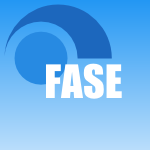 FASE-2014-OuederniSCP #named
FASE-2014-OuederniSCP #named- Comparator: A Tool for Quantifying Behavioural Compatibility (MO, GS, JC, EP), pp. 306–309.
 LICS-CSL-2014-AsarinBDDM #logic
LICS-CSL-2014-AsarinBDDM #logic- Asymptotic behaviour in temporal logic (EA, MB, AD, CD, CM), p. 9.
 TAP-2014-DiepenbeckKSD #development #testing #verification
TAP-2014-DiepenbeckKSD #development #testing #verification- Behaviour Driven Development for Tests and Verification (MD, UK, MS, RD), pp. 61–77.
 TAP-2014-HilkenNGW #comparison #modelling #ocl #uml #verification
TAP-2014-HilkenNGW #comparison #modelling #ocl #uml #verification- Filmstripping and Unrolling: A Comparison of Verification Approaches for UML and OCL Behavioral Models (FH, PN, MG, RW), pp. 99–116.
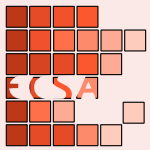 ECSA-2013-MorandiWNG #concurrent #design pattern #development #object-oriented
ECSA-2013-MorandiWNG #concurrent #design pattern #development #object-oriented- Concurrent Object-Oriented Development with Behavioral Design Patterns (BM, SW, SN, HG), pp. 25–32.
 HT-2013-NasimIRN #facebook #on the
HT-2013-NasimIRN #facebook #on the- On commenting behavior of Facebook users (MN, MUI, AR, NN), pp. 179–183.
 HT-2013-WeiHGLZW #analysis #case study #twitter
HT-2013-WeiHGLZW #analysis #case study #twitter- Mainstream media behavior analysis on Twitter: a case study on UK general election (ZW, YH, WG, BL, LZ, KFW), pp. 174–178.
 JCDL-2013-CunninghamM #library
JCDL-2013-CunninghamM #library- Interacting with and through a digital library collection: commenting behavior in Flickr’s the commons (SJC, MM), pp. 21–24.
 JCDL-2013-GongKZB #case study #clustering #effectiveness #interactive #retrieval
JCDL-2013-GongKZB #case study #clustering #effectiveness #interactive #retrieval- Interactive search result clustering: a study of user behavior and retrieval effectiveness (XG, WK, YZ, RB), pp. 167–170.
 SIGMOD-2013-ElmoreDPAAY #multitenancy
SIGMOD-2013-ElmoreDPAAY #multitenancy- Characterizing tenant behavior for placement and crisis mitigation in multitenant DBMSs (AJE, SD, AP, DA, AEA, XY), pp. 517–528.
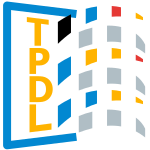 TPDL-2013-CunninghamVTHB #library #social
TPDL-2013-CunninghamVTHB #library #social- Social Information Behaviour in Bookshops: Implications for Digital Libraries (SJC, NV, CT, AH, GB), pp. 84–95.
 ICSM-2013-RoehmBHP #identification #specification #towards
ICSM-2013-RoehmBHP #identification #specification #towards- Towards Identification of Software Improvements and Specification Updates by Comparing Monitored and Specified End-User Behavior (TR, BB, TMH, BP), pp. 464–467.
 MSR-2013-FuLLDZX #analysis #comprehension
MSR-2013-FuLLDZX #analysis #comprehension- Contextual analysis of program logs for understanding system behaviors (QF, JGL, QL, RD, DZ, TX), pp. 397–400.
 MSR-2013-GrantB #empirical
MSR-2013-GrantB #empirical- Encouraging user behaviour with achievements: an empirical study (SG, BB), pp. 65–68.
 WCRE-2013-AntonyAC #approach #clone detection #detection #modelling
WCRE-2013-AntonyAC #approach #clone detection #detection #modelling- An approach to clone detection in behavioural models (EPA, MHA, JRC), pp. 472–476.
 IFM-2013-Prehofer #diagrams #refinement #specification
IFM-2013-Prehofer #diagrams #refinement #specification- Assume-Guarantee Specifications of State Transition Diagrams for Behavioral Refinement (CP), pp. 31–45.
 IFM-2013-RuksenasCH #evaluation #interactive #predict
IFM-2013-RuksenasCH #evaluation #interactive #predict- Integrating Formal Predictions of Interactive System Behaviour with User Evaluation (RR, PC, MDH), pp. 238–252.
 IFM-2013-TaylorBD #automation #erlang
IFM-2013-TaylorBD #automation #erlang- Automatic Inference of Erlang Module Behaviour (RT, KB, JD), pp. 253–267.
 SEFM-2013-BennaceurCIJ #automation #ontology #reasoning #synthesis
SEFM-2013-BennaceurCIJ #automation #ontology #reasoning #synthesis- Automated Mediator Synthesis: Combining Behavioural and Ontological Reasoning (AB, CC, MI, BJ), pp. 274–288.
 SEFM-2013-SargolzaeiSAA #approximate #web #web service
SEFM-2013-SargolzaeiSAA #approximate #web #web service- A Tool for Behaviour-Based Discovery of Approximately Matching Web Services (MS, FS, FA, HA), pp. 152–166.
 SEFM-2013-SuryadevaraSMP #using #verification
SEFM-2013-SuryadevaraSMP #using #verification- Verifying MARTE/CCSL Mode Behaviors Using UPPAAL (JS, CCS, FM, PP), pp. 1–15.
 SFM-2013-BortolussiH #approximate #markov #modelling
SFM-2013-BortolussiH #approximate #markov #modelling- Checking Individual Agent Behaviours in Markov Population Models by Fluid Approximation (LB, JH), pp. 113–149.
 CIG-2013-AlayedFN #detection #machine learning #online #using
CIG-2013-AlayedFN #detection #machine learning #online #using- Behavioral-based cheating detection in online first person shooters using machine learning techniques (HA, FF, CN), pp. 1–8.
 CIG-2013-DeyC #design #implementation #named
CIG-2013-DeyC #design #implementation #named- QL-BT: Enhancing behaviour tree design and implementation with Q-learning (RD, CC), pp. 1–8.
 CIG-2013-LiuLN #effectiveness #game studies #using
CIG-2013-LiuLN #effectiveness #game studies #using- Using CIGAR for finding effective group behaviors in RTS game (SL0, SJL, MNN), pp. 1–8.
 CIG-2013-Polceanu #named #using
CIG-2013-Polceanu #named #using- MirrorBot: Using human-inspired mirroring behavior to pass a turing test (MP), pp. 1–8.
 CIG-2013-SifaB #analysis #game studies #learning
CIG-2013-SifaB #analysis #game studies #learning- Archetypical motion: Supervised game behavior learning with Archetypal Analysis (RS, CB), pp. 1–8.
 CIG-2013-SifaDBTC #evolution
CIG-2013-SifaDBTC #evolution- Behavior evolution in Tomb Raider Underworld (RS, AD, CB, CT, AC), pp. 1–8.
 CIG-2013-WiensDP #game studies #learning #scalability
CIG-2013-WiensDP #game studies #learning #scalability- Creating large numbers of game AIs by learning behavior for cooperating units (SW, JD, SP), pp. 1–8.
 DiGRA-2013-DurgaESSNA #game studies
DiGRA-2013-DurgaESSNA #game studies- Leveraging Play in Health-Based Games to Promote Sustained Behavior Change in Healthy Eating and Exercise (SD, MSEN, MS, CS, PN, LA).
 DiGRA-2013-Salazar #case study #online
DiGRA-2013-Salazar #case study #online- Online Diasporas: Theoretical Considerations on the Study of Diasporic Behavior in MMORPGs (JS).
 DiGRA-2013-SymborskiJBCRQP #research
DiGRA-2013-SymborskiJBCRQP #research- Fusing Quantitative and Qualitative Methods in Virtual Worlds Behavioral Research (CS, GMJ, MB, GC, BR, MMQ, CP).
 DiGRA-2013-WarpefeltJV #game studies #matrix #using
DiGRA-2013-WarpefeltJV #game studies #matrix #using- Analyzing the believability of game character behavior using the Game Agent Matrix (HW, MJ, HV).
 DiGRA-2013-WilliamsK #approach #case study #collaboration #game studies #social
DiGRA-2013-WilliamsK #approach #case study #collaboration #game studies #social- Elements of Social Action: A Micro- Analytic Approach to the Study of Collaborative Behavior in Digital Games (JPW, DK).
 FDG-2013-Barik #game studies #interactive #low level
FDG-2013-Barik #game studies #interactive #low level- Inferring cognitive behaviors from low-level user interactions in games (TB), pp. 459–461.
 FDG-2013-CabezasT #generative #realtime
FDG-2013-CabezasT #generative #realtime- Real-time procedural terrain generation through swarm behaviours (ÁFC, TT), pp. 421–422.
 FDG-2013-DrachenTSB #clustering #comparison
FDG-2013-DrachenTSB #clustering #comparison- A comparison of methods for player clustering via behavioral telemetry (AD, CT, RS, CB), pp. 245–252.
 FDG-2013-EagleJBB #visual notation
FDG-2013-EagleJBB #visual notation- Exploring player behavior with visual analytics (ME, MWJ, TB, AKB), pp. 380–383.
 FDG-2013-GaudlDB #design #game studies #realtime
FDG-2013-GaudlDB #design #game studies #realtime- Behaviour oriented design for real-time-strategy games (SEG, SD, JJB), pp. 198–205.
 FDG-2013-ORourkeBLBP #education #game studies
FDG-2013-ORourkeBLBP #education #game studies- The effects of age on player behavior in educational games (EO, EB, YEL, CB, ZP), pp. 158–165.
 FDG-2013-TekofskySPHB #assessment #game studies #named
FDG-2013-TekofskySPHB #assessment #game studies #named- PsyOps: Personality assessment through gaming behavior (ST, PS, AP, HJvdH, JMB), pp. 166–173.
 FDG-2013-Vlachou-KonchylakiV
FDG-2013-Vlachou-KonchylakiV - Combining deliberation and reactive behavior for AI players in the Mini-Tichu card-game (MVK, SV), pp. 453–454.
 VS-Games-2013-OConnorLP
VS-Games-2013-OConnorLP - An Initial Study to Assess the Perceived Realism of Agent Crowd Behaviour in a Virtual City (SO, FL, CEP), pp. 1–8.
 GT-VMT-2013-Giese #graph transformation #probability
GT-VMT-2013-Giese #graph transformation #probability- Invited Talk: Extensions of Graph Transformation Systems for Timed, Continuous, and Probabilistic Behavior (HG).
 GT-VMT-2013-TeusnerGRK #interactive #modelling #validation
GT-VMT-2013-TeusnerGRK #interactive #modelling #validation- Interactive Strategy-Based Validation of Behavioral Models (RT, GG, SR, SK).
 GT-VMT-2013-WinetzhammerW #emf #modelling #rule-based
GT-VMT-2013-WinetzhammerW #emf #modelling #rule-based- ModGraph meets Xcore: Combining Rule-Based and Procedural Behavioral Modeling for EMF (SW, BW).
 CHI-2013-BentleyT #mobile #power of
CHI-2013-BentleyT #mobile #power of- The power of mobile notifications to increase wellbeing logging behavior (FB, KT), pp. 1095–1098.
 CHI-2013-BeyerKSHB #how
CHI-2013-BeyerKSHB #how- Squaring the circle: how framing influences user behavior around a seamless cylindrical display (GB, FK, MS, IH, AB), pp. 1729–1738.
 CHI-2013-BirnbaumBFDK #identification #using
CHI-2013-BirnbaumBFDK #identification #using- Using behavioral data to identify interviewer fabrication in surveys (BEB, GB, ADF, BD, ARK), pp. 2911–2920.
 CHI-2013-BullingWG #named #recognition #visual notation
CHI-2013-BullingWG #named #recognition #visual notation- EyeContext: recognition of high-level contextual cues from human visual behaviour (AB, CW, HG), pp. 305–308.
 CHI-2013-ChoudhuryCH #predict #social #social media
CHI-2013-ChoudhuryCH #predict #social #social media- Predicting postpartum changes in emotion and behavior via social media (MDC, SC, EH), pp. 3267–3276.
 CHI-2013-DeckersWLA #design
CHI-2013-DeckersWLA #design- Designing for perceptual crossing: designing and comparing three behaviors (ED, SW, PL, RA), pp. 1901–1910.
 CHI-2013-HeklerKFB #human-computer #research #using
CHI-2013-HeklerKFB #human-computer #research #using- Mind the theoretical gap: interpreting, using, and developing behavioral theory in HCI research (EBH, PVK, JF, MPB), pp. 3307–3316.
 CHI-2013-IchinoIHU
CHI-2013-IchinoIHU - Effects of the display angle in museums on user’s cognition, behavior, and subjective responses (JI, KI, AH, TU), pp. 2979–2988.
 CHI-2013-KramerKKWB #developer #how #ide #navigation #tool support
CHI-2013-KramerKKWB #developer #how #ide #navigation #tool support- How tools in IDEs shape developers’ navigation behavior (JPK, TK, JK, MW, JOB), pp. 3073–3082.
 CHI-2013-MacveanR #comprehension #game studies #motivation #physics #process
CHI-2013-MacveanR #comprehension #game studies #motivation #physics #process- Understanding exergame users’ physical activity, motivation and behavior over time (APM, JR), pp. 1251–1260.
 CHI-2013-MollerKSRD #self
CHI-2013-MollerKSRD #self- Investigating self-reporting behavior in long-term studies (AM, MK, BS, LR, SD), pp. 2931–2940.
 CHI-2013-RiceTOYWN #game studies #interactive
CHI-2013-RiceTOYWN #game studies #interactive- The dynamics of younger and older adult’s paired behavior when playing an interactive silhouette game (MDR, WPT, JO, LJY, MW, JN), pp. 1081–1090.
 CHI-2013-TanenbaumAR #game studies
CHI-2013-TanenbaumAR #game studies- Three perspectives on behavior change for serious games (JT, ANA, JR), pp. 3389–3392.
 CSCW-2013-ChoudhuryCH #social #social media
CSCW-2013-ChoudhuryCH #social #social media- Major life changes and behavioral markers in social media: case of childbirth (MDC, SC, EH), pp. 1431–1442.
 CSCW-2013-LiuJ #social
CSCW-2013-LiuJ #social- Factors influencing the response rate in social question and answering behavior (ZL, BJJ), pp. 1263–1274.
 CSCW-2013-Massimi #online #social
CSCW-2013-Massimi #online #social- Exploring remembrance and social support behavior in an online bereavement support group (MM), pp. 1169–1180.
 CSCW-2013-ReineckeNBNG #difference #online #scheduling
CSCW-2013-ReineckeNBNG #difference #online #scheduling- Doodle around the world: online scheduling behavior reflects cultural differences in time perception and group decision-making (KR, MKN, AB, MN, KZG), pp. 45–54.
 CSCW-2013-XuHKC #twitter
CSCW-2013-XuHKC #twitter- Structures of broken ties: exploring unfollow behavior on twitter (BX, YH, HK, NSC), pp. 871–876.
 DHM-HB-2013-NettenDG #case study #metric
DHM-HB-2013-NettenDG #case study #metric- Chair Based Measurements of Sitting Behavior a Field Study of Sitting Postures and Sitting Time in Office Work (MPN, LHMvdD, RHMG), pp. 261–268.
 DHM-HB-2013-WangTLCTL #architecture #modelling
DHM-HB-2013-WangTLCTL #architecture #modelling- Cognitive Behavior Modeling of Manual Rendezvous and Docking Based on the ACT-R Cognitive Architecture (CW, YT, YL, SC, ZT, JL), pp. 143–148.
 DHM-SET-2013-BiegBC #bias
DHM-SET-2013-BiegBC #bias- Attentional Biases during Steering Behavior (HJB, HHB, LLC), pp. 21–27.
 DHM-SET-2013-BusogiKSRYK #problem
DHM-SET-2013-BusogiKSRYK #problem- Bayesian Affordance-Based Agent Model for Wayfinding Behaviors in Evacuation Problems (MB, NK, DS, HBR, AY, DK), pp. 297–306.
 DHM-SET-2013-KongZC #predict #risk management
DHM-SET-2013-KongZC #predict #risk management- Personality and Attitudes as Predictors of Risky Driving Behavior: Evidence from Beijing Drivers (JK, KZ, XC), pp. 38–44.
 DHM-SET-2013-LiuZLSFG #modelling #towards
DHM-SET-2013-LiuZLSFG #modelling #towards- Towards Early Status Warning for Driver’s Fatigue Based on Cognitive Behavior Models (YL, YZ, JL, JS, FF, JG), pp. 55–60.
 DHM-SET-2013-LiuZX #simulation
DHM-SET-2013-LiuZX #simulation- Effects of Sleep Deprivation on Pilot’s Cognitive Behavior in Flight Simulation (ZQL, QXZ, FX), pp. 45–54.
 DHM-SET-2013-MurataKEH #metric #predict #using
DHM-SET-2013-MurataKEH #metric #predict #using- Prediction of Drowsy Driving Using Behavioral Measures of Drivers — Change of Neck Bending Angle and Sitting Pressure Distribution (AM, TK, TE, TH), pp. 78–87.
 DUXU-CXC-2013-MenardKD #image #online
DUXU-CXC-2013-MenardKD #image #online- Two Solitudes Revisited: A Cross-Cultural Exploration of Online Image Searcher’s Behaviors (EM, NK, JD), pp. 79–88.
 DUXU-CXC-2013-MurrayHSHR #feedback #interface
DUXU-CXC-2013-MurrayHSHR #feedback #interface- Avatar Interfaces for Biobehavioral Feedback (TM, DH, DSM, EBH, AR), pp. 424–434.
 DUXU-CXC-2013-Stevens #gamification #how #social
DUXU-CXC-2013-Stevens #gamification #how #social- How Gamification and Behavior Science Can Drive Social Change One Employee at a Time (SHS), pp. 597–601.
 DUXU-CXC-2013-ThinG #case study #experience #game studies #integration #interactive
DUXU-CXC-2013-ThinG #case study #experience #game studies #integration #interactive- Game-Based Interactive Media in Behavioral Medicine: Creating Serious Affective-Cognitive-Environmental-Social Integration Experiences (AGT, MG), pp. 470–479.
 DUXU-NTE-2013-DuarteRTVTN
DUXU-NTE-2013-DuarteRTVTN - Sense of Presence in a VR-Based Study on Behavioral Compliance with Warnings (ED, FR, LT, EV, JT, PN), pp. 362–371.
 DUXU-NTE-2013-FabriWT #product line
DUXU-NTE-2013-FabriWT #product line- Changing Eating Behaviors through a Cooking-Based Website for the Whole Family (MF, AW, PT), pp. 484–493.
 DUXU-NTE-2013-KakaraNM #database #design #geometry #interactive #using
DUXU-NTE-2013-KakaraNM #database #design #geometry #interactive #using- Interaction Design Using a Child Behavior-Geometry Database (HK, YN, HM), pp. 95–104.
 DUXU-NTE-2013-MartinsMSA #fault
DUXU-NTE-2013-MartinsMSA #fault- Human Error in Aviation: The Behavior of Pilots Facing the Modern Technology (ITM, ETM, MMS, LGdSA), pp. 150–159.
 DUXU-NTE-2013-SannaVBBR #approach #design
DUXU-NTE-2013-SannaVBBR #approach #design- Engineering AwarenessTM: An e-Service Design Approach for Behavioral Change in Healthcare and Well-Being (AS, SV, SB, IB, AR), pp. 558–567.
 DUXU-NTE-2013-TrevorrowF
DUXU-NTE-2013-TrevorrowF - Running to Behavior Change (PT, MF), pp. 585–593.
 DUXU-NTE-2013-ViciniBRS
DUXU-NTE-2013-ViciniBRS - Well-Being on the Go: An IoT Vending Machine Service for the Promotion of Healthy Behaviors and Lifestyles (SV, SB, AR, AS), pp. 594–603.
 DUXU-PMT-2013-KarahasanovicF #2d #approach #experience #modelling #network
DUXU-PMT-2013-KarahasanovicF #2d #approach #experience #modelling #network- Modelling User Behaviour and Experience — The R2D2 Networks Approach (AK, AF), pp. 506–515.
 DUXU-PMT-2013-LuL13a #design
DUXU-PMT-2013-LuL13a #design- Innovative Behavioral Intention and Creativity Achievement in Design: Test of an Integrated Model (CCL, DBL), pp. 535–544.
 DUXU-PMT-2013-Silveira #approach #design #usability
DUXU-PMT-2013-Silveira #approach #design #usability- Participatory Design and Usability: A Behavioral Approach of Workers’ Attitudes in the Work Environment (DMCdS), pp. 409–416.
 DUXU-WM-2013-MarcusCNY #design #mobile #persuasion #user interface
DUXU-WM-2013-MarcusCNY #design #mobile #persuasion #user interface- The Innovation Machine: Mobile UX Design Combining Information and Persuasion Design to Change Behavior (AM, MC, CN, AY), pp. 67–76.
 HCI-AS-2013-BergmansS #mobile #persuasion #using
HCI-AS-2013-BergmansS #mobile #persuasion #using- Reducing Speeding Behavior in Young Drivers Using a Persuasive Mobile Application (AB, SS), pp. 541–550.
 HCI-AS-2013-LekkasGTMS #component #experience #how #learning #process
HCI-AS-2013-LekkasGTMS #component #experience #how #learning #process- Personality and Emotion as Determinants of the Learning Experience: How Affective Behavior Interacts with Various Components of the Learning Process (ZL, PG, NT, CM, GS), pp. 418–427.
 HCI-III-2013-Joo #reasoning #simulation
HCI-III-2013-Joo #reasoning #simulation- Perception and BDI Reasoning Based Agent Model for Human Behavior Simulation in Complex System (JJ), pp. 62–71.
 HCI-IMT-2013-LiuBCN #visual notation
HCI-IMT-2013-LiuBCN #visual notation- Behavioral Characteristics of Users with Visual Impairment in Haptically Enhanced Virtual Environments (SL, SB, HC, CSN), pp. 618–625.
 HIMI-D-2013-KobayashiYA #analysis
HIMI-D-2013-KobayashiYA #analysis- Analysis of Purchasing Behavior Focusing on the Passage of Time at a Group Buying Site of Coupon (TK, TY, YA), pp. 449–455.
 HIMI-D-2013-LeeY #comparison #information management #research
HIMI-D-2013-LeeY #comparison #information management #research- Research on Website Usage Behavior through Information Search Perspective: A Comparison of Experiential and Goal-Directed Behaviors (JL, MY), pp. 456–464.
 HIMI-D-2013-SusukiTOM #analysis
HIMI-D-2013-SusukiTOM #analysis- Cognitive Analysis of Driver’s Behavior with Seamless Display of Back-Monitor and Side-View Mirror (NS, KT, MO, HM), pp. 642–649.
 HIMI-HSM-2013-HiraokaTK #parametricity
HIMI-HSM-2013-HiraokaTK #parametricity- Proposal of Non-dimensional Parameter Indices to Evaluate Safe Driving Behavior (TH, ST, HK), pp. 470–479.
 HIMI-HSM-2013-ItohKMYYO #comparison
HIMI-HSM-2013-ItohKMYYO #comparison- Comparison of Cognitively Impaired, Healthy Non-Professional and Healthy Professional Driver Behavior on a Small and Low-Fidelity Driving Simulator (MI, MK, KM, KY, SY, MO), pp. 490–496.
 HIMI-HSM-2013-KarashimaN #safety
HIMI-HSM-2013-KarashimaN #safety- Influence of the Safety Margin on Behavior that Violates Rules (MK, HN), pp. 497–506.
 HIMI-HSM-2013-KosakaN #education
HIMI-HSM-2013-KosakaN #education- Pilot Experiments in Education for Safe Bicycle Riding to Evaluate Actual Cycling Behaviors When Entering an Intersection (HK, MN), pp. 515–523.
 HIMI-HSM-2013-SaitoKII
HIMI-HSM-2013-SaitoKII - Influence of Deceleration Intention Indicating System of Forward Vehicle on Driver Behavior (YS, SK, MI, TI), pp. 548–557.
 HIMI-HSM-2013-SuzukiMKY
HIMI-HSM-2013-SuzukiMKY - Human Behavior of Prioritizing Right-Turning Vehicles and Traffic Flow at Intersections (HS, YM, TK, YY), pp. 558–567.
 OCSC-2013-Abascal-MenaLZ #analysis #mining #twitter
OCSC-2013-Abascal-MenaLZ #analysis #mining #twitter- User Generated Content: An Analysis of User Behavior by Mining Political Tweets (RAM, ÉLO, JSZH), pp. 3–12.
 OCSC-2013-AdnanHAT #analysis #eye tracking #network #online #social
OCSC-2013-AdnanHAT #analysis #eye tracking #network #online #social- Eye Tracking Analysis of User Behavior in Online Social Networks (WAWA, WNHH, NA, JT), pp. 113–119.
 OCSC-2013-KalwarHP13b #comprehension #internet
OCSC-2013-KalwarHP13b #comprehension #internet- Quantifying Cultural Attributes for Understanding Human Behavior on the Internet (SKK, KH, JP), pp. 40–49.
 OCSC-2013-LopezFM
OCSC-2013-LopezFM - Being Example: A Different Kind of Leadership, Looking for Exemplary Behaviors (SRL, HMF, ASM), pp. 182–190.
 OCSC-2013-StieglitzES #education #learning #student
OCSC-2013-StieglitzES #education #learning #student- Influence of Monetary and Non-monetary Incentives on Students’ Behavior in Blended Learning Settings in Higher Education (SS, AE, MS), pp. 104–112.
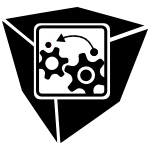 VISSOFT-2013-PalepuJ #visualisation
VISSOFT-2013-PalepuJ #visualisation- Visualizing constituent behaviors within executions (VKP, JAJ), pp. 1–4.
 VISSOFT-2013-ReissT #automation #categorisation #visualisation
VISSOFT-2013-ReissT #automation #categorisation #visualisation- Automatic categorization and visualization of lock behavior (SPR, AT), pp. 1–10.
 CAiSE-2013-SuriadiWOHD #case study #comprehension #process #scalability
CAiSE-2013-SuriadiWOHD #case study #comprehension #process #scalability- Understanding Process Behaviours in a Large Insurance Company in Australia: A Case Study (SS, MTW, CO, AHMtH, NJvD), pp. 449–464.
 CIKM-2013-LiaoPPL #mining #mobile #on the #predict #smarttech
CIKM-2013-LiaoPPL #mining #mobile #on the #predict #smarttech- On mining mobile apps usage behavior for predicting apps usage in smartphones (ZXL, YCP, WCP, PRL), pp. 609–618.
 ECIR-2013-ChuklinSR #using
ECIR-2013-ChuklinSR #using- Using Intent Information to Model User Behavior in Diversified Search (AC, PS, MdR), pp. 1–13.
 ICML-c3-2013-AlmingolML #learning #multi
ICML-c3-2013-AlmingolML #learning #multi- Learning Multiple Behaviors from Unlabeled Demonstrations in a Latent Controller Space (JA, LM, ML), pp. 136–144.
 KDD-2013-MukherjeeKLWHCG #using
KDD-2013-MukherjeeKLWHCG #using- Spotting opinion spammers using behavioral footprints (AM, AK, BL, JW, MH, MC, RG), pp. 632–640.
 KDD-2013-ZafaraniL #approach #social #social media
KDD-2013-ZafaraniL #approach #social #social media- Connecting users across social media sites: a behavioral-modeling approach (RZ, HL), pp. 41–49.
 KDIR-KMIS-2013-ChenYTH #predict
KDIR-KMIS-2013-ChenYTH #predict- The Disulfide Connectivity Prediction with Support Vector Machine and Behavior Knowledge Space (HYC, CBY, KTT, CYH), pp. 112–118.
 KDIR-KMIS-2013-ItalaH #diagrams #process #using
KDIR-KMIS-2013-ItalaH #diagrams #process #using- Using Stocks and Flows Diagrams to Understand Business Process Behavior (TI, MH), pp. 552–558.
 SEKE-2013-BazharAJ #modelling #named #repository
SEKE-2013-BazharAJ #modelling #named #repository- BeMoRe: a Repository for Handling Models Behaviors (YB, YAA, SJ), pp. 262–267.
 SEKE-2013-IqbalKH #communication #developer #social
SEKE-2013-IqbalKH #communication #developer #social- Analyzing Social Behavior of Software Developers Across Different Communication Channels (AI, MK, MH), pp. 113–118.
 SIGIR-2013-AgeevLA #summary #using
SIGIR-2013-AgeevLA #summary #using- Improving search result summaries by using searcher behavior data (MA, DL, EA), pp. 13–22.
 SIGIR-2013-AzzopardiKB #how #query
SIGIR-2013-AzzopardiKB #how #query- How query cost affects search behavior (LA, DK, KB), pp. 23–32.
 SIGIR-2013-MoshfeghiJ #effectiveness #feedback #using
SIGIR-2013-MoshfeghiJ #effectiveness #feedback #using- An effective implicit relevance feedback technique using affective, physiological and behavioural features (YM, JMJ), pp. 133–142.
 SIGIR-2013-SavenkovLL #detection
SIGIR-2013-SavenkovLL #detection- Search engine switching detection based on user personal preferences and behavior patterns (DS, DL, QL), pp. 33–42.
 SIGIR-2013-Wu #how #online #predict #using
SIGIR-2013-Wu #how #online #predict #using- How far will you go?: characterizing and predicting online search stopping behavior using information scent and need for cognition (WCW), p. 1149.
 MoDELS-2013-PiresPWD #embedded #source code #verification
MoDELS-2013-PiresPWD #embedded #source code #verification- Behavioural Verification in Embedded Software, from Model to Source Code (AFP, TP, VW, SD), pp. 320–335.
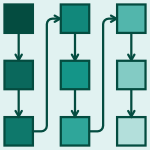 PLEASE-2013-FangLED #challenge #variability
PLEASE-2013-FangLED #challenge #variability- Challenges in managing behavior variability of production control software (MF, GL, CE, JD), pp. 21–24.
 HILT-2013-Goodenough
HILT-2013-Goodenough - Building confidence in system behavior (JBG), pp. 49–50.
 POPL-2013-CairesS
POPL-2013-CairesS - The type discipline of behavioral separation (LC, JCS), pp. 275–286.
 QAPL-2013-BernardoNL #nondeterminism #probability #process
QAPL-2013-BernardoNL #nondeterminism #probability #process- The Spectrum of Strong Behavioral Equivalences for Nondeterministic and Probabilistic Processes (MB, RDN, ML), pp. 81–96.
 RE-2013-KrkaM
RE-2013-KrkaM - Distributing refinements of a system-level partial behavior model (IK, NM), pp. 72–81.
 ASE-2013-ChandramohanTBSP #approach #bound #detection #modelling #scalability
ASE-2013-ChandramohanTBSP #approach #bound #detection #modelling #scalability- A scalable approach for malware detection through bounded feature space behavior modeling (MC, HBKT, LCB, LKS, BMP), pp. 312–322.
 ASE-2013-Fard #detection #distributed #independence #using
ASE-2013-Fard #detection #distributed #independence #using- Detecting and fixing emergent behaviors in Distributed Software Systems using a message content independent method (FHF), pp. 746–749.
 ESEC-FSE-2013-SchurRZ #enterprise #mining #modelling #web
ESEC-FSE-2013-SchurRZ #enterprise #mining #modelling #web- Mining behavior models from enterprise web applications (MS, AR, AZ), pp. 422–432.
 SAC-2013-GregioFAGMJ #analysis #empirical #internet
SAC-2013-GregioFAGMJ #analysis #empirical #internet- An empirical analysis of malicious internet banking software behavior (ARAG, DSFF, VMA, PLdG, VFM, MJ), pp. 1830–1835.
 SAC-2013-NardelliTB
SAC-2013-NardelliTB - Cross-lattice behavior of general ACO folding for proteins in the HP model (MN, LT, AB), pp. 1320–1327.
 SAC-2013-SchroderN #resource management
SAC-2013-SchroderN #resource management- Inter cloud capable dynamic resource management with model of behavior (KS, WN), pp. 408–410.
 SAC-2013-UmemotoYNT #predict #query
SAC-2013-UmemotoYNT #predict #query- Predicting query reformulation type from user behavior (KU, TY, SN, KT), pp. 894–901.
 CASE-2013-BengtssonL #algorithm #identification #modelling #using #visualisation
CASE-2013-BengtssonL #algorithm #identification #modelling #using #visualisation- Operation behavior modeling using relation identification and visualization algorithms (KB, BL), pp. 368–373.
 CASE-2013-DingHMS #collaboration #industrial
CASE-2013-DingHMS #collaboration #industrial- Structured collaborative behavior of industrial robots in mixed human-robot environments (HD, JH, BM, HS), pp. 1101–1106.
 CASE-2013-RoyerBTT #assessment #energy #modelling #multi #simulation #using
CASE-2013-RoyerBTT #assessment #energy #modelling #multi #simulation #using- Modelling of a multi-zone building and assessment of its thermal behaviour using an energy simulation software (SR, MB, ST, TT), pp. 735–740.
 CASE-2013-RoyZR #framework #representation
CASE-2013-RoyZR #framework #representation- The information framework for material behavior representation (UR, BZ, DJR), pp. 380–385.
 DAC-2013-Miskov-ZivanovMF #analysis #automation #design #network
DAC-2013-Miskov-ZivanovMF #analysis #automation #design #network- Dynamic behavior of cell signaling networks: model design and analysis automation (NMZ, DM, JRF), p. 6.
 DAC-2013-YangRHX #design #equivalence #implementation #optimisation #synthesis
DAC-2013-YangRHX #design #equivalence #implementation #optimisation #synthesis- Handling design and implementation optimizations in equivalence checking for behavioral synthesis (ZY, SR, KH, FX), p. 6.
 HPCA-2013-NereHLT #biology #semantic gap
HPCA-2013-NereHLT #biology #semantic gap- Bridging the semantic gap: Emulating biological neuronal behaviors with simple digital neurons (AN, AH, MHL, GT), pp. 472–483.
 PDP-2013-DrumlMSWGBH #design #functional #performance #verification
PDP-2013-DrumlMSWGBH #design #functional #performance #verification- Emulation-Based Test and Verification of a Design’s Functional, Performance, Power, and Supply Voltage Behavior (ND, MM, CS, RW, AG, HB, JH), pp. 328–335.
 SOSP-2013-WangZKS #towards
SOSP-2013-WangZKS #towards- Towards optimization-safe systems: analyzing the impact of undefined behavior (XW, NZ, MFK, ASL), pp. 260–275.
 ESOP-2013-CairesPPT #communication #morphism #parametricity #polymorphism
ESOP-2013-CairesPPT #communication #morphism #parametricity #polymorphism- Behavioral Polymorphism and Parametricity in Session-Based Communication (LC, JAP, FP, BT), pp. 330–349.
 FASE-2013-BouchouchaSL #comprehension #modelling #probability #towards #using
FASE-2013-BouchouchaSL #comprehension #modelling #probability #towards #using- Towards Understanding the Behavior of Classes Using Probabilistic Models of Program Inputs (AB, HAS, PL), pp. 99–113.
 FASE-2013-LinPEHR #analysis #requirements #sequence #specification #string
FASE-2013-LinPEHR #analysis #requirements #sequence #specification #string- Augmenting Sequence Enumeration with String-Rewriting for Requirements Analysis and Behavioral Specification (LL, JHP, RE, RMH, CRM), pp. 179–193.
 FASE-2013-ZhongTX #api #difference
FASE-2013-ZhongTX #api #difference- Exposing Behavioral Differences in Cross-Language API Mapping Relations (HZ, ST, TX), pp. 130–145.
 ICST-2013-CzemerinskiBU #abstraction #black box
ICST-2013-CzemerinskiBU #abstraction #black box- Behaviour Abstraction Coverage as Black-Box Adequacy Criteria (HC, VAB, SU), pp. 222–231.
 LICS-2013-MogaveroMS #bound #on the
LICS-2013-MogaveroMS #bound #on the- On the Boundary of Behavioral Strategies (FM, AM, LS), pp. 263–272.
 DocEng-2012-SoaresNS #architecture #constraints #hypermedia
DocEng-2012-SoaresNS #architecture #constraints #hypermedia- Architecture for hypermedia dynamic applications with content and behavior constraints (LFGS, CdSSN, JGS), pp. 217–226.
 HT-2012-CunhaMAGB #gender #twitter
HT-2012-CunhaMAGB #gender #twitter- A gender based study of tagging behavior in twitter (EC, GM, VA, MAG, FB), pp. 323–324.
 HT-2012-SchofeggerKSG #learning #social
HT-2012-SchofeggerKSG #learning #social- Learning user characteristics from social tagging behavior (KS, CK, PS, MG), pp. 207–212.
 JCDL-2012-HinzeMVTC #library #physics
JCDL-2012-HinzeMVTC #library #physics- Book selection behavior in the physical library: implications for ebook collections (AH, DM, NV, CT, SJC), pp. 305–314.
 TPDL-2012-McKayHHVTC #library
TPDL-2012-McKayHHVTC #library- An Exploration of ebook Selection Behavior in Academic Library Collections (DM, AH, RH, NV, CT, SJC), pp. 13–24.
 VLDB-2012-KanagalAPJYP #learning #recommendation #taxonomy #using
VLDB-2012-KanagalAPJYP #learning #recommendation #taxonomy #using- Supercharging Recommender Systems using Taxonomies for Learning User Purchase Behavior (BK, AA, SP, VJ, JY, LGP), pp. 956–967.
 ITiCSE-2012-BoyceCPCB #game studies #learning
ITiCSE-2012-BoyceCPCB #game studies #learning- Maximizing learning and guiding behavior in free play user generated content environments (AKB, AC, SP, DC, TB), pp. 10–15.
 ITiCSE-2012-GomesSM #case study #learning #student #towards
ITiCSE-2012-GomesSM #case study #learning #student #towards- A study on students’ behaviours and attitudes towards learning to program (AJG, ÁNS, AJM), pp. 132–137.
 CSMR-2012-MaezawaWH #internet
CSMR-2012-MaezawaWH #internet- Extracting Interaction-Based Stateful Behavior in Rich Internet Applications (YM, HW, SH), pp. 423–428.
 ICSM-2012-RungtaPB #evolution #impact analysis
ICSM-2012-RungtaPB #evolution #impact analysis- A change impact analysis to characterize evolving program behaviors (NR, SP, JB), pp. 109–118.
 FM-2012-GrumbergMY #model checking #modelling #uml
FM-2012-GrumbergMY #model checking #modelling #uml- Applying Software Model Checking Techniques for Behavioral UML Models (OG, YM, KY), pp. 277–292.
 IFM-2012-TianBB #detection #game studies #multi
IFM-2012-TianBB #detection #game studies #multi- Behaviour-Based Cheat Detection in Multiplayer Games with Event-B (HT, PJB, AGB), pp. 206–220.
 AIIDE-2012-DesaiS #using
AIIDE-2012-DesaiS #using- Enhancing the Believability of Character Behaviors Using Non-Verbal Cues (ND, DS).
 AIIDE-2012-Ocio #adaptation
AIIDE-2012-Ocio #adaptation- Adapting AI Behaviors To Players in Driver San Francisco: Hinted-Execution Behavior Trees (SO).
 CIG-2012-DrachenSBT #clustering #game studies
CIG-2012-DrachenSBT #clustering #game studies- Guns, swords and data: Clustering of player behavior in computer games in the wild (AD, RS, CB, CT), pp. 163–170.
 CIG-2012-JohanssonD
CIG-2012-JohanssonD - Emotional behavior trees (AJ, PD), pp. 355–362.
 CIG-2012-RobertsL #design #evolution
CIG-2012-RobertsL #design #evolution- Evolving spaceship designs for optimal control and the emergence of interesting behaviour (SAR, SML), pp. 342–349.
 CIG-2012-RosenthalC #generative
CIG-2012-RosenthalC #generative- Personality profiles for generating believable bot behaviors (CR, CBC), pp. 124–131.
 FDG-2012-Canossa
FDG-2012-Canossa - Give me a reason to dig: qualitative associations between player behavior in Minecraft and life motives (AC), pp. 282–283.
 VS-Games-2012-AsteriadisKSY #clustering #detection #towards #using #visual notation
VS-Games-2012-AsteriadisKSY #clustering #detection #towards #using #visual notation- Towards Detecting Clusters of Players using Visual and Gameplay Behavioral Cues (SA, KK, NS, GNY), pp. 140–147.
 ICGT-2012-GieseL #automation #invariant #model transformation #towards #verification
ICGT-2012-GieseL #automation #invariant #model transformation #towards #verification- Towards Automatic Verification of Behavior Preservation for Model Transformation via Invariant Checking (HG, LL), pp. 249–263.
 CHI-2012-ArroyoBV #embedded #interactive
CHI-2012-ArroyoBV #embedded #interactive- Embedded interaction in a water fountain for motivating behavior change in public space (EA, LB, NV), pp. 685–688.
 CHI-2012-BatemanTW #comparison #how
CHI-2012-BatemanTW #comparison #how- The search dashboard: how reflection and comparison impact search behavior (SB, JT, RWW), pp. 1785–1794.
 CHI-2012-BirnholtzBF
CHI-2012-BirnholtzBF - Do you see that I see?: effects of perceived visibility on awareness checking behavior (JPB, NB, SRF), pp. 1765–1774.
 CHI-2012-EvansW #metric
CHI-2012-EvansW #metric- Taming wild behavior: the input observer for text entry and mouse pointing measures from everyday computer use (AE, JOW), pp. 1947–1956.
 CHI-2012-HenzeRB #mobile #type system #using
CHI-2012-HenzeRB #mobile #type system #using- Observational and experimental investigation of typing behaviour using virtual keyboards for mobile devices (NH, ER, SB), pp. 2659–2668.
 CHI-2012-KoppelBMW
CHI-2012-KoppelBMW - Chained displays: configurations of public displays can be used to influence actor-, audience-, and passer-by behavior (MTK, GB, JM, RW), pp. 317–326.
 CHI-2012-LeonUSWBC #evaluation #online #tool support #usability #why
CHI-2012-LeonUSWBC #evaluation #online #tool support #usability #why- Why Johnny can’t opt out: a usability evaluation of tools to limit online behavioral advertising (PGL, BU, RS, YW, RB, LFC), pp. 589–598.
 CHI-2012-NowakN #monitoring #online #recommendation
CHI-2012-NowakN #monitoring #online #recommendation- Effects of behavior monitoring and perceived system benefit in online recommender systems (MN, CN), pp. 2243–2246.
 CHI-2012-OdomZFCMP
CHI-2012-OdomZFCMP - Investigating the presence, form and behavior of virtual possessions in the context of a teen bedroom (WO, JZ, JF, HC, SM, AP), pp. 327–336.
 CHI-2012-RaeTM #communication
CHI-2012-RaeTM #communication- One of the gang: supporting in-group behavior for embodied mediated communication (IR, LT, BM), pp. 3091–3100.
 CSCW-2012-AntinCN #editing
CSCW-2012-AntinCN #editing- Technology-mediated contributions: editing behaviors among new wikipedians (JA, CC, ON), pp. 373–382.
 CSCW-2012-MillerPXEKCM #game studies #health #pervasive #student
CSCW-2012-MillerPXEKCM #game studies #health #pervasive #student- The work of play: supporting a pervasive health behavior change intervention for us middle school students (ADM, ESP, YX, EE, DK, RC, EDM), pp. 897–900.
 ICEIS-v1-2012-LouatiBDS #database #modelling #realtime
ICEIS-v1-2012-LouatiBDS #database #modelling #realtime- Modeling Structural, Temporal and Behavioral Features of a Real-Time Database (NL, RB, CD, BS), pp. 119–125.
 ICEIS-v2-2012-LelionnaisBDRS #modelling #operating system #realtime
ICEIS-v2-2012-LelionnaisBDRS #modelling #operating system #realtime- Formal Behavioral Modeling of Real-time Operating Systems (CL, MB, JD, OHR, CS), pp. 407–414.
 CIKM-2012-AhmedADSA #feature model #multi
CIKM-2012-AhmedADSA #feature model #multi- Web-scale multi-task feature selection for behavioral targeting (AA, MA, AD, AJS, TA), pp. 1737–1741.
 CIKM-2012-ArguelloC
CIKM-2012-ArguelloC - The effect of aggregated search coherence on search behavior (JA, RC), pp. 1293–1302.
 CIKM-2012-AshkanC #analysis #modelling
CIKM-2012-AshkanC #analysis #modelling- Modeling browsing behavior for click analysis in sponsored search (AA, CLAC), pp. 2015–2019.
 CIKM-2012-CarteretteKY #evaluation #variability
CIKM-2012-CarteretteKY #evaluation #variability- Incorporating variability in user behavior into systems based evaluation (BC, EK, EY), pp. 135–144.
 CIKM-2012-KimFC #comprehension #web
CIKM-2012-KimFC #comprehension #web- Understanding book search behavior on the web (JYK, HAF, MAC), pp. 744–753.
 CIKM-2012-WuJZ
CIKM-2012-WuJZ - Serial position effects of clicking behavior on result pages returned by search engines (MW, SJ, YZ), pp. 2411–2414.
 CIKM-2012-ZhuGCL #mining #query #recommendation
CIKM-2012-ZhuGCL #mining #query #recommendation- More than relevance: high utility query recommendation by mining users’ search behaviors (XZ, JG, XC, YL), pp. 1814–1818.
 ICML-2012-SheffetMI #predict
ICML-2012-SheffetMI #predict- Predicting Consumer Behavior in Commerce Search (OS, NM, SI), p. 233.
 ICPR-2012-DeyG #consistency #topic #twitter
ICPR-2012-DeyG #consistency #topic #twitter- Discovering regular and consistent behavioral patterns in topical tweeting (LD, BG), pp. 3464–3467.
 ICPR-2012-MatsuoK #monitoring #predict
ICPR-2012-MatsuoK #monitoring #predict- Prediction of drowsy driving by monitoring driver’s behavior (HM, AK), pp. 3390–3393.
 ICPR-2012-MinouraW
ICPR-2012-MinouraW - Driving support by estimating vehicle behavior (KM, TW), pp. 1144–1147.
 ICPR-2012-NakamuraIKB #authentication #multi #tablet
ICPR-2012-NakamuraIKB #authentication #multi #tablet- Tablet owner authentication based on behavioral characteristics of multi-touch actions (KN, YI, KK, NB), pp. 3431–3434.
 KDD-2012-SongCWWYD #analysis
KDD-2012-SongCWWYD #analysis- Coupled behavior analysis for capturing coupling relationships in group-based market manipulations (YS, LC, XW, GW, WY, WD), pp. 976–984.
 KDD-2012-XingLHCHLLMZ #chat #detection #online #scalability #video
KDD-2012-XingLHCHLLMZ #chat #detection #online #scalability #video- Scalable misbehavior detection in online video chat services (XX, YLL, SH, HC, RH, QL, XL, SM, YZ), pp. 552–560.
 KDD-2012-ZhongFWXL #adaptation #named #network #social
KDD-2012-ZhongFWXL #adaptation #named #network #social- ComSoc: adaptive transfer of user behaviors over composite social network (EZ, WF, JW, LX, YL), pp. 696–704.
 KDD-2012-ZhouQM #data analysis #social #social media
KDD-2012-ZhouQM #data analysis #social #social media- Social media data analysis for revealing collective behaviors (AZ, WQ, HM), p. 1402.
 KDIR-2012-SantosGSK #detection #finite
KDIR-2012-SantosGSK #detection #finite- Finite Belief Fusion Model for Hidden Source Behavior Change Detection (ESJ, QG, EES, JK), pp. 17–24.
 KMIS-2012-LiuAACT #modelling
KMIS-2012-LiuAACT #modelling- Modeling Dynamic Behavior of Business Organisations — Extension of BPM with Norms (KL, MAR, ARA, LC, JT), pp. 196–201.
 KMIS-2012-MarsanCE #analysis #enterprise #framework #information management #platform #scalability #tool support #using
KMIS-2012-MarsanCE #analysis #enterprise #framework #information management #platform #scalability #tool support #using- Factors Influencing the Behavioral Intention of using Enterprise 2.0 Tools as a Knowledge Management Platform — An Analysis of the UTAUT Model in an Large Real Estate Company (BM, LC, EE), pp. 281–284.
 MLDM-2012-HossainC #identification
MLDM-2012-HossainC #identification- Combination of Physiological and Behavioral Biometric for Human Identification (EH, GC), pp. 380–393.
 SEKE-2012-ChenL #approach #elicitation #ontology #requirements #security
SEKE-2012-ChenL #approach #elicitation #ontology #requirements #security- Eliciting Security Requirements in the Commanded Behavior Frame: An Ontology based Approach (XC, JL), pp. 61–65.
 SEKE-2012-CourbisLLPUV #agile #development #incremental #specification
SEKE-2012-CourbisLLPUV #agile #development #incremental #specification- A Formal Support for Incremental Behavior Specification In Agile Development (ALC, TL, HVL, TLP, CU, SV), pp. 694–799.
 SEKE-2012-MireslamiMF #detection #distributed
SEKE-2012-MireslamiMF #detection #distributed- Detecting Emergent Behavior in Distributed Systems Caused by Overgeneralization (SM, MM, BHF), pp. 70–73.
 SIGIR-2012-BennettWCDBBC #modelling #personalisation
SIGIR-2012-BennettWCDBBC #modelling #personalisation- Modeling the impact of short- and long-term behavior on search personalization (PNB, RWW, WC, STD, PB, FB, XC), pp. 185–194.
 SIGIR-2012-LiuBC #interactive #personalisation #using
SIGIR-2012-LiuBC #interactive #personalisation #using- Personalization of search results using interaction behaviors in search sessions (CL, NJB, MJC), pp. 205–214.
 SIGIR-2012-TrevisiolCAJ #image #ranking
SIGIR-2012-TrevisiolCAJ #image #ranking- Image ranking based on user browsing behavior (MT, LC, LMA, AJ), pp. 445–454.
 SIGIR-2012-TsagkiasB #modelling
SIGIR-2012-TsagkiasB #modelling- Language intent models for inferring user browsing behavior (MT, RB), pp. 335–344.
 SIGIR-2012-XuZWY #modelling #social #social media
SIGIR-2012-XuZWY #modelling #social #social media- Modeling user posting behavior on social media (ZX, YZ, YW, QY), pp. 545–554.
 MoDELS-2012-HamannHG #modelling #ocl #on the
MoDELS-2012-HamannHG #modelling #ocl #on the- On Integrating Structure and Behavior Modeling with OCL (LH, OH, MG), pp. 235–251.
 SPLC-2012-CordySHL #modelling #product line #realtime #verification
SPLC-2012-CordySHL #modelling #product line #realtime #verification- Behavioural modelling and verification of real-time software product lines (MC, PYS, PH, AL), pp. 66–75.
 OOPSLA-2012-TamayoABS #comprehension #database
OOPSLA-2012-TamayoABS #comprehension #database- Understanding the behavior of database operations under program control (JMT, AA, NGB, MS), pp. 983–996.
 OOPSLA-2012-WuZSJGS #correlation #predict
OOPSLA-2012-WuZSJGS #correlation #predict- Exploiting inter-sequence correlations for program behavior prediction (BW, ZZ, XS, YJ, YG, RS), pp. 851–866.
 TOOLS-EUROPE-2012-SoekenWD #development #natural language #using
TOOLS-EUROPE-2012-SoekenWD #development #natural language #using- Assisted Behavior Driven Development Using Natural Language Processing (MS, RW, RD), pp. 269–287.
 FSE-2012-ChandramohanTS #clustering #modelling #scalability
FSE-2012-ChandramohanTS #clustering #modelling #scalability- Scalable malware clustering through coarse-grained behavior modeling (MC, HBKT, LKS), p. 27.
 ICSE-2012-FengC #learning #multi
ICSE-2012-FengC #learning #multi- Multi-label software behavior learning (YF, ZC), pp. 1305–1308.
 ICSE-2012-GhezziM #specification #synthesis #validation
ICSE-2012-GhezziM #specification #synthesis #validation- Behavioral validation of JFSL specifications through model synthesis (CG, AM), pp. 936–946.
 ICSE-2012-ZhengT #architecture #consistency #implementation
ICSE-2012-ZhengT #architecture #consistency #implementation- Enhancing architecture-implementation conformance with change management and support for behavioral mapping (YZ, RNT), pp. 628–638.
 SAC-2012-ArpiniA #enterprise #modelling #on the
SAC-2012-ArpiniA #enterprise #modelling #on the- On the support for the assignment of active structure and behavior in enterprise modeling approaches (RHA, JPAA), pp. 1686–1693.
 SAC-2012-WangTWWG #algorithm #empirical #evaluation #mining #process
SAC-2012-WangTWWG #algorithm #empirical #evaluation #mining #process- An empirical evaluation of process mining algorithms based on structural and behavioral similarities (JW, ST, LW, RKW, QG), pp. 211–213.
 GPCE-2012-SpacekDTF #component #inheritance #programming #reuse
GPCE-2012-SpacekDTF #component #inheritance #programming #reuse- An inheritance system for structural & behavioral reuse in component-based software programming (PS, CD, CT, LF), pp. 60–69.
 CASE-2012-CunhaBC #industrial
CASE-2012-CunhaBC #industrial- Discovery of behavior in industrial plants: A KDD based proposal (MJdC, VLB, GAdPC), pp. 986–991.
 CASE-2012-ParkM #bound #clustering #hybrid #linear #performance #tool support
CASE-2012-ParkM #bound #clustering #hybrid #linear #performance #tool support- Performance bounds for hybrid flow lines: Fundamental behavior, practical features and application to linear cluster tools (KP, JRM), pp. 371–376.
 CASE-2012-WigstromL #scheduling
CASE-2012-WigstromL #scheduling- Scheduling model for systems with complex alternative behaviour (OW, BL), pp. 587–593.
 DAC-2012-HaoRX #equivalence #pipes and filters
DAC-2012-HaoRX #equivalence #pipes and filters- Equivalence checking for behaviorally synthesized pipelines (KH, SR, FX), pp. 344–349.
 HPCA-2012-BalakrishnanS #named #probability #using
HPCA-2012-BalakrishnanS #named #probability #using- WEST: Cloning data cache behavior using Stochastic Traces (GB, YS), pp. 387–398.
 ISMM-2012-SeweMSABRG #comparison #java #memory management #scala #source code
ISMM-2012-SeweMSABRG #comparison #java #memory management #scala #source code- new Scala() instance of Java: a comparison of the memory behaviour of Java and Scala programs (AS, MM, AS, DA, WB, NPR, SZG), pp. 97–108.
 ESOP-2012-ChenCJK #component #composition #specification
ESOP-2012-ChenCJK #component #composition #specification- A Compositional Specification Theory for Component Behaviours (TC, CC, BJ, MZK), pp. 148–168.
 ESOP-2012-DimoulasTF #contract #monitoring
ESOP-2012-DimoulasTF #contract #monitoring- Complete Monitors for Behavioral Contracts (CD, STH, MF), pp. 214–233.
 ICST-2012-DiGiuseppeJ #clustering #empirical #fault
ICST-2012-DiGiuseppeJ #clustering #empirical #fault- Software Behavior and Failure Clustering: An Empirical Study of Fault Causality (ND, JAJ), pp. 191–200.
 ICST-2012-FraserW #testing
ICST-2012-FraserW #testing- Behaviourally Adequate Software Testing (GF, NW), pp. 300–309.
 ICTSS-2012-TaylorHBD #testing #using
ICTSS-2012-TaylorHBD #testing #using- Using Behaviour Inference to Optimise Regression Test Sets (RT, MH, KB, JD), pp. 184–199.
 ECSA-2011-HamelGKBG #transaction #verification
ECSA-2011-HamelGKBG #transaction #verification- Verifying Composite Service Transactional Behavior with EVENT-B (LH, MG, MK, MTB, WG), pp. 67–74.
 HT-2011-IturriozDA
HT-2011-IturriozDA - Reactive tags: associating behaviour to prescriptive tags (JI, OD, IA), pp. 191–200.
 HT-2011-PapagelisMZ #online #social
HT-2011-PapagelisMZ #online #social- Individual behavior and social influence in online social systems (MP, VM, RvZ), pp. 241–250.
 SIGMOD-2011-DamaggioDZ #contract #database #query
SIGMOD-2011-DamaggioDZ #contract #database #query- Querying contract databases based on temporal behavior (ED, AD, DZ), pp. 397–408.
 TPDL-2011-AlhooriF #comprehension #research #social
TPDL-2011-AlhooriF #comprehension #research #social- Understanding the Dynamic Scholarly Research Needs and Behavior as Applied to Social Reference Management (HA, RF), pp. 169–178.
 TPDL-2011-GiannopoulosDS #ranking
TPDL-2011-GiannopoulosDS #ranking- Search Behavior-Driven Training for Result Re-Ranking (GG, TD, TKS), pp. 316–328.
 TPDL-2011-Strebe #visual notation
TPDL-2011-Strebe #visual notation- Visual Aesthetics of Websites: The Visceral Level of Perception and Its Influence on User Behaviour (RS), pp. 523–526.
 ITiCSE-2011-LeeR #algorithm #towards #visualisation
ITiCSE-2011-LeeR #algorithm #towards #visualisation- Toward replicating handmade algorithm visualization behaviors in a digital environment: a pre-study (MHL, GR), pp. 198–202.
 ICPC-2011-SyerAH #case study #comprehension #industrial
ICPC-2011-SyerAH #case study #comprehension #industrial- Industrial Case Study on Supporting the Comprehension of System Behaviour under Load (MDS, BA, AEH), pp. 215–216.
 ICPC-2011-YingR
ICPC-2011-YingR - The Influence of the Task on Programmer Behaviour (ATTY, MPR), pp. 31–40.
 PASTE-2011-Detten #detection #execution #generative #symbolic computation #towards
PASTE-2011-Detten #detection #execution #generative #symbolic computation #towards- Towards systematic, comprehensive trace generation for behavioral pattern detection through symbolic execution (MvD), pp. 17–20.
 IFM-J-2009-ColvinH11 #csp #semantics #specification #using
IFM-J-2009-ColvinH11 #csp #semantics #specification #using- A semantics for Behavior Trees using CSP with specification commands (RC, IJH), pp. 891–914.
 IFM-J-2009-DovlandJOS11 #incremental #inheritance #lazy evaluation #multi #reasoning #type system
IFM-J-2009-DovlandJOS11 #incremental #inheritance #lazy evaluation #multi #reasoning #type system- Incremental reasoning with lazy behavioral subtyping for multiple inheritance (JD, EBJ, OO, MS), pp. 915–941.
 FM-2011-AlbertGGJST #bound #concurrent #simulation #worst-case
FM-2011-AlbertGGJST #bound #concurrent #simulation #worst-case- Simulating Concurrent Behaviors with Worst-Case Cost Bounds (EA, SG, MGZ, EBJ, RS, SLTT), pp. 353–368.
 FM-2011-Harel #programming
FM-2011-Harel #programming- Some Thoughts on Behavioral Programming (DH), p. 2.
 SFM-2011-ClarkeDHJSSSW #modelling #variability
SFM-2011-ClarkeDHJSSSW #modelling #variability- Modeling Spatial and Temporal Variability with the HATS Abstract Behavioral Modeling Language (DC, ND, RH, EBJ, IS, JS, RS, PYHW), pp. 417–457.
 AIIDE-2011-BecroftBMRS #authoring #named #sketching
AIIDE-2011-BecroftBMRS #authoring #named #sketching- AIPaint: A Sketch-Based Behavior Tree Authoring Tool (DB, JB, AM, CR, CLS).
 AIIDE-2011-BlackadarD #contest #testing
AIIDE-2011-BlackadarD #contest #testing- Behavior Learning-Based Testing of Starcraft Competition Entries (MB, JD).
 AIIDE-2011-CenknerBS #generative
AIIDE-2011-CenknerBS #generative- A Generative Computational Model for Human Hide and Seek Behavior (AC, VB, MS).
 AIIDE-2011-ChangMLR #game studies #learning
AIIDE-2011-ChangMLR #game studies #learning- Learning and Evaluating Human-Like NPC Behaviors in Dynamic Games (YHC, RTM, TL, VR).
 AIIDE-2011-DereszynskiHFDHU #game studies #learning #modelling #probability #realtime
AIIDE-2011-DereszynskiHFDHU #game studies #learning #modelling #probability #realtime- Learning Probabilistic Behavior Models in Real-Time Strategy Games (EWD, JH, AF, TGD, TTH, MU).
 AIIDE-2011-Horswill #agile #prototype #towards
AIIDE-2011-Horswill #agile #prototype #towards- Toward a Rapid Prototyping Environment for Character Behavior (IDH).
 CIG-2011-CardamoneCLL #game studies
CIG-2011-CardamoneCLL #game studies- Transfer of driving behaviors across different racing games (LC, AC, DL, PLL), pp. 227–234.
 CIG-2011-IshibuchiTHMN #evolution #game studies
CIG-2011-IshibuchiTHMN #evolution #game studies- Effects of configuration of agents with different strategy representations on the evolution of cooperative behavior in a spatial IPD game (HI, KT, KH, JM, YN), pp. 313–320.
 CIG-2011-SchrumKM #named
CIG-2011-SchrumKM #named- UT2: Human-like behavior via neuroevolution of combat behavior and replay of human traces (JS, IK, RM), pp. 329–336.
 DiGRA-2011-Marriott #design #game studies #social
DiGRA-2011-Marriott #design #game studies #social- Designing Social Behaviour through Play (TM).
 FDG-2011-HarrisonR #predict #using
FDG-2011-HarrisonR #predict #using- Using sequential observations to model and predict player behavior (BEH, DLR), pp. 91–98.
 FDG-2011-PicardiBY #modelling
FDG-2011-PicardiBY #modelling- Modelling virtual camera behaviour through player gaze (AP, PB, GNY), pp. 107–114.
 VS-Games-2011-ManiaMCWRRC
VS-Games-2011-ManiaMCWRRC - Exploring Behavioural Fidelity of Synthetic Stimuli While Immersed in fMRI Displays (KM, NM, GC, PLW, FMR, ER, HDC), pp. 215–219.
 CHI-2011-BeyerAMSIKSH #interactive #scalability
CHI-2011-BeyerAMSIKSH #interactive #scalability- Audience behavior around large interactive cylindrical screens (GB, FA, JM, AS, KI, SK, MS, IH), pp. 1021–1030.
 CHI-2011-BogunovichS #constraints
CHI-2011-BogunovichS #constraints- The effects of time constraints on user behavior for deferrable interruptions (PB, DDS), pp. 3123–3126.
 CHI-2011-ChoeCWK
CHI-2011-ChoeCWK - Opportunities for computing technologies to support healthy sleep behaviors (EKC, SC, NFW, JAK), pp. 3053–3062.
 CHI-2011-CoyleMDO #game studies
CHI-2011-CoyleMDO #game studies- Exploratory evaluations of a computer game supporting cognitive behavioural therapy for adolescents (DC, NM, GD, GO), pp. 2937–2946.
 CHI-2011-GabrielliSMMM #feedback #interface #named
CHI-2011-GabrielliSMMM #feedback #interface #named- BeeParking: feedback interfaces for collective behavior change (SG, AS, JM, MM, OM), pp. 2145–2148.
 CHI-2011-KlasnjaCP #health #how #human-computer #research
CHI-2011-KlasnjaCP #health #how #human-computer #research- How to evaluate technologies for health behavior change in HCI research (PVK, SC, WP), pp. 3063–3072.
 CHI-2011-LeeKF #design #mining #persuasion
CHI-2011-LeeKF #design #mining #persuasion- Mining behavioral economics to design persuasive technology for healthy choices (MKL, SBK, JF), pp. 325–334.
 CHI-2011-PurpuraSWSS #design #named #persuasion
CHI-2011-PurpuraSWSS #design #named #persuasion- Fit4life: the design of a persuasive technology promoting healthy behavior and ideal weight (SP, VS, KW, WS, PS), pp. 423–432.
 CHI-2011-RomeroVPSA #video #visualisation
CHI-2011-RomeroVPSA #video #visualisation- Evaluating video visualizations of human behavior (MR, AV, JP, JTS, GDA), pp. 1441–1450.
 CHI-2011-ScissorsSIRS #collaboration #distributed #editing #realtime
CHI-2011-ScissorsSIRS #collaboration #distributed #editing #realtime- Real-time collaborative editing behavior in USA and Japanese distributed teams (LES, NSS, TI, SLR, SS), pp. 1119–1128.
 CSCW-2011-RauLVKS
CSCW-2011-RauLVKS - Different time management behaviors of Germans, Chinese and Japanese (PLPR, JL, SV, TK, CMS), pp. 701–704.
 DHM-2011-LaquaiDR #modelling
DHM-2011-LaquaiDR #modelling- Impact and Modeling of Driver Behavior Due to Cooperative Assistance Systems (FL, MD, GR), pp. 473–482.
 DHM-2011-TangoMAP #automation #classification
DHM-2011-TangoMAP #automation #classification- Automation Effects on Driver’s Behaviour When Integrating a PADAS and a Distraction Classifier (FT, LM, RA, OP), pp. 503–512.
 DHM-2011-WortelenL #approach #automation #estimation
DHM-2011-WortelenL #approach #automation #estimation- Less Driving While Driving? An Approach for the Estimation of Effects of Future Vehicle Automation Systems on Driver Behavior (BW, AL), pp. 523–532.
 DUXU-v2-2011-Capra #human-computer #web
DUXU-v2-2011-Capra #human-computer #web- HCI Browser: A Tool for Administration and Data Collection for Studies of Web Search Behaviors (RC), pp. 259–268.
 DUXU-v2-2011-KimL11a #mobile #research
DUXU-v2-2011-KimL11a #mobile #research- Ethnographic Research of User Behavior of Mobile Devices of China, Korea, India, and The Netherlands (DK, KPL), pp. 294–302.
 HCD-2011-AhramK #design #modelling #network #social
HCD-2011-AhramK #design #modelling #network #social- Social Networking Applications: Smarter Product Design for Complex Human Behaviour Modeling (TZA, WK), pp. 471–480.
 HCD-2011-HajekPJB #multimodal
HCD-2011-HajekPJB #multimodal- Influence of a Multimodal Assistance Supporting Anticipatory Driving on the Driving Behavior and Driver’s Acceptance (HH, DP, MJ, KB), pp. 217–226.
 HCD-2011-WangL11a #analysis #design #evaluation
HCD-2011-WangL11a #analysis #design #evaluation- Task Analysis for Behavioral Factors Evaluation in Work System Design (LW, HYKL), pp. 440–448.
 HCI-DDA-2011-DjamasbiST #eye tracking #visual notation
HCI-DDA-2011-DjamasbiST #eye tracking #visual notation- Visual Hierarchy and Viewing Behavior: An Eye Tracking Study (SD, MS, TT), pp. 331–340.
 HCI-DDA-2011-KalwarHP #internet
HCI-DDA-2011-KalwarHP #internet- Finding a Relationship between Internet Anxiety and Human Behavior (SKK, KH, JP), pp. 359–367.
 HCI-DDA-2011-KimJRWS #simulation #using
HCI-DDA-2011-KimJRWS #simulation #using- Human Behavioral Simulation Using Affordance-Based Agent Model (NK, JJ, LR, RAW, YJS), pp. 368–377.
 HCI-ITE-2011-JohnsonLNY
HCI-ITE-2011-JohnsonLNY - Analyzing User Behavior within a Haptic System (SLJ, YL, CSN, TY), pp. 62–70.
 HCI-MIIE-2011-AiharaKT #cost analysis #recommendation
HCI-MIIE-2011-AiharaKT #cost analysis #recommendation- Behavioral Cost-Based Recommendation Model for Wanderers in Town (KA, HK, HT), pp. 271–279.
 HCI-MIIE-2011-AoyagiOIS #communication
HCI-MIIE-2011-AoyagiOIS #communication- Proposal of a Method for Promotion of Continuous Pro-Environmental Behavior with Easy Communication (SA, TO, HI, HS), pp. 465–473.
 HCI-MIIE-2011-ChiangT11a #mobile #network #smarttech #social #twitter
HCI-MIIE-2011-ChiangT11a #mobile #network #smarttech #social #twitter- The Effort of Social Networking on Social Behavior — Integrating Twitter, Mobile Devices, and Wearable Clothing as an Example (CWC, KT), pp. 30–37.
 HCI-MIIE-2011-KimDCH #energy
HCI-MIIE-2011-KimDCH #energy- Assessing the Effect of a Power-Flow Gauge on Driving Behaviors Affecting Energy Consumption (SHK, HD, EC, HH), pp. 411–417.
 HCI-MIIE-2011-KimHJHMJ #analysis #using #video
HCI-MIIE-2011-KimHJHMJ #analysis #using #video- Analysis of Low-Floor Bus Passengers’ Behavior Patterns Using Video Observation (JYK, HH, BSJ, BHH, YJM, YGJ), pp. 391–400.
 HCI-MIIE-2011-LimPJK #experience
HCI-MIIE-2011-LimPJK #experience- Driver’s Experience and Behavioral Patterns through the Observation of Commercial Vehicle Driving (YL, SP, ESJ, TK), pp. 426–434.
 HCI-MIIE-2011-WalterSSGHSBLTS #classification #multimodal
HCI-MIIE-2011-WalterSSGHSBLTS #classification #multimodal- Multimodal Emotion Classification in Naturalistic User Behavior (SW, SS, MS, MG, DH, MS, RB, KL, HCT, FS), pp. 603–611.
 HCI-UA-2011-HsuC #approach #navigation
HCI-UA-2011-HsuC #approach #navigation- Associating Learners’ Cognitive Style with Their Navigation Behaviors: A Data-Mining Approach (YCH, SYC), pp. 27–34.
 HIMI-v1-2011-Asahi #privacy #research #ubiquitous
HIMI-v1-2011-Asahi #privacy #research #ubiquitous- Privacy Concern in Ubiquitous Society and Research on Consumer Behavior (YA), pp. 291–300.
 HIMI-v1-2011-NguyenV #online #privacy #question
HIMI-v1-2011-NguyenV #online #privacy #question- Does Privacy Information Influence Users’ Online Purchasing Behavior? (JHN, KPLV), pp. 349–358.
 HIMI-v2-2011-BrandonEGFGV #feedback #social #visual notation
HIMI-v2-2011-BrandonEGFGV #feedback #social #visual notation- The Effects Visual Feedback on Social Behavior during Decision Making Meetings (MB, SE, TdG, TF, BvG, TV), pp. 219–228.
 HIMI-v2-2011-Otsuka #analysis #comprehension #multimodal #people
HIMI-v2-2011-Otsuka #analysis #comprehension #multimodal #people- Multimodal Conversation Scene Analysis for Understanding People’s Communicative Behaviors in Face-to-Face Meetings (KO), pp. 171–179.
 HIMI-v2-2011-ShinCRR #interactive #named #visualisation
HIMI-v2-2011-ShinCRR #interactive #named #visualisation- VizKid: A Behavior Capture and Visualization System of Adult-Child Interaction (GS, TC, AR, MR), pp. 190–198.
 IDGD-2011-OginoKIK #comprehension
IDGD-2011-OginoKIK #comprehension- Smart Store Understanding Consumer’s Preference through Behavior Logs (AO, TK, YI, TK), pp. 385–392.
 IDGD-2011-YangLD #case study #internet #mobile
IDGD-2011-YangLD #case study #internet #mobile- A Case Study: Behavior Study of Chinese Users on the Internet and Mobile Internet (YY, HL, GD), pp. 585–593.
 OCSC-2011-TsaiHT11a #difference #metric
OCSC-2011-TsaiHT11a #difference #metric- Measurement of Tagging Behavior Differences (LCT, SLH, KHT), pp. 373–377.
 VISSOFT-2011-ChoudhuryR #memory management #runtime #visualisation
VISSOFT-2011-ChoudhuryR #memory management #runtime #visualisation- Abstract visualization of runtime memory behavior (ANMIC, PR), pp. 1–8.
 VISSOFT-2011-WirthPS #approach #multi #visualisation
VISSOFT-2011-WirthPS #approach #multi #visualisation- A multi-level approach for visualization and exploration of reactive program behavior (CW, HP, RS), pp. 1–4.
 CAiSE-2011-LiaskosLJM #information management
CAiSE-2011-LiaskosLJM #information management- Goal-Based Behavioral Customization of Information Systems (SL, ML, MDJ, JM), pp. 77–92.
 ICEIS-v1-2011-WeiY #analysis #game studies #metric #security
ICEIS-v1-2011-WeiY #analysis #game studies #metric #security- Security Investment Analysis on Gaming Theory with Measurements of Cost and Decision Behavior (WW, RY), pp. 519–523.
 ICEIS-v4-2011-TongYZS #online #overview #research
ICEIS-v4-2011-TongYZS #online #overview #research- A Review of Online Consumer Behavior Research (LyT, QJY, QJZ, HZS), pp. 170–175.
 ICEIS-v4-2011-ZhangFZ #industrial #performance
ICEIS-v4-2011-ZhangFZ #industrial #performance- An Empericial Study about Franchise Relationship Behaviors’s Impacts on Franchisees’ Performance in Fastfood Industry (YZ, JF, YZ), pp. 695–701.
 CIKM-2011-AielloDOM #clustering #query #topic
CIKM-2011-AielloDOM #clustering #query #topic- Behavior-driven clustering of queries into topics (LMA, DD, UO, FM), pp. 1373–1382.
 CIKM-2011-CarteretteKY #effectiveness #evaluation #simulation
CIKM-2011-CarteretteKY #effectiveness #evaluation #simulation- Simulating simple user behavior for system effectiveness evaluation (BC, EK, EY), pp. 611–620.
 CIKM-2011-FeiJYLH #approach #learning #multi #predict #social
CIKM-2011-FeiJYLH #approach #learning #multi #predict #social- Content based social behavior prediction: a multi-task learning approach (HF, RJ, YY, BL, JH), pp. 995–1000.
 CIKM-2011-KimQYL #approach
CIKM-2011-KimQYL #approach- Advertiser-centric approach to understand user click behavior in sponsored search (SK, TQ, HY, TYL), pp. 2121–2124.
 CIKM-2011-LiuCZZ #crawling #web
CIKM-2011-LiuCZZ #crawling #web- User browsing behavior-driven web crawling (ML, RC, MZ, LZ), pp. 87–92.
 CIKM-2011-LiuT #scalability #social
CIKM-2011-LiuT #scalability #social- Large-scale behavioral targeting with a social twist (KL, LT), pp. 1815–1824.
 CIKM-2011-ONeilPA #game studies #named #query
CIKM-2011-ONeilPA #game studies #named #query- Fu-Finder: a game for studying querying behaviours (CO, JP, LA), pp. 2561–2564.
 CIKM-2011-PandeyABHCRZ #learning #what
CIKM-2011-PandeyABHCRZ #learning #what- Learning to target: what works for behavioral targeting (SP, MA, AB, AOH, PC, AR, MZ), pp. 1805–1814.
 CIKM-2011-TangLYSGGYZ #learning #rank
CIKM-2011-TangLYSGGYZ #learning #rank- Learning to rank audience for behavioral targeting in display ads (JT, NL, JY, YS, SG, BG, SY, MZ), pp. 605–610.
 ECIR-2011-LiuA #collaboration #modelling
ECIR-2011-LiuA #collaboration #modelling- Modeling Answerer Behavior in Collaborative Question Answering Systems (QL, EA), pp. 67–79.
 KDD-2011-AhmedLAJS #distributed #scalability
KDD-2011-AhmedLAJS #distributed #scalability- Scalable distributed inference of dynamic user interests for behavioral targeting (AA, YL, MA, VJ, AJS), pp. 114–122.
 KDD-2011-LiL #community #detection #framework #generative #modelling #network #simulation #social
KDD-2011-LiL #community #detection #framework #generative #modelling #network #simulation #social- Social flocks: a crowd simulation framework for social network generation, community detection, and collective behavior modeling (CTL, SDL), pp. 765–768.
 KDD-2011-McCloskeyKIKB #data mining #mining #using
KDD-2011-McCloskeyKIKB #data mining #mining #using- From market baskets to mole rats: using data mining techniques to analyze RFID data describing laboratory animal behavior (DPM, MEK, SPI, IK, SBM), pp. 301–306.
 KDD-2011-ZhangCWY #comprehension #modelling #predict
KDD-2011-ZhangCWY #comprehension #modelling #predict- User-click modeling for understanding and predicting search-behavior (YZ, WC, DW, QY), pp. 1388–1396.
 KMIS-2011-JohnMMMB #enterprise
KMIS-2011-JohnMMMB #enterprise- Impact of Behavioral Forces on Knowledge Sharing in an Extended Enterprise System of Systems (LJ, PMM, TM, GRM, JTB), pp. 67–76.
 KMIS-2011-TangPI
KMIS-2011-TangPI - Employees’ Innovation Behavior — The Role of External Information Awareness and Proactiveness of Innovation Strategy (JT, LGP, JI), pp. 5–17.
 MLDM-2011-Hasan #on the
MLDM-2011-Hasan #on the- On the Temporal Behavior of EEG Recorded during Real Finger Movement (BASH), pp. 335–347.
 RecSys-2011-GorgoglionePT #recommendation #trust
RecSys-2011-GorgoglionePT #recommendation #trust- The effect of context-aware recommendations on customer purchasing behavior and trust (MG, UP, AT), pp. 85–92.
 RecSys-2011-LeeL #analysis #music #recommendation
RecSys-2011-LeeL #analysis #music #recommendation- My head is your tail: applying link analysis on long-tailed music listening behavior for music recommendation (KL, KL), pp. 213–220.
 RecSys-2011-SekoYMM #recommendation #representation #using
RecSys-2011-SekoYMM #recommendation #representation #using- Group recommendation using feature space representing behavioral tendency and power balance among members (SS, TY, MM, SyM), pp. 101–108.
 SEKE-2011-FerreiraS #case study
SEKE-2011-FerreiraS #case study- Use Case Driven Extension of ProjectIT-RSL to Support Behavioral Concerns (DdAF, ARdS), pp. 740–745.
 SIGIR-2011-Du #coordination #multi #web
SIGIR-2011-Du #coordination #multi #web- Cognitive coordinating behaviors in multitasking web search (JTD), pp. 1117–1118.
 SIGIR-2011-ElsweilerHH #comprehension #email #interactive
SIGIR-2011-ElsweilerHH #comprehension #email #interactive- Understanding re-finding behavior in naturalistic email interaction logs (DE, MH, MH), pp. 35–44.
 SIGIR-2011-KarimiSCK #topic
SIGIR-2011-KarimiSCK #topic- Domain expert topic familiarity and search behavior (SK, FS, AC, SK), pp. 1135–1136.
 SIGIR-2011-SinghPS #query
SIGIR-2011-SinghPS #query- User behavior in zero-recall ecommerce queries (GS, NP, NS), pp. 75–84.
 SIGIR-2011-Tyler #multi #persistent #personalisation
SIGIR-2011-Tyler #multi #persistent #personalisation- Persistence in the ephemeral: utilizing repeat behaviors for multi-session personalized search (SKT), pp. 1311–1312.
 SIGIR-2011-ZhangCB #predict
SIGIR-2011-ZhangCB #predict- Predicting users’ domain knowledge from search behaviors (XZ, MJC, NJB), pp. 1225–1226.
 MoDELS-2011-ClavreulMBF #architecture #modelling
MoDELS-2011-ClavreulMBF #architecture #modelling- Service-Oriented Architecture Modeling: Bridging the Gap between Structure and Behavior (MC, SM, MBF, RBF), pp. 289–303.
 MoDELS-2011-JensenCGN #detection
MoDELS-2011-JensenCGN #detection- A Toolchain for the Detection of Structural and Behavioral Latent System Properties (ACJ, BHCC, HG, ECN), pp. 683–698.
 PLDI-2011-BudiLJL #debugging #named
PLDI-2011-BudiLJL #debugging #named- kb-anonymity: a model for anonymized behaviour-preserving test and debugging data (AB, DL, LJ, L), pp. 447–457.
 ASE-2011-Dwyer #analysis #testing
ASE-2011-Dwyer #analysis #testing- Unifying testing and analysis through behavioral coverage (MBD), p. 2.
 ASE-2011-RamirezJCK #adaptation #automation #how #nondeterminism
ASE-2011-RamirezJCK #adaptation #automation #how #nondeterminism- Automatically exploring how uncertainty impacts behavior of dynamically adaptive systems (AJR, ACJ, BHCC, DBK), pp. 568–571.
 ESEC-FSE-2011-BeschastnikhABE #modelling #named
ESEC-FSE-2011-BeschastnikhABE #modelling #named- Synoptic: studying logged behavior with inferred models (IB, JA, YB, MDE), pp. 448–451.
 ICSE-2011-CasoBGU #abstraction #validation
ICSE-2011-CasoBGU #abstraction #validation- Program abstractions for behaviour validation (GdC, VAB, DG, SU), pp. 381–390.
 ICSE-2011-DIppolitoBPU #modelling #synthesis
ICSE-2011-DIppolitoBPU #modelling #synthesis- Synthesis of live behaviour models for fallible domains (ND, VAB, NP, SU), pp. 211–220.
 ICSE-2011-HolmesN #identification
ICSE-2011-HolmesN #identification- Identifying program, test, and environmental changes that affect behaviour (RH, DN), pp. 371–380.
 ICSE-2011-HolmesN11a #identification
ICSE-2011-HolmesN11a #identification- Identifying opaque behavioural changes (RH, DN), pp. 995–997.
 ICSE-2011-PirzadehH #analysis #framework
ICSE-2011-PirzadehH #analysis #framework- A software behaviour analysis framework based on the human perception systems (HP, AHL), pp. 948–951.
 SAC-2011-BhaskaranNFG #detection #learning #online
SAC-2011-BhaskaranNFG #detection #learning #online- Deceit detection via online behavioral learning (NB, IN, MGF, VG), pp. 29–30.
 SAC-2011-KimuraEFYN #detection #motivation #named #persuasion #smarttech #using
SAC-2011-KimuraEFYN #detection #motivation #named #persuasion #smarttech #using- iDetective: a persuasive application to motivate healthier behavior using smart phone (HK, JE, YF, AY, TN), pp. 399–404.
 SAC-2011-PorresR #interface #modelling #rest #uml #web #web service
SAC-2011-PorresR #interface #modelling #rest #uml #web #web service- Modeling behavioral RESTful web service interfaces in UML (IP, IR), pp. 1598–1605.
 SAC-2011-SimoesO #game studies #learning #modelling
SAC-2011-SimoesO #game studies #learning #modelling- Leveraging the dynamics of learning by modeling and managing psychosocial relations and behavior by means of game theory and memetics (JCS, NO), pp. 1194–1201.
 CASE-2011-FarautPN #equivalence #multi
CASE-2011-FarautPN #equivalence #multi- Equivalence of behaviors between centralized and multi-model approaches (GF, LP, ÉN), pp. 32–38.
 CASE-2011-Incerti
CASE-2011-Incerti - Dynamic behaviour of elastic cam devices driven by servomotors with PID velocity control (GI), pp. 268–273.
 DAC-2011-BroedersL #modelling
DAC-2011-BroedersL #modelling- Extracting behavior and dynamically generated hierarchy from SystemC models (HB, RvL), pp. 357–362.
 DAC-2011-ChoiYLA #fault #performance
DAC-2011-ChoiYLA #fault #performance- Matching cache access behavior and bit error pattern for high performance low Vcc L1 cache (YGC, SY, SL, JHA), pp. 978–983.
 DAC-2011-KatzRZS #architecture #generative #learning #quality
DAC-2011-KatzRZS #architecture #generative #learning #quality- Learning microarchitectural behaviors to improve stimuli generation quality (YK, MR, AZ, GS), pp. 848–853.
 PDP-2011-EschweilerBW #gpu #performance
PDP-2011-EschweilerBW #gpu #performance- Patterns of Inefficient Performance Behavior in GPU Applications (DE, DB, FW), pp. 262–266.
 SOSP-2011-HarterDVAA #comprehension
SOSP-2011-HarterDVAA #comprehension- A file is not a file: understanding the I/O behavior of Apple desktop applications (TH, CD, MV, ACAD, RHAD), pp. 71–83.
 FASE-2011-ErmelGLT #consistency #control flow #functional #modelling
FASE-2011-ErmelGLT #consistency #control flow #functional #modelling- Modeling with Plausibility Checking: Inspecting Favorable and Critical Signs for Consistency between Control Flow and Functional Behavior (CE, JG, LL, GT), pp. 156–170.
 CADE-2011-FredriksonCJ #algorithm #analysis #approximate #complexity
CADE-2011-FredriksonCJ #algorithm #analysis #approximate #complexity- Dynamic Behavior Matching: A Complexity Analysis and New Approximation Algorithms (MF, MC, SJ), pp. 252–267.
 CAV-2011-KleinN #automation #formal method #rest #verification
CAV-2011-KleinN #automation #formal method #rest #verification- Formalization and Automated Verification of RESTful Behavior (UK, KSN), pp. 541–556.
 CAV-2011-RamanK #specification #using
CAV-2011-RamanK #specification #using- Analyzing Unsynthesizable Specifications for High-Level Robot Behavior Using LTLMoP (VR, HKG), pp. 663–668.
 TAP-2011-BentakoukPZ #consistency #smt #testing #web #web service
TAP-2011-BentakoukPZ #consistency #smt #testing #web #web service- Checking the Behavioral Conformance of Web Services with Symbolic Testing and an SMT Solver (LB, PP, FZ), pp. 33–50.
 CBSE-2010-LauNTR #composition #design pattern
CBSE-2010-LauNTR #composition #design pattern- (Behavioural) Design Patterns as Composition Operators (KKL, IN, CMT, TR), pp. 232–251.
 ECDL-2010-KernKS #motivation
ECDL-2010-KernKS #motivation- Exploring the Influence of Tagging Motivation on Tagging Behavior (RK, CK, MS), pp. 461–465.
 HT-2010-HuangW #parallel #web
HT-2010-HuangW #parallel #web- Parallel browsing behavior on the web (JH, RWW), pp. 13–18.
 JCDL-2010-LiuCLBGBZZ
JCDL-2010-LiuCLBGBZZ - Search behaviors in different task types (JL, MJC, CL, RB, JG, NJB, JZ, XZ), pp. 69–78.
 JCDL-2010-MakriBC #what #why
JCDL-2010-MakriBC #what #why- This is what I’m doing and why: reflections on a think-aloud study of dl users’ information behaviour (SM, AB, ALC), pp. 349–352.
 VLDB-2010-GlavicAMH #comprehension #named
VLDB-2010-GlavicAMH #comprehension #named- TRAMP: Understanding the Behavior of Schema Mappings through Provenance (BG, GA, RJM, LMH), pp. 1314–1325.
 VLDB-2010-WangSSWCDGW #pipes and filters #simulation
VLDB-2010-WangSSWCDGW #pipes and filters #simulation- Behavioral Simulations in MapReduce (GW, MAVS, BS, XW, TC, AJD, JG, WMW), pp. 952–963.
 VLDB-2010-YakoutEEOQ
VLDB-2010-YakoutEEOQ - Behavior Based Record Linkage (MY, AKE, HE, MO, AQ), pp. 439–448.
 EDM-2010-BousbiaLBR #learning #using #web
EDM-2010-BousbiaLBR #learning #using #web- Analyzing Learning Styles using Behavioral Indicators in Web based Learning Environments (NB, JML, AB, IR), pp. 279–280.
 EDM-2010-JeongBJH #analysis #effectiveness #learning #markov #modelling #using
EDM-2010-JeongBJH #analysis #effectiveness #learning #markov #modelling #using- Analysis of Productive Learning Behaviors in a Structured Inquiry Cycle Using Hidden Markov Models (HJ, GB, JJ, LH), pp. 81–90.
 EDM-2010-MaullSS #education #online
EDM-2010-MaullSS #education #online- Online Curriculum Planning Behavior of Teachers (KEM, MGS, TS), pp. 121–130.
 EDM-2010-MaullSS10a #education #online
EDM-2010-MaullSS10a #education #online- Observing Online Curriculum Planning Behavior of Teachers (KEM, MGS, TS), pp. 303–304.
 EDM-2010-PedroBMNG #detection #using
EDM-2010-PedroBMNG #detection #using- Using Text Replay Tagging to Produce Detectors of Systematic Experimentation Behavior Patterns (MSP, RSJdB, OM, AN, JDG), pp. 181–190.
 EDM-2010-ShanabrookCWA #identification #student #using
EDM-2010-ShanabrookCWA #identification #student #using- Identifying High-Level Student Behavior Using Sequence-based Motif Discovery (DHS, DGC, BPW, IA), pp. 191–200.
 ITiCSE-2010-Armstrong #social
ITiCSE-2010-Armstrong #social- Robotics and intelligent systems for social and behavioral science undergraduates (TA), pp. 194–198.
 ITiCSE-2010-HowardJN #design #learning #online #using
ITiCSE-2010-HowardJN #design #learning #online #using- Reflecting on online learning designs using observed behavior (LH, JJ, CN), pp. 179–183.
 CSMR-2010-CortellessaMP #maintenance #reliability #trade-off
CSMR-2010-CortellessaMP #maintenance #reliability #trade-off- Selecting Optimal Maintenance Plans Based on Cost/Reliability Tradeoffs for Software Subject to Structural and Behavioral Changes (VC, RM, PP), pp. 21–30.
 CSMR-2010-LuciaDGR #design pattern #detection #model checking
CSMR-2010-LuciaDGR #design pattern #detection #model checking- Improving Behavioral Design Pattern Detection through Model Checking (ADL, VD, CG, MR), pp. 176–185.
 SCAM-2010-KetterlinC #execution #memory management #source code
SCAM-2010-KetterlinC #execution #memory management #source code- Recovering the Memory Behavior of Executable Programs (AK, PC), pp. 189–198.
 WCRE-2010-PerscheidSHGH #analysis #online #runtime
WCRE-2010-PerscheidSHGH #analysis #online #runtime- Immediacy through Interactivity: Online Analysis of Run-time Behavior (MP, BS, RH, FG, MH), pp. 77–86.
 WCRE-2010-WongASLM #detection #programming #reverse engineering #search-based #using
WCRE-2010-WongASLM #detection #programming #reverse engineering #search-based #using- Reverse Engineering Utility Functions Using Genetic Programming to Detect Anomalous Behavior in Software (SW, MA, JS, KL, SM), pp. 141–149.
 SEFM-2010-Lindsay #re-engineering
SEFM-2010-Lindsay #re-engineering- Behavior Trees: From Systems Engineering to Software Engineering (PAL), pp. 21–30.
 SEFM-2010-LindsayWY #assessment #model checking #safety #using
SEFM-2010-LindsayWY #assessment #model checking #safety #using- Safety Assessment Using Behavior Trees and Model Checking (PAL, KW, NY), pp. 181–190.
 SEFM-2010-Powell #analysis #modelling #scalability
SEFM-2010-Powell #analysis #modelling #scalability- Behavior Engineering — A Scalable Modeling and Analysis Method (DP), pp. 31–40.
 SEFM-2010-WinterHC #requirements
SEFM-2010-WinterHC #requirements- Integrating Requirements: The Behavior Tree Philosophy (KW, IJH, RC), pp. 41–50.
 AIIDE-2010-HeckelY #coordination #multi #using
AIIDE-2010-HeckelY #coordination #multi #using- Multi-Agent Coordination Using Dynamic Behavior-Based Subsumption (FWPH, GMY).
 AIIDE-2010-OrkinSR #compilation #game studies
AIIDE-2010-OrkinSR #compilation #game studies- Behavior Compilation for AI in Games (JO, TS, DKR).
 AIIDE-2010-SharifiZS #game studies #learning #using
AIIDE-2010-SharifiZS #game studies #learning #using- Learning Companion Behaviors Using Reinforcement Learning in Games (AS, RZ, DS).
 AIIDE-2010-Sunshine-HillB #generative
AIIDE-2010-Sunshine-HillB #generative- Perceptually Realistic Behavior through Alibi Generation (BSH, NIB).
 AIIDE-2010-YoungbloodHHC #agile #development #game studies #using
AIIDE-2010-YoungbloodHHC #agile #development #game studies #using- Rapid Development of Characters in FPS/3PS Games Using Visually-Specified Behavior-based Control (GMY, FWPH, DHH, AC).
 CIG-2010-AcamporaFL #fuzzy #process
CIG-2010-AcamporaFL #fuzzy #process- Synthesizing bots emotional behaviors through fuzzy cognitive processes (GA, FF, VL), pp. 329–336.
 CIG-2010-JohanssonD #network
CIG-2010-JohanssonD #network- Introducing time in emotional behavior networks (AJ, PD), pp. 297–304.
 CIG-2010-MahlmannDTCY #predict
CIG-2010-MahlmannDTCY #predict- Predicting player behavior in Tomb Raider: Underworld (TM, AD, JT, AC, GNY), pp. 178–185.
 CIG-2010-MoraMGCAL #evolution
CIG-2010-MoraMGCAL #evolution- Evolving the cooperative behaviour in Unreal™ bots (AMM, MAM, JJMG, PAC, MGA, JLJL), pp. 241–248.
 CIG-2010-RawalRM #using
CIG-2010-RawalRM #using- Constructing competitive and cooperative agent behavior using coevolution (AR, PR, RM), pp. 107–114.
 CIG-2010-ShimS
CIG-2010-ShimS - Behavioral profiles of character types in EverQuest II (KJS, JS), pp. 186–194.
 FDG-2010-Groenewegen #game studies
FDG-2010-Groenewegen #game studies- Improving crowd behaviour for games and virtual worlds (SG), pp. 256–258.
 ICGT-2010-HermannEOG #analysis #formal method #functional #graph grammar #model transformation
ICGT-2010-HermannEOG #analysis #formal method #functional #graph grammar #model transformation- Formal Analysis of Functional Behaviour for Model Transformations Based on Triple Graph Grammars (FH, HE, FO, UG), pp. 155–170.
 ICGT-2010-Khomenko
ICGT-2010-Khomenko - A New Type of Behaviour-Preserving Transition Insertions in Unfolding Prefixes (VK), pp. 75–90.
 CHI-2010-AulaKG #how #question
CHI-2010-AulaKG #how #question- How does search behavior change as search becomes more difficult? (AA, RMK, ZG), pp. 35–44.
 CHI-2010-DixonF #implementation #interface #named #reverse engineering #using
CHI-2010-DixonF #implementation #interface #named #reverse engineering #using- Prefab: implementing advanced behaviors using pixel-based reverse engineering of interface structure (MD, JF), pp. 1525–1534.
 CHI-2010-JensenST #navigation
CHI-2010-JensenST #navigation- Studying driver attention and behaviour for three configurations of GPS navigation in real traffic driving (BSJ, MBS, NT), pp. 1271–1280.
 CHI-2010-Kramer
CHI-2010-Kramer - An unobtrusive behavioral model of “gross national happiness” (ADIK), pp. 287–290.
 CHI-2010-MorrisTP #network #overview #people #social #what #why
CHI-2010-MorrisTP #network #overview #people #social #what #why- What do people ask their social networks, and why?: a survey study of status message q&a behavior (MRM, JT, KP), pp. 1739–1748.
 CHI-2010-PancieraPET #analysis #lifecycle
CHI-2010-PancieraPET #analysis #lifecycle- Lurking? cyclopaths?: a quantitative lifecycle analysis of user behavior in a geowiki (KAP, RP, TE, LGT), pp. 1917–1926.
 CHI-2010-SaerbeckSBJ #education #social
CHI-2010-SaerbeckSBJ #education #social- Expressive robots in education: varying the degree of social supportive behavior of a robotic tutor (MS, TS, CB, MDJ), pp. 1613–1622.
 CHI-2010-StutzmanK #facebook #privacy
CHI-2010-StutzmanK #facebook #privacy- Friends only: examining a privacy-enhancing behavior in facebook (FS, JKD), pp. 1553–1562.
 CHI-2010-TsujitaTS #communication #evaluation #named
CHI-2010-TsujitaTS #communication #evaluation #named- InPhase: evaluation of a communication system focused on “happy coincidences” of daily behaviors (HT, KT, IS), pp. 2481–2490.
 CHI-2010-Villamarin-SalomonB #using
CHI-2010-Villamarin-SalomonB #using- Using reinforcement to strengthen users’ secure behaviors (RVS, JCB), pp. 363–372.
 CAiSE-2010-SerralVP #adaptation #evolution #runtime
CAiSE-2010-SerralVP #adaptation #evolution #runtime- Supporting Runtime System Evolution to Adapt to User Behaviour (ES, PV, VP), pp. 378–392.
 CAiSE-2010-WeidlichPDM #metric #process
CAiSE-2010-WeidlichPDM #metric #process- Process Compliance Measurement Based on Behavioural Profiles (MW, AP, ND, JM), pp. 499–514.
 CIKM-2010-BethardJ #learning #modelling
CIKM-2010-BethardJ #learning #modelling- Who should I cite: learning literature search models from citation behavior (SB, DJ), pp. 609–618.
 CIKM-2010-KotaN #network #social
CIKM-2010-KotaN #network #social- Threshold behavior of incentives in social networks (NK, YN), pp. 1461–1464.
 CIKM-2010-LimNJLL #detection #overview #rating #using
CIKM-2010-LimNJLL #detection #overview #rating #using- Detecting product review spammers using rating behaviors (EPL, VAN, NJ, BL, HWL), pp. 939–948.
 CIKM-2010-MoonDJLZ #ranking
CIKM-2010-MoonDJLZ #ranking- User behavior driven ranking without editorial judgments (TM, GD, SJ, CL, ZZ), pp. 1473–1476.
 CIKM-2010-PuneraM #information management #modelling #web
CIKM-2010-PuneraM #information management #modelling #web- The anatomy of a click: modeling user behavior on web information systems (KP, SM), pp. 989–998.
 CIKM-2010-SushmitaJLV #interface
CIKM-2010-SushmitaJLV #interface- Factors affecting click-through behavior in aggregated search interfaces (SS, HJ, ML, RV), pp. 519–528.
 CIKM-2010-YangGCTLZS #comprehension #network #social #twitter
CIKM-2010-YangGCTLZS #comprehension #network #social #twitter- Understanding retweeting behaviors in social networks (ZY, JG, KC, JT, JL, LZ, ZS), pp. 1633–1636.
 ICPR-2010-KosmopoulosVV #modelling #multi #robust
ICPR-2010-KosmopoulosVV #modelling #multi #robust- Robust Human Behavior Modeling from Multiple Cameras (DIK, AV, TAV), pp. 3575–3578.
 ICPR-2010-Serra-ToroMTHNC #monitoring #quality #video
ICPR-2010-Serra-ToroMTHNC #monitoring #quality #video- Assessing Water Quality by Video Monitoring Fish Swimming Behavior (CST, RM, VJT, IMHM, MNR, PC), pp. 428–431.
 ICPR-2010-ZhuHYL #learning #metric #prototype #recognition #using
ICPR-2010-ZhuHYL #learning #metric #prototype #recognition #using- Prototype Learning Using Metric Learning Based Behavior Recognition (PZ, WH, CY, LL), pp. 2604–2607.
 ICPR-2010-ZwengK #image #multi #recognition #sequence #using
ICPR-2010-ZwengK #image #multi #recognition #sequence #using- Unexpected Human Behavior Recognition in Image Sequences Using Multiple Features (AZ, MK), pp. 368–371.
 KDD-2010-CaoOYW #detection #sequence
KDD-2010-CaoOYW #detection #sequence- Detecting abnormal coupled sequences and sequence changes in group-based manipulative trading behaviors (LC, YO, PSY, GW), pp. 85–94.
 KDD-2010-LiDHKN #mining
KDD-2010-LiDHKN #mining- Mining periodic behaviors for moving objects (ZL, BD, JH, RK, PN), pp. 1099–1108.
 KDIR-2010-Codina-FilbaN #analysis #internet #query #web
KDIR-2010-Codina-FilbaN #analysis #internet #query #web- Collective Behaviour in Internet — Tendency Analysis of the Frequency of User Web Queries (JCF, DFN), pp. 168–175.
 KDIR-2010-Onem #classification #detection #network
KDIR-2010-Onem #classification #detection #network- Unwanted Behaviour Detection and Classification in Network Traffic (IMÖ), pp. 122–128.
 KMIS-2010-AlonsoBL #incremental #modelling
KMIS-2010-AlonsoBL #incremental #modelling- Incremental user Modeling with Heterogeneous user Behaviors (RA, PB, HL), pp. 129–134.
 KMIS-2010-LiDFF #comprehension
KMIS-2010-LiDFF #comprehension- Understanding Behavioral Intention of e-Learning System Re-use (YL, YD, ZF, WF), pp. 218–223.
 SEKE-2010-MoshirpourMF #detection #distributed #specification #using
SEKE-2010-MoshirpourMF #detection #distributed #specification #using- Detecting Emergent Behavior in Distributed Systems Using Scenario-Based Specifications (MM, AM, BHF), pp. 349–354.
 SIGIR-2010-ClementsSVR #predict #using
SIGIR-2010-ClementsSVR #predict #using- Using flickr geotags to predict user travel behaviour (MC, PS, APdV, MJTR), pp. 851–852.
 SIGIR-2010-DupretP #precise
SIGIR-2010-DupretP #precise- A user behavior model for average precision and its generalization to graded judgments (GD, BP), pp. 531–538.
 SIGIR-2010-LiuLGB #detection
SIGIR-2010-LiuLGB #detection- Can search systems detect users’ task difficulty?: some behavioral signals (JL, CL, JG, NJB), pp. 845–846.
 SIGIR-2010-LiuWD #analysis #comprehension #web
SIGIR-2010-LiuWD #analysis #comprehension #web- Understanding web browsing behaviors through Weibull analysis of dwell time (CL, RWW, STD), pp. 379–386.
 SIGIR-2010-LiuYSCCL #learning #rank
SIGIR-2010-LiuYSCCL #learning #rank- Learning to rank audience for behavioral targeting (NL, JY, DS, DC, ZC, YL), pp. 719–720.
 SIGIR-2010-ZhongWWCZCW
SIGIR-2010-ZhongWWCZCW - Incorporating post-click behaviors into a click model (FZ, DW, GW, WC, YZ, ZC, HW), pp. 355–362.
 ECMFA-2010-EllnerADJKP #modelling #named
ECMFA-2010-EllnerADJKP #modelling #named- eSPEM — A SPEM Extension for Enactable Behavior Modeling (RE, SAH, JD, MJ, DK, MP), pp. 116–131.
 ECMFA-2010-SterrittCC #design pattern #precise #specification
ECMFA-2010-SterrittCC #design pattern #precise #specification- Precise Specification of Design Pattern Structure and Behaviour (AS, SC, VC), pp. 277–292.
 MoDELS-v1-2010-GoldsbyC #automation #modelling #uml
MoDELS-v1-2010-GoldsbyC #automation #modelling #uml- Automatically Discovering Properties That Specify the Latent Behavior of UML Models (HG, BHCC), pp. 316–330.
 ECOOP-2010-HarelMW #coordination #java #programming
ECOOP-2010-HarelMW #coordination #java #programming- Programming Coordinated Behavior in Java (DH, AM, GW), pp. 250–274.
 PLDI-2010-RichardsLBV #analysis #javascript #source code
PLDI-2010-RichardsLBV #analysis #javascript #source code- An analysis of the dynamic behavior of JavaScript programs (GR, SL, BB, JV), pp. 1–12.
 PPDP-2010-Barbanerad
PPDP-2010-Barbanerad - Two notions of sub-behaviour for session-based client/server systems (FB, Ud), pp. 155–164.
 QAPL-2010-Aldini #approximate #equivalence #probability #testing
QAPL-2010-Aldini #approximate #equivalence #probability #testing- Approximate Testing Equivalence Based on Time, Probability, and Observed Behavior (AA), pp. 1–15.
 ASE-2010-Balint #automation #data type
ASE-2010-Balint #automation #data type- Automatic inference of abstract type behavior (MB), pp. 499–504.
 ASE-2010-GabrysiakGS #interactive #multi #process #requirements #validation
ASE-2010-GabrysiakGS #interactive #multi #process #requirements #validation- Deriving behavior of multi-user processes from interactive requirements validation (GG, HG, AS), pp. 355–356.
 ASE-2010-IvanovOSV #analysis #embedded #modelling #set #tool support
ASE-2010-IvanovOSV #analysis #embedded #modelling #set #tool support- REMES tool-chain: a set of integrated tools for behavioral modeling and analysis of embedded systems (DI, MO, CCS, AV), pp. 361–362.
 ASE-2010-LiHG #ajax #detection #interactive #web
ASE-2010-LiHG #ajax #detection #interactive #web- Detecting user-visible failures in AJAX web applications by analyzing users’ interaction behaviors (WL, MJH, CG), pp. 155–158.
 FSE-2010-DIppolitoBPU #modelling #synthesis
FSE-2010-DIppolitoBPU #modelling #synthesis- Synthesis of live behaviour models (ND, VAB, NP, SU), pp. 77–86.
 FSE-2010-JinOX #named #testing
FSE-2010-JinOX #named #testing- BERT: a tool for behavioral regression testing (WJ, AO, TX), pp. 361–362.
 FSE-2010-Krka #approach #incremental #modelling #refinement #requirements #specification
FSE-2010-Krka #approach #incremental #modelling #refinement #requirements #specification- From requirements to partial behavior models: an iterative approach to incremental specification refinement (IK), pp. 341–344.
 FSE-2010-Shokry #synthesis #towards #using
FSE-2010-Shokry #synthesis #towards #using- Towards behavior elaboration and synthesis using modes (HS), pp. 349–352.
 ICSE-2010-Caso #re-engineering #validation
ICSE-2010-Caso #re-engineering #validation- Behavioural validation of software engineering artefacts (GdC), pp. 335–336.
 ICSE-2010-Caso10a #re-engineering #validation
ICSE-2010-Caso10a #re-engineering #validation- Behavioural validation of software engineering artefacts (GdC), pp. 505–506.
 ICSE-2010-KrkaBPGM #execution #invariant #model inference #using
ICSE-2010-KrkaBPGM #execution #invariant #model inference #using- Using dynamic execution traces and program invariants to enhance behavioral model inference (IK, YB, DP, JG, NM), pp. 179–182.
 ICSE-2010-ReisnerSMFP #configuration management #evaluation #symbolic computation #using
ICSE-2010-ReisnerSMFP #configuration management #evaluation #symbolic computation #using- Using symbolic evaluation to understand behavior in configurable software systems (ER, CS, KKM, JSF, AP), pp. 445–454.
 ICSE-2010-SteimannT #constraints #generative
ICSE-2010-SteimannT #constraints #generative- From behaviour preservation to behaviour modification: constraint-based mutant generation (FS, AT), pp. 425–434.
 SAC-2010-FotoohiG #approach #case study
SAC-2010-FotoohiG #approach #case study- A supervisory control approach for safe behavior of service robot case study: FRIEND (LF, AG), pp. 1305–1306.
 SAC-2010-FurukawaOMI #predict #social
SAC-2010-FurukawaOMI #predict #social- Prediction of social bookmarking based on a behavior transition model (TF, SO, YM, MI), pp. 1741–1747.
 SAC-2010-MassinkHL #analysis #scalability
SAC-2010-MassinkHL #analysis #scalability- Scalable analysis of collective behaviour in smart service systems (MM, MDH, DL), pp. 1173–1180.
 SLE-2010-BandenerSE #debugging #execution #specification #visual notation
SLE-2010-BandenerSE #debugging #execution #specification #visual notation- Extending DMM Behavior Specifications for Visual Execution and Debugging (NB, CS, GE), pp. 357–376.
 ASPLOS-2010-Mesa-MartinezAR
ASPLOS-2010-Mesa-MartinezAR - Characterizing processor thermal behavior (FJMM, EKA, JR), pp. 193–204.
 ASPLOS-2010-Shen
ASPLOS-2010-Shen - Request behavior variations (KS), pp. 103–116.
 CASE-2010-AhnM #analysis #clustering #modelling #tool support
CASE-2010-AhnM #analysis #clustering #modelling #tool support- Analysis of circular cluster tools: Transient behavior and semiconductor equipment models (YA, JRM), pp. 39–44.
 CASE-2010-LeeFBSSFS #evaluation #framework #modelling
CASE-2010-LeeFBSSFS #evaluation #framework #modelling- Product modeling framework and language for behavior evaluation (JHL, SJF, CB, HWS, RS, XF, RDS), pp. 136–143.
 CGO-2010-JiangZTMGSG #correlation #predict #statistics
CGO-2010-JiangZTMGSG #correlation #predict #statistics- Exploiting statistical correlations for proactive prediction of program behaviors (YJ, EZZ, KT, FM, MG, XS, YG), pp. 248–256.
 CGO-2010-StephensonRYH #statistics
CGO-2010-StephensonRYH #statistics- Statistically regulating program behavior via mainstream computing (MS, RR, EY, EVH), pp. 238–247.
 DAC-2010-KuoCTCL #approach
DAC-2010-KuoCTCL #approach- Behavior-level yield enhancement approach for large-scaled analog circuits (CCK, YLC, ICT, LYC, CNJL), pp. 903–908.
 DATE-2010-CongHJ #algorithm #pattern matching #pattern recognition #recognition #synthesis
DATE-2010-CongHJ #algorithm #pattern matching #pattern recognition #recognition #synthesis- A generalized control-flow-aware pattern recognition algorithm for behavioral synthesis (JC, HH, WJ), pp. 1255–1260.
 DATE-2010-CongLX #coordination #optimisation #synthesis
DATE-2010-CongLX #coordination #optimisation #synthesis- Coordinated resource optimization in behavioral synthesis (JC, BL, JX), pp. 1267–1272.
 DATE-2010-EguiaTSPT #design #manycore #modelling
DATE-2010-EguiaTSPT #design #manycore #modelling- General behavioral thermal modeling and characterization for multi-core microprocessor design (TJAE, SXDT, RS, EHP, MT), pp. 1136–1141.
 DATE-2010-HaoXRY #equivalence #optimisation #synthesis
DATE-2010-HaoXRY #equivalence #optimisation #synthesis- Optimizing equivalence checking for behavioral synthesis (KH, FX, SR, JY), pp. 1500–1505.
 DATE-2010-YuZQB #design #power management
DATE-2010-YuZQB #design #power management- Behavioral level dual-vth design for reduced leakage power with thermal awareness (JY, QZ, GQ, JB), pp. 1261–1266.
 FoSSaCS-2010-AcciaiBZ #logic #on the #simulation
FoSSaCS-2010-AcciaiBZ #logic #on the #simulation- On the Relationship between Spatial Logics and Behavioral Simulations (LA, MB, GZ), pp. 146–160.
 WRLA-2010-RiveraDV #domain-specific language #on the #realtime #semantics #visual notation
WRLA-2010-RiveraDV #domain-specific language #on the #realtime #semantics #visual notation- On the Behavioral Semantics of Real-Time Domain Specific Visual Languages (JER, FD, AV), pp. 174–190.
 ICST-2010-JinOX #automation #testing
ICST-2010-JinOX #automation #testing- Automated Behavioral Regression Testing (WJ, AO, TX), pp. 137–146.
 ICTSS-2010-Heitmeyer #approach #modelling #testing
ICTSS-2010-Heitmeyer #approach #modelling #testing- A Model-Based Approach to Testing Software for Critical Behavior and Properties (CLH), p. 15.
 TAP-2010-BueDKB #abstraction #using
TAP-2010-BueDKB #abstraction #using- Building a Test-Ready Abstraction of a Behavioral Model Using CLP (PCB, FD, ADK, FB), pp. 167–182.
 CBSE-2009-PochP #component #legacy #specification
CBSE-2009-PochP #component #legacy #specification- Extracting Behavior Specification of Components in Legacy Applications (TP, FP), pp. 87–103.
 QoSA-2009-ChanP #architecture #composition #predict #process
QoSA-2009-ChanP #architecture #composition #predict #process- Compositional Prediction of Timed Behaviour for Process Control Architecture (KC, IP), pp. 86–100.
 DocEng-2009-BattleB #concurrent #documentation #modelling #state machine
DocEng-2009-BattleB #concurrent #documentation #modelling #state machine- Modelling composite document behaviour with concurrent hierarchical state machines (SB, HB), pp. 25–28.
 HT-2009-MeissDGRM #web #what
HT-2009-MeissDGRM #web #what- What’s in a session: tracking individual behavior on the web (MM, JD, BG, JJR, FM), pp. 173–182.
 HT-2009-Santos-NetoCAIR #social
HT-2009-Santos-NetoCAIR #social- Individual and social behavior in tagging systems (ESN, DC, NA, AI, MR), pp. 183–192.
 VLDB-2009-AliGRSTVWZKALRKSGBCGBLNWMSNG #online
VLDB-2009-AliGRSTVWZKALRKSGBCGBLNWMSNG #online- Microsoft CEP Server and Online Behavioral Targeting (MHA, CG, BSR, BS, TT, TV, PW, PZ, AK, AA, ML, AR, RK, RS, TG, SB, BC, JG, SB, YL, VDN, XW, DM, IS, ON, SG), pp. 1558–1561.
 ITiCSE-2009-RodrigoBJADELPST #predict
ITiCSE-2009-RodrigoBJADELPST #predict- Affective and behavioral predictors of novice programmer achievement (MMTR, RSB, MCJ, ACMA, TD, MBVEL, SALL, SAMSP, JOS, EST), pp. 156–160.
 ITiCSE-2009-WangHCT #collaboration #learning
ITiCSE-2009-WangHCT #collaboration #learning- The role of collective efficacy and collaborative learning behavior in learning computer science through CSCL (SLW, GHH, JCC, PST), p. 352.
 ICPC-J-2008-DaltonWDH09 #embedded #network #runtime #tool support #visualisation
ICPC-J-2008-DaltonWDH09 #embedded #network #runtime #tool support #visualisation- Visualizing the runtime behavior of embedded network systems: A toolkit for TinyOS (ARD, SKW, SD, JOH), pp. 446–469.
 CSMR-2009-LuciaDGR #identification #parsing #visual notation
CSMR-2009-LuciaDGR #identification #parsing #visual notation- Behavioral Pattern Identification through Visual Language Parsing and Code Instrumentation (ADL, VD, CG, MR), pp. 99–108.
 CSMR-2009-MarwedeRHH #automation #correlation #distributed #scalability
CSMR-2009-MarwedeRHH #automation #correlation #distributed #scalability- Automatic Failure Diagnosis Support in Distributed Large-Scale Software Systems Based on Timing Behavior Anomaly Correlation (NM, MR, AvH, WH), pp. 47–58.
 ICPC-2009-MurphyVS #process #programming #using
ICPC-2009-MurphyVS #process #programming #using- Using activity traces to characterize programming behaviour beyond the lab (GCM, PV, DCS), pp. 90–94.
 ICSM-2009-AmalfitanoFT #internet #modelling #reverse engineering
ICSM-2009-AmalfitanoFT #internet #modelling #reverse engineering- Experimenting a reverse engineering technique for modelling the behaviour of rich internet applications (DA, ARF, PT), pp. 571–574.
 WCRE-1999-AckermannLC99a #interactive
WCRE-1999-AckermannLC99a #interactive- Recovering Views of Inter-System Interaction Behaviors (CA, ML, RC), pp. 53–61.
 ICALP-v2-2009-AcciaiB #infinity #safety #π-calculus
ICALP-v2-2009-AcciaiB #infinity #safety #π-calculus- Deciding Safety Properties in Infinite-State π-Calculus via Behavioural Types (LA, MB), pp. 31–42.
 SEFM-2009-HummelT #specification #using
SEFM-2009-HummelT #specification #using- Behavioral Specification of Reactive Systems Using Stream-Based I/O Tables (BH, JT), pp. 137–146.
 CEFP-2009-CesariniT #design pattern #erlang #process #programming
CEFP-2009-CesariniT #design pattern #erlang #process #programming- Erlang Behaviours: Programming with Process Design Patterns (FC, SJT), pp. 19–41.
 CEFP-2009-TothBHLTK #dependence #erlang #graph #impact analysis #source code #using
CEFP-2009-TothBHLTK #dependence #erlang #graph #impact analysis #source code #using- Impact Analysis of Erlang Programs Using Behaviour Dependency Graphs (MT, IB, ZH, LL, MT, TK), pp. 372–390.
 AIIDE-2009-CutumisuS #architecture #game studies #multi
AIIDE-2009-CutumisuS #architecture #game studies #multi- An Architecture for Game Behavior AI: Behavior Multi-Queues (MC, DS).
 AIIDE-2009-HeckelYH #design #interactive #interface #named
AIIDE-2009-HeckelYH #design #interactive #interface #named- BehaviorShop: An Intuitive Interface for Interactive Character Design (FWPH, GMY, DHH).
 AIIDE-2009-LiSCKSMAA #game studies #video
AIIDE-2009-LiSCKSMAA #game studies #video- Constructing Game Agents from Video of Human Behavior (NL, DJS, GC, TK, DGS, MM, DWA, KA).
 AIIDE-2009-LlansoGG #component #self
AIIDE-2009-LlansoGG #component #self- Self-Validated Behaviour Trees through Reflective Components (DL, MAGM, PAGC).
 AIIDE-2009-ZhaoS #game studies #learning #modelling #using
AIIDE-2009-ZhaoS #game studies #learning #modelling #using- Learning Character Behaviors Using Agent Modeling in Games (RZ, DS).
 CIG-2009-CowleyCBH #modelling #predict #using
CIG-2009-CowleyCBH #modelling #predict #using- Analyzing player behavior in Pacman using feature-driven decision theoretic predictive modeling (BC, DC, MMB, RJH), pp. 170–177.
 CIG-2009-MalikD #coordination #metaprogramming #multi #testing #using
CIG-2009-MalikD #coordination #metaprogramming #multi #testing #using- Improving testing of multi-unit computer players for unwanted behavior using coordination macros (AM, JD), pp. 355–362.
 CIG-2009-MorenoLS #game studies #towards
CIG-2009-MorenoLS #game studies #towards- Towards conscious-like behavior in computer game characters (RAM, AL, AS), pp. 217–224.
 CIG-2009-SchrumM #evolution #multi
CIG-2009-SchrumM #evolution #multi- Evolving multi-modal behavior in NPCs (JS, RM), pp. 325–332.
 DiGRA-2009-HoogenIK #experience
DiGRA-2009-HoogenIK #experience- Effects of Sensory Immersion on Behavioural Indicators of Player Experience: Movement Synchrony and Controller Pressure (WvdH, WAI, YAWdK).
 FDG-2009-Horswill #performance
FDG-2009-Horswill #performance- Very fast action selection for parameterized behaviors (IH), pp. 91–98.
 CHI-2009-ConsolvoML #design
CHI-2009-ConsolvoML #design- Theory-driven design strategies for technologies that support behavior change in everyday life (SC, DWM, JAL), pp. 405–414.
 CHI-2009-LeshedPHCBLMG #feedback #realtime #visualisation
CHI-2009-LeshedPHCBLMG #feedback #realtime #visualisation- Visualizing real-time language-based feedback on teamwork behavior in computer-mediated groups (GL, DP, JTH, DC, JPB, SL, PLM, GG), pp. 537–546.
 CHI-2009-MankowskiBSS #canonical #protocol
CHI-2009-MankowskiBSS #canonical #protocol- Finding canonical behaviors in user protocols (WCM, PB, AS, DDS), pp. 1323–1326.
 DHM-2009-AmantiniC #fault #predict #simulation
DHM-2009-AmantiniC #fault #predict #simulation- A Simple Simulation Predicting Driver Behavior, Attitudes and Errors (AA, PCC), pp. 345–354.
 DHM-2009-BurghardtK #approach #modelling #probability #smarttech
DHM-2009-BurghardtK #approach #modelling #probability #smarttech- A Probabilistic Approach for Modeling Human Behavior in Smart Environments (CB, TK), pp. 202–210.
 DHM-2009-LudtkeWOW #fault #modelling #simulation
DHM-2009-LudtkeWOW #fault #modelling #simulation- Modeling Pilot and Driver Behavior for Human Error Simulation (AL, LW, JPO, BW), pp. 403–412.
 DHM-2009-PanCL #adaptation #mining #online #user interface
DHM-2009-PanCL #adaptation #mining #online #user interface- User Behavior Mining for On-Line GUI Adaptation (WP, YC, JL), pp. 275–284.
 DHM-2009-SchwartzeFA #smarttech #user interface
DHM-2009-SchwartzeFA #smarttech #user interface- Behavior-Sensitive User Interfaces for Smart Environments (VS, SF, SA), pp. 305–314.
 HCD-2009-KurosuH #analysis #communication #development #research
HCD-2009-KurosuH #analysis #communication #development #research- Culture and Communication Behavior: A Research Based on the Artifact Development Analysis (MK, AH), pp. 468–475.
 HCD-2009-MahouiJZA #design #interface #personalisation #web
HCD-2009-MahouiJZA #design #interface #personalisation #web- Leveraging User Search Behavior to Design Personalized Browsing Interfaces for Healthcare Web Sites (MM, JFJ, DZ, KA), pp. 511–520.
 HCD-2009-ProppF #testing #usability
HCD-2009-ProppF #testing #usability- Defining Expected Behavior for Usability Testing (SP, PF), pp. 110–119.
 HCD-2009-Stephane #analysis #predict #simulation
HCD-2009-Stephane #analysis #predict #simulation- User Behavior Patterns: Gathering, Analysis, Simulation and Prediction (LS), pp. 322–331.
 HCI-AUII-2009-IizukaAM #using
HCI-AUII-2009-IizukaAM #using- The Anticipation of Human Behavior Using “Parasitic Humanoid” (HI, HA, TM), pp. 284–293.
 HCI-AUII-2009-ImamuraOK #analysis #modelling #ubiquitous
HCI-AUII-2009-ImamuraOK #analysis #modelling #ubiquitous- Modeling Personal Preferences on Commodities by Behavior Log Analysis with Ubiquitous Sensing (NI, AO, TK), pp. 294–303.
 HCI-AUII-2009-YuasaTM
HCI-AUII-2009-YuasaTM - Autonomous Turn-Taking Agent System Based on Behavior Model (MY, HT, NM), pp. 368–373.
 HCI-NIMT-2009-KimKYK #design #interactive
HCI-NIMT-2009-KimKYK #design #interactive- Designing Emotional and Interactive Behaviors for an Entertainment Robot (YCK, HTK, WCY, JCK), pp. 321–330.
 HCI-NIMT-2009-LevendovszkyM #domain-specific language #modelling #visual notation
HCI-NIMT-2009-LevendovszkyM #domain-specific language #modelling #visual notation- Tooling the Dynamic Behavior Models of Graphical DSLs (TL, TM), pp. 830–839.
 HCI-NT-2009-HuangLH #interactive
HCI-NT-2009-HuangLH #interactive- E-Shopping Behavior and User-Web Interaction for Developing a Useful Green Website (FHH, YLL, SLH), pp. 446–454.
 HCI-NT-2009-MiyazakiSY #distributed #java #runtime #using #virtual machine
HCI-NT-2009-MiyazakiSY #distributed #java #runtime #using #virtual machine- Investigating the Run Time Behavior of Distributed Applications by Using Tiny Java Virtual Machines with Wireless Communications (TM, TS, FY), pp. 882–889.
 HCI-VAD-2009-KharraziFD #design #game studies #modelling
HCI-VAD-2009-KharraziFD #design #game studies #modelling- Healthcare Game Design: Behavioral Modeling of Serious Gaming Design for Children with Chronic Diseases (HK, AF, JD), pp. 335–344.
 HCI-VAD-2009-KiriyamaS #interactive
HCI-VAD-2009-KiriyamaS #interactive- Analyzing Human Behaviors in an Interactive Art Installation (TK, MS), pp. 345–352.
 HIMI-DIE-2009-KawataO #information retrieval #named
HIMI-DIE-2009-KawataO #information retrieval #named- InfoScape: A Browser for User Behavior-Based Information Retrieval System (MK, KO), pp. 419–428.
 HIMI-II-2009-KushiroKNI #health #monitoring
HIMI-II-2009-KushiroKNI #health #monitoring- Non-intrusive Human Behavior Monitoring Sensor for Health Care System (NK, MK, MN, YI), pp. 549–558.
 IDGD-2009-EuneL #difference #mobile
IDGD-2009-EuneL #difference #mobile- Cultural Dimensions in User Preferences and Behaviors of Mobile Phones and Interpretation of National Cultural Differences (JE, KPL), pp. 29–38.
 OCSC-2009-BreitfussPI #automation #generative #multimodal
OCSC-2009-BreitfussPI #automation #generative #multimodal- Automatic Generation of Non-verbal Behavior for Agents in Virtual Worlds: A System for Supporting Multimodal Conversations of Bots and Avatars (WB, HP, MI), pp. 153–161.
 OCSC-2009-DuhC #game studies #online
OCSC-2009-DuhC #game studies #online- Cheating Behaviors in Online Gaming (HBLD, VHhC), pp. 567–573.
 OCSC-2009-HaefligerRJK #community #rating
OCSC-2009-HaefligerRJK #community #rating- Modding as Rating Behavior in Virtual Communities: The Case of Rooster Teeth Productions (SH, PR, PMJ, GvK), pp. 197–206.
 OCSC-2009-PhillipsGS #approach #visualisation
OCSC-2009-PhillipsGS #approach #visualisation- A Visualization Approach for Group Behaviors, Beliefs and Intentions to Support Critical Decisions (CLP, NDG, JTS), pp. 91–100.
 VISSOFT-2009-OliveiraPHC #domain-specific language #source code #visualisation
VISSOFT-2009-OliveiraPHC #domain-specific language #source code #visualisation- Visualization of domain-specific programs’ behavior (NO, MJVP, PRH, DCdC), pp. 37–40.
 CAiSE-2009-PlanasCG #action semantics #modelling #semantics #specification #uml #verification
CAiSE-2009-PlanasCG #action semantics #modelling #semantics #specification #uml #verification- Verifying Action Semantics Specifications in UML Behavioral Models (EP, JC, CG), pp. 125–140.
 ICEIS-DISI-2009-Geczy #interactive #web
ICEIS-DISI-2009-Geczy #interactive #web- Human Behavior and Interactions in Web Environments (PG), pp. 5–6.
 CIKM-2009-TangL #learning #scalability #social
CIKM-2009-TangL #learning #scalability #social- Scalable learning of collective behavior based on sparse social dimensions (LT, HL), pp. 1107–1116.
 CIKM-2009-WhiteD #predict
CIKM-2009-WhiteD #predict- Characterizing and predicting search engine switching behavior (RWW, STD), pp. 87–96.
 KDD-2009-AttenbergPS #modelling #predict
KDD-2009-AttenbergPS #modelling #predict- Modeling and predicting user behavior in sponsored search (JA, SP, TS), pp. 1067–1076.
 KDD-2009-ChenPC #scalability
KDD-2009-ChenPC #scalability- Large-scale behavioral targeting (YC, DP, JFC), pp. 209–218.
 KDD-2009-ChuPBMPCZ #analysis #case study #exclamation
KDD-2009-ChuPBMPCZ #analysis #case study #exclamation- A case study of behavior-driven conjoint analysis on Yahoo!: front page today module (WC, STP, TB, NM, AP, SC, JZ), pp. 1097–1104.
 KDD-2009-LoCHKS #approach #classification #detection #mining
KDD-2009-LoCHKS #approach #classification #detection #mining- Classification of software behaviors for failure detection: a discriminative pattern mining approach (DL, HC, JH, SCK, CS), pp. 557–566.
 KDD-2009-ShiZCZ #online
KDD-2009-ShiZCZ #online- User grouping behavior in online forums (XS, JZ, RC, LZ), pp. 777–786.
 KDIR-2009-ClementeDCR #classification #image
KDIR-2009-ClementeDCR #classification #image- Behavior of Different Image Classifiers within a Broad Domain (BC, MLD, AC, PGR), pp. 278–283.
 SEKE-2009-LiYJQG #consistency #named #testing #web #web service
SEKE-2009-LiYJQG #consistency #named #testing #web #web service- WSTester: Testing Web Service for Behavior Conformance (BL, LY, SJ, DQ, XG), pp. 456–459.
 SIGIR-2009-Barabasi #network
SIGIR-2009-Barabasi #network- From networks to human behavior (ALB), p. 435.
 SIGIR-2009-DostertK
SIGIR-2009-DostertK - Users’ stopping behaviors and estimates of recall (MD, DK), pp. 820–821.
 SIGIR-2009-TomsF #analysis #predict
SIGIR-2009-TomsF #analysis #predict- Predicting stopping behaviour: a preliminary analysis (EGT, LF), pp. 750–751.
 ECMDA-FA-2009-DanielePS #approach #mobile #modelling
ECMDA-FA-2009-DanielePS #approach #mobile #modelling- An MDA-Based Approach for Behaviour Modelling of Context-Aware Mobile Applications (LD, LFP, MvS), pp. 206–220.
 ASE-2009-DallmeierZM #generative
ASE-2009-DallmeierZM #generative- Generating Fixes from Object Behavior Anomalies (VD, AZ, BM), pp. 550–554.
 ESEC-FSE-2009-BertolinoIPT #automation #composition #protocol #synthesis
ESEC-FSE-2009-BertolinoIPT #automation #composition #protocol #synthesis- Automatic synthesis of behavior protocols for composable web-services (AB, PI, PP, MT), pp. 141–150.
 ESEC-FSE-2009-HannaBR #automation #automaton #composition #independence #verification
ESEC-FSE-2009-HannaBR #automation #automaton #composition #independence #verification- Behavioral automata composition for automatic topology independent verification of parameterized systems (YH, SB, HR), pp. 325–334.
 ESEC-FSE-2009-KrkaBEM #component #modelling #specification
ESEC-FSE-2009-KrkaBEM #component #modelling #specification- Synthesizing partial component-level behavior models from system specifications (IK, YB, GE, NM), pp. 305–314.
 ESEC-FSE-2009-LoMP #automation #model inference
ESEC-FSE-2009-LoMP #automation #model inference- Automatic steering of behavioral model inference (DL, LM, MP), pp. 345–354.
 ESEC-FSE-2009-PaveseBU #analysis #modelling #probability
ESEC-FSE-2009-PaveseBU #analysis #modelling #probability- Probabilistic environments in the quantitative analysis of (non-probabilistic) behaviour models (EP, VAB, SU), pp. 335–344.
 ICSE-2009-DamasLRL #modelling #process #synthesis
ICSE-2009-DamasLRL #modelling #process #synthesis- Analyzing critical process models through behavior model synthesis (CD, BL, FR, AvL), pp. 441–451.
 ICSE-2009-GhezziMM #graph transformation #modelling
ICSE-2009-GhezziMM #graph transformation #modelling- Synthesizing intensional behavior models by graph transformation (CG, AM, MM), pp. 430–440.
 ICSE-2009-HenklerGHSAEHLSG #realtime #synthesis
ICSE-2009-HenklerGHSAEHLSG #realtime #synthesis- Synthesis of timed behavior from scenarios in the Fujaba Real-Time Tool Suite (SH, JG, MH, WS, KA, TE, CH, RL, AS, HG), pp. 615–618.
 SAC-2009-BroyLSSW #adaptation #formal method
SAC-2009-BroyLSSW #adaptation #formal method- Formalizing the notion of adaptive system behavior (MB, CL, WS, BS, SW), pp. 1029–1033.
 SAC-2009-OrdinezDSO #resource management #scheduling
SAC-2009-OrdinezDSO #resource management #scheduling- Resource sharing in behavioral based scheduling (LO, DD, RMS, JO), pp. 1972–1978.
 CASE-2009-SinghR #problem
CASE-2009-SinghR #problem- The Potluck Problem with consumers’ choice behavior (NS, SR), pp. 328–333.
 DAC-2009-MarcilioSAR #novel #verification
DAC-2009-MarcilioSAR #novel #verification- A novel verification technique to uncover out-of-order DUV behaviors (GM, LCVdS, BA, SR), pp. 448–453.
 DATE-2009-KonigBSMNW #embedded #evaluation #performance #realtime
DATE-2009-KonigBSMNW #embedded #evaluation #performance #realtime- Application specific performance indicators for quantitative evaluation of the timing behavior for embedded real-time systems (FK, DB, FS, UM, MN, GW), pp. 519–523.
 DATE-2009-MukherjeeAPMD #approach #formal method #generative
DATE-2009-MukherjeeAPMD #approach #formal method #generative- A formal approach for specification-driven AMS behavioral model generation (SM, AA, SKP, RM, PD), pp. 1512–1517.
 DATE-2009-YangHMP #semantics #towards
DATE-2009-YangHMP #semantics #towards- Towards a formal semantics for the AADL behavior annex (ZY, KH, DM, LP), pp. 1166–1171.
 DATE-2009-YeoK #manycore
DATE-2009-YeoK #manycore- Temperature-aware scheduler based on thermal behavior grouping in multicore systems (IY, EJK), pp. 946–951.
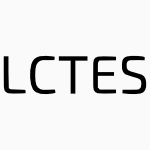 LCTES-2009-HinesPGWT #lookahead
LCTES-2009-HinesPGWT #lookahead- Guaranteeing instruction fetch behavior with a lookahead instruction fetch engine (LIFE) (SRH, YP, PG, DBW, GST), pp. 119–128.
 FASE-2009-AguirreFMMW #alloy #specification #using
FASE-2009-AguirreFMMW #alloy #specification #using- Describing and Analyzing Behaviours over Tabular Specifications Using (Dyn)Alloy (NA, MFF, MMM, TSEM, AW), pp. 155–170.
 ICLP-2009-Simari #modelling #probability #reasoning
ICLP-2009-Simari #modelling #probability #reasoning- Stochastic Reasoning with Models of Agent Behavior (GIS), pp. 538–539.
 VMCAI-2009-BentonF #java #source code
VMCAI-2009-BentonF #java #source code- Mostly-Functional Behavior in Java Programs (WCB, CNF), pp. 29–43.
 VMCAI-2009-GurovH #source code
VMCAI-2009-GurovH #source code- Reducing Behavioural to Structural Properties of Programs with Procedures (DG, MH), pp. 136–150.
 CBSE-2008-KuperbergKR #black box #component #modelling #parametricity #performance #predict #using
CBSE-2008-KuperbergKR #black box #component #modelling #parametricity #performance #predict #using- Performance Prediction for Black-Box Components Using Reengineered Parametric Behaviour Models (MK, KK, RHR), pp. 48–63.
 ECSA-2008-KamalA #design pattern #modelling #using
ECSA-2008-KamalA #design pattern #modelling #using- Modeling Architectural Patterns’ Behavior Using Architectural Primitives (AWK, PA), pp. 164–179.
 ECSA-2008-MosserBR #evolution #process #web #web service
ECSA-2008-MosserBR #evolution #process #web #web service- Web Services Orchestrations Evolution: A Merge Process for Behavioral Evolution (SM, MBF, MR), pp. 35–49.
 ECDL-2008-MastoraMK #case study #query
ECDL-2008-MastoraMK #case study #query- Exploring Query Formulation and Reformulation: A Preliminary Study to Map Users’ Search Behaviour (AM, MM, SK), pp. 427–430.
 JCDL-2008-LoizidesB #towards
JCDL-2008-LoizidesB #towards- The myth of find: user behaviour and attitudes towards the basic search feature (FL, GB), pp. 48–51.
 EDM-2008-BakerC #performance #student
EDM-2008-BakerC #performance #student- Labeling Student Behavior Faster and More Precisely with Text Replays (RSJdB, AMJBdC), pp. 38–47.
 EDM-2008-JeongB #mining #modelling #student
EDM-2008-JeongB #mining #modelling #student- Mining Student Behavior Models in Learning-by-Teaching Environments (HJ, GB), pp. 127–136.
 EDM-2008-MostowZ #comparison #tutorial
EDM-2008-MostowZ #comparison #tutorial- Analytic Comparison of Three Methods to Evaluate Tutorial Behaviors (JM, XZ), pp. 28–37.
 ITiCSE-2008-LevyB #tool support
ITiCSE-2008-LevyB #tool support- Perceived behavior control and its influence on the adoption of software tools (RBBL, MBA), pp. 169–173.
 ICPC-2008-DaltonH #runtime #tool support #visualisation
ICPC-2008-DaltonH #runtime #tool support #visualisation- A Toolkit for Visualizing the Runtime Behavior of TinyOS Applications (ARD, JOH), pp. 43–52.
 ICPC-2008-FonsecaCHP #how #web
ICPC-2008-FonsecaCHP #how #web- How to Interconnect Operational and Behavioral Views of Web Applications (RFCdF, DCdC, PRH, MJVP), pp. 263–267.
 SCAM-2008-GondowKI #analysis #approach #automation #c #named #preprocessor
SCAM-2008-GondowKI #analysis #approach #automation #c #named #preprocessor- TBCppA: A Tracer Approach for Automatic Accurate Analysis of C Preprocessor’s Behaviors (KG, HK, TI), pp. 35–44.
 FM-2008-DovlandJOS #lazy evaluation #type system
FM-2008-DovlandJOS #lazy evaluation #type system- Lazy Behavioral Subtyping (JD, EBJ, OO, MS), pp. 52–67.
 SEFM-2008-Hammal #component
SEFM-2008-Hammal #component- Behavioral Compatibility of Active Components (YH), pp. 372–376.
 SEFM-2008-RuksenasCB #game studies #modelling
SEFM-2008-RuksenasCB #game studies #modelling- Modelling Rational User Behaviour as Games between an Angel and a Demon (RR, PC, AB), pp. 355–364.
 SEFM-2008-SampathRRS #code generation #testing
SEFM-2008-SampathRRS #code generation #testing- Behaviour Directed Testing of Auto-code Generators (PS, ACR, SR, KCS), pp. 191–200.
 AIIDE-2008-BulitkoSGL #modelling
AIIDE-2008-BulitkoSGL #modelling- Modeling Culturally and Emotionally Affected Behavior (VB, SS, JG, MvL).
 AIIDE-2008-DohertyO #communication #evolution
AIIDE-2008-DohertyO #communication #evolution- Effects of Communication on the Evolution of Squad Behaviours (DD, CO).
 AIIDE-2008-PugaGDG
AIIDE-2008-PugaGDG - Dynamic Expansion of Behaviour Trees (GFP, MAGM, BDA, PAGC).
 AIIDE-2008-SchrumM #multi
AIIDE-2008-SchrumM #multi- Constructing Complex NPC Behavior via Multi-Objective Neuroevolution (JS, RM).
 AIIDE-2008-VirmaniKMOR #authoring #game studies #ide #realtime
AIIDE-2008-VirmaniKMOR #authoring #game studies #ide #realtime- An Intelligent IDE for Behavior Authoring in Real-Time Strategy Games (SV, YK, MM0, SO, AR).
 CIG-2008-ThompsonL #network
CIG-2008-ThompsonL #network- Scaling-up behaviours in EvoTanks: Applying subsumption principles to artificial neural networks (TT, JL), pp. 159–166.
 GT-VC-2007-ErmelE08 #animation
GT-VC-2007-ErmelE08 #animation- Behavior-Preserving Simulation-to-Animation Model and Rule Transformations (CE, HE), pp. 55–74.
 ICGT-2008-Dang #graph grammar #ocl #validation
ICGT-2008-Dang #graph grammar #ocl #validation- Triple Graph Grammars and OCL for Validating System Behavior (DHD), pp. 481–483.
 ICGT-2008-RangelLKEB #refactoring #using
ICGT-2008-RangelLKEB #refactoring #using- Behavior Preservation in Model Refactoring Using DPO Transformations with Borrowed Contexts (GR, LL, BK, HE, PB), pp. 242–256.
 CHI-2008-HayesGAT #named
CHI-2008-HayesGAT #named- CareLog: a selective archiving tool for behavior management in schools (GRH, LMG, GDA, KNT), pp. 685–694.
 CHI-2008-KramerR #modelling #word
CHI-2008-KramerR #modelling #word- Word usage and posting behaviors: modeling blogs with unobtrusive data collection methods (ADIK, KR), pp. 1125–1128.
 CHI-2008-LawranceBBR #maintenance #using
CHI-2008-LawranceBBR #maintenance #using- Using information scent to model the dynamic foraging behavior of programmers in maintenance tasks (JL, RKEB, MMB, KR), pp. 1323–1332.
 CHI-2008-LindleyCB #experience #game studies #social
CHI-2008-LindleyCB #experience #game studies #social- Stirring up experience through movement in game play: effects on engagement and social behaviour (SEL, JLC, NB), pp. 511–514.
 CHI-2008-SalminenSLRSRRE
CHI-2008-SalminenSLRSRRE - Emotional and behavioral responses to haptic stimulation (KS, VS, JL, JR, RS, RR, JR, GEE), pp. 1555–1562.
 ICEIS-HCI-2008-GeczyIAH #enterprise #information management #network
ICEIS-HCI-2008-GeczyIAH #enterprise #information management #network- Complex User Behavioral Networks at Enterprise Information Systems (PG, NI, SA, KH), pp. 233–239.
 ICEIS-ISAS1-2008-LanoC #refinement #semantics #state machine
ICEIS-ISAS1-2008-LanoC #refinement #semantics #state machine- Semantics and Refinement of Behavior State Machines (KL, DC), pp. 42–49.
 CIKM-2008-LoekitoB #mining
CIKM-2008-LoekitoB #mining- Mining influential attributes that capture class and group contrast behaviour (EL, JB), pp. 971–980.
 CIKM-2008-ParikhS #query #semantics
CIKM-2008-ParikhS #query #semantics- Inferring semantic query relations from collective user behavior (NP, NS), pp. 349–358.
 ICPR-2008-AzoughDMH #modelling #monitoring #personalisation
ICPR-2008-AzoughDMH #modelling #monitoring #personalisation- Intuitive event modeling for personalized behavior monitoring (AA, AD, FDM, MSH), pp. 1–4.
 ICPR-2008-DarbyLC
ICPR-2008-DarbyLC - Behaviour based particle filtering for human articulated motion tracking (JD, BL, NPC), pp. 1–4.
 ICPR-2008-LablackD #analysis
ICPR-2008-LablackD #analysis- Analysis of human behaviour in front of a target scene (AL, CD), pp. 1–4.
 KDD-2008-MeloAL #metric #network #predict #question
KDD-2008-MeloAL #metric #network #predict #question- Can complex network metrics predict the behavior of NBA teams? (POSVdM, VAFA, AAFL), pp. 695–703.
 KR-2008-SardinaPG #composition
KR-2008-SardinaPG #composition- Behavior Composition in the Presence of Failure (SS, FP, GDG), pp. 640–650.
 SEKE-2008-KimBBSA #named #using #visualisation
SEKE-2008-KimBBSA #named #using #visualisation- VisRFID: Visualizing Customer Behavior in Geotemporal Space Using RFID Technology (BK, KB, MB, RS, BA), pp. 422–427.
 SEKE-2008-PengDZ #correctness #design pattern #implementation #verification
SEKE-2008-PengDZ #correctness #design pattern #implementation #verification- Verifying Behavioral Correctness of Design Pattern Implementation (TP, JD, YZ), pp. 454–459.
 SIGIR-2008-Shah #collaboration #comprehension #implementation
SIGIR-2008-Shah #collaboration #comprehension #implementation- Understanding system implementation and user behavior in a collaborative information seeking environment (CS), p. 896.
 ECMDA-FA-2008-EngelsKRSSW #model transformation #process #towards #uml
ECMDA-FA-2008-EngelsKRSSW #model transformation #process #towards #uml- From UML Activities to TAAL — Towards Behaviour-Preserving Model Transformations (GE, AK, AR, MS, CS, HW), pp. 94–109.
 MoDELS-2008-GoldsbyC #adaptation #automation #generative #modelling #nondeterminism
MoDELS-2008-GoldsbyC #adaptation #automation #generative #modelling #nondeterminism- Automatically Generating Behavioral Models of Adaptive Systems to Address Uncertainty (HG, BHCC), pp. 568–583.
 MoDELS-2008-JurackLMT #consistency #diagrams #modelling #process
MoDELS-2008-JurackLMT #consistency #diagrams #modelling #process- Sufficient Criteria for Consistent Behavior Modeling with Refined Activity Diagrams (SJ, LL, KM, GT), pp. 341–355.
 MoDELS-2008-LuongLC #consistency #development #implementation #incremental #modelling
MoDELS-2008-LuongLC #consistency #development #implementation #incremental #modelling- Implementation of the Conformance Relation for Incremental Development of Behavioural Models (HVL, TL, ALC), pp. 356–370.
 MoDELS-2008-OberCL #composition #modelling #slicing #using
MoDELS-2008-OberCL #composition #modelling #slicing #using- Behavioral Modelling and Composition of Object Slices Using Event Observation (IO, BC, YL), pp. 219–233.
 MoDELS-2008-GoldsbyC #adaptation #automation #generative #modelling #nondeterminism
MoDELS-2008-GoldsbyC #adaptation #automation #generative #modelling #nondeterminism- Automatically Generating Behavioral Models of Adaptive Systems to Address Uncertainty (HG, BHCC), pp. 568–583.
 MoDELS-2008-JurackLMT #consistency #diagrams #modelling #process
MoDELS-2008-JurackLMT #consistency #diagrams #modelling #process- Sufficient Criteria for Consistent Behavior Modeling with Refined Activity Diagrams (SJ, LL, KM, GT), pp. 341–355.
 MoDELS-2008-LuongLC #consistency #development #implementation #incremental #modelling
MoDELS-2008-LuongLC #consistency #development #implementation #incremental #modelling- Implementation of the Conformance Relation for Incremental Development of Behavioural Models (HVL, TL, ALC), pp. 356–370.
 MoDELS-2008-OberCL #composition #modelling #slicing #using
MoDELS-2008-OberCL #composition #modelling #slicing #using- Behavioral Modelling and Composition of Object Slices Using Event Observation (IO, BC, YL), pp. 219–233.
 QAPL-2008-ZhangZ #pseudo
QAPL-2008-ZhangZ #pseudo- A Behavioural Pseudometric based on λ-Bisimilarity (JZ, ZZ), pp. 115–127.
 SAS-2008-NanzNN #abstraction #concurrent
SAS-2008-NanzNN #abstraction #concurrent- Modal Abstractions of Concurrent Behaviour (SN, FN, HRN), pp. 159–173.
 FSE-2008-FischbeinU #modelling #on the
FSE-2008-FischbeinU #modelling #on the- On correct and complete strong merging of partial behaviour models (DF, SU), pp. 297–307.
 ICSE-2008-KoM #debugging #why
ICSE-2008-KoM #debugging #why- Debugging reinvented: asking and answering why and why not questions about program behavior (AJK, BAM), pp. 301–310.
 ICSE-2008-LorenzoliMP #automation #generative #modelling
ICSE-2008-LorenzoliMP #automation #generative #modelling- Automatic generation of software behavioral models (DL, LM, MP), pp. 501–510.
 SAC-2008-AdnaneSBM #detection #reasoning #trust
SAC-2008-AdnaneSBM #detection #reasoning #trust- Autonomic trust reasoning enables misbehavior detection in OLSR (AA, RTdSJ, CB, LM), pp. 2006–2013.
 SAC-2008-AtallaMAGA #peer-to-peer #quality #web
SAC-2008-AtallaMAGA #peer-to-peer #quality #web- Analyzing the impact of churn and malicious behavior on the quality of peer-to-peer web search (FA, DM, JMA, MAG, VA), pp. 1137–1144.
 SAC-2008-AtoofianB #embedded #latency #memory management
SAC-2008-AtoofianB #embedded #latency #memory management- Exploiting program cyclic behavior to reduce memory latency in embedded processors (EA, AB), pp. 1482–1486.
 SAC-2008-DirgahayuQS #design #enterprise #integration #interactive
SAC-2008-DirgahayuQS #design #enterprise #integration #interactive- Designing interaction behaviour in service-oriented enterprise application integration (TD, DACQ, MvS), pp. 1048–1054.
 SAC-2008-OrdinezDS #approach #scheduling
SAC-2008-OrdinezDS #approach #scheduling- A behavior priority driven approach for resource reservation scheduling (LO, DD, RMS), pp. 315–319.
 SLE-2008-RiveraGLV #maude #modelling #rule-based #semantics #visual notation
SLE-2008-RiveraGLV #maude #modelling #rule-based #semantics #visual notation- Analyzing Rule-Based Behavioral Semantics of Visual Modeling Languages with Maude (JER, EG, JdL, AV), pp. 54–73.
 ASPLOS-2008-BallapuramSL #multi #semantics
ASPLOS-2008-BallapuramSL #multi #semantics- Exploiting access semantics and program behavior to reduce snoop power in chip multiprocessors (CSB, AS, HHSL), pp. 60–69.
 CASE-2008-HeribanTGF
CASE-2008-HeribanTGF - Improving rotation behaviour of robotic structures for micro-assembly (DH, AT, MG, GF), pp. 983–988.
 CASE-2008-NieIYTOM #analysis #performance #video
CASE-2008-NieIYTOM #analysis #performance #video- High-speed video analysis of laboratory rats behaviors in forced swim test (YN, II, KY, TT, KO, HM), pp. 206–211.
 DAC-2008-HaubeltSKM #agile #automation #design #modelling #named #prototype
DAC-2008-HaubeltSKM #agile #automation #design #modelling #named #prototype- SystemCoDesigner: automatic design space exploration and rapid prototyping from behavioral models (CH, TS, JK, MM), pp. 580–585.
 DAC-2008-PotkonjakK
DAC-2008-PotkonjakK - (Bio)-behavioral CAD (MP, FK), pp. 351–352.
 DATE-2008-AliWWB #approach #modelling #performance
DATE-2008-AliWWB #approach #modelling #performance- A New Approach for Combining Yield and Performance in Behavioural Models for Analogue Integrated Circuits (SA, RW, PRW, ADB), pp. 152–157.
 PDP-2008-AggarwalAFTM #modelling #simulation
PDP-2008-AggarwalAFTM #modelling #simulation- Reflecting P2P User Behaviour Models in a Simulation Environment (VA, OA, AF, RT, SM), pp. 516–523.
 PDP-2008-AldinucciCDVKDLT #component #grid
PDP-2008-AldinucciCDVKDLT #component #grid- Behavioural Skeletons in GCM: Autonomic Management of Grid Components (MA, SC, MD, MV, PK, PD, DL, NT), pp. 54–63.
 FASE-2008-AlrajehRU #modelling #using
FASE-2008-AlrajehRU #modelling #using- Deriving Non-zeno Behavior Models from Goal Models Using ILP (DA, AR, SU), pp. 1–15.
 FASE-2008-MellitiPM #adaptation #automation #composition #distributed #semantics
FASE-2008-MellitiPM #adaptation #automation #composition #distributed #semantics- Distributed Behavioural Adaptation for the Automatic Composition of Semantic Services (TM, PP, SBM), pp. 146–162.
 ICLP-2008-ArandaPRV #concurrent #constraints #probability #programming
ICLP-2008-ArandaPRV #concurrent #constraints #probability #programming- Stochastic Behavior and Explicit Discrete Time in Concurrent Constraint Programming (JA, JAP, CR, FDV), pp. 682–686.
 CBSE-2007-SeryP #component #composition #slicing #specification
CBSE-2007-SeryP #component #composition #slicing #specification- Slicing of Component Behavior Specification with Respect to Their Composition (OS, FP), pp. 189–202.
 HT-2007-BrownBFE
HT-2007-BrownBFE - Revealing the hidden rationality of user browsing behaviour (EJB, TJB, TF, CvdE), pp. 85–94.
 HT-2007-DoerrDD #traversal #web
HT-2007-DoerrDD #traversal #web- Simplifying web traversals by recognizing behavior patterns (CD, DvD, AD), pp. 105–114.
 JCDL-2007-ZhouS #design #library
JCDL-2007-ZhouS #design #library- Information behavior of small groups: implications for design of digital libraries (NZ, GS), pp. 183–184.
 VLDB-2007-RomanK #concurrent #logic #reasoning #semantics #transaction #web #web service
VLDB-2007-RomanK #concurrent #logic #reasoning #semantics #transaction #web #web service- Reasoning about the Behavior of Semantic Web Services with Concurrent Transaction Logic (DR, MK), pp. 627–638.
 CSEET-2007-FrezzaT #developer #testing
CSEET-2007-FrezzaT #developer #testing- Testing as a Mental Discipline: Practical Methods for Affecting Developer Behavior (STF, MHT), pp. 355–356.
 ICALP-2007-KobayashiS #calculus #type system
ICALP-2007-KobayashiS #calculus #type system- Undecidability of 2-Label BPP Equivalences and Behavioral Type Systems for the π -Calculus (NK, TS), pp. 740–751.
 IFM-2007-CavarraW #modelling #specification
IFM-2007-CavarraW #modelling #specification- Behavioural Specifications from Class Models (AC, JW), pp. 118–137.
 IFM-2007-ColvinGW #probability
IFM-2007-ColvinGW #probability- Probabilistic Timed Behavior Trees (RC, LG, KW), pp. 156–175.
 SEFM-2007-CamaraSC #adaptation #composition #runtime #transaction
SEFM-2007-CamaraSC #adaptation #composition #runtime #transaction- Run-time Composition and Adaptation of Mismatching Behavioural Transactions (JC, GS, CC), pp. 381–390.
 SEFM-2007-Hameurlain #component #flexibility #protocol #specification
SEFM-2007-Hameurlain #component #flexibility #protocol #specification- Flexible Behavioural Compatibility and Substitutability for Component Protocols: A Formal Specification (NH), pp. 391–400.
 SFM-2007-Bernardo #markov #overview
SFM-2007-Bernardo #markov #overview- A Survey of Markovian Behavioral Equivalences (MB), pp. 180–219.
 AIIDE-2007-CutumisuSSW
AIIDE-2007-CutumisuSSW - Motivational Ambient and Latent Behaviors in Computer RPGs (MC, DS, JS, KW), pp. 74–76.
 AIIDE-2007-CutumisuSSWOSS
AIIDE-2007-CutumisuSSWOSS - A Demonstration of ScriptEase Motivational Ambient and Latent Behaviors for Computer RPGs (MC, DS, JS, KW, CO, JS, AS), pp. 106–107.
 CIG-2007-FinkDA #game studies #machine learning #using
CIG-2007-FinkDA #game studies #machine learning #using- Extracting NPC behavior from computer games using computer vision and machine learning techniques (AF, JD, JA), pp. 24–31.
 CIG-2007-SeredynskiBK #ad hoc #evolution #game studies #modelling #network #using
CIG-2007-SeredynskiBK #ad hoc #evolution #game studies #modelling #network #using- Modelling the Evolution of Cooperative Behavior in Ad Hoc Networks using a Game Based Model (MS, PB, MAK), pp. 96–103.
 DiGRA-2007-DrennanKRD #design #game studies
DiGRA-2007-DrennanKRD #design #game studies- Designing a Game to Model Consumer Misbehavior (PD, DAK, RRB, JD).
 DiGRA-2007-IhoriSSY #game studies #student #video
DiGRA-2007-IhoriSSY #game studies #student #video- Effect of Video Games on Children's Aggressive Behavior and Pro-social Behavior: A Panel Study with Elementary School Students (NI, AS, AS, SY).
 DiGRA-2007-Schultheiss #experience #game studies
DiGRA-2007-Schultheiss #experience #game studies- Long-term motivations to play MMOGs: A longitudinal study on motivations, experience and behavior (DS).
 CHI-2007-Baker #comprehension #modelling #student
CHI-2007-Baker #comprehension #modelling #student- Modeling and understanding students’ off-task behavior in intelligent tutoring systems (RSJdB), pp. 1059–1068.
 DHM-2007-OhS #comprehension #nondeterminism
DHM-2007-OhS #comprehension #nondeterminism- Understanding RUTH: Creating Believable Behaviors for a Virtual Human Under Uncertainty (IO, MS), pp. 443–452.
 HCI-AS-2007-KoJK #comprehension #internet #mobile
HCI-AS-2007-KoJK #comprehension #internet #mobile- Understanding Influence of Mobile Internet Services on Life Behavior of Mobile Users (SMK, YGJ, DK), pp. 944–953.
 HCI-AS-2007-LiuLS #comprehension #design #game studies #online #what
HCI-AS-2007-LiuLS #comprehension #design #game studies #online #what- What Makes Game Players Want to Play More? A Mathematical and Behavioral Understanding of Online Game Design (DL, XL, RS), pp. 284–293.
 HCI-AS-2007-MorDML #approach
HCI-AS-2007-MorDML #approach- A Three-Level Approach for Analyzing User Behavior in Ongoing Relationships (EM, MGD, JM, SL), pp. 971–980.
 HCI-AS-2007-TanGT #online
HCI-AS-2007-TanGT #online- An Investigation of Online Group-Buying Institution and Buyer Behavior (CHT, KYG, HHT), pp. 124–131.
 HCI-IDU-2007-GiersichFFKRS #approach #modelling #recognition #towards
HCI-IDU-2007-GiersichFFKRS #approach #modelling #recognition #towards- Towards an Integrated Approach for Task Modeling and Human Behavior Recognition (MG, PF, GF, TK, DR, HS), pp. 1109–1118.
 HCI-IPT-2007-KimC #comprehension
HCI-IPT-2007-KimC #comprehension- Understanding Camera Phone Imaging: Motivations, Behaviors and Meanings (GK, WC), pp. 374–383.
 HCI-IPT-2007-ZaharakisK #interactive #social #ubiquitous
HCI-IPT-2007-ZaharakisK #interactive #social #ubiquitous- Social Intelligence as the Means for Achieving Emergent Interactive Behaviour in Ubiquitous Computing Environments (IDZ, ADK), pp. 1018–1029.
 HCI-MIE-2007-LeeP07a #generative #speech #synthesis
HCI-MIE-2007-LeeP07a #generative #speech #synthesis- Customized Message Generation and Speech Synthesis in Response to Characteristic Behavioral Patterns of Children (HJL, JCP), pp. 114–123.
 HCI-MIE-2007-SerbanTM #interface #learning #predict
HCI-MIE-2007-SerbanTM #interface #learning #predict- A Learning Interface Agent for User Behavior Prediction (GS, AT, GSM), pp. 508–517.
 HCI-MIE-2007-TakashimaT #low level #video
HCI-MIE-2007-TakashimaT #low level #video- Sharing Video Browsing Style by Associating Browsing Behavior with Low-Level Features of Videos (AT, YT), pp. 518–526.
 HCI-MIE-2007-YecanSBC #multimodal
HCI-MIE-2007-YecanSBC #multimodal- Tracing Users’ Behaviors in a Multimodal Instructional Material: An Eye-Tracking Study (EY, ES, BB, KÇ), pp. 755–762.
 HIMI-IIE-2007-Liu07a #assessment #industrial
HIMI-IIE-2007-Liu07a #assessment #industrial- Economic Assessment of Industrial Accidents Caused by Abnormal Behaviors (HL), pp. 1067–1071.
 HIMI-IIE-2007-SatoA #analysis
HIMI-IIE-2007-SatoA #analysis- Analysis of Naturalistic Driving Behavior While Approaching an Intersection and Implications for Route Guidance Presentation (TS, MA), pp. 618–627.
 HIMI-IIE-2007-ZhangC #analysis #collaboration
HIMI-IIE-2007-ZhangC #analysis #collaboration- A Communicative Behaviour Analysis of Art-Technology Collaboration (YZ, LC), pp. 212–221.
 HIMI-MTT-2007-YooYL #design #human-computer
HIMI-MTT-2007-YooYL #design #human-computer- Information Behaviors of HCI Professionals: Design of Intuitive Reference System for Technologies (EY, MY, YL), pp. 237–246.
 OCSC-2007-YehWH #case study #online
OCSC-2007-YehWH #case study #online- A Study of Emotional and Rational Purchasing Behavior for Online Shopping (LY, EMYW, SLH), pp. 222–227.
 OCSC-2007-ZhouS #collaboration #community #towards
OCSC-2007-ZhouS #collaboration #community #towards- Towards Building a Math Discourse Community: Investigating Collaborative Information Behavior (NZ, GS), pp. 509–518.
 CAiSE-2007-DeckerW #consistency #integration #process
CAiSE-2007-DeckerW #consistency #integration #process- Behavioral Consistency for B2B Process Integration (GD, MW), pp. 81–95.
 CAiSE-2007-LiuBW #modelling #using
CAiSE-2007-LiuBW #modelling #using- Modeling Business Contexture and Behavior Using Business Artifacts (RL, KB, FYW), pp. 324–339.
 EDOC-2007-LiningtonL #approach #modelling #security #using
EDOC-2007-LiningtonL #approach #modelling #security #using- Incorporating Security Behaviour into Business Models Using a Model Driven Approach (PFL, PL), pp. 405–413.
 EDOC-2007-RiveraV #modelling
EDOC-2007-RiveraV #modelling- Adding Behavior to Models (JER, AV), pp. 169–180.
 ICEIS-EIS-2007-MoralesTA #consistency #modelling #semantics #uml
ICEIS-EIS-2007-MoralesTA #consistency #modelling #semantics #uml- Checking Behavioural Consistency of UML-RT Models through Trace-Based Semantics (LEMM, MICT, KBA), pp. 205–211.
 ICEIS-SAIC-2007-BelbezeS #web #web service
ICEIS-SAIC-2007-BelbezeS #web #web service- Which Contribution of the Web Services in the Improvement of Web Searching? A Behavioural Study of the Net Surfers (CB, CSD), pp. 129–137.
 ECIR-2007-SandersonD
ECIR-2007-SandersonD - Examining Repetition in User Search Behavior (MS, STD), pp. 597–604.
 KDD-2007-AsurPU #framework #graph #interactive
KDD-2007-AsurPU #framework #graph #interactive- An event-based framework for characterizing the evolutionary behavior of interaction graphs (SA, SP, DU), pp. 913–921.
 SIGIR-2007-Huggett #modelling
SIGIR-2007-Huggett #modelling- Information-behaviour modeling with external cues (MH), p. 920.
 SIGIR-2007-WhiteM #query
SIGIR-2007-WhiteM #query- Investigating the querying and browsing behavior of advanced search engine users (RWW, DM), pp. 255–262.
 MoDELS-2007-KienzleDV #design #game studies #modelling
MoDELS-2007-KienzleDV #design #game studies #modelling- Model-Based Design of Computer-Controlled Game Character Behavior (JK, AD, HV), pp. 650–665.
 MoDELS-2007-KienzleDV #design #game studies #modelling
MoDELS-2007-KienzleDV #design #game studies #modelling- Model-Based Design of Computer-Controlled Game Character Behavior (JK, AD, HV), pp. 650–665.
 ECOOP-2007-CottenierBE #implementation #specification
ECOOP-2007-CottenierBE #implementation #specification- Joinpoint Inference from Behavioral Specification to Implementation (TC, AvdB, TE), pp. 476–500.
 PEPM-2007-RooverDBND #logic #query #similarity #source code #using
PEPM-2007-RooverDBND #logic #query #similarity #source code #using- Behavioral similarity matching using concrete source code templates in logic queries (CDR, TD, JB, CN, LD), pp. 92–101.
 PLDI-2007-DingSKTHZ #parallel
PLDI-2007-DingSKTHZ #parallel- Software behavior oriented parallelization (CD, XS, KK, CT, RH, CZ), pp. 223–234.
 QAPL-2007-Argent-KatwalaB #network
QAPL-2007-Argent-KatwalaB #network- PEPA Queues: Capturing Customer Behaviour in Queueing Networks (AAK, JTB), pp. 3–25.
 REFSQ-2007-SorbyN #framework #towards
REFSQ-2007-SorbyN #framework #towards- Towards a Tomographic Framework for Structured Observation of Communicative Behaviour in Hospital Wards (IDS, ØN), pp. 262–276.
 ASE-2007-MateescuPS #adaptation #algebra #component #composition #encoding #process
ASE-2007-MateescuPS #adaptation #algebra #component #composition #encoding #process- Behavioral adaptation of component compositions based on process algebra encodings (RM, PP, GS), pp. 385–388.
 ESEC-FSE-2007-ChristodorescuJK #mining #specification
ESEC-FSE-2007-ChristodorescuJK #mining #specification- Mining specifications of malicious behavior (MC, SJ, CK), pp. 5–14.
 ESEC-FSE-2007-FantechiG #product line
ESEC-FSE-2007-FantechiG #product line- A behavioural model for product families (AF, SG), pp. 521–524.
 ESEC-FSE-2007-KosterK #test coverage #testing
ESEC-FSE-2007-KosterK #test coverage #testing- State coverage: a structural test adequacy criterion for behavior checking (KK, DCK), pp. 541–544.
 ICSE-2007-UchitelBC #synthesis
ICSE-2007-UchitelBC #synthesis- Behaviour Model Synthesis from Properties and Scenarios (SU, GB, MC), pp. 34–43.
 SAC-2007-GustafssonTDH #approach #aspect-oriented #embedded #evolution #performance
SAC-2007-GustafssonTDH #approach #aspect-oriented #embedded #evolution #performance- Engineering active behavior of embedded software to improve performance and evolution: an aspect-oriented approach (TG, AT, YD, JH), pp. 673–679.
 SAC-2007-Kofron #component #protocol #using
SAC-2007-Kofron #component #protocol #using- Checking software component behavior using behavior protocols and spin (JK), pp. 1513–1517.
 CASE-2007-00010DAR #feature model #realtime
CASE-2007-00010DAR #feature model #realtime- A Micropositioning System with Real-Time Feature Extraction Capability for Quantifying C. elegans Locomotive Behavior (WW, YS, SJD, MA, PJR), pp. 243–248.
 CASE-2007-IshiiNYOM #quantifier #realtime
CASE-2007-IshiiNYOM #quantifier #realtime- Real-time and Long-time Quantification of Behavior of Laboratory Mice Scratching (II, YN, KY, KO, HM), pp. 628–633.
 CASE-2007-KobetskiRAF
CASE-2007-KobetskiRAF - Minimization of Expected Cycle Time in Manufacturing Cells with Uncontrollable Behavior (AK, JR, KÅ, MF), pp. 14–19.
 CASE-2007-LeungG #locality #multi
CASE-2007-LeungG #locality #multi- Multi-Robot Localization and Mapping Strategy: Utilizing Behavior Based Dynamic Tree Structure and Observer-explorer Routine (KKKL, GG), pp. 881–886.
 DAC-2007-BogdanM
DAC-2007-BogdanM - Quantum-Like Effects in Network-on-Chip Buffers Behavior (PB, RM), pp. 266–267.
 DAC-2007-YangHH #automation #design #verification
DAC-2007-YangHH #automation #design #verification- Automatic Verification of External Interrupt Behaviors for Microprocessor Design (FCY, WKH, IJH), pp. 896–901.
 DATE-2007-BarajasCCMGCBI #interactive #modelling #optimisation
DATE-2007-BarajasCCMGCBI #interactive #modelling #optimisation- Interactive presentation: Behavioral modeling of delay-locked loops and its application to jitter optimization in ultra wide-band impulse radio systems (EB, RC, DC, DM, JLG, IC, SB, MI), pp. 1430–1435.
 DATE-2007-ChenSN #composition #semantics #specification
DATE-2007-ChenSN #composition #semantics #specification- Compositional specification of behavioral semantics (KC, JS, SN), pp. 906–911.
 DATE-2007-IndrusiakTG #execution #interactive #modelling #specification #uml
DATE-2007-IndrusiakTG #execution #interactive #modelling #specification #uml- Interactive presentation: Executable system-level specification models containing UML-based behavioral patterns (LSI, AT, MG), pp. 301–306.
 DATE-2007-VermaHR #automation #functional #generative #interactive #modelling
DATE-2007-VermaHR #automation #functional #generative #interactive #modelling- Interactive presentation: Automatic generation of functional coverage models from behavioral verilog descriptions (SV, IGH, KR), pp. 900–905.
 HPDC-2007-MeeheanL #component #distributed #middleware
HPDC-2007-MeeheanL #component #distributed #middleware- Environmentally responsible middleware: : an altruistic behavior model for distributed middleware components (JM, ML), pp. 209–210.
 LCTES-2007-WaltherHN #embedded #realtime
LCTES-2007-WaltherHN #embedded #realtime- Analyzing the real-time behaviour of deeply embedded event driven systems (KW, RH, JN), pp. 149–151.
 SOSP-2007-KicimanL #framework #monitoring #named #platform #web
SOSP-2007-KicimanL #framework #monitoring #named #platform #web- AjaxScope: a platform for remotely monitoring the client-side behavior of web 2.0 applications (EK, VBL), pp. 17–30.
 FASE-2007-BurdyHP #bytecode #design #interface #java #specification
FASE-2007-BurdyHP #bytecode #design #interface #java #specification- Preliminary Design of BML: A Behavioral Interface Specification Language for Java Bytecode (LB, MH, MP), pp. 215–229.
 FoSSaCS-2007-BreugelSW #approximate #probability #pseudo
FoSSaCS-2007-BreugelSW #approximate #probability #pseudo- Approximating a Behavioural Pseudometric Without Discount for Probabilistic Systems (FvB, BS, JW), pp. 123–137.
 CAV-2007-LeavensKP #composition #functional #java #ml #specification #tutorial #verification
CAV-2007-LeavensKP #composition #functional #java #ml #specification #tutorial #verification- A JML Tutorial: Modular Specification and Verification of Functional Behavior for Java (GTL, JRK, EP), p. 37.
 CBSE-2006-AttieLPC #component #design #explosion #verification
CBSE-2006-AttieLPC #component #design #explosion #verification- Behavioral Compatibility Without State Explosion: Design and Verification of a Component-Based Elevator Control System (PCA, DHL, AP, HC), pp. 33–49.
 QoSA-2006-DuzbayevP #predict #runtime
QoSA-2006-DuzbayevP #predict #runtime- Runtime Prediction of Queued Behaviour (ND, IP), pp. 78–94.
 HT-2006-TzagarakisVK #design
HT-2006-TzagarakisVK #design- Supporting the design of behaviors in Callimachus (MT, MV, NK), pp. 115–118.
 CSEET-2006-FrezzaT #student #testing
CSEET-2006-FrezzaT #student #testing- Testing as a Mental Discipline: Practical Methods for Affecting Student Behavior (STF, MHT), p. 241.
 ICPC-2006-Hamou-LhadjL #comprehension #scalability
ICPC-2006-Hamou-LhadjL #comprehension #scalability- Summarizing the Content of Large Traces to Facilitate the Understanding of the Behaviour of a Software System (AHL, TCL), pp. 181–190.
 ICPC-2006-KoskinenKS #approach #comprehension
ICPC-2006-KoskinenKS #approach #comprehension- Profile-Based Approach to Support Comprehension of Software Behavior (JK, MK, TS), pp. 212–224.
 ICPC-2006-RooverMGGD #approach #documentation #lightweight #verification
ICPC-2006-RooverMGGD #approach #documentation #lightweight #verification- An Approach to High-Level Behavioral Program Documentation Allowing Lightweight Verification (CDR, IM, KG, KG, TD), pp. 202–211.
 FM-2006-BrunetCU #model merging
FM-2006-BrunetCU #model merging- Properties of Behavioural Model Merging (GB, MC, SU), pp. 98–114.
 SEFM-2006-MarcheR #java #transaction #verification
SEFM-2006-MarcheR #java #transaction #verification- Verification of JAVA CARD Applets Behavior with Respect to Transactions and Card Tears (CM, NR), pp. 137–146.
 AIIDE-2006-CutumisuSSWOSS #game studies #generative
AIIDE-2006-CutumisuSSWOSS #game studies #generative- A Demonstration of ScriptEase Ambient and PC-Interactive Behavior Generation for Computer Role-Playing Games (MC, DS, JS, KW, CO, JS, AS), pp. 141–142.
 CIG-2006-OlenderskiNL #architecture
CIG-2006-OlenderskiNL #architecture- A Behavior-Based Architecture for Realistic Autonomous Ship Control (AO, MNN, SJL), pp. 148–155.
 CIG-2006-Saund
CIG-2006-Saund - Capturing The Information Conveyed By Opponents' Betting Behavior in Poker (ES), pp. 126–133.
 CHI-2006-EngLTCHV #adaptation #automation #generative #performance #predict
CHI-2006-EngLTCHV #adaptation #automation #generative #performance #predict- Generating automated predictions of behavior strategically adapted to specific performance objectives (KE, RLL, IT, AC, AH, AHV), pp. 621–630.
 CHI-2006-KamvarB #case study #mobile #scalability
CHI-2006-KamvarB #case study #mobile #scalability- A large scale study of wireless search behavior: Google mobile search (MK, SB), pp. 701–709.
 CHI-2006-PearsonHBPN #adaptation #how #human-computer #word
CHI-2006-PearsonHBPN #adaptation #how #human-computer #word- Adaptive language behavior in HCI: how expectations and beliefs about a system affect users’ word choice (JP, JH, HPB, MJP, CN), pp. 1177–1180.
 CHI-2006-RafflePIL #game studies
CHI-2006-RafflePIL #game studies- Beyond record and play: backpacks: tangible modulators for kinetic behavior (HR, AJP, HI, JL), pp. 681–690.
 CSCW-2006-RazaviI #information management #learning
CSCW-2006-RazaviI #information management #learning- A grounded theory of information sharing behavior in a personal learning space (MNR, LI), pp. 459–468.
 CAiSE-2006-AckermannT #component #library #ocl #specification
CAiSE-2006-AckermannT #component #library #ocl #specification- A Library of OCL Specification Patterns for Behavioral Specification of Software Components (JA, KT), pp. 255–269.
 ICEIS-ISAS-2006-ChengX #approach #concurrent #detection #formal method #online
ICEIS-ISAS-2006-ChengX #approach #concurrent #detection #formal method #online- A Formal Approach to Detecting Shilling Behaviors in Concurrent Online Auctions (YTC, HX), pp. 375–381.
 ICEIS-ISAS-2006-SubramaniamKG #evolution #predict #process
ICEIS-ISAS-2006-SubramaniamKG #evolution #predict #process- Business Processes: Behavior Prediction and Capturing Reasons for Evolution (SS, VK, DG), pp. 3–10.
 ECIR-2006-WenRB #online #topic #using
ECIR-2006-WenRB #online #topic #using- The Effects on Topic Familiarity on Online Search Behaviour and Use of Relevance Criteria (LW, IR, PB), pp. 456–459.
 ICPR-v1-2006-CarterYF #approach #markov #recognition
ICPR-v1-2006-CarterYF #approach #markov #recognition- A Combined Bayesian Markovian Approach for Behaviour Recognition (NLC, DPY, JMF), pp. 761–764.
 ICPR-v1-2006-GormanTBH #game studies #interactive
ICPR-v1-2006-GormanTBH #game studies #interactive- Bayesian Imitation of Human Behavior in Interactive Computer Games (BG, CT, CB, MH), pp. 1244–1247.
 ICPR-v1-2006-GunesP #analysis #automation #database #gesture
ICPR-v1-2006-GunesP #analysis #automation #database #gesture- A Bimodal Face and Body Gesture Database for Automatic Analysis of Human Nonverbal Affective Behavior (HG, MP), pp. 1148–1153.
 ICPR-v1-2006-LiHWW #image #modelling #recognition
ICPR-v1-2006-LiHWW #image #modelling #recognition- Behavior Modeling and Recognition Based on Space-Time Image Features (HL, ZH, YW, FW), pp. 243–246.
 ICPR-v1-2006-ThurauHB #classification #game studies #video
ICPR-v1-2006-ThurauHB #classification #game studies #video- Classification of Team Behaviors in Sports Video Games (CT, TH, CB), pp. 1188–1191.
 ICPR-v1-2006-XuSL #adaptation #detection #monitoring
ICPR-v1-2006-XuSL #adaptation #detection #monitoring- Tree Based Behavior Monitoring for Adaptive Fraud Detection (JX, AHS, QL), pp. 1208–1211.
 ICPR-v3-2006-DuongPBV #exponential #markov #modelling #product line #recognition
ICPR-v3-2006-DuongPBV #exponential #markov #modelling #product line #recognition- Human Behavior Recognition with Generic Exponential Family Duration Modeling in the Hidden Semi-Markov Model (TVD, DQP, HHB, SV), pp. 202–207.
 ICPR-v3-2006-Law-ToGBB #detection #video
ICPR-v3-2006-Law-ToGBB #detection #video- Local Behaviours Labelling for Content Based Video Copy Detection (JLT, VGB, OB, NB), pp. 232–235.
 ICPR-v4-2006-YamadaKNT #identification
ICPR-v4-2006-YamadaKNT #identification- Hipprint Person Identification and Behavior Analys (MY, MK, HN, JT), pp. 533–536.
 KDD-2006-AgichteinZ #identification #mining #web
KDD-2006-AgichteinZ #identification #mining #web- Identifying “best bet” web search results by mining past user behavior (EA, ZZ), pp. 902–908.
 SIGIR-2006-AgichteinBD #ranking #web
SIGIR-2006-AgichteinBD #ranking #web- Improving web search ranking by incorporating user behavior information (EA, EB, STD), pp. 19–26.
 SIGIR-2006-FreundT #enterprise
SIGIR-2006-FreundT #enterprise- Enterprise search behaviour of software engineers (LF, EGT), pp. 645–646.
 SIGIR-2006-MurrayLC #modelling #predict #query
SIGIR-2006-MurrayLC #modelling #predict #query- Action modeling: language models that predict query behavior (GCM, JJL, AC), pp. 681–682.
 MoDELS-2006-GarousiBL #analysis #dependence #distributed #modelling #uml #visualisation
MoDELS-2006-GarousiBL #analysis #dependence #distributed #modelling #uml #visualisation- Analysis and Visualization of Behavioral Dependencies Among Distributed Objects Based on UML Models (VG, LCB, YL), pp. 365–379.
 SPLC-2006-BrownGBSKG #embedded #feature model #modelling #product line #weaving
SPLC-2006-BrownGBSKG #embedded #feature model #modelling #product line #weaving- Weaving Behavior into Feature Models for Embedded System Families (TJB, RG, RB, ITAS, PK, CG), pp. 52–64.
 MoDELS-2006-GarousiBL #analysis #dependence #distributed #modelling #uml #visualisation
MoDELS-2006-GarousiBL #analysis #dependence #distributed #modelling #uml #visualisation- Analysis and Visualization of Behavioral Dependencies Among Distributed Objects Based on UML Models (VG, LCB, YL), pp. 365–379.
 ECOOP-2006-MitchellSS #modelling #runtime
ECOOP-2006-MitchellSS #modelling #runtime- Modeling Runtime Behavior in Framework-Based Applications (NM, GS, HS), pp. 429–451.
 AdaEurope-2006-ValpereiroP
AdaEurope-2006-ValpereiroP - POSIX Trace Based Behavioural Reflection (FV, LMP), pp. 27–39.
 PPDP-2006-RooverBD #fuzzy #logic #similarity #strict #validation
PPDP-2006-RooverBD #fuzzy #logic #similarity #strict #validation- Combining fuzzy logic and behavioral similarity for non-strict program validation (CDR, JB, TD), pp. 15–26.
 QAPL-2006-SotinCJ #java #static analysis
QAPL-2006-SotinCJ #java #static analysis- Quantitative Static Analysis Over Semirings: Analysing Cache Behaviour for Java Card (PS, DC, TPJ), pp. 153–167.
 ASE-2006-TillmannS #generative
ASE-2006-TillmannS #generative- Mock-object generation with behavior (NT, WS), pp. 365–368.
 ICSE-2006-NakamichiSSM #detection #usability #using #web
ICSE-2006-NakamichiSSM #detection #usability #using #web- Detecting low usability web pages using quantitative data of users’ behavior (NN, KS, MS, KiM), pp. 569–576.
 ICSE-2006-PettitG #concurrent #design pattern #modelling
ICSE-2006-PettitG #concurrent #design pattern #modelling- Modeling behavioral design patterns of concurrent objects (RGPI, HG), pp. 202–211.
 SAC-2006-ColletOR #component #on the
SAC-2006-ColletOR #component #on the- On contracting different behavioral properties in component-based systems (PC, AO, NR), pp. 1798–1799.
 SAC-2006-OsorioK #analysis
SAC-2006-OsorioK #analysis- An initial analysis and presentation of malware exhibiting swarm-like behavior (FCCO, ZK), pp. 323–329.
 DAC-2006-CongFHJZ #communication
DAC-2006-CongFHJZ #communication- Behavior and communication co-optimization for systems with sequential communication media (JC, YF, GH, WJ, ZZ), pp. 675–678.
 DATE-2006-PatelSB #design
DATE-2006-PatelSB #design- Heterogeneous behavioral hierarchy for system level designs (HDP, SKS, RAB), pp. 565–570.
 HPCA-2006-ChungCMMCKO #parallel #source code #thread #transaction
HPCA-2006-ChungCMMCKO #parallel #source code #thread #transaction- The common case transactional behavior of multithreaded programs (JC, HC, CCM, AM, BDC, CK, KO), pp. 266–277.
 ISMM-2006-BhatiaCL #co-evolution #design #optimisation
ISMM-2006-BhatiaCL #co-evolution #design #optimisation- Memory-manager/scheduler co-design: optimizing event-driven servers to improve cache behavior (SB, CC, JLL), pp. 104–114.
 FASE-2006-DevereuxC #automation #modelling
FASE-2006-DevereuxC #automation #modelling- Automated Support for Building Behavioral Models of Event-Driven Systems (BD, MC), pp. 122–138.
 FASE-2006-SridharH
FASE-2006-SridharH - A Behavioral Model for Software Containers (NS, JOH), pp. 139–154.
 A-MOST-J-2005-AugustonMS06 #assessment #automation #modelling #safety #testing
A-MOST-J-2005-AugustonMS06 #assessment #automation #modelling #safety #testing- Environment behavior models for automation of testing and assessment of system safety (MA, JBM, MtS), pp. 971–980.
 ISSTA-2006-KiviluomaKM #architecture #aspect-oriented #monitoring #runtime #using
ISSTA-2006-KiviluomaKM #architecture #aspect-oriented #monitoring #runtime #using- Run-time monitoring of architecturally significant behaviors using behavioral profiles and aspects (KK, JK, TM), pp. 181–190.
 ITiCSE-2005-GomesSVG #multi #named
ITiCSE-2005-GomesSVG #multi #named- SoundSpaces: behavior based control system for multimedia systems (RG, RS, JV, NG), p. 407.
 ITiCSE-2005-Jimenez-DiazGGG #comprehension #visualisation
ITiCSE-2005-Jimenez-DiazGGG #comprehension #visualisation- Software behaviour understanding Supported by dynamic visualization and role-play (GJD, MGA, MAGM, PAGC), pp. 54–58.
 ITiCSE-2005-Walls
ITiCSE-2005-Walls - Integrating views on ethical behavior for computer professionals in an interdisciplinary environment (DCW), p. 414.
 CSMR-2005-Hamou-LhadjBAL #design #execution #modelling
CSMR-2005-Hamou-LhadjBAL #design #execution #modelling- Recovering Behavioral Design Models from Execution Traces (AHL, EB, DA, TCL), pp. 112–121.
 IWPC-2005-DuxIDFK #visualisation
IWPC-2005-DuxIDFK #visualisation- Visualizing the Behavior of Dynamically Modifiable Code (BD, AI, SKD, DF, SGK), pp. 337–340.
 IWPC-2005-OBrienB #approach #empirical #modelling
IWPC-2005-OBrienB #approach #empirical #modelling- Modelling the Information-Seeking Behaviour of Programmers — An Empirical Approach (MPO, JB), pp. 125–134.
 IWPC-2005-WalkinshawRW #comprehension #object-oriented #perspective #source code
IWPC-2005-WalkinshawRW #comprehension #object-oriented #perspective #source code- Understanding Object-Oriented Source Code from the Behavioural Perspective (NW, MR, MW), pp. 215–224.
 CIAA-2005-BaillyCS #communication #component #composition #contract
CIAA-2005-BaillyCS #communication #component #composition #contract- Component Composition Preserving Behavioural Contracts Based on Communication Traces (AB, MC, ISR), pp. 54–65.
 ICALP-2005-BreugelHMW #approach #pseudo
ICALP-2005-BreugelHMW #approach #pseudo- An Accessible Approach to Behavioural Pseudometrics (FvB, CH, MM, JW), pp. 1018–1030.
 IFM-2005-GrunskeLYW #analysis #automation #design #specification
IFM-2005-GrunskeLYW #analysis #automation #design #specification- An Automated Failure Mode and Effect Analysis Based on High-Level Design Specification with Behavior Trees (LG, PAL, NY, KW), pp. 129–149.
 SEFM-2005-Hameurlain #component #on the #protocol
SEFM-2005-Hameurlain #component #on the #protocol- On Compatibility and Behavioural Substitutability of Component Protocols (NH), pp. 394–403.
 CEFP-2005-Hammond #approach #bound #functional #programming
CEFP-2005-Hammond #approach #bound #functional #programming- Exploiting Purely Functional Programming to Obtain Bounded Resource Behaviour: The Hume Approach (KH), pp. 100–134.
 AIIDE-2005-DSilvaJCSM #realtime
AIIDE-2005-DSilvaJCSM #realtime- Retaining Learned Behavior During Real-Time Neuroevolution (TD, RJ, MC, KOS, RM), pp. 39–44.
 AIIDE-2005-Tomlinson #design #interactive
AIIDE-2005-Tomlinson #design #interactive- Negative Behavior Space in the Design of Interactive Agents (BT), pp. 129–134.
 CIG-2005-DenzingerLGB #game studies #testing
CIG-2005-DenzingerLGB #game studies #testing- Dealing with Parameterized Actions in Behavior Testing of Commercial Computer Games (JD, KL, DG, JWB).
 CIG-2005-DenzingerW #learning
CIG-2005-DenzingerW #learning- Combining Coaching and Learning to Create Cooperative Character Behavior (JD, CW).
 DiGRA-2005-Adams #case study #maintenance
DiGRA-2005-Adams #case study #maintenance- Information Behavior and the Formation and Maintenance of Peer Cultures: A Case Study of MMORPG' (SA).
 DiGRA-2005-ChangW #case study #game studies #online
DiGRA-2005-ChangW #case study #game studies #online- The Study on the Gamers' Lifestyles in On-line Game World: The Emergence of Cyber-Behavior Patterns in two Different Cultural Context of Korea and Japan (GYC, LSMW).
 DiGRA-2005-CiavarroBBWPG #game studies #implementation
DiGRA-2005-CiavarroBBWPG #game studies #implementation- Implementation of a 'karma' factor affects behaviour in a sports-action game (CDC, JB, NB, IW, BSP, DG).
 DiGRA-2005-JakobssonP #configuration management
DiGRA-2005-JakobssonP #configuration management- Configuring the player - subversive behaviour in Project Entropia (PJ, DP).
 DiGRA-2005-WhangK #game studies #online
DiGRA-2005-WhangK #game studies #online- The online game world as a product and the behavioral characteristics of online game consumers as role player (LSMW, JYK).
 CHI-2005-KaurH #comparison #predict
CHI-2005-KaurH #comparison #predict- A comparison of LSA, wordNet and PMI-IR for predicting user click behavior (IK, AJH), pp. 51–60.
 KDD-2005-SongLTS #modelling #predict
KDD-2005-SongLTS #modelling #predict- Modeling and predicting personal information dissemination behavior (XS, CYL, BLT, MTS), pp. 479–488.
 SEKE-2005-LiW #approach #implementation #web
SEKE-2005-LiW #approach #implementation #web- Web Search Based on Ant Behavior: Approach and Implementation in Case of Interlegis (WL, MQW), pp. 572–577.
 SEKE-2005-WangM #web
SEKE-2005-WangM #web- Recovering Individual Accessing Behaviour from Web Logs (LW, CM), pp. 590–595.
 SEKE-2005-Zhu #multi #reasoning
SEKE-2005-Zhu #multi #reasoning- Formal Reasoning about Emergent Behaviours of Multi-Agent Systems (HZ), pp. 280–285.
 MoDELS-2005-PretschnerP #modelling #refactoring
MoDELS-2005-PretschnerP #modelling #refactoring- Computing Refactorings of Behavior Models (AP, WP), pp. 126–141.
 MoDELS-2005-PretschnerP #modelling #refactoring
MoDELS-2005-PretschnerP #modelling #refactoring- Computing Refactorings of Behavior Models (AP, WP), pp. 126–141.
 SAC-2005-DiazLPCV #approach #e-commerce #probability #protocol #realtime #set #validation
SAC-2005-DiazLPCV #approach #e-commerce #probability #protocol #realtime #set #validation- An approach to handle real time and probabilistic behaviors in e-commerce: validating the SET protocol (GD, KGL, JJP, FC, VV), pp. 815–820.
 SAC-2005-TruongS #modelling #uml #using #verification
SAC-2005-TruongS #modelling #uml #using #verification- Verification of behavioural elements of UML models using B (NTT, JS), pp. 1546–1552.
 CASE-2005-Hwang #approach #automation #configuration management #finite #generative
CASE-2005-Hwang #approach #automation #configuration management #finite #generative- Generating finite-state global behavior of reconfigurable automation systems: DEVS approach (MHH), pp. 254–260.
 CASE-2005-LeeK #distributed #multi
CASE-2005-LeeK #distributed #multi- Estimating global stress environment by observing local behavior in distributed multiagent systems (SL, SRTK), pp. 215–219.
 DAC-2005-GuWDZ #design #incremental #physics
DAC-2005-GuWDZ #design #incremental #physics- Incremental exploration of the combined physical and behavioral design space (Z(G, JW, RPD, HZ), pp. 208–213.
 DAC-2005-WeiD #development #megamodelling
DAC-2005-WeiD #development #megamodelling- Systematic development of analog circuit structural macromodels through behavioral model decoupling (YW, AD), pp. 57–62.
 DATE-2005-ForzanP #analysis #library #modelling
DATE-2005-ForzanP #analysis #library #modelling- Modeling the Non-Linear Behavior of Library Cells for an Accurate Static Noise Analysis (CF, DP), pp. 982–983.
 DATE-2005-Ruiz-SautuaMMH #performance #synthesis
DATE-2005-Ruiz-SautuaMMH #performance #synthesis- Behavioural Transformation to Improve Circuit Performance in High-Level Synthesis (RRS, MCM, JMM, RH), pp. 1252–1257.
 FoSSaCS-2005-DengP #axiom #finite #probability
FoSSaCS-2005-DengP #axiom #finite #probability- Axiomatizations for Probabilistic Finite-State Behaviors (YD, CP), pp. 110–124.
 A-MOST-2005-AugustonMS #automation #generative #modelling #testing
A-MOST-2005-AugustonMS #automation #generative #modelling #testing- Environment behavior models for scenario generation and testing automation (MA, JBM, MtS), pp. 58–63.
 SAT-2005-SeitzAO #random #satisfiability
SAT-2005-SeitzAO #random #satisfiability- Threshold Behaviour of WalkSAT and Focused Metropolis Search on Random 3-Satisfiability (SS, MA, PO), pp. 475–481.
 WICSA-2004-PettitG #architecture #concurrent #modelling #petri net #using
WICSA-2004-PettitG #architecture #concurrent #modelling #petri net #using- Modeling Behavioral Patterns of Concurrent Software Architectures Using Petri Nets (RGPI, HG), pp. 57–68.
 DocEng-2004-KingST #animation #functional #programming #realtime #xml
DocEng-2004-KingST #animation #functional #programming #realtime #xml- Behavioral reactivity and real time programming in XML: functional programming meets SMIL animation (PRK, PS, SJT), pp. 57–66.
 HT-2004-LepthienA
HT-2004-LepthienA - Unifying structure, behavior, and data with themis types and templates (WVL, KMA), pp. 256–265.
 IWPC-2004-Kelsen #comprehension #source code
IWPC-2004-Kelsen #comprehension #source code- A Simple Static Model for Understanding the Dynamic Behavior of Programs (PK), pp. 46–51.
 WCRE-2004-ParkKWY #analysis #design pattern
WCRE-2004-ParkKWY #analysis #design pattern- A Static Reference Flow Analysis to Understand Design Pattern Behavior (CP, YK, CW, KY), pp. 300–301.
 IFM-2004-Winter #csp #formal method
IFM-2004-Winter #csp #formal method- Formalising Behaviour Trees with CSP (KW), pp. 148–167.
 SEFM-2004-MoisanRR #component #formal method #framework #towards
SEFM-2004-MoisanRR #component #formal method #framework #towards- Towards Formalizing Behavioral Substitutability in Component Frameworks (SM, AR, JPR), pp. 122–131.
 SEFM-2004-RouffVHTR #formal method #predict
SEFM-2004-RouffVHTR #formal method #predict- Properties of a Formal Method for Prediction of Emergent Behaviors in Swarm-Based Systems (CR, AV, MGH, WT, JLR), pp. 24–33.
 CHI-2004-BakerCKW #game studies #student
CHI-2004-BakerCKW #game studies #student- Off-task behavior in the cognitive tutor classroom: when students “game the system” (RSB, ATC, KRK, AZW), pp. 383–390.
 CHI-2004-HancockTR #communication #design
CHI-2004-HancockTR #communication #design- Deception and design: the impact of communication technology on lying behavior (JTH, JTS, TR), pp. 129–134.
 CHI-2004-KoM #debugging #design #interface
CHI-2004-KoM #debugging #design #interface- Designing the whyline: a debugging interface for asking questions about program behavior (AJK, BAM), pp. 151–158.
 CHI-2004-TeevanAAK #case study
CHI-2004-TeevanAAK #case study- The perfect search engine is not enough: a study of orienteering behavior in directed search (JT, CA, MSA, DRK), pp. 415–422.
 EDOC-2004-KathBBEFH #corba #execution #modelling #towards
EDOC-2004-KathBBEFH #corba #execution #modelling #towards- Towards Executable Models: Transforming EDOC Behavior Models to CORBA and BPEL (OK, AB, MB, KPE, MF, CH), pp. 267–274.
 ICEIS-v1-2004-EstevesP #enterprise #implementation
ICEIS-v1-2004-EstevesP #enterprise #implementation- Organizational and Technological Critical Success Factors Behavior Along the ERP Implementation Phases (JE, JAP), pp. 45–53.
 ICEIS-v3-2004-CavareroE #how #information management #metric
ICEIS-v3-2004-CavareroE #how #information management #metric- Metrics for Dynamics: How to Improve the Behaviour of an Object Information System (JLC, MJEC), pp. 344–349.
 ICEIS-v3-2004-McNeileS #mixin #modelling #state machine
ICEIS-v3-2004-McNeileS #mixin #modelling #state machine- Mixin Based Behaviour Modelling — An Example Based on Composed State Machines (ATM, NS), pp. 179–183.
 ICEIS-v4-2004-LokeL #workflow
ICEIS-v4-2004-LokeL #workflow- Analyzing Observable Behaviours of Device Ecology Workflows (SWL, SL), pp. 78–83.
 ICML-2004-MoralesS #learning
ICML-2004-MoralesS #learning- Learning to fly by combining reinforcement learning with behavioural cloning (EFM, CS).
 ICPR-v4-2004-KamTEYW #automation #recognition
ICPR-v4-2004-KamTEYW #automation #recognition- Automated Recognition of Highly Complex Human Behavior (AHK, KAT, HLE, WYY, JW), pp. 327–330.
 ICPR-v4-2004-OyekoyaS #using #visual notation
ICPR-v4-2004-OyekoyaS #using #visual notation- Exploring Human Eye Behaviour using a Model of Visual Attention (OO, FS), pp. 945–948.
 SIGIR-2004-GrankaJG #analysis
SIGIR-2004-GrankaJG #analysis- Eye-tracking analysis of user behavior in WWW search (LAG, TJ, GG), pp. 478–479.
 UML-2004-Reinhartz-BergerS #analysis #approach #domain model #modelling
UML-2004-Reinhartz-BergerS #analysis #approach #domain model #modelling- Behavioral Domain Analysis — The Application-Based Domain Modeling Approach (IRB, AS), pp. 410–424.
 UML-2004-StraetenJM #consistency #inheritance #refactoring
UML-2004-StraetenJM #consistency #inheritance #refactoring- Supporting Model Refactorings Through Behaviour Inheritance Consistencies (RVDS, VJ, TM), pp. 305–319.
 OOPSLA-2004-DufourGHMSV #aspectj #source code
OOPSLA-2004-DufourGHMSV #aspectj #source code- Measuring the dynamic behaviour of AspectJ programs (BD, CG, LJH, OdM, GS, CV), pp. 150–169.
 OOPSLA-2004-GeorgesBEB #java
OOPSLA-2004-GeorgesBEB #java- Method-level phase behavior in java workloads (AG, DB, LE, KDB), pp. 270–287.
 OOPSLA-2004-HauswirthSDH #comprehension #profiling
OOPSLA-2004-HauswirthSDH #comprehension #profiling- Vertical profiling: understanding the behavior of object-priented applications (MH, PFS, AD, MH), pp. 251–269.
 PADL-2004-WangRYC #execution #requirements #symbolic computation
PADL-2004-WangRYC #execution #requirements #symbolic computation- Symbolic Execution of Behavioral Requirements (TW, AR, RHCY, SCC), pp. 178–192.
 RE-2004-HallZ #named
RE-2004-HallZ #named- OMML: A Behavioural Model Interchange Format (RJH, AZ), pp. 272–282.
 SAC-J-2003-Dong04 #diagrams
SAC-J-2003-Dong04 #diagrams- Adding pattern related information in structural and behavioral diagrams (JD), pp. 293–300.
 ASE-2004-HallZ #requirements #validation
ASE-2004-HallZ #requirements #validation- Validating Personal Requirements by Assisted Symbolic Behavior Browsing (RJH, AZ), pp. 56–66.
 ASE-2004-MehtaMSA #architecture #composition #modelling
ASE-2004-MehtaMSA #architecture #composition #modelling- Modeling Behavior in Compositions of Software Architectural Primitives (NRM, NM, MS, FA), pp. 371–374.
 FSE-2004-UchitelC #modelling
FSE-2004-UchitelC #modelling- Merging partial behavioural models (SU, MC), pp. 43–52.
 ICSE-2004-BirmanRV #web #web service
ICSE-2004-BirmanRV #web #web service- Adding High Availability and Autonomic Behavior to Web Services (KPB, RvR, WV), pp. 17–26.
 ICSE-2004-Mariani #component #evolution #verification
ICSE-2004-Mariani #component #evolution #verification- Behavior Capture and Test for Verifying Evolving Component-Based Systems (LM), pp. 78–80.
 DAC-2004-KappS #automation #control flow #scheduling #synthesis
DAC-2004-KappS #automation #control flow #scheduling #synthesis- Automatic correct scheduling of control flow intensive behavioral descriptions in formal synthesis (KK, VKS), pp. 61–66.
 DAC-2004-OzturkKDCI
DAC-2004-OzturkKDCI - Data compression for improving SPM behavior (ÖÖ, MTK, ID, GC, MJI), pp. 401–406.
 DATE-v1-2004-BriereCMMOG #design #modelling #tool support
DATE-v1-2004-BriereCMMOG #design #modelling #tool support- Design and Behavioral Modeling Tools for Optical Network-on-Chip (MB, LC, TM, FM, IO, FG), pp. 738–739.
 DATE-v1-2004-HuangM #identification #modelling
DATE-v1-2004-HuangM #identification #modelling- Identification and Modeling of Nonlinear Dynamic Behavior in Analog Circuits (XH, HAM), pp. 460–467.
 DATE-v1-2004-MolinaRMH #scheduling
DATE-v1-2004-MolinaRMH #scheduling- Behavioural Bitwise Scheduling Based on Computational Effort Balancing (MCM, RRS, JMM, RH), pp. 684–685.
 DATE-v1-2004-NathkeBHB #automation #generative
DATE-v1-2004-NathkeBHB #automation #generative- Hierarchical Automatic Behavioral Model Generation of Nonlinear Analog Circuits Based on Nonlinear Symbolic Techniques (LN, VB, LH, EB), pp. 442–447.
 DATE-v1-2004-WilsonRBKB #modelling #performance
DATE-v1-2004-WilsonRBKB #modelling #performance- Efficient Mixed-Domain Behavioural Modeling of Ferromagnetic Hysteresis Implemented in VHDL-AMS (PRW, JNR, ADB, TJK, JB), pp. 742–743.
 FoSSaCS-2004-Caires #logic #π-calculus
FoSSaCS-2004-Caires #logic #π-calculus- Behavioral and Spatial Observations in a Logic for the π-Calculus (LC), pp. 72–89.
 FoSSaCS-2004-GiambiagiSV #calculus #infinity #on the #process
FoSSaCS-2004-GiambiagiSV #calculus #infinity #on the #process- On the Expressiveness of Infinite Behavior and Name Scoping in Process Calculi (PG, GS, FDV), pp. 226–240.
 HT-2003-AndersonSL
HT-2003-AndersonSL - Structure and behavior awareness in themis (KMA, SAS, WVL), pp. 138–147.
 ITiCSE-2003-DannDCDRP #named #visualisation
ITiCSE-2003-DannDCDRP #named #visualisation- Objects: visualization of behavior and state (WD, TD, SC, KD, KR, RP), pp. 84–88.
 ITiCSE-2003-ParkerB #effectiveness
ITiCSE-2003-ParkerB #effectiveness- Measuring effectiveness of constructivist and behaviourist assignments in CS102 (JRP, KB), pp. 40–44.
 SEFM-2003-LitvakTY #consistency #diagrams #uml #validation
SEFM-2003-LitvakTY #consistency #diagrams #uml #validation- Behavioral Consistency Validation of UML Diagrams (BL, SST, AY), pp. 118–125.
 AGTIVE-2003-DottiRS #analysis #fault #graph grammar #specification #using
AGTIVE-2003-DottiRS #analysis #fault #graph grammar #specification #using- Specification and Analysis of Fault Behaviours Using Graph Grammars (FLD, LR, OMdS), pp. 120–133.
 AGTIVE-2003-MarburgerW #analysis #graph transformation
AGTIVE-2003-MarburgerW #analysis #graph transformation- Behavioral Analysis of Telecommunication Systems by Graph Transformations (AM, BW), pp. 202–219.
 ICEIS-v2-2003-ReBB #identification
ICEIS-v2-2003-ReBB #identification- The Use of Neurofuzzy Computable System to Identify Prominent Behavior Characteristics in Successful Entrepreneurs (AR, RB, LB), pp. 522–528.
 ECIR-2003-FinesilverR #documentation
ECIR-2003-FinesilverR #documentation- User Behaviour in the Context of Structured Documents (KF, JR), pp. 104–119.
 KDD-2003-GunduzO #modelling #predict #representation #web
KDD-2003-GunduzO #modelling #predict #representation #web- A Web page prediction model based on click-stream tree representation of user behavior (SG, MTÖ), pp. 535–540.
 KDD-2003-Weigend
KDD-2003-Weigend - Analyzing customer behavior at Amazon.com (ASW), p. 5.
 SEKE-2003-MicucciT #component #framework
SEKE-2003-MicucciT #component #framework- A Pattern-like Framework to Dynamically Change Components Behaviour (DM, AT), pp. 422–426.
 UML-2003-PilskalnsAGF #testing #uml
UML-2003-PilskalnsAGF #testing #uml- Rigorous Testing by Merging Structural and Behavioral UML Representations (OP, AAA, SG, RBF), pp. 234–248.
 ECOOP-2003-ScharliDNB #composition #named
ECOOP-2003-ScharliDNB #composition #named- Traits: Composable Units of Behaviour (NS, SD, ON, APB), pp. 248–274.
 OOPSLA-2003-TanterNCC
OOPSLA-2003-TanterNCC - Partial behavioral reflection: spatial and temporal selection of reification (ÉT, JN, DC, PC), pp. 27–46.
 AdaEurope-2003-LinM #object-oriented #programming #type system
AdaEurope-2003-LinM #object-oriented #programming #type system- A Behavioural Notion of Subtyping for Object-Oriented Programming in SPARK95 (TML, JAM), pp. 309–321.
 REFSQ-J-2002-AntonEC03 #policy #privacy #requirements #security
REFSQ-J-2002-AntonEC03 #policy #privacy #requirements #security- Precluding incongruous behavior by aligning software requirements with security and privacy policies (AIA, JBE, RAC), pp. 967–977.
 ASE-2003-BunusF #automation #fault #locality #modelling #physics #simulation #verification
ASE-2003-BunusF #automation #fault #locality #modelling #physics #simulation #verification- Semi-Automatic Fault Localization and Behavior Verification for Physical System Simulation Models (PB, PF), pp. 253–258.
 ESEC-FSE-2003-UchitelKM #lts #using
ESEC-FSE-2003-UchitelKM #lts #using- Behaviour model elaboration using partial labelled transition systems (SU, JK, JM), pp. 19–27.
 ICSE-2003-MarburgerW #comprehension #tool support
ICSE-2003-MarburgerW #comprehension #tool support- Tools for Understanding the Behavior of Telecommunication Systems (AM, BW), pp. 430–443.
 SAC-2003-CasteleynTB #adaptation #design #web
SAC-2003-CasteleynTB #adaptation #design #web- Design Time Support for Adaptive Behavior in Web Sites (SC, ODT, SB), pp. 1222–1228.
 SAC-2003-LanzenbergerMOP #visualisation
SAC-2003-LanzenbergerMOP #visualisation- Applying Information Visualization Techniques to Capture and Explore the Course of Cognitive Behavioral Therapy (ML, SM, SO, CP), pp. 268–274.
 DAC-2003-ClarkeKY #bound #c #consistency #model checking #source code #using
DAC-2003-ClarkeKY #bound #c #consistency #model checking #source code #using- Behavioral consistency of C and verilog programs using bounded model checking (EMC, DK, KY), pp. 368–371.
 DAC-2003-KiranJRN #communication #complexity #effectiveness #modelling
DAC-2003-KiranJRN #communication #complexity #effectiveness #modelling- A complexity effective communication model for behavioral modeling of signal processing applications (MNVSK, MNJ, PR, SKN), pp. 412–415.
 DAC-2003-RootWT #metric #modelling #simulation
DAC-2003-RootWT #metric #modelling #simulation- New techniques for non-linear behavioral modeling of microwave/RF ICs from simulation and nonlinear microwave measurements (DER, JW, NT), pp. 85–90.
 DAC-2003-SoDH #design #synthesis #tool support #using
DAC-2003-SoDH #design #synthesis #tool support #using- Using estimates from behavioral synthesis tools in compiler-directed design space exploration (BS, PCD, MWH), pp. 514–519.
 DATE-2003-BruschiF #modelling #synthesis
DATE-2003-BruschiF #modelling #synthesis- Synthesis of Complex Control Structures from Behavioral SystemC Models (FB, FF), pp. 20112–20119.
 DATE-2003-Castro-LopezFMR #hardware #modelling #simulation #using
DATE-2003-Castro-LopezFMR #hardware #modelling #simulation #using- Behavioural Modelling and Simulation of SigmaDelta Modulators Using Hardware Description Languages (RCL, FVF, FM, ÁRV), pp. 10168–10175.
 DATE-2003-EberleVWDGM #automation #modelling #simulation
DATE-2003-EberleVWDGM #automation #modelling #simulation- Behavioral Modeling and Simulation of a Mixed Analog/Digital Automatic Gain Control Loop in a 5 GHz WLAN Receiver (WE, GV, PW, SD, GGEG, HDM), pp. 10642–10649.
 DATE-2003-LuzKKS #data transformation
DATE-2003-LuzKKS #data transformation- Generalized Data Transformations for Enhancing Cache Behavior (VDLL, MTK, IK, US), pp. 10906–10911.
 DATE-2003-MemikKCK #approach
DATE-2003-MemikKCK #approach- An Integrated Approach for Improving Cache Behavior (GM, MTK, ANC, IK), pp. 10796–10801.
 DATE-2003-MounirMF #automation #performance #verification
DATE-2003-MounirMF #automation #performance #verification- Automatic Behavioural Model Calibration for Efficient PLL System Verification (AM, AM, MF), pp. 20280–20285.
 DATE-2003-SaputraVKIBKZ #encryption #energy
DATE-2003-SaputraVKIBKZ #encryption #energy- Masking the Energy Behavior of DES Encryption (HS, NV, MTK, MJI, RRB, SK, WZ), pp. 10084–10089.
 HPCA-2003-KarlssonMHW #memory management #middleware
HPCA-2003-KarlssonMHW #memory management #middleware- Memory System Behavior of Java-Based Middleware (MK, KEM, EH, DAW), pp. 217–228.
 PDP-2003-MameiRZ #automaton #case study #distributed
PDP-2003-MameiRZ #automaton #case study #distributed- Dissipative Cellular Automata As Minimalist Distributed Systems: A Study On Emergent Behaviors (MM, AR, FZ), pp. 250–257.
 FASE-2003-ZhaoR #aspectj #interface #named #specification
FASE-2003-ZhaoR #aspectj #interface #named #specification- Pipa: A Behavioral Interface Specification Language for AspectJ (JZ, MCR), pp. 150–165.
 FoSSaCS-2003-HennessyMR #distributed #towards
FoSSaCS-2003-HennessyMR #distributed #towards- Towards a Behavioural Theory of Access and Mobility Control in Distributed Systems (MH, MM, JR), pp. 282–298.
 STOC-2003-Ajtai #algorithm #approximate #worst-case
STOC-2003-Ajtai #algorithm #approximate #worst-case- The worst-case behavior of schnorr’s algorithm approximating the shortest nonzero vector in a lattice (MA), pp. 396–406.
 STOC-2003-GilbertK #on the
STOC-2003-GilbertK #on the- On the fractal behavior of TCP (ACG, HJK), pp. 297–306.
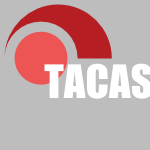 TACAS-2003-UchitelCKM #named #tool support #using
TACAS-2003-UchitelCKM #named #tool support #using- LTSA-MSC: Tool Support for Behaviour Model Elaboration Using Implied Scenarios (SU, RC, JK, JM), pp. 597–601.
 FATES-2003-TylerS #black box #testing
FATES-2003-TylerS #black box #testing- Black-Box Testing of Grey-Box Behavior (BT, NS), pp. 1–14.
 VMCAI-2003-SteffenH
VMCAI-2003-SteffenH - Behavior-Based Model Construction (BS, HH), pp. 5–19.
 CBSE-2002-VecellioTS #component #predict
CBSE-2002-VecellioTS #component #predict- Containers for Predictable Behavior of Component-based Software (GJV, WMT, RMS), p. 2.
 ECDL-2002-SfakakisK #library
ECDL-2002-SfakakisK #library- User Behavior Tendencies on Data Collections in a Digital Library (MS, SK), pp. 550–559.
 JCDL-2002-KellyC #information management #topic
JCDL-2002-KellyC #information management #topic- The effects of topic familiarity on information search behavior (DK, CC), pp. 74–75.
 SCAM-J-2001-SchuppGML02 #library #semantics
SCAM-J-2001-SchuppGML02 #library #semantics- Semantic and behavioral library transformations (SS, DG, DRM, SML), pp. 797–810.
 ICSM-2002-LaiM #modelling
ICSM-2002-LaiM #modelling- Behavioural Concern Modelling for Software Change Tasks (AL, GCM), pp. 112–121.
 IFL-2002-HammondM #predict
IFL-2002-HammondM #predict- Predictable Space Behaviour in FSM-Hume (KH, GM), pp. 1–16.
 ICGT-2002-BaldanK #approximate #graph transformation
ICGT-2002-BaldanK #approximate #graph transformation- Approximating the Behaviour of Graph Transformation Systems (PB, BK), pp. 14–29.
 ICGT-2002-Harel #requirements #why
ICGT-2002-Harel #requirements #why- Can Behavioral Requirements Be Executed? (And Why Would We Want to Do So?) (DH), pp. 6–7.
 ICGT-2002-MensDJ #formal method #program transformation
ICGT-2002-MensDJ #formal method #program transformation- Formalising Behaviour Preserving Program Transformations (TM, SD, DJ), pp. 286–301.
 CHI-2002-FioreTS
CHI-2002-FioreTS - Observed behavior and perceived value of authors in usenet newsgroups: bridging the gap (ATF, SLT, MAS), pp. 323–330.
 CAiSE-2002-AoumeurS #diagrams #logic #prototype #uml #using
CAiSE-2002-AoumeurS #diagrams #logic #prototype #uml #using- Integrating and Rapid-Prototyping UML Structural and Behavioural Diagrams Using Rewriting Logic (NA, GS), pp. 296–310.
 EDOC-2002-MilosevicD #contract #monitoring #on the
EDOC-2002-MilosevicD #contract #monitoring #on the- On Expressing and Monitoring Behaviour in Contracts (ZM, RGD), pp. 3–14.
 ICML-2002-LaudD #learning
ICML-2002-LaudD #learning- Reinforcement Learning and Shaping: Encouraging Intended Behaviors (AL, GD), pp. 355–362.
 ICML-2002-Ryan #automation #learning #modelling #using
ICML-2002-Ryan #automation #learning #modelling #using- Using Abstract Models of Behaviours to Automatically Generate Reinforcement Learning Hierarchies (MRKR), pp. 522–529.
 ICML-2002-Zhang #consistency #statistics
ICML-2002-Zhang #consistency #statistics- Statistical Behavior and Consistency of Support Vector Machines, Boosting, and Beyond (TZ0), pp. 690–700.
 ICPR-v1-2002-NguyenVWB #monitoring #multi #people #using
ICPR-v1-2002-NguyenVWB #monitoring #multi #people #using- Hierarchical Monitoring of People’s Behaviors in Complex Environments Using Multiple Cameras (NTN, SV, GAWW, HHB), pp. 13–16.
 ICPR-v1-2002-RahmanNI #using
ICPR-v1-2002-RahmanNI #using- Recognizing Human Behavior Using Universal Eigenspace (MMR, KN, SI), pp. 295–298.
 ICPR-v2-2002-ChengCK #sequence #video
ICPR-v2-2002-ChengCK #sequence #video- Recognising Human Running Behaviour in Sports Video Sequences (FC, WJC, JK), pp. 1017–1020.
 ICPR-v2-2002-Miyamori #identification #retrieval #using #video
ICPR-v2-2002-Miyamori #identification #retrieval #using #video- Improving Accuracy in Behaviour Identification for Content-Based Retrieval by Using Audio and Video Information (HM), pp. 826–830.
 ICPR-v4-2002-MoriyamaKCXAGI #automation #recognition
ICPR-v4-2002-MoriyamaKCXAGI #automation #recognition- Automatic Recognition of Eye Blinking in Spontaneously Occurring Behavior (TM, TK, JFC, JX, ZA, JG, HI), p. 78–?.
 KDD-2002-El-RamlySS #approach #mining #runtime
KDD-2002-El-RamlySS #approach #mining #runtime- From run-time behavior to usage scenarios: an interaction-pattern mining approach (MER, ES, PGS), pp. 315–324.
 SEKE-2002-XuVIY #modelling #multi #using #verification
SEKE-2002-XuVIY #modelling #multi #using #verification- Modeling and verifying multi-agent behaviors using predicate/transition nets (DX, RAV, TRI, JY), pp. 193–200.
 ECOOP-2002-AlagicK #self
ECOOP-2002-AlagicK #self- Behavioral Compatibility of Self-Typed Theories (SA, SK), pp. 585–608.
 ECOOP-2002-RedmondC #adaptation
ECOOP-2002-RedmondC #adaptation- Supporting Unanticipated Dynamic Adaptation of Application Behaviour (BR, VC), pp. 205–230.
 TOOLS-USA-2002-SoundarajanT #polymorphism #testing
TOOLS-USA-2002-SoundarajanT #polymorphism #testing- Testing Polymorphic Behavior (NS, BT), pp. 173–188.
 SAS-2002-Hymans #abstract interpretation #safety
SAS-2002-Hymans #abstract interpretation #safety- Checking Safety Properties of Behavioral VHDL Descriptions by Abstract Interpretation (CH), pp. 444–460.
 SAC-2002-El-Ansary #analysis #representation #requirements #towards
SAC-2002-El-Ansary #analysis #representation #requirements #towards- Behavioral Pattern Analysis: towards a new representation of systems requirements based on actions and events (AEA), pp. 984–991.
 SAC-2002-GarcesF #analysis #distributed
SAC-2002-GarcesF #analysis #distributed- Analysis of Distributed Routing Balancing behavior (IG, DF), pp. 817–824.
 SAC-2002-GoldmanGBJ #clustering #simulation
SAC-2002-GoldmanGBJ #clustering #simulation- Individual-based simulation of the clustering behaviour of epidermal growth factor receptors (JPG, WJG, DB, CGJ), pp. 127–131.
 ASPLOS-2002-SherwoodPHC #automation #scalability
ASPLOS-2002-SherwoodPHC #automation #scalability- Automatically characterizing large scale program behavior (TS, EP, GH, BC), pp. 45–57.
 DAC-2002-DrinicK #synthesis
DAC-2002-DrinicK #synthesis- Behavioral synthesis via engineering change (MD, DK), pp. 18–21.
 DAC-2002-Perrott #performance #simulation
DAC-2002-Perrott #performance #simulation- Fast and accurate behavioral simulation of fractional-N frequency synthesizers and other PLL/DLL circuits (MHP), pp. 498–503.
 DAC-2002-VanasscheGS #modelling
DAC-2002-VanasscheGS #modelling- Behavioral modeling of (coupled) harmonic oscillators (PV, GGEG, WMCS), pp. 536–541.
 DATE-2002-GinesPRSM #design #modelling #parametricity #reuse
DATE-2002-GinesPRSM #design #modelling #parametricity #reuse- A Mixed-Signal Design Reuse Methodology Based on Parametric Behavioural Models with Non-Ideal Effects (AJG, EJP, AR, RS, NMM), pp. 310–314.
 DATE-2002-VanasscheGS #matrix #modelling #using
DATE-2002-VanasscheGS #matrix #modelling #using- Constructing Symbolic Models for the Input/Output Behavior of Periodically Time-Varying Systems Using Harmonic Transfer Matrices (PV, GGEG, WMCS), pp. 279–284.
 DATE-2002-WilsonRZBK #fault #modelling #using
DATE-2002-WilsonRZBK #fault #modelling #using- Behavioural Modelling of Operational Amplifier Faults Using VHDL-AMS (PRW, JNR, MZ, ADB, YK), p. 1133.
 HPCA-2002-SairSC
HPCA-2002-SairSC - Quantifying Load Stream Behavior (SS, TS, BC), pp. 197–208.
 HPCA-2002-VeraX
HPCA-2002-VeraX - Let’s Study Whole-Program Cache Behaviour Analytically (XV, JX), pp. 175–186.
 HPDC-2002-AllcockBBFGILP #distributed #named #scalability #visualisation
HPDC-2002-AllcockBBFGILP #distributed #named #scalability #visualisation- GridMapper: A Tool for Visualizing the Behavior of Large-Scale Distributed Systems (WEA, JB, JB, ITF, JG, JAI, JML, MEP), pp. 179–187.
 CAV-2002-AlurMY #model checking #performance
CAV-2002-AlurMY #model checking #performance- Exploiting Behavioral Hierarchy for Efficient Model Checking (RA, MM, ZY), pp. 338–342.
 ISSTA-2002-LatellaM #consistency #diagrams #on the #statechart #testing #uml
ISSTA-2002-LatellaM #consistency #diagrams #on the #statechart #testing #uml- On testing and conformance relations for UML statechart diagrams behaviours (DL, MM), pp. 144–153.
 SAT-2002-SlaneyW #optimisation
SAT-2002-SlaneyW #optimisation- Phase Transition Behavior: From Decision to Optimization (JS, TW), p. 4.
 ECDL-2001-MahouiC #library
ECDL-2001-MahouiC #library- Search Behavior in a Research-Oriented Digital Library (MM, SJC), pp. 13–24.
 VLDB-2001-AnSVKIG #data access #energy
VLDB-2001-AnSVKIG #data access #energy- Analyzing energy behavior of spatial access methods for memory-resident data (NA, AS, NV, MTK, MJI, SG), pp. 411–420.
 CSMR-2001-KollmannG #collaboration #diagrams #uml
CSMR-2001-KollmannG #collaboration #diagrams #uml- Capturing Dynamic Program Behaviour with UML Collaboration Diagrams (RK, MG), pp. 58–67.
 ICSM-2001-CookHM #concurrent
ICSM-2001-CookHM #concurrent- Measuring Behavioral Correspondence to a Timed Concurrent Model (JEC, CH, CM), pp. 332–341.
 ICSM-2001-SchauerK #metric
ICSM-2001-SchauerK #metric- The Method Replacement Indicator: A Metric for Analyzing Behavioral Substitution (RS, RKK), pp. 754–764.
 IWPC-2001-StrouliaS #comprehension
IWPC-2001-StrouliaS #comprehension- Structure-Behavior-Function Program Understanding (ES, TS), p. 120.
 ICALP-2001-Madhusudan #branch #graph #reasoning #sequence
ICALP-2001-Madhusudan #branch #graph #reasoning #sequence- Reasoning about Sequential and Branching Behaviours of Message Sequence Graphs (PM), pp. 809–820.
 FME-2001-HelkeS #analysis #consistency #eiffel #library
FME-2001-HelkeS #analysis #consistency #eiffel #library- Mechanized Analysis of Behavioral Conformance in the Eiffel Base Libraries (SH, TS), pp. 20–42.
 TLCA-2001-Hofmann #bound #complexity #memory management #type system #using
TLCA-2001-Hofmann #bound #complexity #memory management #type system #using- From Bounded Arithmetic to Memory Management: Use of Type Theory to Capture Complexity Classes and Space Behaviour (MH0), pp. 2–3.
 IFL-2001-Minamide #runtime #type system
IFL-2001-Minamide #runtime #type system- Runtime Behavior of Conversion Interpretation of Subtyping (YM), pp. 155–167.
 GT-VMT-2001-HeckelK #constraints #modelling #visual notation
GT-VMT-2001-HeckelK #constraints #modelling #visual notation- Behavioral Constraints for Visual Models (RH, JMK), pp. 257–265.
 CHI-2001-CardPWMRSB #analysis #graph #protocol #usability #web
CHI-2001-CardPWMRSB #analysis #graph #protocol #usability #web- Information scent as a driver of Web behavior graphs: results of a protocol analysis method for Web usability (SKC, PP, MMVDW, JBM, RWR, PKS, JB), pp. 498–505.
 ICML-2001-ChajewskaKO #learning
ICML-2001-ChajewskaKO #learning- Learning an Agent’s Utility Function by Observing Behavior (UC, DK, DO), pp. 35–42.
 KDD-2001-AdderleyM #case study #commit #data mining #mining #modelling
KDD-2001-AdderleyM #case study #commit #data mining #mining #modelling- Data mining case study: modeling the behavior of offenders who commit serious sexual assaults (RA, PBM), pp. 215–220.
 UML-2001-EngelsHK #consistency #metamodelling #rule-based #specification #uml
UML-2001-EngelsHK #consistency #metamodelling #rule-based #specification #uml- Rule-Based Specification of Behavioral Consistency Based on the UML Meta-model (GE, RH, JMK), pp. 272–286.
 UML-2001-SendallS #concurrent #constraints #ocl #specification #uml #using
UML-2001-SendallS #concurrent #constraints #ocl #specification #uml #using- Specifying Concurrent System Behavior and Timing Constraints Using OCL and UML (SS, AS), pp. 391–405.
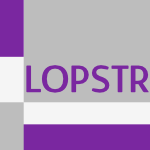 LOPSTR-2001-AlferesBLP #logic programming
LOPSTR-2001-AlferesBLP #logic programming- Computing Environment-Aware Agent Behaviours with Logic Program Updates (JJA, AB, JAL, LMP), pp. 216–232.
 PLDI-2001-ChatterjeePHL #analysis
PLDI-2001-ChatterjeePHL #analysis- Exact Analysis of the Cache Behavior of Nested Loops (SC, EP, PJH, ARL), pp. 286–297.
 SAS-2001-RajamaniR #π-calculus
SAS-2001-RajamaniR #π-calculus- A Behavioral Module System for the π-Calculus (SKR, JR), pp. 375–394.
 ASE-2001-LedangS #diagrams #modelling #uml
ASE-2001-LedangS #diagrams #modelling #uml- Modeling Class Operations in B: Application to UML Behavioral Diagrams (HL, JS), pp. 289–296.
 ASE-2001-PavlovicS #composition #refinement #specification
ASE-2001-PavlovicS #composition #refinement #specification- Composition and Refinement of Behavioral Specifications (DP, DRS), pp. 157–165.
 ESEC-FSE-2001-EngelsKHG #consistency #modelling #object-oriented #specification
ESEC-FSE-2001-EngelsKHG #consistency #modelling #object-oriented #specification- A methodology for specifying and analyzing consistency of object-oriented behavioral models (GE, JMK, RH, LG), pp. 186–195.
 ESEC-FSE-2001-FindlerLF #contract #type system
ESEC-FSE-2001-FindlerLF #contract #type system- Behavioral contracts and behavioral subtyping (RBF, ML, MF), pp. 229–236.
 ICSE-2001-MakinenS #interactive #modelling #named #uml
ICSE-2001-MakinenS #interactive #modelling #named #uml- MAS — An Interactive Synthesizer to Support Behavioral Modeling in UML (EM, TS), pp. 15–24.
 ICSE-2001-UchitelK #modelling
ICSE-2001-UchitelK #modelling- A Workbench for Synthesising Behaviour Models from Scenarios (SU, JK), pp. 188–197.
 SAC-2001-Dozier #evolution #interactive #simulation
SAC-2001-Dozier #evolution #interactive #simulation- Evolving robot behavior via interactive evolutionary computation: from real-world to simulation (GVD), pp. 340–344.
 SAC-2001-MunteanuR #image #modelling
SAC-2001-MunteanuR #image #modelling- Evolutionary image enhancement with user behaviour modeling (CM, ACR), pp. 316–320.
 SAC-2001-XiangFY #approach #component #fuzzy #network #prototype
SAC-2001-XiangFY #approach #component #fuzzy #network #prototype- A fuzzy neural network approach to model component behavior for virtual prototyping of hydraulic system (WX, SCF, FFY), pp. 482–483.
 DAC-2001-GanesanV #clustering #synthesis
DAC-2001-GanesanV #clustering #synthesis- Behavioral Partitioning in the Synthesis of Mixed Analog-Digital Systems (SG, RV), pp. 133–138.
 DAC-2001-KohnoM #pipes and filters #verification
DAC-2001-KohnoM #pipes and filters #verification- A New Verification Methodology for Complex Pipeline Behavior (KK, NM), pp. 816–821.
 DATE-2001-Al-ArsG #array #embedded #memory management
DATE-2001-Al-ArsG #array #embedded #memory management- Static and dynamic behavior of memory cell array opens and shorts in embedded DRAMs (ZAA, AJvdG), pp. 496–503.
 DATE-2001-BekooijEWB #functional
DATE-2001-BekooijEWB #functional- Functional units with conditional input/output behavior in VLIW processors (MB, LJME, AvdW, NGB), p. 822.
 DATE-2001-EconomakosOPPP #synthesis
DATE-2001-EconomakosOPPP #synthesis- Behavioral synthesis with systemC (GE, PO, IP, IP, GKP), pp. 21–25.
 DATE-2001-FerrandiFSFF #functional #generative #modelling #testing
DATE-2001-FerrandiFSFF #functional #generative #modelling #testing- Functional test generation for behaviorally sequential models (FF, GF, DS, AF, FF), pp. 403–410.
 DATE-2001-HajjarCMAB #quality #statistics #using #verification
DATE-2001-HajjarCMAB #quality #statistics #using #verification- High quality behavioral verification using statistical stopping criteria (AH, TC, IM, AAA, MB), pp. 411–419.
 HPDC-2001-SkicewiczDS #multi #query #using
HPDC-2001-SkicewiczDS #multi #query #using- Multi-Resolution Resource Behaviour Queries Using Wavelets (JAS, PAD, JMS), pp. 395–394.
 PDP-2001-CuencaGG #algebra #algorithm #linear #message passing #modelling
PDP-2001-CuencaGG #algebra #algorithm #linear #message passing #modelling- Modeling the Behaviour of Linear Algebra Algorithms with Message-Passing (JC, DG, JG), pp. 282–289.
 PDP-2001-SanchoRD #distributed #on the #using
PDP-2001-SanchoRD #distributed #on the #using- On the Relative Behavior of Source and Distributed Routing in NOWs Using Up/Down Routing Schemes (JCS, AR, JD), pp. 11–18.
 SOSP-2001-EnglerCC #approach #consistency #debugging #fault
SOSP-2001-EnglerCC #approach #consistency #debugging #fault- Bugs as Inconsistent Behavior: A General Approach to Inferring Errors in Systems Code (DRE, DYC, AC), pp. 57–72.
 SAT-2001-NuallainRB #predict #satisfiability
SAT-2001-NuallainRB #predict #satisfiability- Ensemble-based prediction of SAT search behaviour (BÓN, MdR, JvB), pp. 278–289.
- DL-2000-NevesF #case study #library
- A study of user behavior in an immersive virtual environment for digital libraries (FADN, EAF), pp. 103–111.
 WCRE-2000-AntoniolCC #modelling #traceability
WCRE-2000-AntoniolCC #modelling #traceability- Traceability Recovery by Modeling Programmer Behavior (GA, GC, AC), pp. 240–247.
 WCRE-2000-Systa #comprehension #java #source code
WCRE-2000-Systa #comprehension #java #source code- Understanding the Behavior of Java Programs (TS), pp. 214–223.
 ICALP-2000-BravettiG #axiom #congruence #finite
ICALP-2000-BravettiG #axiom #congruence #finite- A Complete Axiomatization for Observational Congruence of Prioritized Finite-State Behaviors (MB, RG), pp. 744–755.
 IFM-2000-MeyerS #approach #consistency #uml #using #verification
IFM-2000-MeyerS #approach #consistency #uml #using #verification- Behavioral Conformance Verification in an Integrated Approach Using UML and B (EM, TS), pp. 358–379.
 IFL-2000-Hammond #bound #concurrent
IFL-2000-Hammond #bound #concurrent- The Dynamic Properties of Hume: A Functionally-Based Concurrent Language with Bounded Time and Space Behaviour (KH), pp. 122–139.
 CSCW-2000-JacksonAMM #video
CSCW-2000-JacksonAMM #video- Impact of video frame rate on communicative behaviour in two and four party groups (MJ, AHA, RM, JM), pp. 11–20.
 CSCW-2000-PalenSY #mobile
CSCW-2000-PalenSY #mobile- Going wireless: behavior & practice of new mobile phone users (LP, MCS, EY), pp. 201–210.
 CAiSE-2000-BehrensR #code generation #model transformation #named
CAiSE-2000-BehrensR #code generation #model transformation #named- StateLator — Behavioral Code Generation as an Instance of a Model Transformation (TB, SR), pp. 401–416.
 ICML-2000-AndersonDP #composition #network #student
ICML-2000-AndersonDP #composition #network #student- Behavioral Cloning of Student Pilots with Modular Neural Networks (CWA, BAD, DAP), pp. 25–32.
 ICML-2000-MorimotoD #learning #using
ICML-2000-MorimotoD #learning #using- Acquisition of Stand-up Behavior by a Real Robot using Hierarchical Reinforcement Learning (JM, KD), pp. 623–630.
 ICML-2000-TodorovskiDSWG #difference #equation
ICML-2000-TodorovskiDSWG #difference #equation- Discovering the Structure of Partial Differential Equations from Example Behaviour (LT, SD, AS, JPW, DG), pp. 991–998.
 ICPR-v1-2000-SherrahGHB #interactive #visual notation
ICPR-v1-2000-SherrahGHB #interactive #visual notation- Interpretation of Group Behavior in Visually Mediated Interaction (JS, SG, AJH, HB), pp. 1266–1269.
 ICPR-v3-2000-ValdesME #analysis #case study #image
ICPR-v3-2000-ValdesME #analysis #case study #image- Behavior Analysis of Fractal Features for Texture Description in Digital Images: An Experimental Study (JJV, LCM, SE), pp. 3917–3920.
 ICPR-v4-2000-IskeRMS #learning #navigation
ICPR-v4-2000-IskeRMS #learning #navigation- A Bootstrapping Method for Autonomous and in Site Learning of Generic Navigation Behavior (BI, UR, KM, JS), pp. 4656–4659.
 ICPR-v4-2000-KojimaITF #generative #image #natural language #video
ICPR-v4-2000-KojimaITF #generative #image #natural language #video- Generating Natural Language Description of Human Behavior from Video Images (AK, MI, TT, KF), pp. 4728–4731.
 ICPR-v4-2000-SanchezM00a #programming #using #visual notation
ICPR-v4-2000-SanchezM00a #programming #using #visual notation- Robot-Arm Pick and Place Behavior Programming System Using Visual Perception (AJS, JMM), pp. 4507–4510.
 KDD-2000-PenaFL #data mining #detection #mining
KDD-2000-PenaFL #data mining #detection #mining- Data mining to detect abnormal behavior in aerospace data (JMP, FF, SL), pp. 390–397.
 SIGIR-2000-EfthimiadisF #case study #database #image #query
SIGIR-2000-EfthimiadisF #case study #database #image #query- The effect of query type on subject searching behavior of image databases: an exploratory study (ENE, RF), pp. 328–330.
 UML-2000-EngelsHHS #approach #diagrams #metamodelling #modelling #semantics #uml #visual notation
UML-2000-EngelsHHS #approach #diagrams #metamodelling #modelling #semantics #uml #visual notation- Dynamic Meta Modeling: A Graphical Approach to the Operational Semantics of Behavioral Diagrams in UML (GE, JHH, RH, SS), pp. 323–337.
 UML-2000-Pazzi #representation
UML-2000-Pazzi #representation- Part-Whole Statecharts for the Explicit Representation of Compound Behaviors (LP), pp. 541–555.
 UML-2000-PetriuS #consistency #diagrams #process #representation #sequence chart
UML-2000-PetriuS #consistency #diagrams #process #representation #sequence chart- Consistent Behaviour Representation in Activity and Sequence Diagrams (DCP, YS), pp. 369–382.
 ECOOP-2000-KellomakiM #design
ECOOP-2000-KellomakiM #design- Design Templates for Collective Behavior (PK, TM), pp. 277–295.
 TOOLS-EUROPE-2000-LakosL #inheritance #lifecycle
TOOLS-EUROPE-2000-LakosL #inheritance #lifecycle- Behavior Inheritance for Object Lifecycles (CL, GL), p. 262–?.
 TOOLS-USA-2000-HarelK #inheritance #on the
TOOLS-USA-2000-HarelK #inheritance #on the- On the Behavioral Inheritance of State-Based Objects (DH, OK), pp. 83–94.
 TOOLS-USA-2000-SoundarajanF #multi #type system
TOOLS-USA-2000-SoundarajanF #multi #type system- Behavioral Subtyping and Behavioral Enrichment of Multimethods (NS, SF), p. 105–?.
 AdaEurope-2000-DeshpandeCT #object-oriented #reliability #simulation
AdaEurope-2000-DeshpandeCT #object-oriented #reliability #simulation- Improving the Reliability of Object-Oriented Software through Object-Level Behavioral Simulation (MD, FPC, JT), pp. 266–279.
 ICRE-2000-KnottMP #analysis #modelling #object-oriented #process #using
ICRE-2000-KnottMP #analysis #modelling #object-oriented #process #using- Process Modeling for Object Oriented Analysis Using BORM Object Behavioral Analysis (RPK, VM, JP), pp. 7–16.
 ICSE-2000-MageePGK #animation #modelling #visual notation
ICSE-2000-MageePGK #animation #modelling #visual notation- Graphical animation of behavior models (JM, NP, DG, JK), pp. 499–508.
 SAC-2000-PereiraC #adaptation #information retrieval #learning
SAC-2000-PereiraC #adaptation #information retrieval #learning- The Influence of Learning in the Behaviour of Information Retrieval Adaptive Agents (FBP, EC), pp. 452–457.
 SAC-2000-PiresBM #communication #database #object-oriented #specification
SAC-2000-PiresBM #communication #database #object-oriented #specification- Mechanisms for Specifying Communication Behavior in Object Oriented Database (PFP, MRFB, MM), pp. 389–397.
 SAC-2000-SrinivasaS #transaction
SAC-2000-SrinivasaS #transaction- Discerning Behavioral Properties by Analyzing Transaction Logs (SS, MS), pp. 281–282.
 ASPLOS-2000-RedstoneEL #analysis #architecture #operating system #parallel #thread
ASPLOS-2000-RedstoneEL #analysis #architecture #operating system #parallel #thread- An Analysis of Operating System Behavior on a Simultaneous Multithreaded Architecture (JR, SJE, HML), pp. 245–256.
 DAC-2000-DoughertyT #design #physics #synthesis
DAC-2000-DoughertyT #design #physics #synthesis- Unifying behavioral synthesis and physical design (WED, DET), pp. 756–761.
 DATE-2000-SemeriaSM #c #memory management #pointer #synthesis
DATE-2000-SemeriaSM #c #memory management #pointer #synthesis- Resolution of Dynamic Memory Allocation and Pointers for the Behavioral Synthesis from C (LS, KS, GDM), pp. 312–319.
 HPCA-2000-WongB #policy
HPCA-2000-WongB #policy- Modified LRU Policies for Improving Second-Level Cache Behavior (WAW, JLB), pp. 49–60.
 ESOP-2000-HondaVY #data flow #process
ESOP-2000-HondaVY #data flow #process- Secure Information Flow as Typed Process Behaviour (KH, VTV, NY), pp. 180–199.
 WRLA-2000-GoguenLR #induction
WRLA-2000-GoguenLR #induction- Behavioral and Coinductive Rewriting (JAG, KL, GR), pp. 2–23.
 WICSA-1999-MageeKG #analysis #architecture
WICSA-1999-MageeKG #analysis #architecture- Behaviour Analysis of Software Architectures (JM, JK, DG), pp. 35–50.
 ITiCSE-1999-CabezaCR #education #memory management #named
ITiCSE-1999-CabezaCR #education #memory management #named- CacheSim: a cache simulator for teaching memory hierarchy behaviour (MLCC, MIGC, MLR), p. 181.
 ICSM-1999-LiuAQ #legacy #modelling #requirements
ICSM-1999-LiuAQ #legacy #modelling #requirements- Requirements Recovery from Legacy Systems by Analyzing and Modelling Behavior (KL, AA, ZQ), pp. 3–12.
 DLT-1999-CaludeC #automaton #bisimulation #nondeterminism
DLT-1999-CaludeC #automaton #bisimulation #nondeterminism- Bisimulations and behaviour of nondeterministic automata (CC, EC), pp. 60–70.
 FM-v2-1999-Jifeng #co-evolution #design
FM-v2-1999-Jifeng #co-evolution #design- A Behavioral Model for Co-design (JH), pp. 1420–1438.
 FM-v2-1999-MoriF #specification #verification
FM-v2-1999-MoriF #specification #verification- Verifying Behavioural Specifications in CafeOBJ Environment (AM, KF), pp. 1625–1643.
 IFM-1999-Fidge #modelling
IFM-1999-Fidge #modelling- Modelling Discrete Behaviour in a Continuous-Time Formalism (CJF), pp. 170–188.
 IFM-1999-PolHJ #composition #specification
IFM-1999-PolHJ #composition #specification- Modular Formal Specification of Data and Behaviour (JvdP, JH, EDdJ), pp. 109–128.
 CHI-1999-KunoINS #human-computer #interactive
CHI-1999-KunoINS #human-computer #interactive- Combining Observations of Intentional and Unintentional Behaviors for Human-Computer Interaction (YK, TI, SN, YS), pp. 238–245.
 HCI-CCAD-1999-KlobasM
HCI-CCAD-1999-KlobasM - A planned behavior in context model of networked information resource use (JEK, DM), pp. 823–827.
 HCI-CCAD-1999-MoriKSO
HCI-CCAD-1999-MoriKSO - A computer-augmented office environment: integrating virtual and real world objects and behavior (HM, TK, ES, YO), pp. 1065–1069.
 HCI-CCAD-1999-TakanoSS #simulation
HCI-CCAD-1999-TakanoSS #simulation- Intellectual simulation of operating team behavior in coping with anomalies occurring at commercial nuclear power plants (KT, WS, KS), pp. 1201–1205.
 HCI-CCAD-1999-TrousseJK #approach #recommendation #similarity #using
HCI-CCAD-1999-TrousseJK #approach #recommendation #similarity #using- Using user behaviour similarity for recommendation computation: the broadway approach (BT, MJ, RK), pp. 85–89.
 CIKM-1999-RadevPMP #approach #graph #multi #object-oriented #representation
CIKM-1999-RadevPMP #approach #graph #multi #object-oriented #representation- Graph-Based Object-Oriented Approach for Structural and Behavioral Representation of Multimedia Data (IR, NP, KM, EKP), pp. 522–530.
 ICML-1999-GiordanaP #on the
ICML-1999-GiordanaP #on the- On Some Misbehaviour of Back-Propagation with Non-Normalized RBFNs and a Solution (AG, RP), pp. 162–170.
 ICML-1999-IijimaYYK #adaptation #distributed #learning
ICML-1999-IijimaYYK #adaptation #distributed #learning- Distributed Robotic Learning: Adaptive Behavior Acquisition for Distributed Autonomous Swimming Robot in Real World (DI, WY, HY, YK), pp. 191–199.
 KDD-1999-FawcettP #monitoring #process
KDD-1999-FawcettP #monitoring #process- Activity Monitoring: Noticing Interesting Changes in Behavior (TF, FJP), pp. 53–62.
 UML-1999-GieseGW #modelling #object-oriented
UML-1999-GieseGW #modelling #object-oriented- Closing the Gap Between Object-Oriented Modeling of Structure and Behavior (HG, JG, GW), pp. 534–549.
 UML-1999-SoundarajanF #modelling
UML-1999-SoundarajanF #modelling- Modeling Exceptional Behavior (NS, SF), pp. 691–705.
 UML-1999-Sourrouille #implementation #inheritance #object-oriented #uml
UML-1999-Sourrouille #implementation #inheritance #object-oriented #uml- UML Behavior: Inheritance and Implementation in Current Object-Oriented Languages (JLS), pp. 457–472.
 ECOOP-1999-DieckmannH #benchmark #case study #java #metric
ECOOP-1999-DieckmannH #benchmark #case study #java #metric- A Study of the Allocation Behavior of the SPECjvm98 Java Benchmark (SD, UH), pp. 92–115.
 TOOLS-ASIA-1999-FanXZ #inheritance #reasoning
TOOLS-ASIA-1999-FanXZ #inheritance #reasoning- Reasoning about Inheritance and Cloning Behaviors of Software Agents (XF, DX, GZ), pp. 77–82.
 TOOLS-USA-1999-PlasilBV #bound #component #protocol
TOOLS-USA-1999-PlasilBV #bound #component #protocol- Bounding Component Behavior via Protocols (FP, MB, SV), pp. 387–398.
 ASE-1999-CazzolaSST #architecture #rule-based
ASE-1999-CazzolaSST #architecture #rule-based- Rule-Based Strategic Reflection: Observing and Modifying Behavior at the Architectural Level (WC, AS, AS, FT), pp. 263–266.
 ICSE-1999-Magee #analysis #architecture #using
ICSE-1999-Magee #analysis #architecture #using- Behavioral Analysis of Software Architectures Using LTSA (JM), pp. 634–637.
 SAC-1999-DasBHHZ #knowledge base
SAC-1999-DasBHHZ #knowledge base- A Knowledge Based Model of Traffic Behavior in Freeways (SD, BAB, CRH, SJH, YZ), pp. 14–18.
 SAC-1999-MocellinM #aspect-oriented #modelling #multi #using
SAC-1999-MocellinM #aspect-oriented #modelling #multi #using- Modelling Behavioral Aspects of Multimedia Presentations Using an Active Object DBMS (FM, HM), pp. 450–454.
 DAC-1999-Bergamaschi #graph #logic #network #synthesis
DAC-1999-Bergamaschi #graph #logic #network #synthesis- Behavioral Network Graph: Unifying the Domains of High-Level and Logic Synthesis (RAB), pp. 213–218.
 DAC-1999-DoboliNDGV #design #synthesis #using
DAC-1999-DoboliNDGV #design #synthesis #using- Behavioral Synthesis of Analog Systems Using Two-layered Design Space Exploration (AD, ANA, NRD, SG, RV), pp. 951–957.
 DAC-1999-ErcegovacKP #multi #optimisation #power management #precise #synthesis #using
DAC-1999-ErcegovacKP #multi #optimisation #power management #precise #synthesis #using- Low-Power Behavioral Synthesis Optimization Using Multiple Precision Arithmetic (MDE, DK, MP), pp. 568–573.
 DAC-1999-HongP #synthesis
DAC-1999-HongP #synthesis- Behavioral Synthesis Techniques for Intellectual Property Protection (IH, MP), pp. 849–854.
 DAC-1999-KirovskiP #synthesis
DAC-1999-KirovskiP #synthesis- Engineering Change: Methodology and Applications to Behavioral and System Synthesis (DK, MP), pp. 604–609.
 DAC-1999-MoussaSSDPCGJ #design
DAC-1999-MoussaSSDPCGJ #design- Comparing RTL and Behavioral Design Methodologies in the Case of a 2M-Transistor ATM Shaper (IM, ZS, RS, MDN, MP, SC, LG, AAJ), pp. 598–603.
 DAC-1999-SchaumontCVEB #hardware #reuse
DAC-1999-SchaumontCVEB #hardware #reuse- Hardware Reuse at the Behavioral Level (PS, RC, SV, ME, IB), pp. 784–789.
 DATE-1999-DoboliV #architecture #compilation #generative #synthesis
DATE-1999-DoboliV #architecture #compilation #generative #synthesis- A VHDL-AMS Compiler and Architecture Generator for Behavioral Synthesis of Analog Systems (AD, RV), pp. 338–345.
 DATE-1999-MakrisO #reachability #synthesis
DATE-1999-MakrisO #reachability #synthesis- Channel-Based Behavioral Test Synthesis for Improved Module Reachability (YM, AO), pp. 283–288.
 DATE-1999-Wakabayashi #case study #experience #synthesis
DATE-1999-Wakabayashi #case study #experience #synthesis- C-based Synthesis Experiences with a Behavior Synthesizer, “Cyber” (KW), p. 390–?.
 LCTES-1999-SchneiderF #abstract interpretation #pipes and filters #predict
LCTES-1999-SchneiderF #abstract interpretation #pipes and filters #predict- Pipeline Behavior Prediction for Superscalar Processors by Abstract Interpretation (JS, CF), pp. 35–44.
 ECDL-1998-KapidakisTS #architecture #library #monitoring
ECDL-1998-KapidakisTS #architecture #library #monitoring- A Management Architecture for Measuring and Monitoring the Behavior of Digital Libraries (SK, ST, JS), pp. 95–114.
 IWPC-1998-MayrhauserV #adaptation #comprehension #scalability
IWPC-1998-MayrhauserV #adaptation #comprehension #scalability- Program Understanding Behavior During Adaptation of Large Scale Software (AvM, AMV), pp. 164–172.
 ICALP-1998-KarhumakiLP #infinity #word
ICALP-1998-KarhumakiLP #infinity #word- Locally Periodic Infinite Words and a Chaotic Behaviour (JK, AL, WP), pp. 421–430.
 ACIR-1998-ManglanoBR #evaluation #interface #modelling
ACIR-1998-ManglanoBR #evaluation #interface #modelling- Evaluation of Interfaces for IRS: Modelling End-User Searching Behaviour (VM, MB, SER).
 ICPR-1998-HosieVW #detection #visual notation
ICPR-1998-HosieVW #detection #visual notation- Classifying and detecting group behaviour from visual surveillance data (RH, SV, GAWW), pp. 602–604.
 KR-1998-Sandewall #logic #modelling
KR-1998-Sandewall #logic #modelling- Logic Based Modelling of Goal-Directed Behavior (ES), pp. 304–315.
 TOOLS-ASIA-1998-VieiraT #approach #object-oriented #testing
TOOLS-ASIA-1998-VieiraT #approach #object-oriented #testing- An Approach to Perform Behavior Testing in Object-Oriented Systems (MERV, GHT), pp. 318–327.
 TOOLS-USA-1998-Mellor98a #how #modelling #question
TOOLS-USA-1998-Mellor98a #how #modelling #question- Modeling Complex Behavior Simply or How Much is Too Much? (SJM), p. 444.
 TOOLS-USA-1998-SoundarajanF #polymorphism #reasoning
TOOLS-USA-1998-SoundarajanF #polymorphism #reasoning- Reasoning About Polymorphic Behavior (NS, SF), p. 346–?.
 SAC-1998-BillardL #automaton #distributed #learning #simulation
SAC-1998-BillardL #automaton #distributed #learning #simulation- Simulation of period-doubling behavior in distributed learning automata (EB, SL), pp. 690–695.
 SAC-1998-HuangE #scheduling
SAC-1998-HuangE #scheduling- Scheduling control mechanisms for managing indeterminate object behavior (EHH, TE), pp. 650–654.
 ASPLOS-1998-PeirLH #adaptation #memory management
ASPLOS-1998-PeirLH #adaptation #memory management- Capturing Dynamic Memory Reference Behavior with Adaptive Cache Topology (JKP, YL, WWH), pp. 240–250.
 ASPLOS-1998-SeidlZ
ASPLOS-1998-SeidlZ - Segregating Heap Objects by Reference Behavior and Lifetime (MLS, BGZ), pp. 12–23.
 DAC-1998-GuerraPR #optimisation
DAC-1998-GuerraPR #optimisation- A Methodology for Guided Behavioral-Level Optimization (LMG, MP, JMR), pp. 309–314.
 DAC-1998-LakshminarayanaJ #control flow #framework #named #optimisation #throughput
DAC-1998-LakshminarayanaJ #control flow #framework #named #optimisation #throughput- FACT: A Framework for the Application of Throughput and Power Optimizing Transformations to Control-Flow Intensive Behavioral Descriptions (GL, NKJ), pp. 102–107.
 DAC-1998-LakshminarayanaJ98a #power management #synthesis
DAC-1998-LakshminarayanaJ98a #power management #synthesis- Synthesis of Power-Optimized and Area-Optimized Circuits from Hierarchical Behavioral Descriptions (GL, NKJ), pp. 439–444.
 DAC-1998-LakshminarayanaRJ #control flow #execution #scheduling
DAC-1998-LakshminarayanaRJ #control flow #execution #scheduling- Incorporating Speculative Execution into Scheduling of Control-Flow Intensive Behavioral Descriptions (GL, AR, NKJ), pp. 108–113.
 DAC-1998-ParulkarGB
DAC-1998-ParulkarGB - Introducing Redundant Computations in a Behavior for Reducing BIST Resources (IP, SKG, MAB), pp. 548–553.
 DATE-1998-BoglioloBM #modelling
DATE-1998-BoglioloBM #modelling- Characterization-Free Behavioral Power Modeling (AB, LB, GDM), pp. 767–773.
 DATE-1998-FerrandiFMP #estimation
DATE-1998-FerrandiFMP #estimation- Power Estimation of Behavioral Descriptions (FF, FF, EM, MP), pp. 762–766.
 DATE-1998-JemaiKJ #architecture #simulation #synthesis
DATE-1998-JemaiKJ #architecture #simulation #synthesis- Architectural Simulation in the Context of Behavioral Synthesis (AJ, PK, AAJ), pp. 590–595.
 DATE-1998-LiG #algorithm
DATE-1998-LiG #algorithm- An Algorithm To Determine Mutually Exclusive Operations In Behavioral Descriptions (JL, RKG), pp. 457–463.
 DATE-1998-Nicoli #semantics #set
DATE-1998-Nicoli #semantics #set- Denotational Semantics of a Behavioral Subset of VHDL (FN), pp. 975–976.
 DATE-1998-RosenbergerH #approach #functional #modelling #simulation
DATE-1998-RosenbergerH #approach #functional #modelling #simulation- A Systems Theoretic Approach to Behavioural Modeling and Simulation of Analog Functional Blocks (RR, SAH), pp. 721–728.
 DATE-1998-YiCPHK #multi #synthesis
DATE-1998-YiCPHK #multi #synthesis- Multiple Behavior Module Synthesis Based on Selective Groupings (JHY, HC, ICP, SHH, CMK), pp. 384–388.
 LCTES-1998-FerdinandW #on the #predict #realtime
LCTES-1998-FerdinandW #on the #predict #realtime- On Predicting Data Cache Behavior for Real-Time Systems (CF, RW), pp. 16–30.
 FASE-1998-NielsonAN #analysis #case study #safety
FASE-1998-NielsonAN #analysis #case study #safety- Behaviour Analysis and Safety Conditions: A Case Study in CML (HRN, TA, FN), pp. 255–269.
 WRLA-1998-MatsumotoF #automation #induction #testing #towards #verification
WRLA-1998-MatsumotoF #automation #induction #testing #towards #verification- Test set coinduction — Toward automated verification of behavioural properties (MM, KF), pp. 242–262.
 LICS-1998-Alfaro #how #probability #verification
LICS-1998-Alfaro #how #probability #verification- How to Specify and Verify the Long-Run Average Behavior of Probabilistic Systems (LdA), pp. 454–465.
 ICDAR-1997-NagasakiYN #recognition
ICDAR-1997-NagasakiYN #recognition- The Behavior of Dynamic Relaxation in an Elastic Stroke Model for Character Recognition (TN, TY, MN), pp. 16–22.
 WIA-1997-BrzozowskiN #automaton
WIA-1997-BrzozowskiN #automaton- Automata of Asynchronous Behaviors (JAB, RN), pp. 29–45.
 HCI-CC-1997-Dabija #communication
HCI-CC-1997-Dabija #communication- Communicating about Reactive Behaviors (VGD), pp. 31–34.
 HCI-CC-1997-ItohMGA #process
HCI-CC-1997-ItohMGA #process- Analyzing Qualitative Data with SPROT (Structural Process Chart of a Task Oriented Behavior) (MI, YM, SG, TA), pp. 541–544.
 CAiSE-1997-CathalaP #how #why
CAiSE-1997-CathalaP #how #why- Preserving Behaviour: Why and How (FC, PP), pp. 333–346.
 CAiSE-1997-TryfonaPH #experience #modelling
CAiSE-1997-TryfonaPH #experience #modelling- Modeling Behavior of Geographic Objects: An Experience with the Object Modeling Technique (NT, DP, TH), pp. 347–359.
 CAiSE-1997-VermeerA #database #specification
CAiSE-1997-VermeerA #database #specification- Behaviour Specification in Database Interoperation (MWWV, PMGA), pp. 61–74.
 KDD-1997-DeCoste #mining #multi
KDD-1997-DeCoste #mining #multi- Mining Multivariate Time-Series Sensor Data to Discover Behavior Envelopes (DD), pp. 151–154.
 TOOLS-USA-1997-MagnanVO #specification
TOOLS-USA-1997-MagnanVO #specification- From Specification to Management of Composite Object Behavior (MM, SV, MCO), p. 132–?.
 TOOLS-USA-1997-SoundarajanF
TOOLS-USA-1997-SoundarajanF - Inheriting and Modifying Behavior (NS, SF), pp. 148–162.
 POPL-1997-PierceS #equivalence #polymorphism #π-calculus
POPL-1997-PierceS #equivalence #polymorphism #π-calculus- Behavioral Equivalence in the Polymorphic π-calculus (BCP, DS), pp. 242–255.
 DAC-1997-AgrawalG #clustering #data flow #embedded
DAC-1997-AgrawalG #clustering #data flow #embedded- Data-Flow Assisted Behavioral Partitioning for Embedded Systems (SA, RKG), pp. 709–712.
 DAC-1997-PotkonjakKK #case study #design
DAC-1997-PotkonjakKK #case study #design- Methodology for Behavioral Synthesis-Based Algorithm-Level Design Space Exploration: DCT Case Study (MP, KK, RK), pp. 252–257.
 DAC-1997-SambandamH #architecture #design #embedded #predict #realtime
DAC-1997-SambandamH #architecture #design #embedded #predict #realtime- Predicting Timing Behavior in Architectural Design Exploration of Real-Time Embedded Systems (RSS, XH), pp. 157–160.
 EDTC-1997-BoglioloBM #adaptation #modelling
EDTC-1997-BoglioloBM #adaptation #modelling- Adaptive least mean square behavioral power modeling (AB, LB, GDM), pp. 404–410.
 EDTC-1997-FlottesPR #testing
EDTC-1997-FlottesPR #testing- Analyzing testability from behavioral to RT level (MLF, RP, BR), pp. 158–165.
 EDTC-1997-NouraniP #analysis #using
EDTC-1997-NouraniP #analysis #using- Structural BIST insertion using behavioral test analysis (MN, CAP), pp. 64–68.
 EDTC-1997-ShojiHSKN #simulation
EDTC-1997-ShojiHSKN #simulation- Acceleration of behavioral simulation on simulation specific machines (MS, FH, SS, SK, HN), pp. 373–377.
 TAPSOFT-1997-Jacobs #algebra #correctness #induction #proving #specification
TAPSOFT-1997-Jacobs #algebra #correctness #induction #proving #specification- Behaviour-Refinement of Coalgebraic Specifications with Coinductive Correctness Proofs (BJ0), pp. 787–802.
 WPC-1996-LuciaFM #comprehension #slicing
WPC-1996-LuciaFM #comprehension #slicing- Understanding Function Behaviors through Program Slicing (ADL, ARF, MM), pp. 9–10.
 CHI-1996-DarkenS #scalability
CHI-1996-DarkenS #scalability- Wayfinding Strategies and Behaviors in Large Virtual Worlds (RPD, JLS), pp. 142–149.
 CHI-1996-Ishizaki #design #multi #visualisation
CHI-1996-Ishizaki #design #multi #visualisation- Multiagent Model of Dynamic Design: Visualization as an Emergent Behavior of Active Design Agents (SI), pp. 347–354.
 CHI-1996-KoenemannB #case study #effectiveness #information retrieval #interactive
CHI-1996-KoenemannB #case study #effectiveness #information retrieval #interactive- A Case for Interaction: A Study of Interactive Information Retrieval Behavior and Effectiveness (JK, NJB), pp. 205–212.
 CSCW-1996-FinholtOO #evaluation
CSCW-1996-FinholtOO #evaluation- Behavioral Evaluation of CSCW Technologies (TAF, GMO, JSO), p. 5.
 ICPR-1996-ChenJ #network #on the
ICPR-1996-ChenJ #network #on the- On the small sample behavior of the class-sensitive neural network (CHC, AJ), pp. 209–213.
 ICPR-1996-WeberVS #mobile
ICPR-1996-WeberVS #mobile- Insect inspired behaviours for the autonomous control of mobile robots (KW, SV, MVS), pp. 156–160.
 SEKE-1996-GillerHT #visual notation
SEKE-1996-GillerHT #visual notation- Scriptless Behaviour Definition of Visual Objects (VG, GH, MT), pp. 499–505.
 ECOOP-1996-KristensenM #abstraction #named #process
ECOOP-1996-KristensenM #abstraction #named #process- Activities: Abstractions for Collective Behavior (BBK, DCMM), pp. 472–501.
 SAS-1996-AltFMW #abstract interpretation #predict
SAS-1996-AltFMW #abstract interpretation #predict- Cache Behavior Prediction by Abstract Interpretation (MA, CF, FM, RW), pp. 52–66.
 FSE-1996-SeiterPL #evolution #using
FSE-1996-SeiterPL #evolution #using- Evolution of Object Behavior Using Context Relations (LMS, JP, KJL), pp. 46–57.
 ICSE-1996-DharaL #inheritance #specification #type system
ICSE-1996-DharaL #inheritance #specification #type system- Forcing Behavioral Subtyping through Specification Inheritance (KKD, GTL), pp. 258–267.
 KBSE-1996-HoweP #modelling
KBSE-1996-HoweP #modelling- Constructing Transition Models of AI Planner Behavior (AEH, LDP), p. 8.
 SAC-1996-ChungLLD #comparison #using
SAC-1996-ChungLLD #comparison #using- A comparison of variational data assimilation and nudging using a simple dynamical system with chaotic behavior (WC, JML, SL, SKD), pp. 454–462.
 DAC-1996-BorchersHB #equation #generative
DAC-1996-BorchersHB #equation #generative- Equation-Based Behavioral Model Generation for Nonlinear Analog Circuits (CB, LH, EB), pp. 236–239.
 DAC-1996-Camposano #synthesis
DAC-1996-Camposano #synthesis- Behavioral Synthesis (RC), pp. 33–34.
 HPDC-1996-AlmerothA #modelling #multi
HPDC-1996-AlmerothA #modelling #multi- Collecting and Modeling the Join/Leave Behavior of Multicast Group Members in the MBone (KCA, MHA), pp. 209–216.
 PDP-1996-LeungC #concurrent #equation #inheritance #object-oriented #programming language
PDP-1996-LeungC #concurrent #equation #inheritance #object-oriented #programming language- Behaviour Equation as Solution of Inheritance Anomaly in Concurrent Object-Oriented Programming Languages (BCLL, PPKC), pp. 360–366.
 PDP-1996-ValmariKS #design #visualisation
PDP-1996-ValmariKS #design #visualisation- Visualisation of Reduced Abstracted Behaviour as a Design Tool (AV, KK, MS), pp. 187–195.
 TAPSOFT-J-1995-HofmannS96 #abstraction #higher-order #logic #on the
TAPSOFT-J-1995-HofmannS96 #abstraction #higher-order #logic #on the- On Behavioural Abstraction and Behavioural Satisfaction in Higher-Order Logic (MH, DS), pp. 3–45.
 RWLW-1996-Diaconescu #logic #specification
RWLW-1996-Diaconescu #logic #specification- Foundations of behavioural specification in rewriting logic (RD), pp. 226–245.
 CAV-1996-CapellmannDFGNO #abstraction #case study #detection #interactive #network #verification
CAV-1996-CapellmannDFGNO #abstraction #case study #detection #interactive #network #verification- Verification by Behaviour Abstraction — A Case Study of Service Interaction Detection in Intelligent Telephone Networks (CC, RD, FFV, RGE, UN, PO), pp. 466–469.
 CHI-1995-LiebermanF #programming
CHI-1995-LiebermanF #programming- Bridging the Gulf Between Code and Behavior in Programming (HL, CF), pp. 480–486.
 CAiSE-1995-OliveS #concept #modelling
CAiSE-1995-OliveS #concept #modelling- A Method for Explaining the Behaviour of Conceptual Models (AO, MRS), pp. 12–25.
 SEKE-1995-JainSK #reuse #towards #usability
SEKE-1995-JainSK #reuse #towards #usability- Towards Reusability Based Upon Similar Computational Behavior (AJ, LS, MK), pp. 197–203.
 SAC-1995-BanachP #graph grammar #linear #source code
SAC-1995-BanachP #graph grammar #linear #source code- Linear behaviour of term graph rewriting programs (RB, GAP), pp. 157–163.
 SAC-1995-GyseghemC #fuzzy
SAC-1995-GyseghemC #fuzzy- Fuzzy behaviour and relationships in a fuzzy OODB-model (NVG, RMMDC), pp. 503–507.
 DAC-1995-KnappLMM #specification #synthesis #validation
DAC-1995-KnappLMM #specification #synthesis #validation- Behavioral Synthesis Methodology for HDL-Based Specification and Validation (DK, TL, DM, RM), pp. 286–291.
 DAC-1995-LyKMM #scheduling #using
DAC-1995-LyKMM #scheduling #using- Scheduling Using Behavioral Templates (TL, DK, RM, DM), pp. 101–106.
 DAC-1995-MartinK #named #optimisation #power management
DAC-1995-MartinK #named #optimisation #power management- Power-Profiler: Optimizing ASICs Power Consumption at the Behavioral Level (RSM, JPK), pp. 42–47.
 DAC-1995-SilburtPBNDW #concurrent #design #hardware #modelling #simulation
DAC-1995-SilburtPBNDW #concurrent #design #hardware #modelling #simulation- Accelerating Concurrent Hardware Design with Behavioural Modelling and System Simulation (AS, IP, JB, SN, MD, GW), pp. 528–533.
 DAC-1995-StollonP #complexity #metric #modelling
DAC-1995-StollonP #complexity #metric #modelling- Measures of Syntactic Complexity for Modeling Behavioral VHDL (NSS, JDP), pp. 684–689.
 ESOP-J-1994-BidoitHW95 #specification
ESOP-J-1994-BidoitHW95 #specification- Behavioural and Abstractor Specifications (MB, RH, MW), pp. 149–186.
 TAPSOFT-1995-HofmannS #abstraction #higher-order #logic #on the
TAPSOFT-1995-HofmannS #abstraction #higher-order #logic #on the- On Behavioral Abstraction and Behavioural Satisfaction in Higher-Order Logic (MH0, DS), pp. 247–261.
 CAV-1995-AndersenV #fixpoint #performance #using
CAV-1995-AndersenV #fixpoint #performance #using- Efficient Checking of Behavioural Relations and Modal Assertions using Fixed-Point Inversion (HRA, BV), pp. 142–154.
 ICLP-1995-DekhtyarD #database #deduction
ICLP-1995-DekhtyarD #database #deduction- Dynamic Deductive Data Bases With Steady Behaviour (MID, AJD), pp. 183–197.
 ILPS-1995-JamilL #declarative #inheritance #semantics
ILPS-1995-JamilL #declarative #inheritance #semantics- A Declarative Semantics for Behavioral Inheritance and Conflict Resolution (HMJ, LVSL), pp. 130–144.
 LICS-1995-Wang #analysis #realtime
LICS-1995-Wang #analysis #realtime- Timing Behavior Analysis for Real-Time Systems (FW), pp. 112–122.
 ICSM-1994-BelkhatirM #evolution #process
ICSM-1994-BelkhatirM #evolution #process- Evolving Software Processes by Tailoring the Behavior of Software Objects (NB, WLM), pp. 212–221.
 FME-1994-PaechR #automaton #concept #modelling #refinement
FME-1994-PaechR #automaton #concept #modelling #refinement- A new Concept of Refinement used for Behaviour Modelling with Automata (BP, BR), pp. 154–174.
 FME-1994-RossL #modelling #precise #process
FME-1994-RossL #modelling #precise #process- A Precise Examination of the Behaviour of Process Models (KJR, PAL), pp. 251–270.
 LFP-1994-StefanovicM #ml #standard
LFP-1994-StefanovicM #ml #standard- Characterization of Object Behaviour in Standard ML of New Jersey (DS, JEBM), pp. 43–54.
 CHI-1994-ChaseSHH94a #development #evaluation #representation
CHI-1994-ChaseSHH94a #development #evaluation #representation- Development and evaluation of a taxonomical model of behavioral representation techniques (JDC, RSS, HRH, DH), pp. 159–165.
 CAiSE-1994-Keszenheimer #abstraction #evolution #maintenance
CAiSE-1994-Keszenheimer #abstraction #evolution #maintenance- Utilizing Behavioral Abstractions to Facilitate Maintenance During Class Evolution (LMK), pp. 325–338.
 CAiSE-1994-ThiemeS #approach
CAiSE-1994-ThiemeS #approach- An Approach to Schema Integratioin Based on Transformations and Behaviour (CT, AS), pp. 297–310.
 CIKM-1994-Al-AnziS #concurrent #modelling #towards
CIKM-1994-Al-AnziS #concurrent #modelling #towards- Modeling Behavior, A Step Towards Defining Functionally Correct Views of Complex Objects in Concurrent Engineering (FSAA, DLS), pp. 1–9.
 ICML-1994-Valdes-PerezP #heuristic
ICML-1994-Valdes-PerezP #heuristic- A Powerful Heuristic for the Discovery of Complex Patterned Behaviour (REVP, AP), pp. 326–334.
 SEKE-1994-AtchanE #empirical #functional #modelling #requirements #specification
SEKE-1994-AtchanE #empirical #functional #modelling #requirements #specification- An experiment in eliminating the separation between data, functional, and behavioral models during requirements specification (HMA, GCE), pp. 2–9.
 SEKE-1994-SuzukiT #abstraction #retrieval #using
SEKE-1994-SuzukiT #abstraction #retrieval #using- Associative program retrieval using partially-ordered behavioral abstractions of a program (HS, NT), pp. 395–404.
 SIGIR-1994-MoritaS #analysis #information management #retrieval
SIGIR-1994-MoritaS #analysis #information management #retrieval- Information Filtering Based on User Behaviour Analysis and Best Match Text Retrieval (MM, YS), pp. 272–281.
 TOOLS-EUROPE-1994-RuperezJA #object-oriented #rule-based #simulation #using
TOOLS-EUROPE-1994-RuperezJA #object-oriented #rule-based #simulation #using- Embedding of Rule-based Expert System Capabilities in Object-Oriented Applications by Using or Simulating Active Behaviour (RFR, CJ, JRZA), pp. 315–327.
 ALP-1994-BidoitH #first-order #logic #proving #standard #theorem
ALP-1994-BidoitH #first-order #logic #proving #standard #theorem- Proving Behavioural Theorems with Standard First-Order Logic (MB, RH), pp. 41–58.
 LOPSTR-1994-GilbertHZ #source code #specification
LOPSTR-1994-GilbertHZ #source code #specification- Transforming Specifications of Observable Behaviour into Programs (DRG, CJH, JZ), pp. 88–103.
 SAS-1994-MuellerW #analysis #on the fly #performance #simulation
SAS-1994-MuellerW #analysis #on the fly #performance #simulation- Efficient On-the-fly Analysis of Program Behavior and Static Cache Simulation (FM, DBW), pp. 101–115.
 ICSE-1994-CheungK #analysis #distributed #effectiveness
ICSE-1994-CheungK #analysis #distributed #effectiveness- An Integrated Method for Effective Behaviour Analysis of Distributed Systems (SCC, JK), pp. 309–320.
 SAC-1994-HoskinsHH #interactive #multi
SAC-1994-HoskinsHH #interactive #multi- An interactive multimedia system for fire behavior training (JAH, WDH, KGH), pp. 379–382.
 DAC-1994-ArnsteinT #abstraction #synthesis #tool support
DAC-1994-ArnsteinT #abstraction #synthesis #tool support- The Attributed-Behavior Abstraction and Synthesis Tools (LFA, DET), pp. 557–561.
 EDAC-1994-BalboniCFS #architecture #array
EDAC-1994-BalboniCFS #architecture #array- From Behavioral Description to Systolic Array Based Architectures (AB, CC, FF, DS), p. 657.
 EDAC-1994-BhatiaJ #named #overview #synthesis #testing
EDAC-1994-BhatiaJ #named #overview #synthesis #testing- Genesis: A Behavioral Synthesis System for Hierarchical Testability (SB, NKJ), pp. 272–276.
 EDAC-1994-HolmesG #algorithm #generative
EDAC-1994-HolmesG #algorithm #generative- An Algorithm for Generation of Behavioral Shape Functions (NDH, DG), pp. 314–318.
 EDAC-1994-HuangR #performance #throughput #using
EDAC-1994-HuangR #performance #throughput #using- Maximizing the Throughput of High Performance DSP Applications Using Behavioral Transformations (SHH, JMR), pp. 25–30.
 EDAC-1994-MoserNAAP #approach #modelling #visual notation
EDAC-1994-MoserNAAP #approach #modelling #visual notation- A Graphical Approach to Analogue Behavioural Modelling (VM, PN, HPA, LA, FP), pp. 535–539.
 EDAC-1994-WuTWL #synthesis
EDAC-1994-WuTWL #synthesis- A Synthesis Method for Mixed Synchronous / Asynchronous Behavior (TYW, TCT, ACHW, YLL), pp. 277–281.
 PDP-1994-KondratyevTVKP #diagrams #parallel
PDP-1994-KondratyevTVKP #diagrams #parallel- Change Diagram : A behavioural model for very speed VLSI circuit/highly parallel systems (AK, AT, VV, MK, EEP), pp. 220–226.
 ESOP-1994-BerthomieuS #framework #ml #programming #semantics #syntax
ESOP-1994-BerthomieuS #framework #ml #programming #semantics #syntax- Programming with Behaviors in an ML Framework — The Syntax and Semantics of LCS (BB, TLS), pp. 89–104.
 ESOP-1994-BidoitHW #semantics
ESOP-1994-BidoitHW #semantics- Characterizing Behavioural Semantics and Abstractor Semantics (MB, RH, MW), pp. 105–119.
 ILPS-1994-DekhtyarD #database #deduction #on the
ILPS-1994-DekhtyarD #database #deduction #on the- On Stable Behaviour of Dynamic Deductive Data Bases (MID, AJD), p. 677.
 CSM-1993-Keszenheimer #adaptation #evolution #specification
CSM-1993-Keszenheimer #adaptation #evolution #specification- Specifying and Adapting Object Behavior During System Evolution (LMK), pp. 254–261.
 HCI-ACS-1993-HoonhoutZ #industrial #process
HCI-ACS-1993-HoonhoutZ #industrial #process- Operator Behavior and Supervisory Control Systems in the Chemical Process Industry (HCMH, HJGZ), pp. 109–114.
 HCI-SHI-1993-ChaseHHSB #design #representation #user interface
HCI-SHI-1993-ChaseHHSB #design #representation #user interface- A Model of Behavioral Techniques for Representing User Interface Designs (JDC, HRH, DH, RSS, JLB), pp. 861–866.
 HCI-SHI-1993-Edmondson #human-computer #interactive #taxonomy
HCI-SHI-1993-Edmondson #human-computer #interactive #taxonomy- A Taxonomy for Human Behaviour and Human-Computer Interaction (WHE), pp. 885–890.
 INTERCHI-1993-DiGianoBO #monitoring #named #programming
INTERCHI-1993-DiGianoBO #monitoring #named #programming- LogoMedia: a sound-enhanced programming environment for monitoring program behavior (CD, RMB, RNO), pp. 301–302.
 CIKM-1993-PetersLOS #query
CIKM-1993-PetersLOS #query- An Extensible Query Model and Its Languages for a Uniform Behavioral Object Management System (RJP, AL, MTÖ, DS), pp. 403–412.
 SEKE-1993-DingK #specification #state machine
SEKE-1993-DingK #specification #state machine- Attributed State Machines For Behavior Specification of Reactive Systems (SD, TK), pp. 695–702.
 ECOOP-1993-GangopadhyayM #named #specification
ECOOP-1993-GangopadhyayM #named #specification- ObjChart: Tangible Specification of Reactive Object Behavior (DG, SM), pp. 432–457.
 OOPSLA-1993-PauwHKV #object-oriented #visualisation
OOPSLA-1993-PauwHKV #object-oriented #visualisation- Visualizing the Behavior of Object-Oriented Systems (WDP, RH, DK, JMV), pp. 326–337.
 ICSE-1993-Hall #retrieval
ICSE-1993-Hall #retrieval- Generalized Behavior-Based Retrieval (RJH), pp. 371–380.
 ICSE-1993-WangP #simulation
ICSE-1993-WangP #simulation- Simulating the Behaviour of Software Modules by Trace Rewriting (YW, DLP), pp. 14–23.
 DAC-1993-LeeJW #synthesis
DAC-1993-LeeJW #synthesis- Behavioral Synthesis of Highly Testable Data Paths under the Non-Scan and Partial Scan Environments (TCL, NKJ, WW), pp. 292–297.
 DAC-1993-LiuCS #simulation #using #verification
DAC-1993-LiuCS #simulation #using #verification- Analog System Verification in the Presence of Parasitics Using Behavioral Simulation (EWYL, HCC, ALSV), pp. 159–163.
 DAC-1993-SantucciCG #heuristic #using
DAC-1993-SantucciCG #heuristic #using- Speed up of Behavioral A.T.P.G. using a Heuristic Criterion (JFS, ALC, NG), pp. 92–96.
 PDP-1993-AugustonF #debugging #parallel #specification
PDP-1993-AugustonF #debugging #parallel #specification- PARFORMAN-an assertion language for specifying behaviour when debugging parallel applications (MA, PF), pp. 150–157.
 CAV-1993-ProbstL #automaton #verification
CAV-1993-ProbstL #automaton #verification- Verifying Timed Behavior Automata with Input/Output Critical Races (DKP, HFL), pp. 424–437.
 HT-ECHT-1992-BuchananZ #documentation #hypermedia #specification
HT-ECHT-1992-BuchananZ #documentation #hypermedia #specification- Specifying Temporal Behavior in Hypermedia Documents (MCB, PZ), pp. 262–271.
 SIGMOD-1992-AikenWH #confluence #database #termination
SIGMOD-1992-AikenWH #confluence #database #termination- Behavior of Database Production Rules: Termination, Confluence, and Observable Determinism (AA, JW, JMH), pp. 59–68.
 VLDB-1992-LiuM #approach #communication #database #declarative #object-oriented #process
VLDB-1992-LiuM #approach #communication #database #declarative #object-oriented #process- Activity Model: A Declarative Approach for Capturing Communication Behavior in Object-Oriented Databases (LL, RM), pp. 481–493.
 ICALP-1992-MollerT #abstraction
ICALP-1992-MollerT #abstraction- Behavioural Abstraction in TCCS (FM, CMNT), pp. 559–570.
 CIKM-1992-MartinAD #approach #consistency #database #object-oriented
CIKM-1992-MartinAD #approach #consistency #database #object-oriented- Consistency Checking in Object Oriented Databases: a Behavioral Approach (HM, MEA, BD), pp. 53–68.
 ECOOP-1992-HartmannJS
ECOOP-1992-HartmannJS - Aggregation in a Behaviour Oriented Object Model (TH, RJ, GS), pp. 57–77.
 TOOLS-EUROPE-1992-Rubin #analysis
TOOLS-EUROPE-1992-Rubin #analysis- Object Behavior Analysis (KSR), p. 407.
 TRI-Ada-C-1992-Cherry #ada
TRI-Ada-C-1992-Cherry #ada- Stimulus Response Machines: An Ada-based Graphic Formalism for Describing Class and Object Behavior (GWC), pp. 321–332.
 TRI-Ada-C-1992-Crespi-ReghizziMP #ada #concept #experience #implementation #inheritance
TRI-Ada-C-1992-Crespi-ReghizziMP #ada #concept #experience #implementation #inheritance- Behavioral Inheritance: Concepts, Ada Implementation and Experience (SCR, MDM, SP), pp. 200–210.
 ICSE-1992-PodgurskiP #automation #component #retrieval #reuse
ICSE-1992-PodgurskiP #automation #component #retrieval #reuse- Behavior Sampling: A Technique for Automated Retrieval of Reusable Components (AP, LP), pp. 349–360.
 DAC-1992-BergamaschiLK #optimisation #synthesis #using
DAC-1992-BergamaschiLK #optimisation #synthesis #using- Control Optimization in High-Level Synthesis Using Behavioral Don’t Cares (RAB, DAL, AK), pp. 657–661.
 DAC-1992-SantucciDGB #generative
DAC-1992-SantucciDGB #generative- A Methodology to Reduce the Computational Cost of Behavioral Test Pattern Generation (JFS, GD, NG, MB), pp. 267–272.
 DAC-1992-WolfTHMW #synthesis
DAC-1992-WolfTHMW #synthesis- The Princeton University Behavioral Synthesis System (WW, AT, CYH, RM, EW), pp. 182–187.
 CAV-1992-CelikkanC #generative
CAV-1992-CelikkanC #generative- Generating Diagnostic Information for Behavioral Preorders (UC, RC), pp. 370–383.
 CAV-1992-ProbstL #automaton #constraints #verification
CAV-1992-ProbstL #automaton #constraints #verification- Verifying Timed Behavior Automata with Nonbinary Delay Constraints (DKP, HFL), pp. 123–136.
 IWPTS-1992-WittemanWB #nondeterminism
IWPTS-1992-WittemanWB #nondeterminism- Non-Deterministic and Default Behaviour (MFW, RCvW, SRB), pp. 275–288.
 ICALP-1991-CleavelandS
ICALP-1991-CleavelandS - Computing Behavioural Relations, Logically (RC, BS), pp. 127–138.
 VDME-1991-Butler #csp
VDME-1991-Butler #csp- Behavioural Extension for CSP (MJB), pp. 254–267.
 ML-1991-Ring #development #incremental
ML-1991-Ring #development #incremental- Incremental Development of Complex Behaviors (MBR), pp. 343–347.
 LOPSTR-1991-LecoutreDL #abstract interpretation #logic programming #recursion #source code
LOPSTR-1991-LecoutreDL #abstract interpretation #logic programming #recursion #source code- Abstract Interpretation and Recursive Behaviour of Logic Programs (CL, PD, PL), pp. 147–166.
 PLDI-1991-Wall #predict #using
PLDI-1991-Wall #predict #using- Predicting Program Behavior Using Real or Estimated Profiles (DWW), pp. 59–70.
 Best-of-PLDI-1991-Wall91a #predict #using
Best-of-PLDI-1991-Wall91a #predict #using- Predicting program behavior using real or estimated profiles (with retrospective) (DWW), pp. 429–441.
 DAC-1991-AmonB #named
DAC-1991-AmonB #named- OEsim: A Simulator for Timing Behavior (TA, GB), pp. 656–661.
 CAV-1991-FernandezM #on the fly #verification
CAV-1991-FernandezM #on the fly #verification- “On the Fly” Verification of Behavioural Equivalences and Preorders (JCF, LM), pp. 181–191.
 CAV-1991-Mutz #correctness #proving #term rewriting #using
CAV-1991-Mutz #correctness #proving #term rewriting #using- Using the HOL Prove Assistant for proving the Correctness of term Rewriting Rules reducing Terms of Sequential Behavior (MM), pp. 277–287.
 CAV-1991-NicolaFGR #concurrent #framework #logic #verification
CAV-1991-NicolaFGR #concurrent #framework #logic #verification- An Action Based Framework for Verifying Logical and Behavioural Properties of Concurrent Systems (RDN, AF, SG, GR), pp. 37–47.
 CSL-1991-HeuschS #aspect-oriented #probability
CSL-1991-HeuschS #aspect-oriented #probability- Some Aspects of the Probabilistic Behavior of Variants of Resolution (PH, ES), pp. 164–172.
 SIGMOD-1990-ChrysanthisR #framework #named #reasoning #specification #transaction
SIGMOD-1990-ChrysanthisR #framework #named #reasoning #specification #transaction- ACTA: A Framework for Specifying and Reasoning about Transaction Structure and Behavior (PKC, KR), pp. 194–203.
 ICALP-1990-Parrow #network
ICALP-1990-Parrow #network- Structural and Behavioural Equivalences of Networks (JP), pp. 540–552.
 OOPSLA-ECOOP-1990-HelmHG #composition #contract #named #object-oriented #specification
OOPSLA-ECOOP-1990-HelmHG #composition #contract #named #object-oriented #specification- Contracts: Specifying Behavioural Compositions in Object-Oriented Systems (RH, IMH, DG), pp. 169–180.
 ICSE-1990-Robinson #requirements #specification
ICSE-1990-Robinson #requirements #specification- Negotiation Behavior During Requirements Specification (WNR), pp. 268–276.
 DAC-1990-ChenG #component #database #synthesis
DAC-1990-ChenG #component #database #synthesis- An Intelligent Component Database for Behavioral Synthesis (GDC, DG), pp. 150–155.
 DAC-1990-DuttHG #representation #synthesis
DAC-1990-DuttHG #representation #synthesis- An Intermediate Representation for Behavioral Synthesis (NDD, TH, DG), pp. 14–19.
 DAC-1990-IshiuraYY #design #hardware #named #semantics
DAC-1990-IshiuraYY #design #hardware #named #semantics- NES: The Behavioral Model for the Formal Semantics of a Hardware Design Language UDL/I (NI, HY, SY), pp. 8–13.
 DAC-1990-ScheichenzuberGLM #data flow #hardware #synthesis
DAC-1990-ScheichenzuberGLM #data flow #hardware #synthesis- Global Hardware Synthesis from Behavioral Dataflow Descriptions (JS, WG, UL, SM), pp. 456–461.
 DAC-1990-WardA #fault #simulation
DAC-1990-WardA #fault #simulation- Behavioral Fault Simulation in VHDL (PCW, JRA), pp. 587–593.
 DAC-1990-Wolf #automaton #network #synthesis
DAC-1990-Wolf #automaton #network #synthesis- The FSM Network Model for Behavioral Synthesis of Control-Dominated Machines (WW), pp. 692–697.
 PODS-1989-KedemT #database #modelling #relational
PODS-1989-KedemT #database #modelling #relational- Relational Database Behavior: Utilizing Relational Discrete Event Systems and Models (ZMK, AT), pp. 336–346.
 FPCA-1989-Burton #parallel #semantics #source code
FPCA-1989-Burton #parallel #semantics #source code- Indeterminate Behavior with Determinate Semantics in Parallel Programs (FWB), pp. 340–346.
 CHI-1989-DeSoiLS #abstraction #specification #user interface #visual notation
CHI-1989-DeSoiLS #abstraction #specification #user interface #visual notation- Graphical specification of user interfaces with behavior abstraction (JFD, WML, SVS), pp. 139–144.
 CHI-1989-EganRLLG #analysis #evaluation #hypermedia
CHI-1989-EganRLLG #analysis #evaluation #hypermedia- Behavioral evaluation and analysis of a hypertext browser (DEE, JRR, TKL, CCL, LMG), pp. 205–210.
 CHI-1989-Myers #encapsulation #interactive
CHI-1989-Myers #encapsulation #interactive- Encapsulating interactive behaviors (BAM), pp. 319–324.
 ML-1989-LeviSP #identification #knowledge base
ML-1989-LeviSP #identification #knowledge base- Identifying Knowledge Base Deficiencies by Observing User Behavior (KRL, VLS, DLP), pp. 296–301.
 ML-1989-Paredis #learning
ML-1989-Paredis #learning- Learning the Behavior of Dynamical Systems form Examples (JP), pp. 137–140.
 ICSE-1989-Curtis #development #modelling #problem #process
ICSE-1989-Curtis #development #modelling #problem #process- Three Problems Overcome with Behavioral Models of the Software Development Process (BC), pp. 398–399.
 DAC-1989-BlaauwSMAR #automation #generative #modelling
DAC-1989-BlaauwSMAR #automation #generative #modelling- Automatic Generation of Behavioral Models from Switch-Level Descriptions (DB, DGS, RBMT, JAA, JTR), pp. 179–184.
 DAC-1989-BolsensRCM #analysis #debugging #logic
DAC-1989-BolsensRCM #analysis #debugging #logic- Electrical Debugging of Synchronous MOS VLSI Circuits Exploiting Analysis of the Intended Logic Behaviour (IB, WDR, LJMC, HDM), pp. 513–518.
 DAC-1989-DuttG #design #synthesis
DAC-1989-DuttG #design #synthesis- Designer Controlled Behavioral Synthesis (NDD, DG), pp. 754–757.
 DAC-1989-HayatiP #automation #specification
DAC-1989-HayatiP #automation #specification- Automatic Production of Controller Specifications from Control and Timing Behavioral Descriptions (SH, AP), pp. 75–80.
 DAC-1989-IshiuraTY #logic #simulation #verification
DAC-1989-IshiuraTY #logic #simulation #verification- Time-Symbolic Simulation for Accurate Timing Verification of Asynchronous Behavior of Logic Circuits (NI, MT, SY), pp. 497–502.
 DAC-1989-KumarKKG #automation #synthesis
DAC-1989-KumarKKG #automation #synthesis- Automatic Synthesis of Microprogrammed Control Units from Behavioral Descriptions (AK, SK, PK, SG), pp. 147–154.
 DAC-1989-Leung #modelling
DAC-1989-Leung #modelling- Behavioral Modeling of Transmission Gates in VHDL (SSL), pp. 746–749.
 DAC-1989-TrickD #layout #named #synthesis #tool support
DAC-1989-TrickD #layout #named #synthesis #tool support- LASSIE: Structure to Layout for Behavioral Synthesis Tools (MTT, SWD), pp. 104–109.
 DAC-1989-YuZYL #algorithm #convergence #novel
DAC-1989-YuZYL #algorithm #convergence #novel- A Novel Algorithm for Improving Convergence Behavior of Circuit Simulators (ZY, WZ, ZY, YEL), pp. 626–629.
 CCIPL-1989-ClementI #specification #using #visual notation
CCIPL-1989-ClementI #specification #using #visual notation- Specifying the Behavior of Graphical Objects Using Esterel (DC, JI), pp. 111–125.
 NACLP-1989-GaifmanMS #concurrent #constraints #logic programming #semantics #source code
NACLP-1989-GaifmanMS #concurrent #constraints #logic programming #semantics #source code- Reactive Behaviour Semantics for Concurrent Constraint Logic Programs (HG, MJM, EYS), pp. 553–569.
 ICALP-1988-Thiagarajan #aspect-oriented
ICALP-1988-Thiagarajan #aspect-oriented- Some Behavioural Aspects of Net Theory (PST), pp. 630–653.
 SIGIR-1988-KokB #retrieval
SIGIR-1988-KokB #retrieval- Retrieval Based on User Behaviour (AJK, AMB), pp. 343–357.
 ICSE-1988-Williams #approach #modelling #process
ICSE-1988-Williams #approach #modelling #process- Software Process Modeling: A Behavioral Approach (LGW), pp. 174–186.
 DAC-1988-BlackburnTK #design
DAC-1988-BlackburnTK #design- CORAL II: Linking Behavior and Structure in an IC Design System (RLB, DET, PMK), pp. 529–535.
 DAC-1988-MadreB #comparison #correctness #proving #using
DAC-1988-MadreB #comparison #correctness #proving #using- Proving Circuit Correctness Using Formal Comparison Between Expected and Extracted Behaviour (JCM, JPB), pp. 205–210.
 DAC-1988-TsengWRTB #named #synthesis
DAC-1988-TsengWRTB #named #synthesis- Bridge: A Versatile Behavioral Synthesis System (CJT, RSW, SGR, MMT, AKB), pp. 415–420.
 DAC-1988-WeiRJ #named #synthesis
DAC-1988-WeiRJ #named #synthesis- BECOME: Behavior Level Circuit Synthesis Based on Structure Mapping (RSW, SGR, JYJ), pp. 409–414.
 PPEALS-1988-DavisH #parallel #source code
PPEALS-1988-DavisH #parallel #source code- Characterizing the Synchronization Behavior of Parallel Programs (HD, JLH), pp. 198–211.
 VLDB-1987-LingatNR #database
VLDB-1987-LingatNR #database- Behaviour Management in Database Applications (JYL, PN, CR), pp. 185–196.
 FPCA-1987-DarlingtonW #functional
FPCA-1987-DarlingtonW #functional- Controlling the behaviour of functional language systems (JD, RLW), pp. 278–300.
 HCI-CE-1987-Meister #evaluation
HCI-CE-1987-Meister #evaluation- Behavioral Test and Evaluation of Expert Systems (DM), pp. 539–549.
 ECOOP-1987-MaruichiUT #simulation
ECOOP-1987-MaruichiUT #simulation- Behavioral Simulation Based on Knowledge Objects (TM, TU, MT), pp. 213–222.
 DAC-1987-WuHHYY
DAC-1987-WuHHYY - Function Search from Behavioral Description of a Digital System (JGW, WPCH, YHH, DYYY, HJY), pp. 574–579.
 CAAP-1987-DarondeauG #communication #infinity
CAAP-1987-DarondeauG #communication #infinity- A Fullt Observational Model for Infinite Behaviours of Communicating Systems (PD, BG), pp. 153–168.
 LICS-1987-Howe
LICS-1987-Howe - The Computational Behaviour of Girard’s Paradox (DJH), pp. 205–214.
 SLP-1987-DiszL87 #logic programming #parallel #source code #visual notation
SLP-1987-DiszL87 #logic programming #parallel #source code #visual notation- A Graphical Tool for Observing the Behavior of Parallel Logic Programs (TD, ELL), pp. 46–53.
 SIGMOD-1986-Lipeck #database #specification
SIGMOD-1986-Lipeck #database #specification- Stepwise Specification of Dynamic Database Behaviour (UWL), pp. 387–397.
 OOPSLA-1986-Lieberman #object-oriented #prototype #using
OOPSLA-1986-Lieberman #object-oriented #prototype #using- Using Prototypical Objects to Implement Shared Behavior in Object Oriented Systems (HL), pp. 214–223.
 DAC-1986-McFarland #bottom-up #design #hardware #synthesis #using
DAC-1986-McFarland #bottom-up #design #hardware #synthesis #using- Using bottom-up design techniques in the synthesis of digital hardware from abstract behavioral descriptions (MCM), pp. 474–480.
 ICALP-1985-LubyR #algorithm #bidirectional
ICALP-1985-LubyR #algorithm #bidirectional- A Bidirectional Shortest-Path Algorithm With Good Average-Case Behavior (ML, PR), pp. 394–403.
 DAC-1985-AlthoffS #compilation #modelling
DAC-1985-AlthoffS #compilation #modelling- A behavioral modeling system for cell compilers (JCA, RDS), pp. 468–474.
 DAC-1985-BlackburnT #representation #synthesis
DAC-1985-BlackburnT #representation #synthesis- Linking the behavioral and structural dominis of representation in a synthesis system (RLB, DET), pp. 374–380.
 STOC-1985-BollobasS #algorithm #on the #set
STOC-1985-BollobasS #algorithm #on the #set- On the Expected Behaviour of Disjoint Set Union Algorithms (BB, IS), pp. 224–231.
 ICALP-1984-Girault-Beauquier #automaton #finite #infinity
ICALP-1984-Girault-Beauquier #automaton #finite #infinity- Some Results About Finite and Infinite Behaviours of a Pushdown Automaton (DB), pp. 187–195.
 SIGIR-1984-KraftB #information retrieval #roadmap
SIGIR-1984-KraftB #information retrieval #roadmap- Advances in a Bayesian Decision Model of User Stopping Behaviour for Scanning the Output of an Information Retrieval System (DHK, DAB), pp. 421–433.
 STOC-1984-BentleyJLMM
STOC-1984-BentleyJLMM - Some Unexpected Expected Behavior Results for Bin Packing (JLB, DSJ, FTL, CCM, LAM), pp. 279–288.
 ICALP-1983-Arnold #infinity
ICALP-1983-Arnold #infinity- Topological Characterizations of Infinite Behaviours of Transition Systems (AA), pp. 28–38.
 ICALP-1983-BrookesR #equivalence #logic #programming
ICALP-1983-BrookesR #equivalence #logic #programming- Behavioural Equivalence Relations Induced by Programming Logics (SDB, WCR), pp. 97–108.
 SIGIR-1983-Borgman #information retrieval #monitoring #online
SIGIR-1983-Borgman #information retrieval #monitoring #online- End User Behavior on an Online Information Retrieval System: A Computer Monitoring Study (CLB), pp. 162–176.
 DAC-1983-McFarland #clustering #hardware
DAC-1983-McFarland #clustering #hardware- Computer-aided partitioning of behavioral hardware descriptions (MCM), pp. 472–478.
 DAC-1983-WalkerT
DAC-1983-WalkerT - Behavioral level transformation in the CMU-DA system (RAW, DET), pp. 788–789.
 ICSE-1982-Abu-SufahLMY #source code
ICSE-1982-Abu-SufahLMY #source code- Experimental Results on the Paging Behavior of Numerical Programs (WAAS, RL, MM, PY), pp. 110–119.
 VLDB-1981-Brodie #database #modelling #on the #semantics
VLDB-1981-Brodie #database #modelling #on the #semantics- On Modelling Behavioural Semantics of Databases (MLB), pp. 32–42.
 DAC-1981-Glasser
DAC-1981-Glasser - The analog behavior of digital integrated circuits (LAG), pp. 603–612.
 DAC-1980-LeinwandL #algebra #analysis #nondeterminism
DAC-1980-LeinwandL #algebra #analysis #nondeterminism- Algebraic analysis of nondeterministic behavior (SML, TL), pp. 483–493.
 CADE-1980-Bruynooghe #analysis #dependence #logic programming #source code
CADE-1980-Bruynooghe #analysis #dependence #logic programming #source code- Analysis of Dependencies to Improve the Behaviour of Logic Programs (MB), pp. 293–305.
 ICALP-1979-Selman #polynomial #set
ICALP-1979-Selman #polynomial #set- P-Selective Sets, Tally Languages, and the Behavior of Polynomial Time Reducibilities on NP (ALS), pp. 546–555.
 DAC-1979-Johnson #development
DAC-1979-Johnson #development- Behavioral-level test development (WAJ), pp. 171–179.
 SOSP-1979-AimesL #communication #network
SOSP-1979-AimesL #communication #network- The Behavior of Ethernet-Like Computer Communication Networks (GTA, EDL), pp. 66–81.
 ICSE-1978-Brooks #comprehension #re-engineering #using
ICSE-1978-Brooks #comprehension #re-engineering #using- Using a Behavioral Theory of Program Comprehension in Software Engineering (REB), pp. 196–201.
 ICSE-1978-RiddleWSSS #design #modelling
ICSE-1978-RiddleWSSS #design #modelling- Behavior Modelling During Software Design (WER, JCW, JHS, ARS, AMS), pp. 13–22.
 ICSE-1976-PimontR #analysis #assessment #reliability #source code
ICSE-1976-PimontR #analysis #assessment #reliability #source code- A Software Reliability Assessment Based on a Structural and Behavioral Analysis of Programs (SP, JCR), pp. 486–491.
 STOC-1976-Yao #algorithm #on the #set
STOC-1976-Yao #algorithm #on the #set- On the Average Behavior of Set Merging Algorithms (ACCY), pp. 192–195.
 VLDB-1975-Chin #analysis
VLDB-1975-Chin #analysis- Analysis of VSAM’s Free-Space Behavior (YHC), pp. 514–515.
 SOSP-1971-Rodriguez-Rosell #how #parametricity
SOSP-1971-Rodriguez-Rosell #how #parametricity- Experimental Data on How Program Behavior Affects the Choice of Scheduler Parameters (JRR), pp. 156–163.
 SOSP-1967-Denning68 #set
SOSP-1967-Denning68 #set- The Working Set Model for Program Behaviour (PJD), pp. 323–333.
 EDM-2019-BotelhoBH #detection #re-engineering #student
EDM-2019-BotelhoBH #detection #re-engineering #student EDM-2019-GuthrieC #learning #online #quality #student
EDM-2019-GuthrieC #learning #online #quality #student EDM-2019-HowlinD #approach #clustering #detection #fuzzy #student #using
EDM-2019-HowlinD #approach #clustering #detection #fuzzy #student #using EDM-2019-KarumbaiahOB #metric #performance #student
EDM-2019-KarumbaiahOB #metric #performance #student EDM-2019-MussackFSC #learning #problem #similarity #towards
EDM-2019-MussackFSC #learning #problem #similarity #towards ICSME-2019-NewmanPA #identifier #modelling
ICSME-2019-NewmanPA #identifier #modelling MSR-2019-YangC0 #development #predict #source code #specification
MSR-2019-YangC0 #development #predict #source code #specification SCAM-2019-HarrandSMB #bytecode #java
SCAM-2019-HarrandSMB #bytecode #java SCAM-2019-Kessel019a #comparison #equivalence #functional #on the
SCAM-2019-Kessel019a #comparison #equivalence #functional #on the SCAM-2019-StorerB #automation #development #exclamation #generative #testing
SCAM-2019-StorerB #automation #development #exclamation #generative #testing SEFM-2019-BravettiZ #contract
SEFM-2019-BravettiZ #contract SEFM-2019-PappTB #detection #towards
SEFM-2019-PappTB #detection #towards AIIDE-2019-WangSZ #learning #modelling
AIIDE-2019-WangSZ #learning #modelling AIIDE-2019-ZhangSFK #semantics
AIIDE-2019-ZhangSFK #semantics CHI-PLAY-2019-AhmadBKTNE #analysis #modelling
CHI-PLAY-2019-AhmadBKTNE #analysis #modelling CoG-2019-AndroulakakisF #evolution #problem
CoG-2019-AndroulakakisF #evolution #problem CoG-2019-FriedmanS
CoG-2019-FriedmanS  CoG-2019-MassoudBBGP #game studies #profiling #using
CoG-2019-MassoudBBGP #game studies #profiling #using CoG-2019-ParmeterF #game studies #interactive #music
CoG-2019-ParmeterF #game studies #interactive #music CoG-2019-PellingG #probability
CoG-2019-PellingG #probability CoG-2019-PerezTBF #game studies #interactive #video
CoG-2019-PerezTBF #game studies #interactive #video CoG-2019-SoaresB #classification
CoG-2019-SoaresB #classification CoG-2019-WangSCF #game studies #online
CoG-2019-WangSCF #game studies #online DiGRA-2019-Lim #game studies #motivation
DiGRA-2019-Lim #game studies #motivation VS-Games-2019-HoffmannMW #education #game studies
VS-Games-2019-HoffmannMW #education #game studies VS-Games-2019-ZojajiP #education #towards
VS-Games-2019-ZojajiP #education #towards CIKM-2019-0009XWSWZG #comprehension #online
CIKM-2019-0009XWSWZG #comprehension #online CIKM-2019-GhoshS
CIKM-2019-GhoshS  CIKM-2019-Pothirattanachaikul #documentation
CIKM-2019-Pothirattanachaikul #documentation CIKM-2019-QianW0 #comprehension #modelling #named #process
CIKM-2019-QianW0 #comprehension #modelling #named #process CIKM-2019-ShresthaMAV #graph #interactive #learning #social
CIKM-2019-ShresthaMAV #graph #interactive #learning #social CIKM-2019-WangL #learning #network
CIKM-2019-WangL #learning #network CIKM-2019-YangLSB #interactive #predict
CIKM-2019-YangLSB #interactive #predict CIKM-2019-YeWYJZXY #graph #network #representation
CIKM-2019-YeWYJZXY #graph #network #representation CIKM-2019-ZhangPZZWXJ #e-commerce #visual notation
CIKM-2019-ZhangPZZWXJ #e-commerce #visual notation ICML-2019-AyedLC #modelling #process #statistics
ICML-2019-AyedLC #modelling #process #statistics ICML-2019-HannaNS #evaluation #policy
ICML-2019-HannaNS #evaluation #policy ICML-2019-ZhuWYWM #probability
ICML-2019-ZhuWYWM #probability KDD-2019-BellettiCC #dependence
KDD-2019-BellettiCC #dependence KDD-2019-ChenSJ0Z0 #effectiveness #performance #recommendation #reuse #using
KDD-2019-ChenSJ0Z0 #effectiveness #performance #recommendation #reuse #using KDD-2019-ChenZBXL #predict #what
KDD-2019-ChenZBXL #predict #what KDD-2019-GuoHJZW0 #multi #network #predict #realtime #using
KDD-2019-GuoHJZW0 #multi #network #predict #realtime #using KDD-2019-HuangWZZZYC #modelling #multi #online #predict
KDD-2019-HuangWZZZYC #modelling #multi #online #predict KDD-2019-NosakhareP #modelling #probability
KDD-2019-NosakhareP #modelling #probability KDD-2019-PiBZZG #modelling #predict
KDD-2019-PiBZZG #modelling #predict KDD-2019-WangJCJ #named #predict
KDD-2019-WangJCJ #named #predict KDD-2019-YabeTSSU #predict #using #web
KDD-2019-YabeTSSU #predict #using #web MoDELS-2019-AlferezPSBR #development #modelling #requirements
MoDELS-2019-AlferezPSBR #development #modelling #requirements PLDI-2019-ScalasYB #message passing #source code #verification
PLDI-2019-ScalasYB #message passing #source code #verification ASE-2019-ChenSHWL #case study #experience #generative #testing #using
ASE-2019-ChenSHWL #case study #experience #generative #testing #using ESEC-FSE-2019-MenghiNGB #automation #generative #modelling #nondeterminism #online #testing
ESEC-FSE-2019-MenghiNGB #automation #generative #modelling #nondeterminism #online #testing ASPLOS-2019-DangwalCMS
ASPLOS-2019-DangwalCMS  CASE-2019-AzefackPAGCBX #approach #detection #smarttech
CASE-2019-AzefackPAGCBX #approach #detection #smarttech CASE-2019-BabuZBCM #recognition
CASE-2019-BabuZBCM #recognition CASE-2019-GaoZ0 #learning #modelling #navigation
CASE-2019-GaoZ0 #learning #modelling #navigation CGO-2019-NelsonP #comprehension
CGO-2019-NelsonP #comprehension ICTSS-2019-AichernigB0HPRR #hybrid #machine learning #modelling #testing
ICTSS-2019-AichernigB0HPRR #hybrid #machine learning #modelling #testing EDM-2018-ChenLCBC #analysis #learning #scalability
EDM-2018-ChenLCBC #analysis #learning #scalability EDM-2018-DuDP #analysis #learning #named
EDM-2018-DuDP #analysis #learning #named EDM-2018-GitinabardKLW #certification #predict #social
EDM-2018-GitinabardKLW #certification #predict #social EDM-2018-LorenzenHA #education #online #student
EDM-2018-LorenzenHA #education #online #student EDM-2018-RajendranKCLB #learning #predict
EDM-2018-RajendranKCLB #learning #predict EDM-2018-SawyerRAL #analysis #game studies #learning #problem #student
EDM-2018-SawyerRAL #analysis #game studies #learning #problem #student EDM-2018-SinghSCD #learning #modelling #multi #student
EDM-2018-SinghSCD #learning #modelling #multi #student ICPC-2018-LiNJWHW #evolution #learning #named
ICPC-2018-LiNJWHW #evolution #learning #named ICPC-2018-LiuDAA #component #execution #identification #interface
ICPC-2018-LiuDAA #component #execution #identification #interface MSR-2018-CiborowskaKD #detection #developer #reuse #using #web
MSR-2018-CiborowskaKD #detection #developer #reuse #using #web MSR-2018-Soto-ValeroBB #analysis #debugging #detection #process
MSR-2018-Soto-ValeroBB #analysis #debugging #detection #process SANER-2018-BinamunguE0 #challenge #development #maintenance #specification
SANER-2018-BinamunguE0 #challenge #development #maintenance #specification AIIDE-2018-NeufeldMB #approach #execution #hybrid #network
AIIDE-2018-NeufeldMB #approach #execution #hybrid #network AIIDE-2018-OliveiraNSR #evolution #interactive
AIIDE-2018-OliveiraNSR #evolution #interactive CHI-PLAY-2018-PfauSM #modelling #towards
CHI-PLAY-2018-PfauSM #modelling #towards CIG-2018-IshiharaIIHT #game studies #implementation #monte carlo
CIG-2018-IshiharaIIHT #game studies #implementation #monte carlo CIKM-2018-CaiBWSSW #interactive #modelling #online #process
CIKM-2018-CaiBWSSW #interactive #modelling #online #process CIKM-2018-CaoCCTLL #assessment #community #detection #enterprise #network
CIKM-2018-CaoCCTLL #assessment #community #detection #enterprise #network CIKM-2018-ChenKBRKKB #analysis #predict
CIKM-2018-ChenKBRKKB #analysis #predict CIKM-2018-GeZZCLYHLSLYHZZ #image #matter #modelling #using #visual notation
CIKM-2018-GeZZCLYHLSLYHZZ #image #matter #modelling #using #visual notation CIKM-2018-KrishnanSS #learning #online
CIKM-2018-KrishnanSS #learning #online CIKM-2018-LeiXWP #mining #named
CIKM-2018-LeiXWP #mining #named CIKM-2018-SantuLCZ #modelling #named
CIKM-2018-SantuLCZ #modelling #named CIKM-2018-ShuaiLYLLY #network #social
CIKM-2018-ShuaiLYLLY #network #social CIKM-2018-WuSDHFC #named #rest
CIKM-2018-WuSDHFC #named #rest CIKM-2018-YamamotoYF #people #towards #web
CIKM-2018-YamamotoYF #people #towards #web CIKM-2018-ZhuangTD #question #sequence
CIKM-2018-ZhuangTD #question #sequence ECIR-2018-BrazierH #case study #comparative
ECIR-2018-BrazierH #case study #comparative ECIR-2018-MaxwellA #modelling
ECIR-2018-MaxwellA #modelling ICML-2018-NieZP #visualisation
ICML-2018-NieZP #visualisation ICML-2018-ZhitnikovMM #statistics
ICML-2018-ZhitnikovMM #statistics ICPR-2018-DehzangiM #predict #using
ICPR-2018-DehzangiM #predict #using ICPR-2018-DhakaIS #linear #modelling
ICPR-2018-DhakaIS #linear #modelling ICPR-2018-JinZWJ #clustering #detection #representation
ICPR-2018-JinZWJ #clustering #detection #representation ICPR-2018-SunZWJ #detection #learning
ICPR-2018-SunZWJ #detection #learning ICPR-2018-YangCTWZ #recognition
ICPR-2018-YangCTWZ #recognition KDD-2018-BaiQD #modelling
KDD-2018-BaiQD #modelling KDD-2018-ChungCHLE #detection #visual notation
KDD-2018-ChungCHLE #detection #visual notation KDD-2018-GongW #analysis #modelling #network #sentiment #social
KDD-2018-GongW #analysis #modelling #network #sentiment #social KDD-2018-HangPN #predict #student
KDD-2018-HangPN #predict #student KDD-2018-LiZLHMC #learning #recommendation
KDD-2018-LiZLHMC #learning #recommendation KDD-2018-WangFZWZA #analysis #how #learning #representation
KDD-2018-WangFZWZA #analysis #how #learning #representation KDD-2018-WangJZEC #learning #multi
KDD-2018-WangJZEC #learning #multi MoDELS-2018-ChenKSPJ
MoDELS-2018-ChenKSPJ  ECOOP-2018-AnconaDZ #infinity #modelling
ECOOP-2018-AnconaDZ #infinity #modelling POPL-2018-BaoKPS #modelling #source code
POPL-2018-BaoKPS #modelling #source code SAS-2018-PrabhuMV #learning #proving #safety
SAS-2018-PrabhuMV #learning #proving #safety ESEC-FSE-2018-LlerenaBBSR #modelling #nondeterminism #probability #verification
ESEC-FSE-2018-LlerenaBBSR #modelling #nondeterminism #probability #verification CASE-2018-FleischerBCRKT #automation #integration #metric #process
CASE-2018-FleischerBCRKT #automation #integration #metric #process CASE-2018-RenWLG #learning #online #video
CASE-2018-RenWLG #learning #online #video ESOP-2018-SimpsonV #algebra #equivalence
ESOP-2018-SimpsonV #algebra #equivalence ICST-2018-HendersonP #control flow #fault #locality
ICST-2018-HendersonP #control flow #fault #locality ICST-2018-JiLCPZ0YL #network #nondeterminism #search-based #testing
ICST-2018-JiLCPZ0YL #network #nondeterminism #search-based #testing ICTSS-2018-DesaiG #constraints #generative #ocl #testing
ICTSS-2018-DesaiG #constraints #generative #ocl #testing ICSA-2017-CzepaTZKWR #architecture #constraints #empirical #on the #semantics
ICSA-2017-CzepaTZKWR #architecture #constraints #empirical #on the #semantics JCDL-2017-SinghNGBMG #case study #dataset #reuse
JCDL-2017-SinghNGBMG #case study #dataset #reuse EDM-2017-AnKM #question
EDM-2017-AnKM #question EDM-2017-BauerFP #analysis #challenge #game studies #problem
EDM-2017-BauerFP #analysis #challenge #game studies #problem EDM-2017-DongB #learning #modelling #student
EDM-2017-DongB #learning #modelling #student EDM-2017-GeigleZ #markov #modelling #student
EDM-2017-GeigleZ #markov #modelling #student EDM-2017-HarrakBL #identification #student
EDM-2017-HarrakBL #identification #student EDM-2017-KaiAPBMWM #online #predict #student
EDM-2017-KaiAPBMWM #online #predict #student EDM-2017-KarumbaiahLAWA #student
EDM-2017-KarumbaiahLAWA #student EDM-2017-LanBYC
EDM-2017-LanBYC  EDM-2017-ParedesHH #comprehension #programming #student #using
EDM-2017-ParedesHH #comprehension #programming #student #using ICPC-2017-AlexandruPG #parsing #using
ICPC-2017-AlexandruPG #parsing #using ICPC-2017-BorgAR #impact analysis
ICPC-2017-BorgAR #impact analysis ICPC-2017-MostafaRW #android #maintenance #named #network
ICPC-2017-MostafaRW #android #maintenance #named #network ICSME-2017-ChaparroFM #debugging #locality #query #using
ICSME-2017-ChaparroFM #debugging #locality #query #using ICSME-2017-CokerDGKSP #exception #metric
ICSME-2017-CokerDGKSP #exception #metric ICSME-2017-Rodeghero #algorithm #automation #documentation #generative
ICSME-2017-Rodeghero #algorithm #automation #documentation #generative SANER-2017-MaruyamaHYC #refactoring
SANER-2017-MaruyamaHYC #refactoring SANER-2017-MoonSLK #analysis #generative #how #what
SANER-2017-MoonSLK #analysis #generative #how #what AIIDE-2017-BunianCCE #difference #game studies #modelling #using
AIIDE-2017-BunianCCE #difference #game studies #modelling #using AIIDE-2017-DrakeSL #adaptation #towards
AIIDE-2017-DrakeSL #adaptation #towards AIIDE-2017-WangRMML #data-driven #interactive #personalisation #simulation
AIIDE-2017-WangRMML #data-driven #interactive #personalisation #simulation CHI-PLAY-2017-SchaekermannRWK #game studies #metric #motivation #profiling #self
CHI-PLAY-2017-SchaekermannRWK #game studies #metric #motivation #profiling #self CHI-PLAY-2017-SeeleMBHS #artificial reality #exclamation #game studies #how #question #social
CHI-PLAY-2017-SeeleMBHS #artificial reality #exclamation #game studies #how #question #social CIG-2017-GrossiR #communication #multi
CIG-2017-GrossiR #communication #multi CIG-2017-LoiaconoA #evolution
CIG-2017-LoiaconoA #evolution CIG-2017-PhucNK #learning #statistics #using
CIG-2017-PhucNK #learning #statistics #using FDG-2017-KariAS
FDG-2017-KariAS  FDG-2017-KouJV #community #game studies #online
FDG-2017-KouJV #community #game studies #online FDG-2017-RaimbaultC #clustering #game studies
FDG-2017-RaimbaultC #clustering #game studies CIKM-2017-CaiLZ #detection #modelling #social
CIKM-2017-CaiLZ #detection #modelling #social CIKM-2017-ChenYW0HZ
CIKM-2017-ChenYW0HZ  CIKM-2017-LiuL #effectiveness
CIKM-2017-LiuL #effectiveness CIKM-2017-WangFTH #modelling #recommendation #topic #visual notation
CIKM-2017-WangFTH #modelling #recommendation #topic #visual notation CIKM-2017-WuSZ #approach #detection #modelling #performance
CIKM-2017-WuSZ #approach #detection #modelling #performance CIKM-2017-YanLWLZJZ #on the #video
CIKM-2017-YanLWLZJZ #on the #video CIKM-2017-ZhuangDT #comprehension
CIKM-2017-ZhuangDT #comprehension ECIR-2017-BrazierH #case study
ECIR-2017-BrazierH #case study ECIR-2017-CapraAZ
ECIR-2017-CapraAZ  ECIR-2017-SepliarskaiaRR #personalisation
ECIR-2017-SepliarskaiaRR #personalisation ICML-2017-FarinaKS #game studies
ICML-2017-FarinaKS #game studies ICML-2017-HannaTSN #evaluation #policy
ICML-2017-HannaTSN #evaluation #policy KDD-2017-Cao
KDD-2017-Cao  KDD-2017-XiaoGVT #learning
KDD-2017-XiaoGVT #learning KDD-2017-YuCSZY #framework #social
KDD-2017-YuCSZY #framework #social PLDI-2017-LeeKSHDMRL
PLDI-2017-LeeKSHDMRL  ESEC-FSE-2017-PastoreMM #identification #named
ESEC-FSE-2017-PastoreMM #identification #named ESEC-FSE-2017-RegisCBPRPAGF #alloy #analysis #modelling #specification
ESEC-FSE-2017-RegisCBPRPAGF #alloy #analysis #modelling #specification ASPLOS-2017-KimTGJPW
ASPLOS-2017-KimTGJPW  CASE-2017-NagavalliCS #multi #on the #scheduling
CASE-2017-NagavalliCS #multi #on the #scheduling CASE-2017-YaoWL #game studies
CASE-2017-YaoWL #game studies ESOP-2017-CairesP
ESOP-2017-CairesP  ICST-2017-WangBO #comparison #execution #question #testing
ICST-2017-WangBO #comparison #execution #question #testing TAP-2017-GogollaHDD #ocl #uml
TAP-2017-GogollaHDD #ocl #uml WICSA-2016-NicolaescuL #architecture #consistency #re-engineering
WICSA-2016-NicolaescuL #architecture #consistency #re-engineering WICSA-2016-OquendoLB #architecture #specification
WICSA-2016-OquendoLB #architecture #specification EDM-2016-CraigHXFH #identification #learning #persistent #predict
EDM-2016-CraigHXFH #identification #learning #persistent #predict EDM-2016-GelmanRDVJ #comparison
EDM-2016-GelmanRDVJ #comparison EDM-2016-JoTFRG #learning #modelling #social
EDM-2016-JoTFRG #learning #modelling #social EDM-2016-LiuBLBBBM #analysis
EDM-2016-LiuBLBBBM #analysis EDM-2016-MalkiewichBSKP #education #game studies #problem
EDM-2016-MalkiewichBSKP #education #game studies #problem EDM-2016-McBroomJKY #mining #student
EDM-2016-McBroomJKY #mining #student EDM-2016-MoriC #identification #online #performance #student
EDM-2016-MoriC #identification #online #performance #student EDM-2016-Nam #adaptation #learning #predict
EDM-2016-Nam #adaptation #learning #predict EDM-2016-RamanarayananK #collaboration #novel #problem
EDM-2016-RamanarayananK #collaboration #novel #problem EDM-2016-TissenbaumBK #game studies #markov #modelling #visitor
EDM-2016-TissenbaumBK #game studies #markov #modelling #visitor EDM-2016-TomkinsRG #case study #performance #predict #student
EDM-2016-TomkinsRG #case study #performance #predict #student ICPC-2016-MakiharaIYFI #detection #programming
ICPC-2016-MakiharaIYFI #detection #programming MSR-2016-AveryDSG #mining
MSR-2016-AveryDSG #mining SANER-2016-LimaSLCMF #energy #functional #haskell
SANER-2016-LimaSLCMF #energy #functional #haskell SANER-2016-YuLQW #android
SANER-2016-YuLQW #android CIAA-2016-WeidemanMBW #ambiguity #automaton #backtracking #nondeterminism #regular expression #using
CIAA-2016-WeidemanMBW #ambiguity #automaton #backtracking #nondeterminism #regular expression #using AIIDE-2016-DebkowskiMYYYFK #collaboration #game studies #multi #named #online #using
AIIDE-2016-DebkowskiMYYYFK #collaboration #game studies #multi #named #online #using AIIDE-2016-DrakeSL
AIIDE-2016-DrakeSL  CHI-PLAY-2016-RaptisFA #difference #game studies #performance #question
CHI-PLAY-2016-RaptisFA #difference #game studies #performance #question CIG-2016-DrachenGGHLSK #analysis #clustering #comparative #profiling
CIG-2016-DrachenGGHLSK #analysis #clustering #comparative #profiling CIG-2016-SorensenOR #evolution #interactive
CIG-2016-SorensenOR #evolution #interactive CIG-2016-SungurS #algorithm #learning
CIG-2016-SungurS #algorithm #learning DiGRA-FDG-2016-WellsSL #energy #feedback #game studies
DiGRA-FDG-2016-WellsSL #energy #feedback #game studies CIKM-2016-GuoS #analysis #mobile #scalability #towards
CIKM-2016-GuoS #analysis #mobile #scalability #towards CIKM-2016-HoLSKDWZS #algorithm #distributed #graph #scalability
CIKM-2016-HoLSKDWZS #algorithm #distributed #graph #scalability CIKM-2016-MaxwellA #analysis #performance
CIKM-2016-MaxwellA #analysis #performance CIKM-2016-Niebler0ZDH #named #navigation #social
CIKM-2016-Niebler0ZDH #named #navigation #social CIKM-2016-Preotiuc-Pietro #twitter
CIKM-2016-Preotiuc-Pietro #twitter CIKM-2016-QiuSCCK #crowdsourcing #named #predict
CIKM-2016-QiuSCCK #crowdsourcing #named #predict ECIR-2016-LamposAGZC #social #social media
ECIR-2016-LamposAGZC #social #social media ECIR-2016-Russell-RoseC #retrieval
ECIR-2016-Russell-RoseC #retrieval ECIR-2016-ZhuangTD #evaluation #information retrieval #interactive
ECIR-2016-ZhuangTD #evaluation #information retrieval #interactive ICML-2016-AbelHL #abstraction #approximate
ICML-2016-AbelHL #abstraction #approximate ICPR-2016-KatsageorgiouZH #analysis #data-driven #interactive
ICPR-2016-KatsageorgiouZH #analysis #data-driven #interactive ICPR-2016-SuzuuchiK #analysis #multi
ICPR-2016-SuzuuchiK #analysis #multi ICPR-2016-TamboB #predict
ICPR-2016-TamboB #predict ICPR-2016-YangA #online
ICPR-2016-YangA #online KDD-2016-JiangFH #multi #named #representation
KDD-2016-JiangFH #multi #named #representation KDD-2016-KhanB #modelling #predict
KDD-2016-KhanB #modelling #predict KDD-2016-Law #online #profiling #social
KDD-2016-Law #online #profiling #social KDD-2016-Lemmerich0SHHS #mining
KDD-2016-Lemmerich0SHHS #mining KDD-2016-LethamLR #transaction
KDD-2016-LethamLR #transaction KDD-2016-LoFL #case study #comprehension
KDD-2016-LoFL #case study #comprehension KDD-2016-LuoYLSYH #online
KDD-2016-LuoYLSYH #online KDD-2016-TrouleauADE #modelling
KDD-2016-TrouleauADE #modelling KDD-2016-XuZZLZCX #analysis #network #perspective #social
KDD-2016-XuZZLZCX #analysis #network #perspective #social ASE-2016-Keng #automation #mobile #privacy #testing
ASE-2016-Keng #automation #mobile #privacy #testing FSE-2016-Alimadadi #comprehension #javascript
FSE-2016-Alimadadi #comprehension #javascript FSE-2016-MiucinBF #memory management #profiling
FSE-2016-MiucinBF #memory management #profiling ASPLOS-2016-NowatzkiS
ASPLOS-2016-NowatzkiS  CASE-2016-JiLSWLSCJ #analysis #smarttech
CASE-2016-JiLSWLSCJ #analysis #smarttech CASE-2016-SussD #classification #component #performance #simulation
CASE-2016-SussD #classification #component #performance #simulation CASE-2016-TsaiWPXLFZ #predict #process #smarttech #using
CASE-2016-TsaiWPXLFZ #predict #process #smarttech #using ICST-2016-Kowalczyk #modelling #multi
ICST-2016-Kowalczyk #modelling #multi ICTSS-2016-SuzukiPKT #analysis #network #visualisation
ICTSS-2016-SuzukiPKT #analysis #network #visualisation CBSE-2015-MouelhiACM #component #contract #design #object-oriented #using
CBSE-2015-MouelhiACM #component #contract #design #object-oriented #using HT-2015-ApaolazaHJ #analysis #interactive #low level #web
HT-2015-ApaolazaHJ #analysis #interactive #low level #web HT-2015-BurelMHA #community #online #predict
HT-2015-BurelMHA #community #online #predict HT-2015-GadirajuSFK #categorisation #comprehension
HT-2015-GadirajuSFK #categorisation #comprehension EDM-2015-BazalduaKDHLW #collaboration #convergence #on the #process
EDM-2015-BazalduaKDHLW #collaboration #convergence #on the #process EDM-2015-BorjiginMSZ #assessment #using
EDM-2015-BorjiginMSZ #assessment #using EDM-2015-BumbacherSWB #comprehension #concept #development #how #learning #physics
EDM-2015-BumbacherSWB #comprehension #concept #development #how #learning #physics EDM-2015-EagleBRBAE #game studies #problem
EDM-2015-EagleBRBAE #game studies #problem EDM-2015-Fancsali #algebra #learning #modelling #using #visual notation
EDM-2015-Fancsali #algebra #learning #modelling #using #visual notation EDM-2015-JedrzejewskiBOZ #education #online
EDM-2015-JedrzejewskiBOZ #education #online EDM-2015-PedroSBMH
EDM-2015-PedroSBMH  EDM-2015-WangYWKR #how #learning #student
EDM-2015-WangYWKR #how #learning #student EDM-2015-YeKSB #learning #multi #process #sequence
EDM-2015-YeKSB #learning #multi #process #sequence ICSME-2015-BiegelLD #java
ICSME-2015-BiegelLD #java ICSME-2015-LuciaDGR #automation #design pattern #detection #dynamic analysis #towards
ICSME-2015-LuciaDGR #automation #design pattern #detection #dynamic analysis #towards ICSME-2015-LuciaDGRP #design pattern #detection #named
ICSME-2015-LuciaDGRP #design pattern #detection #named MSR-2015-AhmedSH #development #empirical
MSR-2015-AhmedSH #development #empirical MSR-2015-Marder #approach #stack overflow
MSR-2015-Marder #approach #stack overflow FM-2015-Hauck-Stattelmann #industrial
FM-2015-Hauck-Stattelmann #industrial FM-2015-Nakajima #energy #maude #realtime #using
FM-2015-Nakajima #energy #maude #realtime #using HOFM-2015-BlechH #component #cyber-physical #development
HOFM-2015-BlechH #component #cyber-physical #development SEFM-2015-BlomHZ #concurrent #functional #source code #verification
SEFM-2015-BlomHZ #concurrent #functional #source code #verification AIIDE-2015-BarrigaSB #game studies #realtime
AIIDE-2015-BarrigaSB #game studies #realtime AIIDE-2015-LimH #approach #data-driven #modelling
AIIDE-2015-LimH #approach #data-driven #modelling AIIDE-2015-ManavalanBS #algorithm #generative #lightweight
AIIDE-2015-ManavalanBS #algorithm #generative #lightweight AIIDE-2015-SchwabH #automation #generative #modelling #towards
AIIDE-2015-SchwabH #automation #generative #modelling #towards AIIDE-2015-SifaDB #analysis #scalability
AIIDE-2015-SifaDB #analysis #scalability CHI-PLAY-2015-BaskinZ #analysis #exclamation #interactive #tablet #towards
CHI-PLAY-2015-BaskinZ #analysis #exclamation #interactive #tablet #towards CHI-PLAY-2015-SteinemannMO #game studies
CHI-PLAY-2015-SteinemannMO #game studies CHI-PLAY-2015-Wallner #analysis
CHI-PLAY-2015-Wallner #analysis CIG-2015-FarooqBK #game studies #mobile
CIG-2015-FarooqBK #game studies #mobile CIG-2015-KampmannSHBB #automation #parametricity #simulation
CIG-2015-KampmannSHBB #automation #parametricity #simulation CIG-2015-KarpovJM #machine learning
CIG-2015-KarpovJM #machine learning CIG-2015-LimH #comprehension
CIG-2015-LimH #comprehension DiGRA-2015-KaufmanFS #design #embedded #game studies
DiGRA-2015-KaufmanFS #design #embedded #game studies FDG-2015-CanossaBETC
FDG-2015-CanossaBETC  FDG-2015-LevySMWLG #difference #game studies #word
FDG-2015-LevySMWLG #difference #game studies #word FDG-2015-MuellerKFKMSSG #analysis #statistics
FDG-2015-MuellerKFKMSSG #analysis #statistics FDG-2015-PackardO #learning #metric #similarity
FDG-2015-PackardO #learning #metric #similarity FDG-2015-SubramanianHESS #game studies #health #metric #persuasion
FDG-2015-SubramanianHESS #game studies #health #metric #persuasion CHI-2015-AhmedHCCK #people #privacy #visual notation
CHI-2015-AhmedHCCK #people #privacy #visual notation CHI-2015-ChangLKS #comprehension #gesture #mobile #scalability
CHI-2015-ChangLKS #comprehension #gesture #mobile #scalability CHI-2015-ChenBBOH #interactive
CHI-2015-ChenBBOH #interactive CHI-2015-DamianTBSLA #feedback #interactive #realtime #social #using
CHI-2015-DamianTBSLA #feedback #interactive #realtime #social #using CHI-2015-EgelmanP #scalability #security
CHI-2015-EgelmanP #scalability #security CHI-2015-GadirajuKDD #comprehension #crowdsourcing #online #platform
CHI-2015-GadirajuKDD #comprehension #crowdsourcing #online #platform CHI-2015-GunaratneN #performance #user interface #using
CHI-2015-GunaratneN #performance #user interface #using CHI-2015-HollisKW
CHI-2015-HollisKW  CHI-2015-JungSGS #experience #nondeterminism
CHI-2015-JungSGS #experience #nondeterminism CHI-2015-KwakBH #contest #game studies #online
CHI-2015-KwakBH #contest #game studies #online CHI-2015-LaseckiGLLBD #crowdsourcing #privacy #trade-off #video
CHI-2015-LaseckiGLLBD #crowdsourcing #privacy #trade-off #video CHI-2015-ParkOSJC #image #scalability #web
CHI-2015-ParkOSJC #image #scalability #web CHI-2015-RedaJPL #visual notation
CHI-2015-RedaJPL #visual notation CHI-2015-ShayBCCFKMMSU #feedback
CHI-2015-ShayBCCFKMMSU #feedback CHI-2015-YanHC
CHI-2015-YanHC  CSCW-2015-Erete #communication #how #online
CSCW-2015-Erete #communication #how #online CSCW-2015-JiaWXRC #learning #online #privacy #process
CSCW-2015-JiaWXRC #learning #online #privacy #process CSCW-2015-LeeL #comprehension #health #multi #social
CSCW-2015-LeeL #comprehension #health #multi #social CSCW-2015-MaddockSASOM #multi #online #using
CSCW-2015-MaddockSASOM #multi #online #using CSCW-2015-MarlowD #process #visualisation
CSCW-2015-MarlowD #process #visualisation CSCW-2015-SleeperACKMS #network #social
CSCW-2015-SleeperACKMS #network #social CSCW-2015-WisniewskiJXRC #how #privacy #quote #social #social media
CSCW-2015-WisniewskiJXRC #how #privacy #quote #social #social media CSCW-2015-ZhengRSC #comprehension #motivation #student
CSCW-2015-ZhengRSC #comprehension #motivation #student CSCW-2015-ZouMP
CSCW-2015-ZouMP  DHM-EH-2015-LiaoYGOH #gesture
DHM-EH-2015-LiaoYGOH #gesture DHM-EH-2015-ZhengBISEL #monitoring #using
DHM-EH-2015-ZhengBISEL #monitoring #using DHM-HM-2015-ShodaYSS #analysis #how #people
DHM-HM-2015-ShodaYSS #analysis #how #people DUXU-DD-2015-ChenXNWZS #research #semantics
DUXU-DD-2015-ChenXNWZS #research #semantics DUXU-DD-2015-FloraB #energy #reduction
DUXU-DD-2015-FloraB #energy #reduction DUXU-DD-2015-Marcus #mobile #persuasion
DUXU-DD-2015-Marcus #mobile #persuasion DUXU-DD-2015-OliveiraMMM #analysis #design
DUXU-DD-2015-OliveiraMMM #analysis #design DUXU-IXD-2015-GoncalvesQ #automation #case study #interactive
DUXU-IXD-2015-GoncalvesQ #automation #case study #interactive DUXU-IXD-2015-GuYWD #design #interactive #network #social #visualisation
DUXU-IXD-2015-GuYWD #design #interactive #network #social #visualisation DUXU-UI-2015-MarczalJ #analysis #mobile
DUXU-UI-2015-MarczalJ #analysis #mobile HCI-DE-2015-Semnani-AzadN #automation
HCI-DE-2015-Semnani-AzadN #automation HCI-IT-2015-TakedaBSO #coordination #named
HCI-IT-2015-TakedaBSO #coordination #named HIMI-IKC-2015-KosakaN #education
HIMI-IKC-2015-KosakaN #education HIMI-IKC-2015-ZhouI #adaptation
HIMI-IKC-2015-ZhouI #adaptation HIMI-IKD-2015-FujinawaSINHTH #induction
HIMI-IKD-2015-FujinawaSINHTH #induction HIMI-IKD-2015-IchiharaHIK #metric
HIMI-IKD-2015-IchiharaHIK #metric HIMI-IKD-2015-SuzukiNSTH #artificial reality #using
HIMI-IKD-2015-SuzukiNSTH #artificial reality #using ICEIS-v1-2015-FolinoGP #modelling #on the #process
ICEIS-v1-2015-FolinoGP #modelling #on the #process CIKM-2015-CaoCLGC
CIKM-2015-CaoCLGC  CIKM-2015-JiangLSW #clustering #matrix #predict #twitter
CIKM-2015-JiangLSW #clustering #matrix #predict #twitter CIKM-2015-KiselevaKNM #how #question #what
CIKM-2015-KiselevaKNM #how #question #what CIKM-2015-PreumSQ #adaptation #multi #named #personalisation #predict
CIKM-2015-PreumSQ #adaptation #multi #named #personalisation #predict CIKM-2015-ShenSYLLYC #internet #online
CIKM-2015-ShenSYLLYC #internet #online CIKM-2015-WangZZLL #dependence #infinity #modelling #social #topic
CIKM-2015-WangZZLL #dependence #infinity #modelling #social #topic CIKM-2015-YinZSWS #modelling #recommendation
CIKM-2015-YinZSWS #modelling #recommendation ECIR-2015-CaoC #analysis #detection #social #social media
ECIR-2015-CaoC #analysis #detection #social #social media ECIR-2015-RavariMGCR #mobile
ECIR-2015-RavariMGCR #mobile KDD-2015-BeutelAF #detection #graph #modelling #predict
KDD-2015-BeutelAF #detection #graph #modelling #predict RecSys-2015-Geuens #hybrid #recommendation
RecSys-2015-Geuens #hybrid #recommendation SEKE-2015-LacherWFPNM #empirical #metric
SEKE-2015-LacherWFPNM #empirical #metric SIGIR-2015-Barreda-Angeles #latency
SIGIR-2015-Barreda-Angeles #latency SIGIR-2015-ClarkeSY #effectiveness #evaluation #information retrieval #modelling
SIGIR-2015-ClarkeSY #effectiveness #evaluation #information retrieval #modelling SIGIR-2015-KellyA #case study #experience #how #user interface
SIGIR-2015-KellyA #case study #experience #how #user interface SIGIR-2015-Kiseleva #information management #using
SIGIR-2015-Kiseleva #information management #using SIGIR-2015-LiDDCZB #markov #process #query
SIGIR-2015-LiDDCZB #markov #process #query SIGIR-2015-LiKF #matrix #predict
SIGIR-2015-LiKF #matrix #predict SIGIR-2015-WangLWZNM #modelling
SIGIR-2015-WangLWZNM #modelling AMT-2015-DyckGLSG #automation #model transformation #towards #verification
AMT-2015-DyckGLSG #automation #model transformation #towards #verification MoDELS-2015-LarsenDCM #coordination
MoDELS-2015-LarsenDCM #coordination MoDELS-2015-PrzigodaHWPD #concurrent #modelling #ocl #uml
MoDELS-2015-PrzigodaHWPD #concurrent #modelling #ocl #uml SPLC-2015-RumpeSWRM #evolution #maintenance #modelling #product line
SPLC-2015-RumpeSWRM #evolution #maintenance #modelling #product line ASE-2015-LemieuxB #ltl #mining #specification #using
ASE-2015-LemieuxB #ltl #mining #specification #using ASE-2015-WangD #architecture #message passing #using
ASE-2015-WangD #architecture #message passing #using ESEC-FSE-2015-BusanyM #analysis #statistics
ESEC-FSE-2015-BusanyM #analysis #statistics ICSE-v1-2015-YangXALXE #mobile #named #using
ICSE-v1-2015-YangXALXE #mobile #named #using ICSE-v2-2015-BaoLXWZ #developer #interactive #modelling #named #using #video
ICSE-v2-2015-BaoLXWZ #developer #interactive #modelling #named #using #video ICSE-v2-2015-RajanNL0 #repository #scalability #specification
ICSE-v2-2015-RajanNL0 #repository #scalability #specification ICSE-v2-2015-Salgado #cpu #gpu #interactive #kernel #profiling
ICSE-v2-2015-Salgado #cpu #gpu #interactive #kernel #profiling SAC-2015-0001RMW #approach #constraints #process
SAC-2015-0001RMW #approach #constraints #process SAC-2015-DuarteBGCT #generative #towards
SAC-2015-DuarteBGCT #generative #towards SAC-2015-FonooniH #on the #visual notation
SAC-2015-FonooniH #on the #visual notation SAC-2015-JoshiSIY #architecture #design #embedded #functional #modelling
SAC-2015-JoshiSIY #architecture #design #embedded #functional #modelling SAC-2015-PaivaBSIJ #learning #recommendation #student
SAC-2015-PaivaBSIJ #learning #recommendation #student SAC-2015-RajtmajerGMS #game studies #network #online #social
SAC-2015-RajtmajerGMS #game studies #network #online #social SAC-2015-RodriguesBM #approach #clustering #correlation #energy #using
SAC-2015-RodriguesBM #approach #clustering #correlation #energy #using SAC-2015-TambeN #game studies #modelling #resource management #robust #security
SAC-2015-TambeN #game studies #modelling #resource management #robust #security SAC-2015-VilelaCPSCL #modelling
SAC-2015-VilelaCPSCL #modelling GPCE-2015-RingertRW #code generation
GPCE-2015-RingertRW #code generation ASPLOS-2015-AlglaveBDGKPSW #concurrent #gpu #programming
ASPLOS-2015-AlglaveBDGKPSW #concurrent #gpu #programming CASE-2015-CarmenateRLBM #analysis #approach #energy #modelling #using
CASE-2015-CarmenateRLBM #analysis #approach #energy #modelling #using CASE-2015-NohAH #assessment
CASE-2015-NohAH #assessment CASE-2015-ParisACAR #learning #markov #smarttech #using
CASE-2015-ParisACAR #learning #markov #smarttech #using DAC-2015-HuangCZL #named #realtime #scheduling
DAC-2015-HuangCZL #named #realtime #scheduling DAC-2015-McLaughlin #policy
DAC-2015-McLaughlin #policy DAC-2015-YoonSMC #detection #embedded #heatmap #memory management #realtime #using
DAC-2015-YoonSMC #detection #embedded #heatmap #memory management #realtime #using DATE-2015-DaneseGP #automation #execution #modelling
DATE-2015-DaneseGP #automation #execution #modelling DATE-2015-DuqueDY #adaptation #fault #reliability #runtime
DATE-2015-DuqueDY #adaptation #fault #reliability #runtime HPCA-2015-AroraMPJT #benchmark #comprehension #cpu #gpu #metric #power management
HPCA-2015-AroraMPJT #benchmark #comprehension #cpu #gpu #metric #power management HPDC-2015-LuuWGRCHPBY #multi #platform
HPDC-2015-LuuWGRCHPBY #multi #platform HPDC-2015-YangC #benchmark #comprehension #graph #metric #robust
HPDC-2015-YangC #benchmark #comprehension #graph #metric #robust ISMM-2015-LinWBHN #comprehension
ISMM-2015-LinWBHN #comprehension ESOP-2015-Penninckx0P #composition #source code #verification
ESOP-2015-Penninckx0P #composition #source code #verification CSL-2015-SalvatiW #higher-order #source code
CSL-2015-SalvatiW #higher-order #source code ICST-2015-AliY #cyber-physical #evolution #modelling #named #nondeterminism #testing
ICST-2015-AliY #cyber-physical #evolution #modelling #named #nondeterminism #testing ICTSS-2015-LahamiKBJ #adaptation #approach #generative #testing
ICTSS-2015-LahamiKBJ #adaptation #approach #generative #testing ISSTA-2015-XueWLXSC #classification #detection #javascript #modelling
ISSTA-2015-XueWLXSC #classification #detection #javascript #modelling LICS-2015-BrazdilKKN #probability
LICS-2015-BrazdilKKN #probability TAP-2015-AichernigNT #generative #incremental #modelling #scalability #testing
TAP-2015-AichernigNT #generative #incremental #modelling #scalability #testing HT-2014-KumarHL #approach #identification #twitter
HT-2014-KumarHL #approach #identification #twitter HT-2014-LehmannMLLK #wiki
HT-2014-LehmannMLLK #wiki JCDL-2014-DibieMS #approach #comprehension #education #online #predict #using
JCDL-2014-DibieMS #approach #comprehension #education #online #predict #using JCDL-2014-HinzeAVTA #design #library #physics #social
JCDL-2014-HinzeAVTA #design #library #physics #social JCDL-2014-TakanoSIHT #analysis #classification #documentation #towards
JCDL-2014-TakanoSIHT #analysis #classification #documentation #towards SIGMOD-2014-LiuWZZK #modelling #named #scalability #social
SIGMOD-2014-LiuWZZK #modelling #named #scalability #social SIGMOD-2014-YinCCHH #modelling #social #social media
SIGMOD-2014-YinCCHH #modelling #social #social media VLDB-2015-ZhangWWY14 #predict #social
VLDB-2015-ZhangWWY14 #predict #social EDM-2014-CiselBB #assessment
EDM-2014-CiselBB #assessment EDM-2014-Fancsali #algebra #learning #modelling
EDM-2014-Fancsali #algebra #learning #modelling EDM-2014-JiangWSWO #performance #predict
EDM-2014-JiangWSWO #performance #predict EDM-2014-LeeLP #approach #data-driven #education #game studies #learning
EDM-2014-LeeLP #approach #data-driven #education #game studies #learning EDM-2014-SnowVRM #categorisation #game studies
EDM-2014-SnowVRM #categorisation #game studies EDM-2014-ToussaintLT #automation #detection #similarity #towards #using
EDM-2014-ToussaintLT #automation #detection #similarity #towards #using EDM-2014-WatanabeOK #analysis #student
EDM-2014-WatanabeOK #analysis #student ITiCSE-2014-SchmolitzkyG #game studies #implementation
ITiCSE-2014-SchmolitzkyG #game studies #implementation CSMR-WCRE-2014-XiaFLCW #learning #multi #towards
CSMR-WCRE-2014-XiaFLCW #learning #multi #towards ICPC-2014-NoughiMMC #comprehension #database #source code
ICPC-2014-NoughiMMC #comprehension #database #source code ICSME-2014-CachoBAPGCSCFG #c# #case study #exception #how #java
ICSME-2014-CachoBAPGCSCFG #c# #case study #exception #how #java ICSME-2014-KhanIA #approach #heuristic #state machine #uml
ICSME-2014-KhanIA #approach #heuristic #state machine #uml AFL-2014-BerglundDM #backtracking #regular expression
AFL-2014-BerglundDM #backtracking #regular expression IFM-2014-MellerGY #uml #verification
IFM-2014-MellerGY #uml #verification SEFM-2014-LaibinisTGMK #formal method #modelling #verification
SEFM-2014-LaibinisTGMK #formal method #modelling #verification SEFM-2014-PunSS #concurrent
SEFM-2014-PunSS #concurrent ICFP-2014-Findler #contract
ICFP-2014-Findler #contract AIIDE-2014-ZhaoS #game studies #scheduling #using
AIIDE-2014-ZhaoS #game studies #scheduling #using CHI-PLAY-2014-AssiganaCCKLTZC #game studies
CHI-PLAY-2014-AssiganaCCKLTZC #game studies CHI-PLAY-2014-DiTommasoT #design #game studies #gamification
CHI-PLAY-2014-DiTommasoT #design #game studies #gamification CHI-PLAY-2014-GaoGMS #game studies #using
CHI-PLAY-2014-GaoGMS #game studies #using CHI-PLAY-2014-KabakovCEBCTCA #bottom-up
CHI-PLAY-2014-KabakovCEBCTCA #bottom-up CIG-2014-BauckhageSDTH #clustering #game studies #heatmap #using
CIG-2014-BauckhageSDTH #clustering #game studies #heatmap #using CIG-2014-GaudlB #biology #low cost #modelling #realtime
CIG-2014-GaudlB #biology #low cost #modelling #realtime CIG-2014-LiuLB #effectiveness #evolution #game studies
CIG-2014-LiuLB #effectiveness #evolution #game studies DiGRA-2014-HoogenBI #approach #game studies
DiGRA-2014-HoogenBI #approach #game studies FDG-2014-HsiaoCBP
FDG-2014-HsiaoCBP  FDG-2014-TomaiF #adaptation #learning #using
FDG-2014-TomaiF #adaptation #learning #using FDG-2014-ZhaoS #architecture #scheduling #using
FDG-2014-ZhaoS #architecture #scheduling #using CHI-2014-AthukoralaLKJOTJ #how #mobile
CHI-2014-AthukoralaLKJOTJ #how #mobile CHI-2014-BrumbyCCF #how #question #visual notation #what
CHI-2014-BrumbyCCF #how #question #visual notation #what CHI-2014-HongMD #framework #platform
CHI-2014-HongMD #framework #platform CHI-2014-HydeKHC #elicitation #people #video
CHI-2014-HydeKHC #elicitation #people #video CHI-2014-KobsaKL #personalisation #privacy
CHI-2014-KobsaKL #personalisation #privacy CHI-2014-ReitbergerSF #named
CHI-2014-ReitbergerSF #named CHI-2014-SchildLM #3d #design #game studies #using #video
CHI-2014-SchildLM #3d #design #game studies #using #video CHI-2014-TanNTNTEW #developer #smarttech
CHI-2014-TanNTNTEW #developer #smarttech CSCW-2014-MejovaGWD #comprehension #email
CSCW-2014-MejovaGWD #comprehension #email CSCW-2014-QuattroneMC
CSCW-2014-QuattroneMC  DHM-2014-LiuTZSLSF #assessment #framework #modelling #named #performance #platform
DHM-2014-LiuTZSLSF #assessment #framework #modelling #named #performance #platform DHM-2014-YamadaOFYGKH #music #performance #visual notation
DHM-2014-YamadaOFYGKH #music #performance #visual notation DUXU-DI-2014-Marcus #mobile
DUXU-DI-2014-Marcus #mobile DUXU-DP-2014-MiddenH #energy #feedback #power of
DUXU-DP-2014-MiddenH #energy #feedback #power of DUXU-ELAS-2014-Abbas #case study #challenge #implementation
DUXU-ELAS-2014-Abbas #case study #challenge #implementation DUXU-ELAS-2014-DesouzartFMM #interactive
DUXU-ELAS-2014-DesouzartFMM #interactive DUXU-ELAS-2014-FloraB #energy #feedback #graph
DUXU-ELAS-2014-FloraB #energy #feedback #graph DUXU-TMT-2014-CoventryBJM #named #security
DUXU-TMT-2014-CoventryBJM #named #security DUXU-TMT-2014-DoneyEF #framework
DUXU-TMT-2014-DoneyEF #framework HCI-AIMT-2014-NavarrettaL #interactive #multimodal
HCI-AIMT-2014-NavarrettaL #interactive #multimodal HCI-AIMT-2014-SantosCMJ #case study #interactive
HCI-AIMT-2014-SantosCMJ #case study #interactive HCI-AIMT-2014-WuttkeM #adaptation #communication
HCI-AIMT-2014-WuttkeM #adaptation #communication HCI-TMT-2014-CafezeiroGCM #collaboration #interactive #roadmap
HCI-TMT-2014-CafezeiroGCM #collaboration #interactive #roadmap HIMI-AS-2014-KometaniTFA #education #estimation #student
HIMI-AS-2014-KometaniTFA #education #estimation #student HIMI-AS-2014-MatsuiHKA #case study #education #learning
HIMI-AS-2014-MatsuiHKA #case study #education #learning LCT-NLE-2014-MoissaCG #adaptation #student #visualisation #web
LCT-NLE-2014-MoissaCG #adaptation #student #visualisation #web SCSM-2014-BenteDRA #physics
SCSM-2014-BenteDRA #physics SCSM-2014-Biocca
SCSM-2014-Biocca  CAiSE-2014-PikaWFHLA #framework #using
CAiSE-2014-PikaWFHLA #framework #using ICEIS-v1-2014-CruzRFC #implementation
ICEIS-v1-2014-CruzRFC #implementation ICEIS-v1-2014-KaddesASBAB #transaction
ICEIS-v1-2014-KaddesASBAB #transaction ICEIS-v1-2014-Rios-AguilarLP #information management #mobile #monitoring #using
ICEIS-v1-2014-Rios-AguilarLP #information management #mobile #monitoring #using ICEIS-v3-2014-KubovyAK #composition #control flow
ICEIS-v3-2014-KubovyAK #composition #control flow CIKM-2014-ArguelloC #rank
CIKM-2014-ArguelloC #rank CIKM-2014-Deolalikar14a #clustering #modelling #parametricity #retrieval
CIKM-2014-Deolalikar14a #clustering #modelling #parametricity #retrieval CIKM-2014-FangZTSFSDZL #game studies #modelling #network #social
CIKM-2014-FangZTSFSDZL #game studies #modelling #network #social CIKM-2014-WenR #identification #mining #online
CIKM-2014-WenR #identification #mining #online ECIR-2014-YounusOP #approach #microblog #modelling #personalisation
ECIR-2014-YounusOP #approach #microblog #modelling #personalisation ICML-c2-2014-WuCLY #consistency #learning #network #predict #social
ICML-c2-2014-WuCLY #consistency #learning #network #predict #social ICPR-2014-AlemdarKNME #modelling #using
ICPR-2014-AlemdarKNME #modelling #using ICPR-2014-AryafarLA
ICPR-2014-AryafarLA  ICPR-2014-BicegoRFRG #using
ICPR-2014-BicegoRFRG #using ICPR-2014-ChironGM #parametricity #using
ICPR-2014-ChironGM #parametricity #using ICPR-2014-NathLHWBS #automation #recognition #social
ICPR-2014-NathLHWBS #automation #recognition #social ICPR-2014-SengerSMK #multi #segmentation
ICPR-2014-SengerSMK #multi #segmentation ICPR-2014-YamadaM #approach #using
ICPR-2014-YamadaM #approach #using KDD-2014-JiangCBFY #graph #named #scalability
KDD-2014-JiangCBFY #graph #named #scalability KDD-2014-JiangCWXZY #analysis #flexibility #multi #named
KDD-2014-JiangCWXZY #analysis #flexibility #multi #named KDD-2014-SongZSS #predict #scalability
KDD-2014-SongZSS #predict #scalability KDD-2014-SunSTLKTY #collaboration #network
KDD-2014-SunSTLKTY #collaboration #network KDD-2014-XuL #learning #problem
KDD-2014-XuL #learning #problem RecSys-2014-KluverK #recommendation
RecSys-2014-KluverK #recommendation SEKE-2014-FariasONCM #case study
SEKE-2014-FariasONCM #case study SEKE-2014-JaliGH #case study #generative #ontology
SEKE-2014-JaliGH #case study #generative #ontology SEKE-2014-NetoASFM #architecture #data transformation #framework #modelling #named #using
SEKE-2014-NetoASFM #architecture #data transformation #framework #modelling #named #using SIGIR-2014-ArapakisBC #latency #web
SIGIR-2014-ArapakisBC #latency #web SIGIR-2014-ChengYWL #multi #recommendation
SIGIR-2014-ChengYWL #multi #recommendation SIGIR-2014-JiangHA
SIGIR-2014-JiangHA  SIGIR-2014-JiangKCC #learning #query
SIGIR-2014-JiangKCC #learning #query SIGIR-2014-Kharitonov #evaluation #modelling #online #web
SIGIR-2014-Kharitonov #evaluation #modelling #online #web SIGIR-2014-LeeTC #multi #risk management
SIGIR-2014-LeeTC #multi #risk management SIGIR-2014-WuKS #online #using
SIGIR-2014-WuKS #online #using SKY-2014-Fernandez-Utrilla #predict #web
SKY-2014-Fernandez-Utrilla #predict #web MoDELS-2014-LangerMK #difference #semantics #specification
MoDELS-2014-LangerMK #difference #semantics #specification MoDELS-2014-Pazzi #composition #modelling
MoDELS-2014-Pazzi #composition #modelling SPLC-2014-ShakerA #interactive #product line
SPLC-2014-ShakerA #interactive #product line SPLC-2014-Tribastone #algebra #process
SPLC-2014-Tribastone #algebra #process ECOOP-2014-WeiR #analysis #javascript #points-to
ECOOP-2014-WeiR #analysis #javascript #points-to OOPSLA-2014-PintoCL #comprehension #concurrent #energy #thread
OOPSLA-2014-PintoCL #comprehension #concurrent #energy #thread HILT-2014-AhmadLBZD #cyber-physical #hybrid #interactive #modelling
HILT-2014-AhmadLBZD #cyber-physical #hybrid #interactive #modelling ASE-2014-AhmedNWS #formal method #integration
ASE-2014-AhmedNWS #formal method #integration ASE-2014-OhmannHFHPBB #model inference #resource management
ASE-2014-OhmannHFHPBB #model inference #resource management FSE-2014-CordyHLSDL #abstraction #modelling #product line #refinement
FSE-2014-CordyHLSDL #abstraction #modelling #product line #refinement ICSE-2014-BeschastnikhBEK #concurrent #modelling
ICSE-2014-BeschastnikhBEK #concurrent #modelling ICSE-2014-GhezziPST #mining #modelling #web
ICSE-2014-GhezziPST #mining #modelling #web ICSE-2014-GorlaTGZ
ICSE-2014-GorlaTGZ  ICSE-2014-HuangZTWL #android #detection #named #user interface
ICSE-2014-HuangZTWL #android #detection #named #user interface ICSE-2014-LeeJP #detection #machine learning #memory management #modelling #using
ICSE-2014-LeeJP #detection #machine learning #memory management #modelling #using SAC-2014-ChangCHKL #analysis #mobile
SAC-2014-ChangCHKL #analysis #mobile SAC-2014-Chen #analysis #coordination #energy #research #scheduling #student
SAC-2014-Chen #analysis #coordination #energy #research #scheduling #student SAC-2014-JeongLCHP #android #approach #kernel #monitoring
SAC-2014-JeongLCHP #android #approach #kernel #monitoring SAC-2014-MaWX #commit #developer #empirical #open source
SAC-2014-MaWX #commit #developer #empirical #open source SAC-2014-SaraivaS #how
SAC-2014-SaraivaS #how GPCE-2014-MalakutiA #composition #representation
GPCE-2014-MalakutiA #composition #representation CASE-2014-ChangYLC #mining #towards #video
CASE-2014-ChangYLC #mining #towards #video CASE-2014-ChenGGLCL #analysis #approach #scheduling
CASE-2014-ChenGGLCL #analysis #approach #scheduling CASE-2014-HungCYDYW #data mining #mining
CASE-2014-HungCYDYW #data mining #mining CASE-2014-NodaMNKOI #maintenance #online #predict
CASE-2014-NodaMNKOI #maintenance #online #predict CASE-2014-WangGWG #analysis #generative #multi
CASE-2014-WangGWG #analysis #generative #multi DAC-2014-YangHCLRX #certification #framework #scalability #synthesis
DAC-2014-YangHCLRX #certification #framework #scalability #synthesis DATE-2014-HaoRX #equivalence #pipes and filters #synthesis
DATE-2014-HaoRX #equivalence #pipes and filters #synthesis DATE-2014-NepalLBR #approximate #automation #named #synthesis
DATE-2014-NepalLBR #approximate #automation #named #synthesis HPCA-2014-AwadS #memory management #named
HPCA-2014-AwadS #memory management #named FASE-2014-OuederniSCP #named
FASE-2014-OuederniSCP #named LICS-CSL-2014-AsarinBDDM #logic
LICS-CSL-2014-AsarinBDDM #logic TAP-2014-DiepenbeckKSD #development #testing #verification
TAP-2014-DiepenbeckKSD #development #testing #verification TAP-2014-HilkenNGW #comparison #modelling #ocl #uml #verification
TAP-2014-HilkenNGW #comparison #modelling #ocl #uml #verification ECSA-2013-MorandiWNG #concurrent #design pattern #development #object-oriented
ECSA-2013-MorandiWNG #concurrent #design pattern #development #object-oriented HT-2013-NasimIRN #facebook #on the
HT-2013-NasimIRN #facebook #on the HT-2013-WeiHGLZW #analysis #case study #twitter
HT-2013-WeiHGLZW #analysis #case study #twitter JCDL-2013-CunninghamM #library
JCDL-2013-CunninghamM #library JCDL-2013-GongKZB #case study #clustering #effectiveness #interactive #retrieval
JCDL-2013-GongKZB #case study #clustering #effectiveness #interactive #retrieval SIGMOD-2013-ElmoreDPAAY #multitenancy
SIGMOD-2013-ElmoreDPAAY #multitenancy TPDL-2013-CunninghamVTHB #library #social
TPDL-2013-CunninghamVTHB #library #social ICSM-2013-RoehmBHP #identification #specification #towards
ICSM-2013-RoehmBHP #identification #specification #towards MSR-2013-FuLLDZX #analysis #comprehension
MSR-2013-FuLLDZX #analysis #comprehension MSR-2013-GrantB #empirical
MSR-2013-GrantB #empirical WCRE-2013-AntonyAC #approach #clone detection #detection #modelling
WCRE-2013-AntonyAC #approach #clone detection #detection #modelling IFM-2013-Prehofer #diagrams #refinement #specification
IFM-2013-Prehofer #diagrams #refinement #specification IFM-2013-RuksenasCH #evaluation #interactive #predict
IFM-2013-RuksenasCH #evaluation #interactive #predict IFM-2013-TaylorBD #automation #erlang
IFM-2013-TaylorBD #automation #erlang SEFM-2013-BennaceurCIJ #automation #ontology #reasoning #synthesis
SEFM-2013-BennaceurCIJ #automation #ontology #reasoning #synthesis SEFM-2013-SargolzaeiSAA #approximate #web #web service
SEFM-2013-SargolzaeiSAA #approximate #web #web service SEFM-2013-SuryadevaraSMP #using #verification
SEFM-2013-SuryadevaraSMP #using #verification SFM-2013-BortolussiH #approximate #markov #modelling
SFM-2013-BortolussiH #approximate #markov #modelling CIG-2013-AlayedFN #detection #machine learning #online #using
CIG-2013-AlayedFN #detection #machine learning #online #using CIG-2013-DeyC #design #implementation #named
CIG-2013-DeyC #design #implementation #named CIG-2013-LiuLN #effectiveness #game studies #using
CIG-2013-LiuLN #effectiveness #game studies #using CIG-2013-Polceanu #named #using
CIG-2013-Polceanu #named #using CIG-2013-SifaB #analysis #game studies #learning
CIG-2013-SifaB #analysis #game studies #learning CIG-2013-SifaDBTC #evolution
CIG-2013-SifaDBTC #evolution CIG-2013-WiensDP #game studies #learning #scalability
CIG-2013-WiensDP #game studies #learning #scalability DiGRA-2013-DurgaESSNA #game studies
DiGRA-2013-DurgaESSNA #game studies DiGRA-2013-Salazar #case study #online
DiGRA-2013-Salazar #case study #online DiGRA-2013-SymborskiJBCRQP #research
DiGRA-2013-SymborskiJBCRQP #research DiGRA-2013-WarpefeltJV #game studies #matrix #using
DiGRA-2013-WarpefeltJV #game studies #matrix #using DiGRA-2013-WilliamsK #approach #case study #collaboration #game studies #social
DiGRA-2013-WilliamsK #approach #case study #collaboration #game studies #social FDG-2013-Barik #game studies #interactive #low level
FDG-2013-Barik #game studies #interactive #low level FDG-2013-CabezasT #generative #realtime
FDG-2013-CabezasT #generative #realtime FDG-2013-DrachenTSB #clustering #comparison
FDG-2013-DrachenTSB #clustering #comparison FDG-2013-EagleJBB #visual notation
FDG-2013-EagleJBB #visual notation FDG-2013-GaudlDB #design #game studies #realtime
FDG-2013-GaudlDB #design #game studies #realtime FDG-2013-ORourkeBLBP #education #game studies
FDG-2013-ORourkeBLBP #education #game studies FDG-2013-TekofskySPHB #assessment #game studies #named
FDG-2013-TekofskySPHB #assessment #game studies #named FDG-2013-Vlachou-KonchylakiV
FDG-2013-Vlachou-KonchylakiV  VS-Games-2013-OConnorLP
VS-Games-2013-OConnorLP  GT-VMT-2013-Giese #graph transformation #probability
GT-VMT-2013-Giese #graph transformation #probability GT-VMT-2013-TeusnerGRK #interactive #modelling #validation
GT-VMT-2013-TeusnerGRK #interactive #modelling #validation GT-VMT-2013-WinetzhammerW #emf #modelling #rule-based
GT-VMT-2013-WinetzhammerW #emf #modelling #rule-based CHI-2013-BentleyT #mobile #power of
CHI-2013-BentleyT #mobile #power of CHI-2013-BeyerKSHB #how
CHI-2013-BeyerKSHB #how CHI-2013-BirnbaumBFDK #identification #using
CHI-2013-BirnbaumBFDK #identification #using CHI-2013-BullingWG #named #recognition #visual notation
CHI-2013-BullingWG #named #recognition #visual notation CHI-2013-ChoudhuryCH #predict #social #social media
CHI-2013-ChoudhuryCH #predict #social #social media CHI-2013-DeckersWLA #design
CHI-2013-DeckersWLA #design CHI-2013-HeklerKFB #human-computer #research #using
CHI-2013-HeklerKFB #human-computer #research #using CHI-2013-IchinoIHU
CHI-2013-IchinoIHU  CHI-2013-KramerKKWB #developer #how #ide #navigation #tool support
CHI-2013-KramerKKWB #developer #how #ide #navigation #tool support CHI-2013-MacveanR #comprehension #game studies #motivation #physics #process
CHI-2013-MacveanR #comprehension #game studies #motivation #physics #process CHI-2013-MollerKSRD #self
CHI-2013-MollerKSRD #self CHI-2013-RiceTOYWN #game studies #interactive
CHI-2013-RiceTOYWN #game studies #interactive CHI-2013-TanenbaumAR #game studies
CHI-2013-TanenbaumAR #game studies CSCW-2013-ChoudhuryCH #social #social media
CSCW-2013-ChoudhuryCH #social #social media CSCW-2013-LiuJ #social
CSCW-2013-LiuJ #social CSCW-2013-Massimi #online #social
CSCW-2013-Massimi #online #social CSCW-2013-ReineckeNBNG #difference #online #scheduling
CSCW-2013-ReineckeNBNG #difference #online #scheduling CSCW-2013-XuHKC #twitter
CSCW-2013-XuHKC #twitter DHM-HB-2013-NettenDG #case study #metric
DHM-HB-2013-NettenDG #case study #metric DHM-HB-2013-WangTLCTL #architecture #modelling
DHM-HB-2013-WangTLCTL #architecture #modelling DHM-SET-2013-BiegBC #bias
DHM-SET-2013-BiegBC #bias DHM-SET-2013-BusogiKSRYK #problem
DHM-SET-2013-BusogiKSRYK #problem DHM-SET-2013-KongZC #predict #risk management
DHM-SET-2013-KongZC #predict #risk management DHM-SET-2013-LiuZLSFG #modelling #towards
DHM-SET-2013-LiuZLSFG #modelling #towards DHM-SET-2013-LiuZX #simulation
DHM-SET-2013-LiuZX #simulation DHM-SET-2013-MurataKEH #metric #predict #using
DHM-SET-2013-MurataKEH #metric #predict #using DUXU-CXC-2013-MenardKD #image #online
DUXU-CXC-2013-MenardKD #image #online DUXU-CXC-2013-MurrayHSHR #feedback #interface
DUXU-CXC-2013-MurrayHSHR #feedback #interface DUXU-CXC-2013-Stevens #gamification #how #social
DUXU-CXC-2013-Stevens #gamification #how #social DUXU-CXC-2013-ThinG #case study #experience #game studies #integration #interactive
DUXU-CXC-2013-ThinG #case study #experience #game studies #integration #interactive DUXU-NTE-2013-DuarteRTVTN
DUXU-NTE-2013-DuarteRTVTN  DUXU-NTE-2013-FabriWT #product line
DUXU-NTE-2013-FabriWT #product line DUXU-NTE-2013-KakaraNM #database #design #geometry #interactive #using
DUXU-NTE-2013-KakaraNM #database #design #geometry #interactive #using DUXU-NTE-2013-MartinsMSA #fault
DUXU-NTE-2013-MartinsMSA #fault DUXU-NTE-2013-SannaVBBR #approach #design
DUXU-NTE-2013-SannaVBBR #approach #design DUXU-NTE-2013-TrevorrowF
DUXU-NTE-2013-TrevorrowF  DUXU-NTE-2013-ViciniBRS
DUXU-NTE-2013-ViciniBRS  DUXU-PMT-2013-KarahasanovicF #2d #approach #experience #modelling #network
DUXU-PMT-2013-KarahasanovicF #2d #approach #experience #modelling #network DUXU-PMT-2013-LuL13a #design
DUXU-PMT-2013-LuL13a #design DUXU-PMT-2013-Silveira #approach #design #usability
DUXU-PMT-2013-Silveira #approach #design #usability DUXU-WM-2013-MarcusCNY #design #mobile #persuasion #user interface
DUXU-WM-2013-MarcusCNY #design #mobile #persuasion #user interface HCI-AS-2013-BergmansS #mobile #persuasion #using
HCI-AS-2013-BergmansS #mobile #persuasion #using HCI-AS-2013-LekkasGTMS #component #experience #how #learning #process
HCI-AS-2013-LekkasGTMS #component #experience #how #learning #process HCI-III-2013-Joo #reasoning #simulation
HCI-III-2013-Joo #reasoning #simulation HCI-IMT-2013-LiuBCN #visual notation
HCI-IMT-2013-LiuBCN #visual notation HIMI-D-2013-KobayashiYA #analysis
HIMI-D-2013-KobayashiYA #analysis HIMI-D-2013-LeeY #comparison #information management #research
HIMI-D-2013-LeeY #comparison #information management #research HIMI-D-2013-SusukiTOM #analysis
HIMI-D-2013-SusukiTOM #analysis HIMI-HSM-2013-HiraokaTK #parametricity
HIMI-HSM-2013-HiraokaTK #parametricity HIMI-HSM-2013-ItohKMYYO #comparison
HIMI-HSM-2013-ItohKMYYO #comparison HIMI-HSM-2013-KarashimaN #safety
HIMI-HSM-2013-KarashimaN #safety HIMI-HSM-2013-KosakaN #education
HIMI-HSM-2013-KosakaN #education HIMI-HSM-2013-SaitoKII
HIMI-HSM-2013-SaitoKII  HIMI-HSM-2013-SuzukiMKY
HIMI-HSM-2013-SuzukiMKY  OCSC-2013-Abascal-MenaLZ #analysis #mining #twitter
OCSC-2013-Abascal-MenaLZ #analysis #mining #twitter OCSC-2013-AdnanHAT #analysis #eye tracking #network #online #social
OCSC-2013-AdnanHAT #analysis #eye tracking #network #online #social OCSC-2013-KalwarHP13b #comprehension #internet
OCSC-2013-KalwarHP13b #comprehension #internet OCSC-2013-LopezFM
OCSC-2013-LopezFM  OCSC-2013-StieglitzES #education #learning #student
OCSC-2013-StieglitzES #education #learning #student VISSOFT-2013-PalepuJ #visualisation
VISSOFT-2013-PalepuJ #visualisation VISSOFT-2013-ReissT #automation #categorisation #visualisation
VISSOFT-2013-ReissT #automation #categorisation #visualisation CAiSE-2013-SuriadiWOHD #case study #comprehension #process #scalability
CAiSE-2013-SuriadiWOHD #case study #comprehension #process #scalability CIKM-2013-LiaoPPL #mining #mobile #on the #predict #smarttech
CIKM-2013-LiaoPPL #mining #mobile #on the #predict #smarttech ECIR-2013-ChuklinSR #using
ECIR-2013-ChuklinSR #using ICML-c3-2013-AlmingolML #learning #multi
ICML-c3-2013-AlmingolML #learning #multi KDD-2013-MukherjeeKLWHCG #using
KDD-2013-MukherjeeKLWHCG #using KDD-2013-ZafaraniL #approach #social #social media
KDD-2013-ZafaraniL #approach #social #social media KDIR-KMIS-2013-ChenYTH #predict
KDIR-KMIS-2013-ChenYTH #predict KDIR-KMIS-2013-ItalaH #diagrams #process #using
KDIR-KMIS-2013-ItalaH #diagrams #process #using SEKE-2013-BazharAJ #modelling #named #repository
SEKE-2013-BazharAJ #modelling #named #repository SEKE-2013-IqbalKH #communication #developer #social
SEKE-2013-IqbalKH #communication #developer #social SIGIR-2013-AgeevLA #summary #using
SIGIR-2013-AgeevLA #summary #using SIGIR-2013-AzzopardiKB #how #query
SIGIR-2013-AzzopardiKB #how #query SIGIR-2013-MoshfeghiJ #effectiveness #feedback #using
SIGIR-2013-MoshfeghiJ #effectiveness #feedback #using SIGIR-2013-SavenkovLL #detection
SIGIR-2013-SavenkovLL #detection SIGIR-2013-Wu #how #online #predict #using
SIGIR-2013-Wu #how #online #predict #using MoDELS-2013-PiresPWD #embedded #source code #verification
MoDELS-2013-PiresPWD #embedded #source code #verification PLEASE-2013-FangLED #challenge #variability
PLEASE-2013-FangLED #challenge #variability HILT-2013-Goodenough
HILT-2013-Goodenough  POPL-2013-CairesS
POPL-2013-CairesS  QAPL-2013-BernardoNL #nondeterminism #probability #process
QAPL-2013-BernardoNL #nondeterminism #probability #process RE-2013-KrkaM
RE-2013-KrkaM  ASE-2013-ChandramohanTBSP #approach #bound #detection #modelling #scalability
ASE-2013-ChandramohanTBSP #approach #bound #detection #modelling #scalability ASE-2013-Fard #detection #distributed #independence #using
ASE-2013-Fard #detection #distributed #independence #using ESEC-FSE-2013-SchurRZ #enterprise #mining #modelling #web
ESEC-FSE-2013-SchurRZ #enterprise #mining #modelling #web SAC-2013-GregioFAGMJ #analysis #empirical #internet
SAC-2013-GregioFAGMJ #analysis #empirical #internet SAC-2013-NardelliTB
SAC-2013-NardelliTB  SAC-2013-SchroderN #resource management
SAC-2013-SchroderN #resource management SAC-2013-UmemotoYNT #predict #query
SAC-2013-UmemotoYNT #predict #query CASE-2013-BengtssonL #algorithm #identification #modelling #using #visualisation
CASE-2013-BengtssonL #algorithm #identification #modelling #using #visualisation CASE-2013-DingHMS #collaboration #industrial
CASE-2013-DingHMS #collaboration #industrial CASE-2013-RoyerBTT #assessment #energy #modelling #multi #simulation #using
CASE-2013-RoyerBTT #assessment #energy #modelling #multi #simulation #using CASE-2013-RoyZR #framework #representation
CASE-2013-RoyZR #framework #representation DAC-2013-Miskov-ZivanovMF #analysis #automation #design #network
DAC-2013-Miskov-ZivanovMF #analysis #automation #design #network DAC-2013-YangRHX #design #equivalence #implementation #optimisation #synthesis
DAC-2013-YangRHX #design #equivalence #implementation #optimisation #synthesis HPCA-2013-NereHLT #biology #semantic gap
HPCA-2013-NereHLT #biology #semantic gap PDP-2013-DrumlMSWGBH #design #functional #performance #verification
PDP-2013-DrumlMSWGBH #design #functional #performance #verification SOSP-2013-WangZKS #towards
SOSP-2013-WangZKS #towards ESOP-2013-CairesPPT #communication #morphism #parametricity #polymorphism
ESOP-2013-CairesPPT #communication #morphism #parametricity #polymorphism FASE-2013-BouchouchaSL #comprehension #modelling #probability #towards #using
FASE-2013-BouchouchaSL #comprehension #modelling #probability #towards #using FASE-2013-LinPEHR #analysis #requirements #sequence #specification #string
FASE-2013-LinPEHR #analysis #requirements #sequence #specification #string FASE-2013-ZhongTX #api #difference
FASE-2013-ZhongTX #api #difference ICST-2013-CzemerinskiBU #abstraction #black box
ICST-2013-CzemerinskiBU #abstraction #black box LICS-2013-MogaveroMS #bound #on the
LICS-2013-MogaveroMS #bound #on the DocEng-2012-SoaresNS #architecture #constraints #hypermedia
DocEng-2012-SoaresNS #architecture #constraints #hypermedia HT-2012-CunhaMAGB #gender #twitter
HT-2012-CunhaMAGB #gender #twitter HT-2012-SchofeggerKSG #learning #social
HT-2012-SchofeggerKSG #learning #social JCDL-2012-HinzeMVTC #library #physics
JCDL-2012-HinzeMVTC #library #physics TPDL-2012-McKayHHVTC #library
TPDL-2012-McKayHHVTC #library VLDB-2012-KanagalAPJYP #learning #recommendation #taxonomy #using
VLDB-2012-KanagalAPJYP #learning #recommendation #taxonomy #using ITiCSE-2012-BoyceCPCB #game studies #learning
ITiCSE-2012-BoyceCPCB #game studies #learning ITiCSE-2012-GomesSM #case study #learning #student #towards
ITiCSE-2012-GomesSM #case study #learning #student #towards CSMR-2012-MaezawaWH #internet
CSMR-2012-MaezawaWH #internet ICSM-2012-RungtaPB #evolution #impact analysis
ICSM-2012-RungtaPB #evolution #impact analysis FM-2012-GrumbergMY #model checking #modelling #uml
FM-2012-GrumbergMY #model checking #modelling #uml IFM-2012-TianBB #detection #game studies #multi
IFM-2012-TianBB #detection #game studies #multi AIIDE-2012-DesaiS #using
AIIDE-2012-DesaiS #using AIIDE-2012-Ocio #adaptation
AIIDE-2012-Ocio #adaptation CIG-2012-DrachenSBT #clustering #game studies
CIG-2012-DrachenSBT #clustering #game studies CIG-2012-JohanssonD
CIG-2012-JohanssonD  CIG-2012-RobertsL #design #evolution
CIG-2012-RobertsL #design #evolution CIG-2012-RosenthalC #generative
CIG-2012-RosenthalC #generative FDG-2012-Canossa
FDG-2012-Canossa  VS-Games-2012-AsteriadisKSY #clustering #detection #towards #using #visual notation
VS-Games-2012-AsteriadisKSY #clustering #detection #towards #using #visual notation ICGT-2012-GieseL #automation #invariant #model transformation #towards #verification
ICGT-2012-GieseL #automation #invariant #model transformation #towards #verification CHI-2012-ArroyoBV #embedded #interactive
CHI-2012-ArroyoBV #embedded #interactive CHI-2012-BatemanTW #comparison #how
CHI-2012-BatemanTW #comparison #how CHI-2012-BirnholtzBF
CHI-2012-BirnholtzBF  CHI-2012-EvansW #metric
CHI-2012-EvansW #metric CHI-2012-HenzeRB #mobile #type system #using
CHI-2012-HenzeRB #mobile #type system #using CHI-2012-KoppelBMW
CHI-2012-KoppelBMW  CHI-2012-LeonUSWBC #evaluation #online #tool support #usability #why
CHI-2012-LeonUSWBC #evaluation #online #tool support #usability #why CHI-2012-NowakN #monitoring #online #recommendation
CHI-2012-NowakN #monitoring #online #recommendation CHI-2012-OdomZFCMP
CHI-2012-OdomZFCMP  CHI-2012-RaeTM #communication
CHI-2012-RaeTM #communication CSCW-2012-AntinCN #editing
CSCW-2012-AntinCN #editing CSCW-2012-MillerPXEKCM #game studies #health #pervasive #student
CSCW-2012-MillerPXEKCM #game studies #health #pervasive #student ICEIS-v1-2012-LouatiBDS #database #modelling #realtime
ICEIS-v1-2012-LouatiBDS #database #modelling #realtime ICEIS-v2-2012-LelionnaisBDRS #modelling #operating system #realtime
ICEIS-v2-2012-LelionnaisBDRS #modelling #operating system #realtime CIKM-2012-AhmedADSA #feature model #multi
CIKM-2012-AhmedADSA #feature model #multi CIKM-2012-ArguelloC
CIKM-2012-ArguelloC  CIKM-2012-AshkanC #analysis #modelling
CIKM-2012-AshkanC #analysis #modelling CIKM-2012-CarteretteKY #evaluation #variability
CIKM-2012-CarteretteKY #evaluation #variability CIKM-2012-KimFC #comprehension #web
CIKM-2012-KimFC #comprehension #web CIKM-2012-WuJZ
CIKM-2012-WuJZ  CIKM-2012-ZhuGCL #mining #query #recommendation
CIKM-2012-ZhuGCL #mining #query #recommendation ICML-2012-SheffetMI #predict
ICML-2012-SheffetMI #predict ICPR-2012-DeyG #consistency #topic #twitter
ICPR-2012-DeyG #consistency #topic #twitter ICPR-2012-MatsuoK #monitoring #predict
ICPR-2012-MatsuoK #monitoring #predict ICPR-2012-MinouraW
ICPR-2012-MinouraW  ICPR-2012-NakamuraIKB #authentication #multi #tablet
ICPR-2012-NakamuraIKB #authentication #multi #tablet KDD-2012-SongCWWYD #analysis
KDD-2012-SongCWWYD #analysis KDD-2012-XingLHCHLLMZ #chat #detection #online #scalability #video
KDD-2012-XingLHCHLLMZ #chat #detection #online #scalability #video KDD-2012-ZhongFWXL #adaptation #named #network #social
KDD-2012-ZhongFWXL #adaptation #named #network #social KDD-2012-ZhouQM #data analysis #social #social media
KDD-2012-ZhouQM #data analysis #social #social media KDIR-2012-SantosGSK #detection #finite
KDIR-2012-SantosGSK #detection #finite KMIS-2012-LiuAACT #modelling
KMIS-2012-LiuAACT #modelling KMIS-2012-MarsanCE #analysis #enterprise #framework #information management #platform #scalability #tool support #using
KMIS-2012-MarsanCE #analysis #enterprise #framework #information management #platform #scalability #tool support #using MLDM-2012-HossainC #identification
MLDM-2012-HossainC #identification SEKE-2012-ChenL #approach #elicitation #ontology #requirements #security
SEKE-2012-ChenL #approach #elicitation #ontology #requirements #security SEKE-2012-CourbisLLPUV #agile #development #incremental #specification
SEKE-2012-CourbisLLPUV #agile #development #incremental #specification SEKE-2012-MireslamiMF #detection #distributed
SEKE-2012-MireslamiMF #detection #distributed SIGIR-2012-BennettWCDBBC #modelling #personalisation
SIGIR-2012-BennettWCDBBC #modelling #personalisation SIGIR-2012-LiuBC #interactive #personalisation #using
SIGIR-2012-LiuBC #interactive #personalisation #using SIGIR-2012-TrevisiolCAJ #image #ranking
SIGIR-2012-TrevisiolCAJ #image #ranking SIGIR-2012-TsagkiasB #modelling
SIGIR-2012-TsagkiasB #modelling SIGIR-2012-XuZWY #modelling #social #social media
SIGIR-2012-XuZWY #modelling #social #social media MoDELS-2012-HamannHG #modelling #ocl #on the
MoDELS-2012-HamannHG #modelling #ocl #on the SPLC-2012-CordySHL #modelling #product line #realtime #verification
SPLC-2012-CordySHL #modelling #product line #realtime #verification OOPSLA-2012-TamayoABS #comprehension #database
OOPSLA-2012-TamayoABS #comprehension #database OOPSLA-2012-WuZSJGS #correlation #predict
OOPSLA-2012-WuZSJGS #correlation #predict TOOLS-EUROPE-2012-SoekenWD #development #natural language #using
TOOLS-EUROPE-2012-SoekenWD #development #natural language #using FSE-2012-ChandramohanTS #clustering #modelling #scalability
FSE-2012-ChandramohanTS #clustering #modelling #scalability ICSE-2012-FengC #learning #multi
ICSE-2012-FengC #learning #multi ICSE-2012-GhezziM #specification #synthesis #validation
ICSE-2012-GhezziM #specification #synthesis #validation ICSE-2012-ZhengT #architecture #consistency #implementation
ICSE-2012-ZhengT #architecture #consistency #implementation SAC-2012-ArpiniA #enterprise #modelling #on the
SAC-2012-ArpiniA #enterprise #modelling #on the SAC-2012-WangTWWG #algorithm #empirical #evaluation #mining #process
SAC-2012-WangTWWG #algorithm #empirical #evaluation #mining #process GPCE-2012-SpacekDTF #component #inheritance #programming #reuse
GPCE-2012-SpacekDTF #component #inheritance #programming #reuse CASE-2012-CunhaBC #industrial
CASE-2012-CunhaBC #industrial CASE-2012-ParkM #bound #clustering #hybrid #linear #performance #tool support
CASE-2012-ParkM #bound #clustering #hybrid #linear #performance #tool support CASE-2012-WigstromL #scheduling
CASE-2012-WigstromL #scheduling DAC-2012-HaoRX #equivalence #pipes and filters
DAC-2012-HaoRX #equivalence #pipes and filters HPCA-2012-BalakrishnanS #named #probability #using
HPCA-2012-BalakrishnanS #named #probability #using ISMM-2012-SeweMSABRG #comparison #java #memory management #scala #source code
ISMM-2012-SeweMSABRG #comparison #java #memory management #scala #source code ESOP-2012-ChenCJK #component #composition #specification
ESOP-2012-ChenCJK #component #composition #specification ESOP-2012-DimoulasTF #contract #monitoring
ESOP-2012-DimoulasTF #contract #monitoring ICST-2012-DiGiuseppeJ #clustering #empirical #fault
ICST-2012-DiGiuseppeJ #clustering #empirical #fault ICST-2012-FraserW #testing
ICST-2012-FraserW #testing ICTSS-2012-TaylorHBD #testing #using
ICTSS-2012-TaylorHBD #testing #using ECSA-2011-HamelGKBG #transaction #verification
ECSA-2011-HamelGKBG #transaction #verification HT-2011-IturriozDA
HT-2011-IturriozDA  HT-2011-PapagelisMZ #online #social
HT-2011-PapagelisMZ #online #social SIGMOD-2011-DamaggioDZ #contract #database #query
SIGMOD-2011-DamaggioDZ #contract #database #query TPDL-2011-AlhooriF #comprehension #research #social
TPDL-2011-AlhooriF #comprehension #research #social TPDL-2011-GiannopoulosDS #ranking
TPDL-2011-GiannopoulosDS #ranking TPDL-2011-Strebe #visual notation
TPDL-2011-Strebe #visual notation ITiCSE-2011-LeeR #algorithm #towards #visualisation
ITiCSE-2011-LeeR #algorithm #towards #visualisation ICPC-2011-SyerAH #case study #comprehension #industrial
ICPC-2011-SyerAH #case study #comprehension #industrial ICPC-2011-YingR
ICPC-2011-YingR  PASTE-2011-Detten #detection #execution #generative #symbolic computation #towards
PASTE-2011-Detten #detection #execution #generative #symbolic computation #towards IFM-J-2009-ColvinH11 #csp #semantics #specification #using
IFM-J-2009-ColvinH11 #csp #semantics #specification #using IFM-J-2009-DovlandJOS11 #incremental #inheritance #lazy evaluation #multi #reasoning #type system
IFM-J-2009-DovlandJOS11 #incremental #inheritance #lazy evaluation #multi #reasoning #type system FM-2011-AlbertGGJST #bound #concurrent #simulation #worst-case
FM-2011-AlbertGGJST #bound #concurrent #simulation #worst-case FM-2011-Harel #programming
FM-2011-Harel #programming SFM-2011-ClarkeDHJSSSW #modelling #variability
SFM-2011-ClarkeDHJSSSW #modelling #variability AIIDE-2011-BecroftBMRS #authoring #named #sketching
AIIDE-2011-BecroftBMRS #authoring #named #sketching AIIDE-2011-BlackadarD #contest #testing
AIIDE-2011-BlackadarD #contest #testing AIIDE-2011-CenknerBS #generative
AIIDE-2011-CenknerBS #generative AIIDE-2011-ChangMLR #game studies #learning
AIIDE-2011-ChangMLR #game studies #learning AIIDE-2011-DereszynskiHFDHU #game studies #learning #modelling #probability #realtime
AIIDE-2011-DereszynskiHFDHU #game studies #learning #modelling #probability #realtime AIIDE-2011-Horswill #agile #prototype #towards
AIIDE-2011-Horswill #agile #prototype #towards CIG-2011-CardamoneCLL #game studies
CIG-2011-CardamoneCLL #game studies CIG-2011-IshibuchiTHMN #evolution #game studies
CIG-2011-IshibuchiTHMN #evolution #game studies CIG-2011-SchrumKM #named
CIG-2011-SchrumKM #named DiGRA-2011-Marriott #design #game studies #social
DiGRA-2011-Marriott #design #game studies #social FDG-2011-HarrisonR #predict #using
FDG-2011-HarrisonR #predict #using FDG-2011-PicardiBY #modelling
FDG-2011-PicardiBY #modelling VS-Games-2011-ManiaMCWRRC
VS-Games-2011-ManiaMCWRRC  CHI-2011-BeyerAMSIKSH #interactive #scalability
CHI-2011-BeyerAMSIKSH #interactive #scalability CHI-2011-BogunovichS #constraints
CHI-2011-BogunovichS #constraints CHI-2011-ChoeCWK
CHI-2011-ChoeCWK  CHI-2011-CoyleMDO #game studies
CHI-2011-CoyleMDO #game studies CHI-2011-GabrielliSMMM #feedback #interface #named
CHI-2011-GabrielliSMMM #feedback #interface #named CHI-2011-KlasnjaCP #health #how #human-computer #research
CHI-2011-KlasnjaCP #health #how #human-computer #research CHI-2011-LeeKF #design #mining #persuasion
CHI-2011-LeeKF #design #mining #persuasion CHI-2011-PurpuraSWSS #design #named #persuasion
CHI-2011-PurpuraSWSS #design #named #persuasion CHI-2011-RomeroVPSA #video #visualisation
CHI-2011-RomeroVPSA #video #visualisation CHI-2011-ScissorsSIRS #collaboration #distributed #editing #realtime
CHI-2011-ScissorsSIRS #collaboration #distributed #editing #realtime CSCW-2011-RauLVKS
CSCW-2011-RauLVKS  DHM-2011-LaquaiDR #modelling
DHM-2011-LaquaiDR #modelling DHM-2011-TangoMAP #automation #classification
DHM-2011-TangoMAP #automation #classification DHM-2011-WortelenL #approach #automation #estimation
DHM-2011-WortelenL #approach #automation #estimation DUXU-v2-2011-Capra #human-computer #web
DUXU-v2-2011-Capra #human-computer #web DUXU-v2-2011-KimL11a #mobile #research
DUXU-v2-2011-KimL11a #mobile #research HCD-2011-AhramK #design #modelling #network #social
HCD-2011-AhramK #design #modelling #network #social HCD-2011-HajekPJB #multimodal
HCD-2011-HajekPJB #multimodal HCD-2011-WangL11a #analysis #design #evaluation
HCD-2011-WangL11a #analysis #design #evaluation HCI-DDA-2011-DjamasbiST #eye tracking #visual notation
HCI-DDA-2011-DjamasbiST #eye tracking #visual notation HCI-DDA-2011-KalwarHP #internet
HCI-DDA-2011-KalwarHP #internet HCI-DDA-2011-KimJRWS #simulation #using
HCI-DDA-2011-KimJRWS #simulation #using HCI-ITE-2011-JohnsonLNY
HCI-ITE-2011-JohnsonLNY  HCI-MIIE-2011-AiharaKT #cost analysis #recommendation
HCI-MIIE-2011-AiharaKT #cost analysis #recommendation HCI-MIIE-2011-AoyagiOIS #communication
HCI-MIIE-2011-AoyagiOIS #communication HCI-MIIE-2011-ChiangT11a #mobile #network #smarttech #social #twitter
HCI-MIIE-2011-ChiangT11a #mobile #network #smarttech #social #twitter HCI-MIIE-2011-KimDCH #energy
HCI-MIIE-2011-KimDCH #energy HCI-MIIE-2011-KimHJHMJ #analysis #using #video
HCI-MIIE-2011-KimHJHMJ #analysis #using #video HCI-MIIE-2011-LimPJK #experience
HCI-MIIE-2011-LimPJK #experience HCI-MIIE-2011-WalterSSGHSBLTS #classification #multimodal
HCI-MIIE-2011-WalterSSGHSBLTS #classification #multimodal HCI-UA-2011-HsuC #approach #navigation
HCI-UA-2011-HsuC #approach #navigation HIMI-v1-2011-Asahi #privacy #research #ubiquitous
HIMI-v1-2011-Asahi #privacy #research #ubiquitous HIMI-v1-2011-NguyenV #online #privacy #question
HIMI-v1-2011-NguyenV #online #privacy #question HIMI-v2-2011-BrandonEGFGV #feedback #social #visual notation
HIMI-v2-2011-BrandonEGFGV #feedback #social #visual notation HIMI-v2-2011-Otsuka #analysis #comprehension #multimodal #people
HIMI-v2-2011-Otsuka #analysis #comprehension #multimodal #people HIMI-v2-2011-ShinCRR #interactive #named #visualisation
HIMI-v2-2011-ShinCRR #interactive #named #visualisation IDGD-2011-OginoKIK #comprehension
IDGD-2011-OginoKIK #comprehension IDGD-2011-YangLD #case study #internet #mobile
IDGD-2011-YangLD #case study #internet #mobile OCSC-2011-TsaiHT11a #difference #metric
OCSC-2011-TsaiHT11a #difference #metric VISSOFT-2011-ChoudhuryR #memory management #runtime #visualisation
VISSOFT-2011-ChoudhuryR #memory management #runtime #visualisation VISSOFT-2011-WirthPS #approach #multi #visualisation
VISSOFT-2011-WirthPS #approach #multi #visualisation CAiSE-2011-LiaskosLJM #information management
CAiSE-2011-LiaskosLJM #information management ICEIS-v1-2011-WeiY #analysis #game studies #metric #security
ICEIS-v1-2011-WeiY #analysis #game studies #metric #security ICEIS-v4-2011-TongYZS #online #overview #research
ICEIS-v4-2011-TongYZS #online #overview #research ICEIS-v4-2011-ZhangFZ #industrial #performance
ICEIS-v4-2011-ZhangFZ #industrial #performance CIKM-2011-AielloDOM #clustering #query #topic
CIKM-2011-AielloDOM #clustering #query #topic CIKM-2011-CarteretteKY #effectiveness #evaluation #simulation
CIKM-2011-CarteretteKY #effectiveness #evaluation #simulation CIKM-2011-FeiJYLH #approach #learning #multi #predict #social
CIKM-2011-FeiJYLH #approach #learning #multi #predict #social CIKM-2011-KimQYL #approach
CIKM-2011-KimQYL #approach CIKM-2011-LiuCZZ #crawling #web
CIKM-2011-LiuCZZ #crawling #web CIKM-2011-LiuT #scalability #social
CIKM-2011-LiuT #scalability #social CIKM-2011-ONeilPA #game studies #named #query
CIKM-2011-ONeilPA #game studies #named #query CIKM-2011-PandeyABHCRZ #learning #what
CIKM-2011-PandeyABHCRZ #learning #what CIKM-2011-TangLYSGGYZ #learning #rank
CIKM-2011-TangLYSGGYZ #learning #rank ECIR-2011-LiuA #collaboration #modelling
ECIR-2011-LiuA #collaboration #modelling KDD-2011-AhmedLAJS #distributed #scalability
KDD-2011-AhmedLAJS #distributed #scalability KDD-2011-LiL #community #detection #framework #generative #modelling #network #simulation #social
KDD-2011-LiL #community #detection #framework #generative #modelling #network #simulation #social KDD-2011-McCloskeyKIKB #data mining #mining #using
KDD-2011-McCloskeyKIKB #data mining #mining #using KDD-2011-ZhangCWY #comprehension #modelling #predict
KDD-2011-ZhangCWY #comprehension #modelling #predict KMIS-2011-JohnMMMB #enterprise
KMIS-2011-JohnMMMB #enterprise KMIS-2011-TangPI
KMIS-2011-TangPI  MLDM-2011-Hasan #on the
MLDM-2011-Hasan #on the RecSys-2011-GorgoglionePT #recommendation #trust
RecSys-2011-GorgoglionePT #recommendation #trust RecSys-2011-LeeL #analysis #music #recommendation
RecSys-2011-LeeL #analysis #music #recommendation RecSys-2011-SekoYMM #recommendation #representation #using
RecSys-2011-SekoYMM #recommendation #representation #using SEKE-2011-FerreiraS #case study
SEKE-2011-FerreiraS #case study SIGIR-2011-Du #coordination #multi #web
SIGIR-2011-Du #coordination #multi #web SIGIR-2011-ElsweilerHH #comprehension #email #interactive
SIGIR-2011-ElsweilerHH #comprehension #email #interactive SIGIR-2011-KarimiSCK #topic
SIGIR-2011-KarimiSCK #topic SIGIR-2011-SinghPS #query
SIGIR-2011-SinghPS #query SIGIR-2011-Tyler #multi #persistent #personalisation
SIGIR-2011-Tyler #multi #persistent #personalisation SIGIR-2011-ZhangCB #predict
SIGIR-2011-ZhangCB #predict MoDELS-2011-ClavreulMBF #architecture #modelling
MoDELS-2011-ClavreulMBF #architecture #modelling MoDELS-2011-JensenCGN #detection
MoDELS-2011-JensenCGN #detection PLDI-2011-BudiLJL #debugging #named
PLDI-2011-BudiLJL #debugging #named ASE-2011-Dwyer #analysis #testing
ASE-2011-Dwyer #analysis #testing ASE-2011-RamirezJCK #adaptation #automation #how #nondeterminism
ASE-2011-RamirezJCK #adaptation #automation #how #nondeterminism ESEC-FSE-2011-BeschastnikhABE #modelling #named
ESEC-FSE-2011-BeschastnikhABE #modelling #named ICSE-2011-CasoBGU #abstraction #validation
ICSE-2011-CasoBGU #abstraction #validation ICSE-2011-DIppolitoBPU #modelling #synthesis
ICSE-2011-DIppolitoBPU #modelling #synthesis ICSE-2011-HolmesN #identification
ICSE-2011-HolmesN #identification ICSE-2011-HolmesN11a #identification
ICSE-2011-HolmesN11a #identification ICSE-2011-PirzadehH #analysis #framework
ICSE-2011-PirzadehH #analysis #framework SAC-2011-BhaskaranNFG #detection #learning #online
SAC-2011-BhaskaranNFG #detection #learning #online SAC-2011-KimuraEFYN #detection #motivation #named #persuasion #smarttech #using
SAC-2011-KimuraEFYN #detection #motivation #named #persuasion #smarttech #using SAC-2011-PorresR #interface #modelling #rest #uml #web #web service
SAC-2011-PorresR #interface #modelling #rest #uml #web #web service SAC-2011-SimoesO #game studies #learning #modelling
SAC-2011-SimoesO #game studies #learning #modelling CASE-2011-FarautPN #equivalence #multi
CASE-2011-FarautPN #equivalence #multi CASE-2011-Incerti
CASE-2011-Incerti  DAC-2011-BroedersL #modelling
DAC-2011-BroedersL #modelling DAC-2011-ChoiYLA #fault #performance
DAC-2011-ChoiYLA #fault #performance DAC-2011-KatzRZS #architecture #generative #learning #quality
DAC-2011-KatzRZS #architecture #generative #learning #quality PDP-2011-EschweilerBW #gpu #performance
PDP-2011-EschweilerBW #gpu #performance SOSP-2011-HarterDVAA #comprehension
SOSP-2011-HarterDVAA #comprehension FASE-2011-ErmelGLT #consistency #control flow #functional #modelling
FASE-2011-ErmelGLT #consistency #control flow #functional #modelling CADE-2011-FredriksonCJ #algorithm #analysis #approximate #complexity
CADE-2011-FredriksonCJ #algorithm #analysis #approximate #complexity CAV-2011-KleinN #automation #formal method #rest #verification
CAV-2011-KleinN #automation #formal method #rest #verification CAV-2011-RamanK #specification #using
CAV-2011-RamanK #specification #using TAP-2011-BentakoukPZ #consistency #smt #testing #web #web service
TAP-2011-BentakoukPZ #consistency #smt #testing #web #web service CBSE-2010-LauNTR #composition #design pattern
CBSE-2010-LauNTR #composition #design pattern ECDL-2010-KernKS #motivation
ECDL-2010-KernKS #motivation HT-2010-HuangW #parallel #web
HT-2010-HuangW #parallel #web JCDL-2010-LiuCLBGBZZ
JCDL-2010-LiuCLBGBZZ  JCDL-2010-MakriBC #what #why
JCDL-2010-MakriBC #what #why VLDB-2010-GlavicAMH #comprehension #named
VLDB-2010-GlavicAMH #comprehension #named VLDB-2010-WangSSWCDGW #pipes and filters #simulation
VLDB-2010-WangSSWCDGW #pipes and filters #simulation VLDB-2010-YakoutEEOQ
VLDB-2010-YakoutEEOQ  EDM-2010-BousbiaLBR #learning #using #web
EDM-2010-BousbiaLBR #learning #using #web EDM-2010-JeongBJH #analysis #effectiveness #learning #markov #modelling #using
EDM-2010-JeongBJH #analysis #effectiveness #learning #markov #modelling #using EDM-2010-MaullSS #education #online
EDM-2010-MaullSS #education #online EDM-2010-MaullSS10a #education #online
EDM-2010-MaullSS10a #education #online EDM-2010-PedroBMNG #detection #using
EDM-2010-PedroBMNG #detection #using EDM-2010-ShanabrookCWA #identification #student #using
EDM-2010-ShanabrookCWA #identification #student #using ITiCSE-2010-Armstrong #social
ITiCSE-2010-Armstrong #social ITiCSE-2010-HowardJN #design #learning #online #using
ITiCSE-2010-HowardJN #design #learning #online #using CSMR-2010-CortellessaMP #maintenance #reliability #trade-off
CSMR-2010-CortellessaMP #maintenance #reliability #trade-off CSMR-2010-LuciaDGR #design pattern #detection #model checking
CSMR-2010-LuciaDGR #design pattern #detection #model checking SCAM-2010-KetterlinC #execution #memory management #source code
SCAM-2010-KetterlinC #execution #memory management #source code WCRE-2010-PerscheidSHGH #analysis #online #runtime
WCRE-2010-PerscheidSHGH #analysis #online #runtime WCRE-2010-WongASLM #detection #programming #reverse engineering #search-based #using
WCRE-2010-WongASLM #detection #programming #reverse engineering #search-based #using SEFM-2010-Lindsay #re-engineering
SEFM-2010-Lindsay #re-engineering SEFM-2010-LindsayWY #assessment #model checking #safety #using
SEFM-2010-LindsayWY #assessment #model checking #safety #using SEFM-2010-Powell #analysis #modelling #scalability
SEFM-2010-Powell #analysis #modelling #scalability SEFM-2010-WinterHC #requirements
SEFM-2010-WinterHC #requirements AIIDE-2010-HeckelY #coordination #multi #using
AIIDE-2010-HeckelY #coordination #multi #using AIIDE-2010-OrkinSR #compilation #game studies
AIIDE-2010-OrkinSR #compilation #game studies AIIDE-2010-SharifiZS #game studies #learning #using
AIIDE-2010-SharifiZS #game studies #learning #using AIIDE-2010-Sunshine-HillB #generative
AIIDE-2010-Sunshine-HillB #generative AIIDE-2010-YoungbloodHHC #agile #development #game studies #using
AIIDE-2010-YoungbloodHHC #agile #development #game studies #using CIG-2010-AcamporaFL #fuzzy #process
CIG-2010-AcamporaFL #fuzzy #process CIG-2010-JohanssonD #network
CIG-2010-JohanssonD #network CIG-2010-MahlmannDTCY #predict
CIG-2010-MahlmannDTCY #predict CIG-2010-MoraMGCAL #evolution
CIG-2010-MoraMGCAL #evolution CIG-2010-RawalRM #using
CIG-2010-RawalRM #using CIG-2010-ShimS
CIG-2010-ShimS  FDG-2010-Groenewegen #game studies
FDG-2010-Groenewegen #game studies ICGT-2010-HermannEOG #analysis #formal method #functional #graph grammar #model transformation
ICGT-2010-HermannEOG #analysis #formal method #functional #graph grammar #model transformation ICGT-2010-Khomenko
ICGT-2010-Khomenko  CHI-2010-AulaKG #how #question
CHI-2010-AulaKG #how #question CHI-2010-DixonF #implementation #interface #named #reverse engineering #using
CHI-2010-DixonF #implementation #interface #named #reverse engineering #using CHI-2010-JensenST #navigation
CHI-2010-JensenST #navigation CHI-2010-Kramer
CHI-2010-Kramer  CHI-2010-MorrisTP #network #overview #people #social #what #why
CHI-2010-MorrisTP #network #overview #people #social #what #why CHI-2010-PancieraPET #analysis #lifecycle
CHI-2010-PancieraPET #analysis #lifecycle CHI-2010-SaerbeckSBJ #education #social
CHI-2010-SaerbeckSBJ #education #social CHI-2010-StutzmanK #facebook #privacy
CHI-2010-StutzmanK #facebook #privacy CHI-2010-TsujitaTS #communication #evaluation #named
CHI-2010-TsujitaTS #communication #evaluation #named CHI-2010-Villamarin-SalomonB #using
CHI-2010-Villamarin-SalomonB #using CAiSE-2010-SerralVP #adaptation #evolution #runtime
CAiSE-2010-SerralVP #adaptation #evolution #runtime CAiSE-2010-WeidlichPDM #metric #process
CAiSE-2010-WeidlichPDM #metric #process CIKM-2010-BethardJ #learning #modelling
CIKM-2010-BethardJ #learning #modelling CIKM-2010-KotaN #network #social
CIKM-2010-KotaN #network #social CIKM-2010-LimNJLL #detection #overview #rating #using
CIKM-2010-LimNJLL #detection #overview #rating #using CIKM-2010-MoonDJLZ #ranking
CIKM-2010-MoonDJLZ #ranking CIKM-2010-PuneraM #information management #modelling #web
CIKM-2010-PuneraM #information management #modelling #web CIKM-2010-SushmitaJLV #interface
CIKM-2010-SushmitaJLV #interface CIKM-2010-YangGCTLZS #comprehension #network #social #twitter
CIKM-2010-YangGCTLZS #comprehension #network #social #twitter ICPR-2010-KosmopoulosVV #modelling #multi #robust
ICPR-2010-KosmopoulosVV #modelling #multi #robust ICPR-2010-Serra-ToroMTHNC #monitoring #quality #video
ICPR-2010-Serra-ToroMTHNC #monitoring #quality #video ICPR-2010-ZhuHYL #learning #metric #prototype #recognition #using
ICPR-2010-ZhuHYL #learning #metric #prototype #recognition #using ICPR-2010-ZwengK #image #multi #recognition #sequence #using
ICPR-2010-ZwengK #image #multi #recognition #sequence #using KDD-2010-CaoOYW #detection #sequence
KDD-2010-CaoOYW #detection #sequence KDD-2010-LiDHKN #mining
KDD-2010-LiDHKN #mining KDIR-2010-Codina-FilbaN #analysis #internet #query #web
KDIR-2010-Codina-FilbaN #analysis #internet #query #web KDIR-2010-Onem #classification #detection #network
KDIR-2010-Onem #classification #detection #network KMIS-2010-AlonsoBL #incremental #modelling
KMIS-2010-AlonsoBL #incremental #modelling KMIS-2010-LiDFF #comprehension
KMIS-2010-LiDFF #comprehension SEKE-2010-MoshirpourMF #detection #distributed #specification #using
SEKE-2010-MoshirpourMF #detection #distributed #specification #using SIGIR-2010-ClementsSVR #predict #using
SIGIR-2010-ClementsSVR #predict #using SIGIR-2010-DupretP #precise
SIGIR-2010-DupretP #precise SIGIR-2010-LiuLGB #detection
SIGIR-2010-LiuLGB #detection SIGIR-2010-LiuWD #analysis #comprehension #web
SIGIR-2010-LiuWD #analysis #comprehension #web SIGIR-2010-LiuYSCCL #learning #rank
SIGIR-2010-LiuYSCCL #learning #rank SIGIR-2010-ZhongWWCZCW
SIGIR-2010-ZhongWWCZCW  ECMFA-2010-EllnerADJKP #modelling #named
ECMFA-2010-EllnerADJKP #modelling #named ECMFA-2010-SterrittCC #design pattern #precise #specification
ECMFA-2010-SterrittCC #design pattern #precise #specification MoDELS-v1-2010-GoldsbyC #automation #modelling #uml
MoDELS-v1-2010-GoldsbyC #automation #modelling #uml ECOOP-2010-HarelMW #coordination #java #programming
ECOOP-2010-HarelMW #coordination #java #programming PLDI-2010-RichardsLBV #analysis #javascript #source code
PLDI-2010-RichardsLBV #analysis #javascript #source code PPDP-2010-Barbanerad
PPDP-2010-Barbanerad  QAPL-2010-Aldini #approximate #equivalence #probability #testing
QAPL-2010-Aldini #approximate #equivalence #probability #testing ASE-2010-Balint #automation #data type
ASE-2010-Balint #automation #data type ASE-2010-GabrysiakGS #interactive #multi #process #requirements #validation
ASE-2010-GabrysiakGS #interactive #multi #process #requirements #validation ASE-2010-IvanovOSV #analysis #embedded #modelling #set #tool support
ASE-2010-IvanovOSV #analysis #embedded #modelling #set #tool support ASE-2010-LiHG #ajax #detection #interactive #web
ASE-2010-LiHG #ajax #detection #interactive #web FSE-2010-DIppolitoBPU #modelling #synthesis
FSE-2010-DIppolitoBPU #modelling #synthesis FSE-2010-JinOX #named #testing
FSE-2010-JinOX #named #testing FSE-2010-Krka #approach #incremental #modelling #refinement #requirements #specification
FSE-2010-Krka #approach #incremental #modelling #refinement #requirements #specification FSE-2010-Shokry #synthesis #towards #using
FSE-2010-Shokry #synthesis #towards #using ICSE-2010-Caso #re-engineering #validation
ICSE-2010-Caso #re-engineering #validation ICSE-2010-Caso10a #re-engineering #validation
ICSE-2010-Caso10a #re-engineering #validation ICSE-2010-KrkaBPGM #execution #invariant #model inference #using
ICSE-2010-KrkaBPGM #execution #invariant #model inference #using ICSE-2010-ReisnerSMFP #configuration management #evaluation #symbolic computation #using
ICSE-2010-ReisnerSMFP #configuration management #evaluation #symbolic computation #using ICSE-2010-SteimannT #constraints #generative
ICSE-2010-SteimannT #constraints #generative SAC-2010-FotoohiG #approach #case study
SAC-2010-FotoohiG #approach #case study SAC-2010-FurukawaOMI #predict #social
SAC-2010-FurukawaOMI #predict #social SAC-2010-MassinkHL #analysis #scalability
SAC-2010-MassinkHL #analysis #scalability SLE-2010-BandenerSE #debugging #execution #specification #visual notation
SLE-2010-BandenerSE #debugging #execution #specification #visual notation ASPLOS-2010-Mesa-MartinezAR
ASPLOS-2010-Mesa-MartinezAR  ASPLOS-2010-Shen
ASPLOS-2010-Shen  CASE-2010-AhnM #analysis #clustering #modelling #tool support
CASE-2010-AhnM #analysis #clustering #modelling #tool support CASE-2010-LeeFBSSFS #evaluation #framework #modelling
CASE-2010-LeeFBSSFS #evaluation #framework #modelling CGO-2010-JiangZTMGSG #correlation #predict #statistics
CGO-2010-JiangZTMGSG #correlation #predict #statistics CGO-2010-StephensonRYH #statistics
CGO-2010-StephensonRYH #statistics DAC-2010-KuoCTCL #approach
DAC-2010-KuoCTCL #approach DATE-2010-CongHJ #algorithm #pattern matching #pattern recognition #recognition #synthesis
DATE-2010-CongHJ #algorithm #pattern matching #pattern recognition #recognition #synthesis DATE-2010-CongLX #coordination #optimisation #synthesis
DATE-2010-CongLX #coordination #optimisation #synthesis DATE-2010-EguiaTSPT #design #manycore #modelling
DATE-2010-EguiaTSPT #design #manycore #modelling DATE-2010-HaoXRY #equivalence #optimisation #synthesis
DATE-2010-HaoXRY #equivalence #optimisation #synthesis DATE-2010-YuZQB #design #power management
DATE-2010-YuZQB #design #power management FoSSaCS-2010-AcciaiBZ #logic #on the #simulation
FoSSaCS-2010-AcciaiBZ #logic #on the #simulation WRLA-2010-RiveraDV #domain-specific language #on the #realtime #semantics #visual notation
WRLA-2010-RiveraDV #domain-specific language #on the #realtime #semantics #visual notation ICST-2010-JinOX #automation #testing
ICST-2010-JinOX #automation #testing ICTSS-2010-Heitmeyer #approach #modelling #testing
ICTSS-2010-Heitmeyer #approach #modelling #testing TAP-2010-BueDKB #abstraction #using
TAP-2010-BueDKB #abstraction #using CBSE-2009-PochP #component #legacy #specification
CBSE-2009-PochP #component #legacy #specification QoSA-2009-ChanP #architecture #composition #predict #process
QoSA-2009-ChanP #architecture #composition #predict #process DocEng-2009-BattleB #concurrent #documentation #modelling #state machine
DocEng-2009-BattleB #concurrent #documentation #modelling #state machine HT-2009-MeissDGRM #web #what
HT-2009-MeissDGRM #web #what HT-2009-Santos-NetoCAIR #social
HT-2009-Santos-NetoCAIR #social VLDB-2009-AliGRSTVWZKALRKSGBCGBLNWMSNG #online
VLDB-2009-AliGRSTVWZKALRKSGBCGBLNWMSNG #online ITiCSE-2009-RodrigoBJADELPST #predict
ITiCSE-2009-RodrigoBJADELPST #predict ITiCSE-2009-WangHCT #collaboration #learning
ITiCSE-2009-WangHCT #collaboration #learning ICPC-J-2008-DaltonWDH09 #embedded #network #runtime #tool support #visualisation
ICPC-J-2008-DaltonWDH09 #embedded #network #runtime #tool support #visualisation CSMR-2009-LuciaDGR #identification #parsing #visual notation
CSMR-2009-LuciaDGR #identification #parsing #visual notation CSMR-2009-MarwedeRHH #automation #correlation #distributed #scalability
CSMR-2009-MarwedeRHH #automation #correlation #distributed #scalability ICPC-2009-MurphyVS #process #programming #using
ICPC-2009-MurphyVS #process #programming #using ICSM-2009-AmalfitanoFT #internet #modelling #reverse engineering
ICSM-2009-AmalfitanoFT #internet #modelling #reverse engineering WCRE-1999-AckermannLC99a #interactive
WCRE-1999-AckermannLC99a #interactive ICALP-v2-2009-AcciaiB #infinity #safety #π-calculus
ICALP-v2-2009-AcciaiB #infinity #safety #π-calculus SEFM-2009-HummelT #specification #using
SEFM-2009-HummelT #specification #using CEFP-2009-CesariniT #design pattern #erlang #process #programming
CEFP-2009-CesariniT #design pattern #erlang #process #programming CEFP-2009-TothBHLTK #dependence #erlang #graph #impact analysis #source code #using
CEFP-2009-TothBHLTK #dependence #erlang #graph #impact analysis #source code #using AIIDE-2009-CutumisuS #architecture #game studies #multi
AIIDE-2009-CutumisuS #architecture #game studies #multi AIIDE-2009-HeckelYH #design #interactive #interface #named
AIIDE-2009-HeckelYH #design #interactive #interface #named AIIDE-2009-LiSCKSMAA #game studies #video
AIIDE-2009-LiSCKSMAA #game studies #video AIIDE-2009-LlansoGG #component #self
AIIDE-2009-LlansoGG #component #self AIIDE-2009-ZhaoS #game studies #learning #modelling #using
AIIDE-2009-ZhaoS #game studies #learning #modelling #using CIG-2009-CowleyCBH #modelling #predict #using
CIG-2009-CowleyCBH #modelling #predict #using CIG-2009-MalikD #coordination #metaprogramming #multi #testing #using
CIG-2009-MalikD #coordination #metaprogramming #multi #testing #using CIG-2009-MorenoLS #game studies #towards
CIG-2009-MorenoLS #game studies #towards CIG-2009-SchrumM #evolution #multi
CIG-2009-SchrumM #evolution #multi DiGRA-2009-HoogenIK #experience
DiGRA-2009-HoogenIK #experience FDG-2009-Horswill #performance
FDG-2009-Horswill #performance CHI-2009-ConsolvoML #design
CHI-2009-ConsolvoML #design CHI-2009-LeshedPHCBLMG #feedback #realtime #visualisation
CHI-2009-LeshedPHCBLMG #feedback #realtime #visualisation CHI-2009-MankowskiBSS #canonical #protocol
CHI-2009-MankowskiBSS #canonical #protocol DHM-2009-AmantiniC #fault #predict #simulation
DHM-2009-AmantiniC #fault #predict #simulation DHM-2009-BurghardtK #approach #modelling #probability #smarttech
DHM-2009-BurghardtK #approach #modelling #probability #smarttech DHM-2009-LudtkeWOW #fault #modelling #simulation
DHM-2009-LudtkeWOW #fault #modelling #simulation DHM-2009-PanCL #adaptation #mining #online #user interface
DHM-2009-PanCL #adaptation #mining #online #user interface DHM-2009-SchwartzeFA #smarttech #user interface
DHM-2009-SchwartzeFA #smarttech #user interface HCD-2009-KurosuH #analysis #communication #development #research
HCD-2009-KurosuH #analysis #communication #development #research HCD-2009-MahouiJZA #design #interface #personalisation #web
HCD-2009-MahouiJZA #design #interface #personalisation #web HCD-2009-ProppF #testing #usability
HCD-2009-ProppF #testing #usability HCD-2009-Stephane #analysis #predict #simulation
HCD-2009-Stephane #analysis #predict #simulation HCI-AUII-2009-IizukaAM #using
HCI-AUII-2009-IizukaAM #using HCI-AUII-2009-ImamuraOK #analysis #modelling #ubiquitous
HCI-AUII-2009-ImamuraOK #analysis #modelling #ubiquitous HCI-AUII-2009-YuasaTM
HCI-AUII-2009-YuasaTM  HCI-NIMT-2009-KimKYK #design #interactive
HCI-NIMT-2009-KimKYK #design #interactive HCI-NIMT-2009-LevendovszkyM #domain-specific language #modelling #visual notation
HCI-NIMT-2009-LevendovszkyM #domain-specific language #modelling #visual notation HCI-NT-2009-HuangLH #interactive
HCI-NT-2009-HuangLH #interactive HCI-NT-2009-MiyazakiSY #distributed #java #runtime #using #virtual machine
HCI-NT-2009-MiyazakiSY #distributed #java #runtime #using #virtual machine HCI-VAD-2009-KharraziFD #design #game studies #modelling
HCI-VAD-2009-KharraziFD #design #game studies #modelling HCI-VAD-2009-KiriyamaS #interactive
HCI-VAD-2009-KiriyamaS #interactive HIMI-DIE-2009-KawataO #information retrieval #named
HIMI-DIE-2009-KawataO #information retrieval #named HIMI-II-2009-KushiroKNI #health #monitoring
HIMI-II-2009-KushiroKNI #health #monitoring IDGD-2009-EuneL #difference #mobile
IDGD-2009-EuneL #difference #mobile OCSC-2009-BreitfussPI #automation #generative #multimodal
OCSC-2009-BreitfussPI #automation #generative #multimodal OCSC-2009-DuhC #game studies #online
OCSC-2009-DuhC #game studies #online OCSC-2009-HaefligerRJK #community #rating
OCSC-2009-HaefligerRJK #community #rating OCSC-2009-PhillipsGS #approach #visualisation
OCSC-2009-PhillipsGS #approach #visualisation VISSOFT-2009-OliveiraPHC #domain-specific language #source code #visualisation
VISSOFT-2009-OliveiraPHC #domain-specific language #source code #visualisation CAiSE-2009-PlanasCG #action semantics #modelling #semantics #specification #uml #verification
CAiSE-2009-PlanasCG #action semantics #modelling #semantics #specification #uml #verification ICEIS-DISI-2009-Geczy #interactive #web
ICEIS-DISI-2009-Geczy #interactive #web CIKM-2009-TangL #learning #scalability #social
CIKM-2009-TangL #learning #scalability #social CIKM-2009-WhiteD #predict
CIKM-2009-WhiteD #predict KDD-2009-AttenbergPS #modelling #predict
KDD-2009-AttenbergPS #modelling #predict KDD-2009-ChenPC #scalability
KDD-2009-ChenPC #scalability KDD-2009-ChuPBMPCZ #analysis #case study #exclamation
KDD-2009-ChuPBMPCZ #analysis #case study #exclamation KDD-2009-LoCHKS #approach #classification #detection #mining
KDD-2009-LoCHKS #approach #classification #detection #mining KDD-2009-ShiZCZ #online
KDD-2009-ShiZCZ #online KDIR-2009-ClementeDCR #classification #image
KDIR-2009-ClementeDCR #classification #image SEKE-2009-LiYJQG #consistency #named #testing #web #web service
SEKE-2009-LiYJQG #consistency #named #testing #web #web service SIGIR-2009-Barabasi #network
SIGIR-2009-Barabasi #network SIGIR-2009-DostertK
SIGIR-2009-DostertK  SIGIR-2009-TomsF #analysis #predict
SIGIR-2009-TomsF #analysis #predict ECMDA-FA-2009-DanielePS #approach #mobile #modelling
ECMDA-FA-2009-DanielePS #approach #mobile #modelling ASE-2009-DallmeierZM #generative
ASE-2009-DallmeierZM #generative ESEC-FSE-2009-BertolinoIPT #automation #composition #protocol #synthesis
ESEC-FSE-2009-BertolinoIPT #automation #composition #protocol #synthesis ESEC-FSE-2009-HannaBR #automation #automaton #composition #independence #verification
ESEC-FSE-2009-HannaBR #automation #automaton #composition #independence #verification ESEC-FSE-2009-KrkaBEM #component #modelling #specification
ESEC-FSE-2009-KrkaBEM #component #modelling #specification ESEC-FSE-2009-LoMP #automation #model inference
ESEC-FSE-2009-LoMP #automation #model inference ESEC-FSE-2009-PaveseBU #analysis #modelling #probability
ESEC-FSE-2009-PaveseBU #analysis #modelling #probability ICSE-2009-DamasLRL #modelling #process #synthesis
ICSE-2009-DamasLRL #modelling #process #synthesis ICSE-2009-GhezziMM #graph transformation #modelling
ICSE-2009-GhezziMM #graph transformation #modelling ICSE-2009-HenklerGHSAEHLSG #realtime #synthesis
ICSE-2009-HenklerGHSAEHLSG #realtime #synthesis SAC-2009-BroyLSSW #adaptation #formal method
SAC-2009-BroyLSSW #adaptation #formal method SAC-2009-OrdinezDSO #resource management #scheduling
SAC-2009-OrdinezDSO #resource management #scheduling CASE-2009-SinghR #problem
CASE-2009-SinghR #problem DAC-2009-MarcilioSAR #novel #verification
DAC-2009-MarcilioSAR #novel #verification DATE-2009-KonigBSMNW #embedded #evaluation #performance #realtime
DATE-2009-KonigBSMNW #embedded #evaluation #performance #realtime DATE-2009-MukherjeeAPMD #approach #formal method #generative
DATE-2009-MukherjeeAPMD #approach #formal method #generative DATE-2009-YangHMP #semantics #towards
DATE-2009-YangHMP #semantics #towards DATE-2009-YeoK #manycore
DATE-2009-YeoK #manycore LCTES-2009-HinesPGWT #lookahead
LCTES-2009-HinesPGWT #lookahead FASE-2009-AguirreFMMW #alloy #specification #using
FASE-2009-AguirreFMMW #alloy #specification #using ICLP-2009-Simari #modelling #probability #reasoning
ICLP-2009-Simari #modelling #probability #reasoning VMCAI-2009-BentonF #java #source code
VMCAI-2009-BentonF #java #source code VMCAI-2009-GurovH #source code
VMCAI-2009-GurovH #source code CBSE-2008-KuperbergKR #black box #component #modelling #parametricity #performance #predict #using
CBSE-2008-KuperbergKR #black box #component #modelling #parametricity #performance #predict #using ECSA-2008-KamalA #design pattern #modelling #using
ECSA-2008-KamalA #design pattern #modelling #using ECSA-2008-MosserBR #evolution #process #web #web service
ECSA-2008-MosserBR #evolution #process #web #web service ECDL-2008-MastoraMK #case study #query
ECDL-2008-MastoraMK #case study #query JCDL-2008-LoizidesB #towards
JCDL-2008-LoizidesB #towards EDM-2008-BakerC #performance #student
EDM-2008-BakerC #performance #student EDM-2008-JeongB #mining #modelling #student
EDM-2008-JeongB #mining #modelling #student EDM-2008-MostowZ #comparison #tutorial
EDM-2008-MostowZ #comparison #tutorial ITiCSE-2008-LevyB #tool support
ITiCSE-2008-LevyB #tool support ICPC-2008-DaltonH #runtime #tool support #visualisation
ICPC-2008-DaltonH #runtime #tool support #visualisation ICPC-2008-FonsecaCHP #how #web
ICPC-2008-FonsecaCHP #how #web SCAM-2008-GondowKI #analysis #approach #automation #c #named #preprocessor
SCAM-2008-GondowKI #analysis #approach #automation #c #named #preprocessor FM-2008-DovlandJOS #lazy evaluation #type system
FM-2008-DovlandJOS #lazy evaluation #type system SEFM-2008-Hammal #component
SEFM-2008-Hammal #component SEFM-2008-RuksenasCB #game studies #modelling
SEFM-2008-RuksenasCB #game studies #modelling SEFM-2008-SampathRRS #code generation #testing
SEFM-2008-SampathRRS #code generation #testing AIIDE-2008-BulitkoSGL #modelling
AIIDE-2008-BulitkoSGL #modelling AIIDE-2008-DohertyO #communication #evolution
AIIDE-2008-DohertyO #communication #evolution AIIDE-2008-PugaGDG
AIIDE-2008-PugaGDG  AIIDE-2008-SchrumM #multi
AIIDE-2008-SchrumM #multi AIIDE-2008-VirmaniKMOR #authoring #game studies #ide #realtime
AIIDE-2008-VirmaniKMOR #authoring #game studies #ide #realtime CIG-2008-ThompsonL #network
CIG-2008-ThompsonL #network GT-VC-2007-ErmelE08 #animation
GT-VC-2007-ErmelE08 #animation ICGT-2008-Dang #graph grammar #ocl #validation
ICGT-2008-Dang #graph grammar #ocl #validation ICGT-2008-RangelLKEB #refactoring #using
ICGT-2008-RangelLKEB #refactoring #using CHI-2008-HayesGAT #named
CHI-2008-HayesGAT #named CHI-2008-KramerR #modelling #word
CHI-2008-KramerR #modelling #word CHI-2008-LawranceBBR #maintenance #using
CHI-2008-LawranceBBR #maintenance #using CHI-2008-LindleyCB #experience #game studies #social
CHI-2008-LindleyCB #experience #game studies #social CHI-2008-SalminenSLRSRRE
CHI-2008-SalminenSLRSRRE  ICEIS-HCI-2008-GeczyIAH #enterprise #information management #network
ICEIS-HCI-2008-GeczyIAH #enterprise #information management #network ICEIS-ISAS1-2008-LanoC #refinement #semantics #state machine
ICEIS-ISAS1-2008-LanoC #refinement #semantics #state machine CIKM-2008-LoekitoB #mining
CIKM-2008-LoekitoB #mining CIKM-2008-ParikhS #query #semantics
CIKM-2008-ParikhS #query #semantics ICPR-2008-AzoughDMH #modelling #monitoring #personalisation
ICPR-2008-AzoughDMH #modelling #monitoring #personalisation ICPR-2008-DarbyLC
ICPR-2008-DarbyLC  ICPR-2008-LablackD #analysis
ICPR-2008-LablackD #analysis KDD-2008-MeloAL #metric #network #predict #question
KDD-2008-MeloAL #metric #network #predict #question KR-2008-SardinaPG #composition
KR-2008-SardinaPG #composition SEKE-2008-KimBBSA #named #using #visualisation
SEKE-2008-KimBBSA #named #using #visualisation SEKE-2008-PengDZ #correctness #design pattern #implementation #verification
SEKE-2008-PengDZ #correctness #design pattern #implementation #verification SIGIR-2008-Shah #collaboration #comprehension #implementation
SIGIR-2008-Shah #collaboration #comprehension #implementation ECMDA-FA-2008-EngelsKRSSW #model transformation #process #towards #uml
ECMDA-FA-2008-EngelsKRSSW #model transformation #process #towards #uml MoDELS-2008-GoldsbyC #adaptation #automation #generative #modelling #nondeterminism
MoDELS-2008-GoldsbyC #adaptation #automation #generative #modelling #nondeterminism MoDELS-2008-JurackLMT #consistency #diagrams #modelling #process
MoDELS-2008-JurackLMT #consistency #diagrams #modelling #process MoDELS-2008-LuongLC #consistency #development #implementation #incremental #modelling
MoDELS-2008-LuongLC #consistency #development #implementation #incremental #modelling MoDELS-2008-OberCL #composition #modelling #slicing #using
MoDELS-2008-OberCL #composition #modelling #slicing #using MoDELS-2008-GoldsbyC #adaptation #automation #generative #modelling #nondeterminism
MoDELS-2008-GoldsbyC #adaptation #automation #generative #modelling #nondeterminism MoDELS-2008-JurackLMT #consistency #diagrams #modelling #process
MoDELS-2008-JurackLMT #consistency #diagrams #modelling #process MoDELS-2008-LuongLC #consistency #development #implementation #incremental #modelling
MoDELS-2008-LuongLC #consistency #development #implementation #incremental #modelling MoDELS-2008-OberCL #composition #modelling #slicing #using
MoDELS-2008-OberCL #composition #modelling #slicing #using QAPL-2008-ZhangZ #pseudo
QAPL-2008-ZhangZ #pseudo SAS-2008-NanzNN #abstraction #concurrent
SAS-2008-NanzNN #abstraction #concurrent FSE-2008-FischbeinU #modelling #on the
FSE-2008-FischbeinU #modelling #on the ICSE-2008-KoM #debugging #why
ICSE-2008-KoM #debugging #why ICSE-2008-LorenzoliMP #automation #generative #modelling
ICSE-2008-LorenzoliMP #automation #generative #modelling SAC-2008-AdnaneSBM #detection #reasoning #trust
SAC-2008-AdnaneSBM #detection #reasoning #trust SAC-2008-AtallaMAGA #peer-to-peer #quality #web
SAC-2008-AtallaMAGA #peer-to-peer #quality #web SAC-2008-AtoofianB #embedded #latency #memory management
SAC-2008-AtoofianB #embedded #latency #memory management SAC-2008-DirgahayuQS #design #enterprise #integration #interactive
SAC-2008-DirgahayuQS #design #enterprise #integration #interactive SAC-2008-OrdinezDS #approach #scheduling
SAC-2008-OrdinezDS #approach #scheduling SLE-2008-RiveraGLV #maude #modelling #rule-based #semantics #visual notation
SLE-2008-RiveraGLV #maude #modelling #rule-based #semantics #visual notation ASPLOS-2008-BallapuramSL #multi #semantics
ASPLOS-2008-BallapuramSL #multi #semantics CASE-2008-HeribanTGF
CASE-2008-HeribanTGF  CASE-2008-NieIYTOM #analysis #performance #video
CASE-2008-NieIYTOM #analysis #performance #video DAC-2008-HaubeltSKM #agile #automation #design #modelling #named #prototype
DAC-2008-HaubeltSKM #agile #automation #design #modelling #named #prototype DAC-2008-PotkonjakK
DAC-2008-PotkonjakK  DATE-2008-AliWWB #approach #modelling #performance
DATE-2008-AliWWB #approach #modelling #performance PDP-2008-AggarwalAFTM #modelling #simulation
PDP-2008-AggarwalAFTM #modelling #simulation PDP-2008-AldinucciCDVKDLT #component #grid
PDP-2008-AldinucciCDVKDLT #component #grid FASE-2008-AlrajehRU #modelling #using
FASE-2008-AlrajehRU #modelling #using FASE-2008-MellitiPM #adaptation #automation #composition #distributed #semantics
FASE-2008-MellitiPM #adaptation #automation #composition #distributed #semantics ICLP-2008-ArandaPRV #concurrent #constraints #probability #programming
ICLP-2008-ArandaPRV #concurrent #constraints #probability #programming CBSE-2007-SeryP #component #composition #slicing #specification
CBSE-2007-SeryP #component #composition #slicing #specification HT-2007-BrownBFE
HT-2007-BrownBFE  HT-2007-DoerrDD #traversal #web
HT-2007-DoerrDD #traversal #web JCDL-2007-ZhouS #design #library
JCDL-2007-ZhouS #design #library VLDB-2007-RomanK #concurrent #logic #reasoning #semantics #transaction #web #web service
VLDB-2007-RomanK #concurrent #logic #reasoning #semantics #transaction #web #web service CSEET-2007-FrezzaT #developer #testing
CSEET-2007-FrezzaT #developer #testing ICALP-2007-KobayashiS #calculus #type system
ICALP-2007-KobayashiS #calculus #type system IFM-2007-CavarraW #modelling #specification
IFM-2007-CavarraW #modelling #specification IFM-2007-ColvinGW #probability
IFM-2007-ColvinGW #probability SEFM-2007-CamaraSC #adaptation #composition #runtime #transaction
SEFM-2007-CamaraSC #adaptation #composition #runtime #transaction SEFM-2007-Hameurlain #component #flexibility #protocol #specification
SEFM-2007-Hameurlain #component #flexibility #protocol #specification SFM-2007-Bernardo #markov #overview
SFM-2007-Bernardo #markov #overview AIIDE-2007-CutumisuSSW
AIIDE-2007-CutumisuSSW  AIIDE-2007-CutumisuSSWOSS
AIIDE-2007-CutumisuSSWOSS  CIG-2007-FinkDA #game studies #machine learning #using
CIG-2007-FinkDA #game studies #machine learning #using CIG-2007-SeredynskiBK #ad hoc #evolution #game studies #modelling #network #using
CIG-2007-SeredynskiBK #ad hoc #evolution #game studies #modelling #network #using DiGRA-2007-DrennanKRD #design #game studies
DiGRA-2007-DrennanKRD #design #game studies DiGRA-2007-IhoriSSY #game studies #student #video
DiGRA-2007-IhoriSSY #game studies #student #video DiGRA-2007-Schultheiss #experience #game studies
DiGRA-2007-Schultheiss #experience #game studies CHI-2007-Baker #comprehension #modelling #student
CHI-2007-Baker #comprehension #modelling #student DHM-2007-OhS #comprehension #nondeterminism
DHM-2007-OhS #comprehension #nondeterminism HCI-AS-2007-KoJK #comprehension #internet #mobile
HCI-AS-2007-KoJK #comprehension #internet #mobile HCI-AS-2007-LiuLS #comprehension #design #game studies #online #what
HCI-AS-2007-LiuLS #comprehension #design #game studies #online #what HCI-AS-2007-MorDML #approach
HCI-AS-2007-MorDML #approach HCI-AS-2007-TanGT #online
HCI-AS-2007-TanGT #online HCI-IDU-2007-GiersichFFKRS #approach #modelling #recognition #towards
HCI-IDU-2007-GiersichFFKRS #approach #modelling #recognition #towards HCI-IPT-2007-KimC #comprehension
HCI-IPT-2007-KimC #comprehension HCI-IPT-2007-ZaharakisK #interactive #social #ubiquitous
HCI-IPT-2007-ZaharakisK #interactive #social #ubiquitous HCI-MIE-2007-LeeP07a #generative #speech #synthesis
HCI-MIE-2007-LeeP07a #generative #speech #synthesis HCI-MIE-2007-SerbanTM #interface #learning #predict
HCI-MIE-2007-SerbanTM #interface #learning #predict HCI-MIE-2007-TakashimaT #low level #video
HCI-MIE-2007-TakashimaT #low level #video HCI-MIE-2007-YecanSBC #multimodal
HCI-MIE-2007-YecanSBC #multimodal HIMI-IIE-2007-Liu07a #assessment #industrial
HIMI-IIE-2007-Liu07a #assessment #industrial HIMI-IIE-2007-SatoA #analysis
HIMI-IIE-2007-SatoA #analysis HIMI-IIE-2007-ZhangC #analysis #collaboration
HIMI-IIE-2007-ZhangC #analysis #collaboration HIMI-MTT-2007-YooYL #design #human-computer
HIMI-MTT-2007-YooYL #design #human-computer OCSC-2007-YehWH #case study #online
OCSC-2007-YehWH #case study #online OCSC-2007-ZhouS #collaboration #community #towards
OCSC-2007-ZhouS #collaboration #community #towards CAiSE-2007-DeckerW #consistency #integration #process
CAiSE-2007-DeckerW #consistency #integration #process CAiSE-2007-LiuBW #modelling #using
CAiSE-2007-LiuBW #modelling #using EDOC-2007-LiningtonL #approach #modelling #security #using
EDOC-2007-LiningtonL #approach #modelling #security #using EDOC-2007-RiveraV #modelling
EDOC-2007-RiveraV #modelling ICEIS-EIS-2007-MoralesTA #consistency #modelling #semantics #uml
ICEIS-EIS-2007-MoralesTA #consistency #modelling #semantics #uml ICEIS-SAIC-2007-BelbezeS #web #web service
ICEIS-SAIC-2007-BelbezeS #web #web service ECIR-2007-SandersonD
ECIR-2007-SandersonD  KDD-2007-AsurPU #framework #graph #interactive
KDD-2007-AsurPU #framework #graph #interactive SIGIR-2007-Huggett #modelling
SIGIR-2007-Huggett #modelling SIGIR-2007-WhiteM #query
SIGIR-2007-WhiteM #query MoDELS-2007-KienzleDV #design #game studies #modelling
MoDELS-2007-KienzleDV #design #game studies #modelling MoDELS-2007-KienzleDV #design #game studies #modelling
MoDELS-2007-KienzleDV #design #game studies #modelling ECOOP-2007-CottenierBE #implementation #specification
ECOOP-2007-CottenierBE #implementation #specification PEPM-2007-RooverDBND #logic #query #similarity #source code #using
PEPM-2007-RooverDBND #logic #query #similarity #source code #using PLDI-2007-DingSKTHZ #parallel
PLDI-2007-DingSKTHZ #parallel QAPL-2007-Argent-KatwalaB #network
QAPL-2007-Argent-KatwalaB #network REFSQ-2007-SorbyN #framework #towards
REFSQ-2007-SorbyN #framework #towards ASE-2007-MateescuPS #adaptation #algebra #component #composition #encoding #process
ASE-2007-MateescuPS #adaptation #algebra #component #composition #encoding #process ESEC-FSE-2007-ChristodorescuJK #mining #specification
ESEC-FSE-2007-ChristodorescuJK #mining #specification ESEC-FSE-2007-FantechiG #product line
ESEC-FSE-2007-FantechiG #product line ESEC-FSE-2007-KosterK #test coverage #testing
ESEC-FSE-2007-KosterK #test coverage #testing ICSE-2007-UchitelBC #synthesis
ICSE-2007-UchitelBC #synthesis SAC-2007-GustafssonTDH #approach #aspect-oriented #embedded #evolution #performance
SAC-2007-GustafssonTDH #approach #aspect-oriented #embedded #evolution #performance SAC-2007-Kofron #component #protocol #using
SAC-2007-Kofron #component #protocol #using CASE-2007-00010DAR #feature model #realtime
CASE-2007-00010DAR #feature model #realtime CASE-2007-IshiiNYOM #quantifier #realtime
CASE-2007-IshiiNYOM #quantifier #realtime CASE-2007-KobetskiRAF
CASE-2007-KobetskiRAF  CASE-2007-LeungG #locality #multi
CASE-2007-LeungG #locality #multi DAC-2007-BogdanM
DAC-2007-BogdanM  DAC-2007-YangHH #automation #design #verification
DAC-2007-YangHH #automation #design #verification DATE-2007-BarajasCCMGCBI #interactive #modelling #optimisation
DATE-2007-BarajasCCMGCBI #interactive #modelling #optimisation DATE-2007-ChenSN #composition #semantics #specification
DATE-2007-ChenSN #composition #semantics #specification DATE-2007-IndrusiakTG #execution #interactive #modelling #specification #uml
DATE-2007-IndrusiakTG #execution #interactive #modelling #specification #uml DATE-2007-VermaHR #automation #functional #generative #interactive #modelling
DATE-2007-VermaHR #automation #functional #generative #interactive #modelling HPDC-2007-MeeheanL #component #distributed #middleware
HPDC-2007-MeeheanL #component #distributed #middleware LCTES-2007-WaltherHN #embedded #realtime
LCTES-2007-WaltherHN #embedded #realtime SOSP-2007-KicimanL #framework #monitoring #named #platform #web
SOSP-2007-KicimanL #framework #monitoring #named #platform #web FASE-2007-BurdyHP #bytecode #design #interface #java #specification
FASE-2007-BurdyHP #bytecode #design #interface #java #specification FoSSaCS-2007-BreugelSW #approximate #probability #pseudo
FoSSaCS-2007-BreugelSW #approximate #probability #pseudo CAV-2007-LeavensKP #composition #functional #java #ml #specification #tutorial #verification
CAV-2007-LeavensKP #composition #functional #java #ml #specification #tutorial #verification CBSE-2006-AttieLPC #component #design #explosion #verification
CBSE-2006-AttieLPC #component #design #explosion #verification QoSA-2006-DuzbayevP #predict #runtime
QoSA-2006-DuzbayevP #predict #runtime HT-2006-TzagarakisVK #design
HT-2006-TzagarakisVK #design CSEET-2006-FrezzaT #student #testing
CSEET-2006-FrezzaT #student #testing ICPC-2006-Hamou-LhadjL #comprehension #scalability
ICPC-2006-Hamou-LhadjL #comprehension #scalability ICPC-2006-KoskinenKS #approach #comprehension
ICPC-2006-KoskinenKS #approach #comprehension ICPC-2006-RooverMGGD #approach #documentation #lightweight #verification
ICPC-2006-RooverMGGD #approach #documentation #lightweight #verification FM-2006-BrunetCU #model merging
FM-2006-BrunetCU #model merging SEFM-2006-MarcheR #java #transaction #verification
SEFM-2006-MarcheR #java #transaction #verification AIIDE-2006-CutumisuSSWOSS #game studies #generative
AIIDE-2006-CutumisuSSWOSS #game studies #generative CIG-2006-OlenderskiNL #architecture
CIG-2006-OlenderskiNL #architecture CIG-2006-Saund
CIG-2006-Saund  CHI-2006-EngLTCHV #adaptation #automation #generative #performance #predict
CHI-2006-EngLTCHV #adaptation #automation #generative #performance #predict CHI-2006-KamvarB #case study #mobile #scalability
CHI-2006-KamvarB #case study #mobile #scalability CHI-2006-PearsonHBPN #adaptation #how #human-computer #word
CHI-2006-PearsonHBPN #adaptation #how #human-computer #word CHI-2006-RafflePIL #game studies
CHI-2006-RafflePIL #game studies CSCW-2006-RazaviI #information management #learning
CSCW-2006-RazaviI #information management #learning CAiSE-2006-AckermannT #component #library #ocl #specification
CAiSE-2006-AckermannT #component #library #ocl #specification ICEIS-ISAS-2006-ChengX #approach #concurrent #detection #formal method #online
ICEIS-ISAS-2006-ChengX #approach #concurrent #detection #formal method #online ICEIS-ISAS-2006-SubramaniamKG #evolution #predict #process
ICEIS-ISAS-2006-SubramaniamKG #evolution #predict #process ECIR-2006-WenRB #online #topic #using
ECIR-2006-WenRB #online #topic #using ICPR-v1-2006-CarterYF #approach #markov #recognition
ICPR-v1-2006-CarterYF #approach #markov #recognition ICPR-v1-2006-GormanTBH #game studies #interactive
ICPR-v1-2006-GormanTBH #game studies #interactive ICPR-v1-2006-GunesP #analysis #automation #database #gesture
ICPR-v1-2006-GunesP #analysis #automation #database #gesture ICPR-v1-2006-LiHWW #image #modelling #recognition
ICPR-v1-2006-LiHWW #image #modelling #recognition ICPR-v1-2006-ThurauHB #classification #game studies #video
ICPR-v1-2006-ThurauHB #classification #game studies #video ICPR-v1-2006-XuSL #adaptation #detection #monitoring
ICPR-v1-2006-XuSL #adaptation #detection #monitoring ICPR-v3-2006-DuongPBV #exponential #markov #modelling #product line #recognition
ICPR-v3-2006-DuongPBV #exponential #markov #modelling #product line #recognition ICPR-v3-2006-Law-ToGBB #detection #video
ICPR-v3-2006-Law-ToGBB #detection #video ICPR-v4-2006-YamadaKNT #identification
ICPR-v4-2006-YamadaKNT #identification KDD-2006-AgichteinZ #identification #mining #web
KDD-2006-AgichteinZ #identification #mining #web SIGIR-2006-AgichteinBD #ranking #web
SIGIR-2006-AgichteinBD #ranking #web SIGIR-2006-FreundT #enterprise
SIGIR-2006-FreundT #enterprise SIGIR-2006-MurrayLC #modelling #predict #query
SIGIR-2006-MurrayLC #modelling #predict #query MoDELS-2006-GarousiBL #analysis #dependence #distributed #modelling #uml #visualisation
MoDELS-2006-GarousiBL #analysis #dependence #distributed #modelling #uml #visualisation SPLC-2006-BrownGBSKG #embedded #feature model #modelling #product line #weaving
SPLC-2006-BrownGBSKG #embedded #feature model #modelling #product line #weaving MoDELS-2006-GarousiBL #analysis #dependence #distributed #modelling #uml #visualisation
MoDELS-2006-GarousiBL #analysis #dependence #distributed #modelling #uml #visualisation ECOOP-2006-MitchellSS #modelling #runtime
ECOOP-2006-MitchellSS #modelling #runtime AdaEurope-2006-ValpereiroP
AdaEurope-2006-ValpereiroP  PPDP-2006-RooverBD #fuzzy #logic #similarity #strict #validation
PPDP-2006-RooverBD #fuzzy #logic #similarity #strict #validation QAPL-2006-SotinCJ #java #static analysis
QAPL-2006-SotinCJ #java #static analysis ASE-2006-TillmannS #generative
ASE-2006-TillmannS #generative ICSE-2006-NakamichiSSM #detection #usability #using #web
ICSE-2006-NakamichiSSM #detection #usability #using #web ICSE-2006-PettitG #concurrent #design pattern #modelling
ICSE-2006-PettitG #concurrent #design pattern #modelling SAC-2006-ColletOR #component #on the
SAC-2006-ColletOR #component #on the SAC-2006-OsorioK #analysis
SAC-2006-OsorioK #analysis DAC-2006-CongFHJZ #communication
DAC-2006-CongFHJZ #communication DATE-2006-PatelSB #design
DATE-2006-PatelSB #design HPCA-2006-ChungCMMCKO #parallel #source code #thread #transaction
HPCA-2006-ChungCMMCKO #parallel #source code #thread #transaction ISMM-2006-BhatiaCL #co-evolution #design #optimisation
ISMM-2006-BhatiaCL #co-evolution #design #optimisation FASE-2006-DevereuxC #automation #modelling
FASE-2006-DevereuxC #automation #modelling FASE-2006-SridharH
FASE-2006-SridharH  A-MOST-J-2005-AugustonMS06 #assessment #automation #modelling #safety #testing
A-MOST-J-2005-AugustonMS06 #assessment #automation #modelling #safety #testing ISSTA-2006-KiviluomaKM #architecture #aspect-oriented #monitoring #runtime #using
ISSTA-2006-KiviluomaKM #architecture #aspect-oriented #monitoring #runtime #using ITiCSE-2005-GomesSVG #multi #named
ITiCSE-2005-GomesSVG #multi #named ITiCSE-2005-Jimenez-DiazGGG #comprehension #visualisation
ITiCSE-2005-Jimenez-DiazGGG #comprehension #visualisation ITiCSE-2005-Walls
ITiCSE-2005-Walls  CSMR-2005-Hamou-LhadjBAL #design #execution #modelling
CSMR-2005-Hamou-LhadjBAL #design #execution #modelling IWPC-2005-DuxIDFK #visualisation
IWPC-2005-DuxIDFK #visualisation IWPC-2005-OBrienB #approach #empirical #modelling
IWPC-2005-OBrienB #approach #empirical #modelling IWPC-2005-WalkinshawRW #comprehension #object-oriented #perspective #source code
IWPC-2005-WalkinshawRW #comprehension #object-oriented #perspective #source code CIAA-2005-BaillyCS #communication #component #composition #contract
CIAA-2005-BaillyCS #communication #component #composition #contract ICALP-2005-BreugelHMW #approach #pseudo
ICALP-2005-BreugelHMW #approach #pseudo IFM-2005-GrunskeLYW #analysis #automation #design #specification
IFM-2005-GrunskeLYW #analysis #automation #design #specification SEFM-2005-Hameurlain #component #on the #protocol
SEFM-2005-Hameurlain #component #on the #protocol CEFP-2005-Hammond #approach #bound #functional #programming
CEFP-2005-Hammond #approach #bound #functional #programming AIIDE-2005-DSilvaJCSM #realtime
AIIDE-2005-DSilvaJCSM #realtime AIIDE-2005-Tomlinson #design #interactive
AIIDE-2005-Tomlinson #design #interactive CIG-2005-DenzingerLGB #game studies #testing
CIG-2005-DenzingerLGB #game studies #testing CIG-2005-DenzingerW #learning
CIG-2005-DenzingerW #learning DiGRA-2005-Adams #case study #maintenance
DiGRA-2005-Adams #case study #maintenance DiGRA-2005-ChangW #case study #game studies #online
DiGRA-2005-ChangW #case study #game studies #online DiGRA-2005-CiavarroBBWPG #game studies #implementation
DiGRA-2005-CiavarroBBWPG #game studies #implementation DiGRA-2005-JakobssonP #configuration management
DiGRA-2005-JakobssonP #configuration management DiGRA-2005-WhangK #game studies #online
DiGRA-2005-WhangK #game studies #online CHI-2005-KaurH #comparison #predict
CHI-2005-KaurH #comparison #predict KDD-2005-SongLTS #modelling #predict
KDD-2005-SongLTS #modelling #predict SEKE-2005-LiW #approach #implementation #web
SEKE-2005-LiW #approach #implementation #web SEKE-2005-WangM #web
SEKE-2005-WangM #web SEKE-2005-Zhu #multi #reasoning
SEKE-2005-Zhu #multi #reasoning MoDELS-2005-PretschnerP #modelling #refactoring
MoDELS-2005-PretschnerP #modelling #refactoring MoDELS-2005-PretschnerP #modelling #refactoring
MoDELS-2005-PretschnerP #modelling #refactoring SAC-2005-DiazLPCV #approach #e-commerce #probability #protocol #realtime #set #validation
SAC-2005-DiazLPCV #approach #e-commerce #probability #protocol #realtime #set #validation SAC-2005-TruongS #modelling #uml #using #verification
SAC-2005-TruongS #modelling #uml #using #verification CASE-2005-Hwang #approach #automation #configuration management #finite #generative
CASE-2005-Hwang #approach #automation #configuration management #finite #generative CASE-2005-LeeK #distributed #multi
CASE-2005-LeeK #distributed #multi DAC-2005-GuWDZ #design #incremental #physics
DAC-2005-GuWDZ #design #incremental #physics DAC-2005-WeiD #development #megamodelling
DAC-2005-WeiD #development #megamodelling DATE-2005-ForzanP #analysis #library #modelling
DATE-2005-ForzanP #analysis #library #modelling DATE-2005-Ruiz-SautuaMMH #performance #synthesis
DATE-2005-Ruiz-SautuaMMH #performance #synthesis FoSSaCS-2005-DengP #axiom #finite #probability
FoSSaCS-2005-DengP #axiom #finite #probability A-MOST-2005-AugustonMS #automation #generative #modelling #testing
A-MOST-2005-AugustonMS #automation #generative #modelling #testing SAT-2005-SeitzAO #random #satisfiability
SAT-2005-SeitzAO #random #satisfiability WICSA-2004-PettitG #architecture #concurrent #modelling #petri net #using
WICSA-2004-PettitG #architecture #concurrent #modelling #petri net #using DocEng-2004-KingST #animation #functional #programming #realtime #xml
DocEng-2004-KingST #animation #functional #programming #realtime #xml HT-2004-LepthienA
HT-2004-LepthienA  IWPC-2004-Kelsen #comprehension #source code
IWPC-2004-Kelsen #comprehension #source code WCRE-2004-ParkKWY #analysis #design pattern
WCRE-2004-ParkKWY #analysis #design pattern IFM-2004-Winter #csp #formal method
IFM-2004-Winter #csp #formal method SEFM-2004-MoisanRR #component #formal method #framework #towards
SEFM-2004-MoisanRR #component #formal method #framework #towards SEFM-2004-RouffVHTR #formal method #predict
SEFM-2004-RouffVHTR #formal method #predict CHI-2004-BakerCKW #game studies #student
CHI-2004-BakerCKW #game studies #student CHI-2004-HancockTR #communication #design
CHI-2004-HancockTR #communication #design CHI-2004-KoM #debugging #design #interface
CHI-2004-KoM #debugging #design #interface CHI-2004-TeevanAAK #case study
CHI-2004-TeevanAAK #case study EDOC-2004-KathBBEFH #corba #execution #modelling #towards
EDOC-2004-KathBBEFH #corba #execution #modelling #towards ICEIS-v1-2004-EstevesP #enterprise #implementation
ICEIS-v1-2004-EstevesP #enterprise #implementation ICEIS-v3-2004-CavareroE #how #information management #metric
ICEIS-v3-2004-CavareroE #how #information management #metric ICEIS-v3-2004-McNeileS #mixin #modelling #state machine
ICEIS-v3-2004-McNeileS #mixin #modelling #state machine ICEIS-v4-2004-LokeL #workflow
ICEIS-v4-2004-LokeL #workflow ICML-2004-MoralesS #learning
ICML-2004-MoralesS #learning ICPR-v4-2004-KamTEYW #automation #recognition
ICPR-v4-2004-KamTEYW #automation #recognition ICPR-v4-2004-OyekoyaS #using #visual notation
ICPR-v4-2004-OyekoyaS #using #visual notation SIGIR-2004-GrankaJG #analysis
SIGIR-2004-GrankaJG #analysis UML-2004-Reinhartz-BergerS #analysis #approach #domain model #modelling
UML-2004-Reinhartz-BergerS #analysis #approach #domain model #modelling UML-2004-StraetenJM #consistency #inheritance #refactoring
UML-2004-StraetenJM #consistency #inheritance #refactoring OOPSLA-2004-DufourGHMSV #aspectj #source code
OOPSLA-2004-DufourGHMSV #aspectj #source code OOPSLA-2004-GeorgesBEB #java
OOPSLA-2004-GeorgesBEB #java OOPSLA-2004-HauswirthSDH #comprehension #profiling
OOPSLA-2004-HauswirthSDH #comprehension #profiling PADL-2004-WangRYC #execution #requirements #symbolic computation
PADL-2004-WangRYC #execution #requirements #symbolic computation RE-2004-HallZ #named
RE-2004-HallZ #named SAC-J-2003-Dong04 #diagrams
SAC-J-2003-Dong04 #diagrams ASE-2004-HallZ #requirements #validation
ASE-2004-HallZ #requirements #validation ASE-2004-MehtaMSA #architecture #composition #modelling
ASE-2004-MehtaMSA #architecture #composition #modelling FSE-2004-UchitelC #modelling
FSE-2004-UchitelC #modelling ICSE-2004-BirmanRV #web #web service
ICSE-2004-BirmanRV #web #web service ICSE-2004-Mariani #component #evolution #verification
ICSE-2004-Mariani #component #evolution #verification DAC-2004-KappS #automation #control flow #scheduling #synthesis
DAC-2004-KappS #automation #control flow #scheduling #synthesis DAC-2004-OzturkKDCI
DAC-2004-OzturkKDCI  DATE-v1-2004-BriereCMMOG #design #modelling #tool support
DATE-v1-2004-BriereCMMOG #design #modelling #tool support DATE-v1-2004-HuangM #identification #modelling
DATE-v1-2004-HuangM #identification #modelling DATE-v1-2004-MolinaRMH #scheduling
DATE-v1-2004-MolinaRMH #scheduling DATE-v1-2004-NathkeBHB #automation #generative
DATE-v1-2004-NathkeBHB #automation #generative DATE-v1-2004-WilsonRBKB #modelling #performance
DATE-v1-2004-WilsonRBKB #modelling #performance FoSSaCS-2004-Caires #logic #π-calculus
FoSSaCS-2004-Caires #logic #π-calculus FoSSaCS-2004-GiambiagiSV #calculus #infinity #on the #process
FoSSaCS-2004-GiambiagiSV #calculus #infinity #on the #process HT-2003-AndersonSL
HT-2003-AndersonSL  ITiCSE-2003-DannDCDRP #named #visualisation
ITiCSE-2003-DannDCDRP #named #visualisation ITiCSE-2003-ParkerB #effectiveness
ITiCSE-2003-ParkerB #effectiveness SEFM-2003-LitvakTY #consistency #diagrams #uml #validation
SEFM-2003-LitvakTY #consistency #diagrams #uml #validation AGTIVE-2003-DottiRS #analysis #fault #graph grammar #specification #using
AGTIVE-2003-DottiRS #analysis #fault #graph grammar #specification #using AGTIVE-2003-MarburgerW #analysis #graph transformation
AGTIVE-2003-MarburgerW #analysis #graph transformation ICEIS-v2-2003-ReBB #identification
ICEIS-v2-2003-ReBB #identification ECIR-2003-FinesilverR #documentation
ECIR-2003-FinesilverR #documentation KDD-2003-GunduzO #modelling #predict #representation #web
KDD-2003-GunduzO #modelling #predict #representation #web KDD-2003-Weigend
KDD-2003-Weigend  SEKE-2003-MicucciT #component #framework
SEKE-2003-MicucciT #component #framework UML-2003-PilskalnsAGF #testing #uml
UML-2003-PilskalnsAGF #testing #uml ECOOP-2003-ScharliDNB #composition #named
ECOOP-2003-ScharliDNB #composition #named OOPSLA-2003-TanterNCC
OOPSLA-2003-TanterNCC  AdaEurope-2003-LinM #object-oriented #programming #type system
AdaEurope-2003-LinM #object-oriented #programming #type system REFSQ-J-2002-AntonEC03 #policy #privacy #requirements #security
REFSQ-J-2002-AntonEC03 #policy #privacy #requirements #security ASE-2003-BunusF #automation #fault #locality #modelling #physics #simulation #verification
ASE-2003-BunusF #automation #fault #locality #modelling #physics #simulation #verification ESEC-FSE-2003-UchitelKM #lts #using
ESEC-FSE-2003-UchitelKM #lts #using ICSE-2003-MarburgerW #comprehension #tool support
ICSE-2003-MarburgerW #comprehension #tool support SAC-2003-CasteleynTB #adaptation #design #web
SAC-2003-CasteleynTB #adaptation #design #web SAC-2003-LanzenbergerMOP #visualisation
SAC-2003-LanzenbergerMOP #visualisation DAC-2003-ClarkeKY #bound #c #consistency #model checking #source code #using
DAC-2003-ClarkeKY #bound #c #consistency #model checking #source code #using DAC-2003-KiranJRN #communication #complexity #effectiveness #modelling
DAC-2003-KiranJRN #communication #complexity #effectiveness #modelling DAC-2003-RootWT #metric #modelling #simulation
DAC-2003-RootWT #metric #modelling #simulation DAC-2003-SoDH #design #synthesis #tool support #using
DAC-2003-SoDH #design #synthesis #tool support #using DATE-2003-BruschiF #modelling #synthesis
DATE-2003-BruschiF #modelling #synthesis DATE-2003-Castro-LopezFMR #hardware #modelling #simulation #using
DATE-2003-Castro-LopezFMR #hardware #modelling #simulation #using DATE-2003-EberleVWDGM #automation #modelling #simulation
DATE-2003-EberleVWDGM #automation #modelling #simulation DATE-2003-LuzKKS #data transformation
DATE-2003-LuzKKS #data transformation DATE-2003-MemikKCK #approach
DATE-2003-MemikKCK #approach DATE-2003-MounirMF #automation #performance #verification
DATE-2003-MounirMF #automation #performance #verification DATE-2003-SaputraVKIBKZ #encryption #energy
DATE-2003-SaputraVKIBKZ #encryption #energy HPCA-2003-KarlssonMHW #memory management #middleware
HPCA-2003-KarlssonMHW #memory management #middleware PDP-2003-MameiRZ #automaton #case study #distributed
PDP-2003-MameiRZ #automaton #case study #distributed FASE-2003-ZhaoR #aspectj #interface #named #specification
FASE-2003-ZhaoR #aspectj #interface #named #specification FoSSaCS-2003-HennessyMR #distributed #towards
FoSSaCS-2003-HennessyMR #distributed #towards STOC-2003-Ajtai #algorithm #approximate #worst-case
STOC-2003-Ajtai #algorithm #approximate #worst-case STOC-2003-GilbertK #on the
STOC-2003-GilbertK #on the TACAS-2003-UchitelCKM #named #tool support #using
TACAS-2003-UchitelCKM #named #tool support #using FATES-2003-TylerS #black box #testing
FATES-2003-TylerS #black box #testing VMCAI-2003-SteffenH
VMCAI-2003-SteffenH  CBSE-2002-VecellioTS #component #predict
CBSE-2002-VecellioTS #component #predict ECDL-2002-SfakakisK #library
ECDL-2002-SfakakisK #library JCDL-2002-KellyC #information management #topic
JCDL-2002-KellyC #information management #topic SCAM-J-2001-SchuppGML02 #library #semantics
SCAM-J-2001-SchuppGML02 #library #semantics ICSM-2002-LaiM #modelling
ICSM-2002-LaiM #modelling IFL-2002-HammondM #predict
IFL-2002-HammondM #predict ICGT-2002-BaldanK #approximate #graph transformation
ICGT-2002-BaldanK #approximate #graph transformation ICGT-2002-Harel #requirements #why
ICGT-2002-Harel #requirements #why ICGT-2002-MensDJ #formal method #program transformation
ICGT-2002-MensDJ #formal method #program transformation CHI-2002-FioreTS
CHI-2002-FioreTS  CAiSE-2002-AoumeurS #diagrams #logic #prototype #uml #using
CAiSE-2002-AoumeurS #diagrams #logic #prototype #uml #using EDOC-2002-MilosevicD #contract #monitoring #on the
EDOC-2002-MilosevicD #contract #monitoring #on the ICML-2002-LaudD #learning
ICML-2002-LaudD #learning ICML-2002-Ryan #automation #learning #modelling #using
ICML-2002-Ryan #automation #learning #modelling #using ICML-2002-Zhang #consistency #statistics
ICML-2002-Zhang #consistency #statistics ICPR-v1-2002-NguyenVWB #monitoring #multi #people #using
ICPR-v1-2002-NguyenVWB #monitoring #multi #people #using ICPR-v1-2002-RahmanNI #using
ICPR-v1-2002-RahmanNI #using ICPR-v2-2002-ChengCK #sequence #video
ICPR-v2-2002-ChengCK #sequence #video ICPR-v2-2002-Miyamori #identification #retrieval #using #video
ICPR-v2-2002-Miyamori #identification #retrieval #using #video ICPR-v4-2002-MoriyamaKCXAGI #automation #recognition
ICPR-v4-2002-MoriyamaKCXAGI #automation #recognition KDD-2002-El-RamlySS #approach #mining #runtime
KDD-2002-El-RamlySS #approach #mining #runtime SEKE-2002-XuVIY #modelling #multi #using #verification
SEKE-2002-XuVIY #modelling #multi #using #verification ECOOP-2002-AlagicK #self
ECOOP-2002-AlagicK #self ECOOP-2002-RedmondC #adaptation
ECOOP-2002-RedmondC #adaptation TOOLS-USA-2002-SoundarajanT #polymorphism #testing
TOOLS-USA-2002-SoundarajanT #polymorphism #testing SAS-2002-Hymans #abstract interpretation #safety
SAS-2002-Hymans #abstract interpretation #safety SAC-2002-El-Ansary #analysis #representation #requirements #towards
SAC-2002-El-Ansary #analysis #representation #requirements #towards SAC-2002-GarcesF #analysis #distributed
SAC-2002-GarcesF #analysis #distributed SAC-2002-GoldmanGBJ #clustering #simulation
SAC-2002-GoldmanGBJ #clustering #simulation ASPLOS-2002-SherwoodPHC #automation #scalability
ASPLOS-2002-SherwoodPHC #automation #scalability DAC-2002-DrinicK #synthesis
DAC-2002-DrinicK #synthesis DAC-2002-Perrott #performance #simulation
DAC-2002-Perrott #performance #simulation DAC-2002-VanasscheGS #modelling
DAC-2002-VanasscheGS #modelling DATE-2002-GinesPRSM #design #modelling #parametricity #reuse
DATE-2002-GinesPRSM #design #modelling #parametricity #reuse DATE-2002-VanasscheGS #matrix #modelling #using
DATE-2002-VanasscheGS #matrix #modelling #using DATE-2002-WilsonRZBK #fault #modelling #using
DATE-2002-WilsonRZBK #fault #modelling #using HPCA-2002-SairSC
HPCA-2002-SairSC  HPCA-2002-VeraX
HPCA-2002-VeraX  HPDC-2002-AllcockBBFGILP #distributed #named #scalability #visualisation
HPDC-2002-AllcockBBFGILP #distributed #named #scalability #visualisation CAV-2002-AlurMY #model checking #performance
CAV-2002-AlurMY #model checking #performance ISSTA-2002-LatellaM #consistency #diagrams #on the #statechart #testing #uml
ISSTA-2002-LatellaM #consistency #diagrams #on the #statechart #testing #uml SAT-2002-SlaneyW #optimisation
SAT-2002-SlaneyW #optimisation ECDL-2001-MahouiC #library
ECDL-2001-MahouiC #library VLDB-2001-AnSVKIG #data access #energy
VLDB-2001-AnSVKIG #data access #energy CSMR-2001-KollmannG #collaboration #diagrams #uml
CSMR-2001-KollmannG #collaboration #diagrams #uml ICSM-2001-CookHM #concurrent
ICSM-2001-CookHM #concurrent ICSM-2001-SchauerK #metric
ICSM-2001-SchauerK #metric IWPC-2001-StrouliaS #comprehension
IWPC-2001-StrouliaS #comprehension ICALP-2001-Madhusudan #branch #graph #reasoning #sequence
ICALP-2001-Madhusudan #branch #graph #reasoning #sequence FME-2001-HelkeS #analysis #consistency #eiffel #library
FME-2001-HelkeS #analysis #consistency #eiffel #library TLCA-2001-Hofmann #bound #complexity #memory management #type system #using
TLCA-2001-Hofmann #bound #complexity #memory management #type system #using IFL-2001-Minamide #runtime #type system
IFL-2001-Minamide #runtime #type system GT-VMT-2001-HeckelK #constraints #modelling #visual notation
GT-VMT-2001-HeckelK #constraints #modelling #visual notation CHI-2001-CardPWMRSB #analysis #graph #protocol #usability #web
CHI-2001-CardPWMRSB #analysis #graph #protocol #usability #web ICML-2001-ChajewskaKO #learning
ICML-2001-ChajewskaKO #learning KDD-2001-AdderleyM #case study #commit #data mining #mining #modelling
KDD-2001-AdderleyM #case study #commit #data mining #mining #modelling UML-2001-EngelsHK #consistency #metamodelling #rule-based #specification #uml
UML-2001-EngelsHK #consistency #metamodelling #rule-based #specification #uml UML-2001-SendallS #concurrent #constraints #ocl #specification #uml #using
UML-2001-SendallS #concurrent #constraints #ocl #specification #uml #using LOPSTR-2001-AlferesBLP #logic programming
LOPSTR-2001-AlferesBLP #logic programming PLDI-2001-ChatterjeePHL #analysis
PLDI-2001-ChatterjeePHL #analysis SAS-2001-RajamaniR #π-calculus
SAS-2001-RajamaniR #π-calculus ASE-2001-LedangS #diagrams #modelling #uml
ASE-2001-LedangS #diagrams #modelling #uml ASE-2001-PavlovicS #composition #refinement #specification
ASE-2001-PavlovicS #composition #refinement #specification ESEC-FSE-2001-EngelsKHG #consistency #modelling #object-oriented #specification
ESEC-FSE-2001-EngelsKHG #consistency #modelling #object-oriented #specification ESEC-FSE-2001-FindlerLF #contract #type system
ESEC-FSE-2001-FindlerLF #contract #type system ICSE-2001-MakinenS #interactive #modelling #named #uml
ICSE-2001-MakinenS #interactive #modelling #named #uml ICSE-2001-UchitelK #modelling
ICSE-2001-UchitelK #modelling SAC-2001-Dozier #evolution #interactive #simulation
SAC-2001-Dozier #evolution #interactive #simulation SAC-2001-MunteanuR #image #modelling
SAC-2001-MunteanuR #image #modelling SAC-2001-XiangFY #approach #component #fuzzy #network #prototype
SAC-2001-XiangFY #approach #component #fuzzy #network #prototype DAC-2001-GanesanV #clustering #synthesis
DAC-2001-GanesanV #clustering #synthesis DAC-2001-KohnoM #pipes and filters #verification
DAC-2001-KohnoM #pipes and filters #verification DATE-2001-Al-ArsG #array #embedded #memory management
DATE-2001-Al-ArsG #array #embedded #memory management DATE-2001-BekooijEWB #functional
DATE-2001-BekooijEWB #functional DATE-2001-EconomakosOPPP #synthesis
DATE-2001-EconomakosOPPP #synthesis DATE-2001-FerrandiFSFF #functional #generative #modelling #testing
DATE-2001-FerrandiFSFF #functional #generative #modelling #testing DATE-2001-HajjarCMAB #quality #statistics #using #verification
DATE-2001-HajjarCMAB #quality #statistics #using #verification HPDC-2001-SkicewiczDS #multi #query #using
HPDC-2001-SkicewiczDS #multi #query #using PDP-2001-CuencaGG #algebra #algorithm #linear #message passing #modelling
PDP-2001-CuencaGG #algebra #algorithm #linear #message passing #modelling PDP-2001-SanchoRD #distributed #on the #using
PDP-2001-SanchoRD #distributed #on the #using SOSP-2001-EnglerCC #approach #consistency #debugging #fault
SOSP-2001-EnglerCC #approach #consistency #debugging #fault SAT-2001-NuallainRB #predict #satisfiability
SAT-2001-NuallainRB #predict #satisfiability WCRE-2000-AntoniolCC #modelling #traceability
WCRE-2000-AntoniolCC #modelling #traceability WCRE-2000-Systa #comprehension #java #source code
WCRE-2000-Systa #comprehension #java #source code ICALP-2000-BravettiG #axiom #congruence #finite
ICALP-2000-BravettiG #axiom #congruence #finite IFM-2000-MeyerS #approach #consistency #uml #using #verification
IFM-2000-MeyerS #approach #consistency #uml #using #verification IFL-2000-Hammond #bound #concurrent
IFL-2000-Hammond #bound #concurrent CSCW-2000-JacksonAMM #video
CSCW-2000-JacksonAMM #video CSCW-2000-PalenSY #mobile
CSCW-2000-PalenSY #mobile CAiSE-2000-BehrensR #code generation #model transformation #named
CAiSE-2000-BehrensR #code generation #model transformation #named ICML-2000-AndersonDP #composition #network #student
ICML-2000-AndersonDP #composition #network #student ICML-2000-MorimotoD #learning #using
ICML-2000-MorimotoD #learning #using ICML-2000-TodorovskiDSWG #difference #equation
ICML-2000-TodorovskiDSWG #difference #equation ICPR-v1-2000-SherrahGHB #interactive #visual notation
ICPR-v1-2000-SherrahGHB #interactive #visual notation ICPR-v3-2000-ValdesME #analysis #case study #image
ICPR-v3-2000-ValdesME #analysis #case study #image ICPR-v4-2000-IskeRMS #learning #navigation
ICPR-v4-2000-IskeRMS #learning #navigation ICPR-v4-2000-KojimaITF #generative #image #natural language #video
ICPR-v4-2000-KojimaITF #generative #image #natural language #video ICPR-v4-2000-SanchezM00a #programming #using #visual notation
ICPR-v4-2000-SanchezM00a #programming #using #visual notation KDD-2000-PenaFL #data mining #detection #mining
KDD-2000-PenaFL #data mining #detection #mining SIGIR-2000-EfthimiadisF #case study #database #image #query
SIGIR-2000-EfthimiadisF #case study #database #image #query UML-2000-EngelsHHS #approach #diagrams #metamodelling #modelling #semantics #uml #visual notation
UML-2000-EngelsHHS #approach #diagrams #metamodelling #modelling #semantics #uml #visual notation UML-2000-Pazzi #representation
UML-2000-Pazzi #representation UML-2000-PetriuS #consistency #diagrams #process #representation #sequence chart
UML-2000-PetriuS #consistency #diagrams #process #representation #sequence chart ECOOP-2000-KellomakiM #design
ECOOP-2000-KellomakiM #design TOOLS-EUROPE-2000-LakosL #inheritance #lifecycle
TOOLS-EUROPE-2000-LakosL #inheritance #lifecycle TOOLS-USA-2000-HarelK #inheritance #on the
TOOLS-USA-2000-HarelK #inheritance #on the TOOLS-USA-2000-SoundarajanF #multi #type system
TOOLS-USA-2000-SoundarajanF #multi #type system AdaEurope-2000-DeshpandeCT #object-oriented #reliability #simulation
AdaEurope-2000-DeshpandeCT #object-oriented #reliability #simulation ICRE-2000-KnottMP #analysis #modelling #object-oriented #process #using
ICRE-2000-KnottMP #analysis #modelling #object-oriented #process #using ICSE-2000-MageePGK #animation #modelling #visual notation
ICSE-2000-MageePGK #animation #modelling #visual notation SAC-2000-PereiraC #adaptation #information retrieval #learning
SAC-2000-PereiraC #adaptation #information retrieval #learning SAC-2000-PiresBM #communication #database #object-oriented #specification
SAC-2000-PiresBM #communication #database #object-oriented #specification SAC-2000-SrinivasaS #transaction
SAC-2000-SrinivasaS #transaction ASPLOS-2000-RedstoneEL #analysis #architecture #operating system #parallel #thread
ASPLOS-2000-RedstoneEL #analysis #architecture #operating system #parallel #thread DAC-2000-DoughertyT #design #physics #synthesis
DAC-2000-DoughertyT #design #physics #synthesis DATE-2000-SemeriaSM #c #memory management #pointer #synthesis
DATE-2000-SemeriaSM #c #memory management #pointer #synthesis HPCA-2000-WongB #policy
HPCA-2000-WongB #policy ESOP-2000-HondaVY #data flow #process
ESOP-2000-HondaVY #data flow #process WRLA-2000-GoguenLR #induction
WRLA-2000-GoguenLR #induction WICSA-1999-MageeKG #analysis #architecture
WICSA-1999-MageeKG #analysis #architecture ITiCSE-1999-CabezaCR #education #memory management #named
ITiCSE-1999-CabezaCR #education #memory management #named ICSM-1999-LiuAQ #legacy #modelling #requirements
ICSM-1999-LiuAQ #legacy #modelling #requirements DLT-1999-CaludeC #automaton #bisimulation #nondeterminism
DLT-1999-CaludeC #automaton #bisimulation #nondeterminism FM-v2-1999-Jifeng #co-evolution #design
FM-v2-1999-Jifeng #co-evolution #design FM-v2-1999-MoriF #specification #verification
FM-v2-1999-MoriF #specification #verification IFM-1999-Fidge #modelling
IFM-1999-Fidge #modelling IFM-1999-PolHJ #composition #specification
IFM-1999-PolHJ #composition #specification CHI-1999-KunoINS #human-computer #interactive
CHI-1999-KunoINS #human-computer #interactive HCI-CCAD-1999-KlobasM
HCI-CCAD-1999-KlobasM  HCI-CCAD-1999-MoriKSO
HCI-CCAD-1999-MoriKSO  HCI-CCAD-1999-TakanoSS #simulation
HCI-CCAD-1999-TakanoSS #simulation HCI-CCAD-1999-TrousseJK #approach #recommendation #similarity #using
HCI-CCAD-1999-TrousseJK #approach #recommendation #similarity #using CIKM-1999-RadevPMP #approach #graph #multi #object-oriented #representation
CIKM-1999-RadevPMP #approach #graph #multi #object-oriented #representation ICML-1999-GiordanaP #on the
ICML-1999-GiordanaP #on the ICML-1999-IijimaYYK #adaptation #distributed #learning
ICML-1999-IijimaYYK #adaptation #distributed #learning KDD-1999-FawcettP #monitoring #process
KDD-1999-FawcettP #monitoring #process UML-1999-GieseGW #modelling #object-oriented
UML-1999-GieseGW #modelling #object-oriented UML-1999-SoundarajanF #modelling
UML-1999-SoundarajanF #modelling UML-1999-Sourrouille #implementation #inheritance #object-oriented #uml
UML-1999-Sourrouille #implementation #inheritance #object-oriented #uml ECOOP-1999-DieckmannH #benchmark #case study #java #metric
ECOOP-1999-DieckmannH #benchmark #case study #java #metric TOOLS-ASIA-1999-FanXZ #inheritance #reasoning
TOOLS-ASIA-1999-FanXZ #inheritance #reasoning TOOLS-USA-1999-PlasilBV #bound #component #protocol
TOOLS-USA-1999-PlasilBV #bound #component #protocol ASE-1999-CazzolaSST #architecture #rule-based
ASE-1999-CazzolaSST #architecture #rule-based ICSE-1999-Magee #analysis #architecture #using
ICSE-1999-Magee #analysis #architecture #using SAC-1999-DasBHHZ #knowledge base
SAC-1999-DasBHHZ #knowledge base SAC-1999-MocellinM #aspect-oriented #modelling #multi #using
SAC-1999-MocellinM #aspect-oriented #modelling #multi #using DAC-1999-Bergamaschi #graph #logic #network #synthesis
DAC-1999-Bergamaschi #graph #logic #network #synthesis DAC-1999-DoboliNDGV #design #synthesis #using
DAC-1999-DoboliNDGV #design #synthesis #using DAC-1999-ErcegovacKP #multi #optimisation #power management #precise #synthesis #using
DAC-1999-ErcegovacKP #multi #optimisation #power management #precise #synthesis #using DAC-1999-HongP #synthesis
DAC-1999-HongP #synthesis DAC-1999-KirovskiP #synthesis
DAC-1999-KirovskiP #synthesis DAC-1999-MoussaSSDPCGJ #design
DAC-1999-MoussaSSDPCGJ #design DAC-1999-SchaumontCVEB #hardware #reuse
DAC-1999-SchaumontCVEB #hardware #reuse DATE-1999-DoboliV #architecture #compilation #generative #synthesis
DATE-1999-DoboliV #architecture #compilation #generative #synthesis DATE-1999-MakrisO #reachability #synthesis
DATE-1999-MakrisO #reachability #synthesis DATE-1999-Wakabayashi #case study #experience #synthesis
DATE-1999-Wakabayashi #case study #experience #synthesis LCTES-1999-SchneiderF #abstract interpretation #pipes and filters #predict
LCTES-1999-SchneiderF #abstract interpretation #pipes and filters #predict ECDL-1998-KapidakisTS #architecture #library #monitoring
ECDL-1998-KapidakisTS #architecture #library #monitoring IWPC-1998-MayrhauserV #adaptation #comprehension #scalability
IWPC-1998-MayrhauserV #adaptation #comprehension #scalability ICALP-1998-KarhumakiLP #infinity #word
ICALP-1998-KarhumakiLP #infinity #word ACIR-1998-ManglanoBR #evaluation #interface #modelling
ACIR-1998-ManglanoBR #evaluation #interface #modelling ICPR-1998-HosieVW #detection #visual notation
ICPR-1998-HosieVW #detection #visual notation KR-1998-Sandewall #logic #modelling
KR-1998-Sandewall #logic #modelling TOOLS-ASIA-1998-VieiraT #approach #object-oriented #testing
TOOLS-ASIA-1998-VieiraT #approach #object-oriented #testing TOOLS-USA-1998-Mellor98a #how #modelling #question
TOOLS-USA-1998-Mellor98a #how #modelling #question TOOLS-USA-1998-SoundarajanF #polymorphism #reasoning
TOOLS-USA-1998-SoundarajanF #polymorphism #reasoning SAC-1998-BillardL #automaton #distributed #learning #simulation
SAC-1998-BillardL #automaton #distributed #learning #simulation SAC-1998-HuangE #scheduling
SAC-1998-HuangE #scheduling ASPLOS-1998-PeirLH #adaptation #memory management
ASPLOS-1998-PeirLH #adaptation #memory management ASPLOS-1998-SeidlZ
ASPLOS-1998-SeidlZ  DAC-1998-GuerraPR #optimisation
DAC-1998-GuerraPR #optimisation DAC-1998-LakshminarayanaJ #control flow #framework #named #optimisation #throughput
DAC-1998-LakshminarayanaJ #control flow #framework #named #optimisation #throughput DAC-1998-LakshminarayanaJ98a #power management #synthesis
DAC-1998-LakshminarayanaJ98a #power management #synthesis DAC-1998-LakshminarayanaRJ #control flow #execution #scheduling
DAC-1998-LakshminarayanaRJ #control flow #execution #scheduling DAC-1998-ParulkarGB
DAC-1998-ParulkarGB  DATE-1998-BoglioloBM #modelling
DATE-1998-BoglioloBM #modelling DATE-1998-FerrandiFMP #estimation
DATE-1998-FerrandiFMP #estimation DATE-1998-JemaiKJ #architecture #simulation #synthesis
DATE-1998-JemaiKJ #architecture #simulation #synthesis DATE-1998-LiG #algorithm
DATE-1998-LiG #algorithm DATE-1998-Nicoli #semantics #set
DATE-1998-Nicoli #semantics #set DATE-1998-RosenbergerH #approach #functional #modelling #simulation
DATE-1998-RosenbergerH #approach #functional #modelling #simulation DATE-1998-YiCPHK #multi #synthesis
DATE-1998-YiCPHK #multi #synthesis LCTES-1998-FerdinandW #on the #predict #realtime
LCTES-1998-FerdinandW #on the #predict #realtime FASE-1998-NielsonAN #analysis #case study #safety
FASE-1998-NielsonAN #analysis #case study #safety WRLA-1998-MatsumotoF #automation #induction #testing #towards #verification
WRLA-1998-MatsumotoF #automation #induction #testing #towards #verification LICS-1998-Alfaro #how #probability #verification
LICS-1998-Alfaro #how #probability #verification ICDAR-1997-NagasakiYN #recognition
ICDAR-1997-NagasakiYN #recognition WIA-1997-BrzozowskiN #automaton
WIA-1997-BrzozowskiN #automaton HCI-CC-1997-Dabija #communication
HCI-CC-1997-Dabija #communication HCI-CC-1997-ItohMGA #process
HCI-CC-1997-ItohMGA #process CAiSE-1997-CathalaP #how #why
CAiSE-1997-CathalaP #how #why CAiSE-1997-TryfonaPH #experience #modelling
CAiSE-1997-TryfonaPH #experience #modelling CAiSE-1997-VermeerA #database #specification
CAiSE-1997-VermeerA #database #specification KDD-1997-DeCoste #mining #multi
KDD-1997-DeCoste #mining #multi TOOLS-USA-1997-MagnanVO #specification
TOOLS-USA-1997-MagnanVO #specification TOOLS-USA-1997-SoundarajanF
TOOLS-USA-1997-SoundarajanF  POPL-1997-PierceS #equivalence #polymorphism #π-calculus
POPL-1997-PierceS #equivalence #polymorphism #π-calculus DAC-1997-AgrawalG #clustering #data flow #embedded
DAC-1997-AgrawalG #clustering #data flow #embedded DAC-1997-PotkonjakKK #case study #design
DAC-1997-PotkonjakKK #case study #design DAC-1997-SambandamH #architecture #design #embedded #predict #realtime
DAC-1997-SambandamH #architecture #design #embedded #predict #realtime EDTC-1997-BoglioloBM #adaptation #modelling
EDTC-1997-BoglioloBM #adaptation #modelling EDTC-1997-FlottesPR #testing
EDTC-1997-FlottesPR #testing EDTC-1997-NouraniP #analysis #using
EDTC-1997-NouraniP #analysis #using EDTC-1997-ShojiHSKN #simulation
EDTC-1997-ShojiHSKN #simulation TAPSOFT-1997-Jacobs #algebra #correctness #induction #proving #specification
TAPSOFT-1997-Jacobs #algebra #correctness #induction #proving #specification WPC-1996-LuciaFM #comprehension #slicing
WPC-1996-LuciaFM #comprehension #slicing CHI-1996-DarkenS #scalability
CHI-1996-DarkenS #scalability CHI-1996-Ishizaki #design #multi #visualisation
CHI-1996-Ishizaki #design #multi #visualisation CHI-1996-KoenemannB #case study #effectiveness #information retrieval #interactive
CHI-1996-KoenemannB #case study #effectiveness #information retrieval #interactive CSCW-1996-FinholtOO #evaluation
CSCW-1996-FinholtOO #evaluation ICPR-1996-ChenJ #network #on the
ICPR-1996-ChenJ #network #on the ICPR-1996-WeberVS #mobile
ICPR-1996-WeberVS #mobile SEKE-1996-GillerHT #visual notation
SEKE-1996-GillerHT #visual notation ECOOP-1996-KristensenM #abstraction #named #process
ECOOP-1996-KristensenM #abstraction #named #process SAS-1996-AltFMW #abstract interpretation #predict
SAS-1996-AltFMW #abstract interpretation #predict FSE-1996-SeiterPL #evolution #using
FSE-1996-SeiterPL #evolution #using ICSE-1996-DharaL #inheritance #specification #type system
ICSE-1996-DharaL #inheritance #specification #type system KBSE-1996-HoweP #modelling
KBSE-1996-HoweP #modelling SAC-1996-ChungLLD #comparison #using
SAC-1996-ChungLLD #comparison #using DAC-1996-BorchersHB #equation #generative
DAC-1996-BorchersHB #equation #generative DAC-1996-Camposano #synthesis
DAC-1996-Camposano #synthesis HPDC-1996-AlmerothA #modelling #multi
HPDC-1996-AlmerothA #modelling #multi PDP-1996-LeungC #concurrent #equation #inheritance #object-oriented #programming language
PDP-1996-LeungC #concurrent #equation #inheritance #object-oriented #programming language PDP-1996-ValmariKS #design #visualisation
PDP-1996-ValmariKS #design #visualisation TAPSOFT-J-1995-HofmannS96 #abstraction #higher-order #logic #on the
TAPSOFT-J-1995-HofmannS96 #abstraction #higher-order #logic #on the RWLW-1996-Diaconescu #logic #specification
RWLW-1996-Diaconescu #logic #specification CAV-1996-CapellmannDFGNO #abstraction #case study #detection #interactive #network #verification
CAV-1996-CapellmannDFGNO #abstraction #case study #detection #interactive #network #verification CHI-1995-LiebermanF #programming
CHI-1995-LiebermanF #programming CAiSE-1995-OliveS #concept #modelling
CAiSE-1995-OliveS #concept #modelling SEKE-1995-JainSK #reuse #towards #usability
SEKE-1995-JainSK #reuse #towards #usability SAC-1995-BanachP #graph grammar #linear #source code
SAC-1995-BanachP #graph grammar #linear #source code SAC-1995-GyseghemC #fuzzy
SAC-1995-GyseghemC #fuzzy DAC-1995-KnappLMM #specification #synthesis #validation
DAC-1995-KnappLMM #specification #synthesis #validation DAC-1995-LyKMM #scheduling #using
DAC-1995-LyKMM #scheduling #using DAC-1995-MartinK #named #optimisation #power management
DAC-1995-MartinK #named #optimisation #power management DAC-1995-SilburtPBNDW #concurrent #design #hardware #modelling #simulation
DAC-1995-SilburtPBNDW #concurrent #design #hardware #modelling #simulation DAC-1995-StollonP #complexity #metric #modelling
DAC-1995-StollonP #complexity #metric #modelling ESOP-J-1994-BidoitHW95 #specification
ESOP-J-1994-BidoitHW95 #specification TAPSOFT-1995-HofmannS #abstraction #higher-order #logic #on the
TAPSOFT-1995-HofmannS #abstraction #higher-order #logic #on the CAV-1995-AndersenV #fixpoint #performance #using
CAV-1995-AndersenV #fixpoint #performance #using ICLP-1995-DekhtyarD #database #deduction
ICLP-1995-DekhtyarD #database #deduction ILPS-1995-JamilL #declarative #inheritance #semantics
ILPS-1995-JamilL #declarative #inheritance #semantics LICS-1995-Wang #analysis #realtime
LICS-1995-Wang #analysis #realtime ICSM-1994-BelkhatirM #evolution #process
ICSM-1994-BelkhatirM #evolution #process FME-1994-PaechR #automaton #concept #modelling #refinement
FME-1994-PaechR #automaton #concept #modelling #refinement FME-1994-RossL #modelling #precise #process
FME-1994-RossL #modelling #precise #process LFP-1994-StefanovicM #ml #standard
LFP-1994-StefanovicM #ml #standard CHI-1994-ChaseSHH94a #development #evaluation #representation
CHI-1994-ChaseSHH94a #development #evaluation #representation CAiSE-1994-Keszenheimer #abstraction #evolution #maintenance
CAiSE-1994-Keszenheimer #abstraction #evolution #maintenance CAiSE-1994-ThiemeS #approach
CAiSE-1994-ThiemeS #approach CIKM-1994-Al-AnziS #concurrent #modelling #towards
CIKM-1994-Al-AnziS #concurrent #modelling #towards ICML-1994-Valdes-PerezP #heuristic
ICML-1994-Valdes-PerezP #heuristic SEKE-1994-AtchanE #empirical #functional #modelling #requirements #specification
SEKE-1994-AtchanE #empirical #functional #modelling #requirements #specification SEKE-1994-SuzukiT #abstraction #retrieval #using
SEKE-1994-SuzukiT #abstraction #retrieval #using SIGIR-1994-MoritaS #analysis #information management #retrieval
SIGIR-1994-MoritaS #analysis #information management #retrieval TOOLS-EUROPE-1994-RuperezJA #object-oriented #rule-based #simulation #using
TOOLS-EUROPE-1994-RuperezJA #object-oriented #rule-based #simulation #using ALP-1994-BidoitH #first-order #logic #proving #standard #theorem
ALP-1994-BidoitH #first-order #logic #proving #standard #theorem LOPSTR-1994-GilbertHZ #source code #specification
LOPSTR-1994-GilbertHZ #source code #specification SAS-1994-MuellerW #analysis #on the fly #performance #simulation
SAS-1994-MuellerW #analysis #on the fly #performance #simulation ICSE-1994-CheungK #analysis #distributed #effectiveness
ICSE-1994-CheungK #analysis #distributed #effectiveness SAC-1994-HoskinsHH #interactive #multi
SAC-1994-HoskinsHH #interactive #multi DAC-1994-ArnsteinT #abstraction #synthesis #tool support
DAC-1994-ArnsteinT #abstraction #synthesis #tool support EDAC-1994-BalboniCFS #architecture #array
EDAC-1994-BalboniCFS #architecture #array EDAC-1994-BhatiaJ #named #overview #synthesis #testing
EDAC-1994-BhatiaJ #named #overview #synthesis #testing EDAC-1994-HolmesG #algorithm #generative
EDAC-1994-HolmesG #algorithm #generative EDAC-1994-HuangR #performance #throughput #using
EDAC-1994-HuangR #performance #throughput #using EDAC-1994-MoserNAAP #approach #modelling #visual notation
EDAC-1994-MoserNAAP #approach #modelling #visual notation EDAC-1994-WuTWL #synthesis
EDAC-1994-WuTWL #synthesis PDP-1994-KondratyevTVKP #diagrams #parallel
PDP-1994-KondratyevTVKP #diagrams #parallel ESOP-1994-BerthomieuS #framework #ml #programming #semantics #syntax
ESOP-1994-BerthomieuS #framework #ml #programming #semantics #syntax ESOP-1994-BidoitHW #semantics
ESOP-1994-BidoitHW #semantics ILPS-1994-DekhtyarD #database #deduction #on the
ILPS-1994-DekhtyarD #database #deduction #on the CSM-1993-Keszenheimer #adaptation #evolution #specification
CSM-1993-Keszenheimer #adaptation #evolution #specification HCI-ACS-1993-HoonhoutZ #industrial #process
HCI-ACS-1993-HoonhoutZ #industrial #process HCI-SHI-1993-ChaseHHSB #design #representation #user interface
HCI-SHI-1993-ChaseHHSB #design #representation #user interface HCI-SHI-1993-Edmondson #human-computer #interactive #taxonomy
HCI-SHI-1993-Edmondson #human-computer #interactive #taxonomy INTERCHI-1993-DiGianoBO #monitoring #named #programming
INTERCHI-1993-DiGianoBO #monitoring #named #programming CIKM-1993-PetersLOS #query
CIKM-1993-PetersLOS #query SEKE-1993-DingK #specification #state machine
SEKE-1993-DingK #specification #state machine ECOOP-1993-GangopadhyayM #named #specification
ECOOP-1993-GangopadhyayM #named #specification OOPSLA-1993-PauwHKV #object-oriented #visualisation
OOPSLA-1993-PauwHKV #object-oriented #visualisation ICSE-1993-Hall #retrieval
ICSE-1993-Hall #retrieval ICSE-1993-WangP #simulation
ICSE-1993-WangP #simulation DAC-1993-LeeJW #synthesis
DAC-1993-LeeJW #synthesis DAC-1993-LiuCS #simulation #using #verification
DAC-1993-LiuCS #simulation #using #verification DAC-1993-SantucciCG #heuristic #using
DAC-1993-SantucciCG #heuristic #using PDP-1993-AugustonF #debugging #parallel #specification
PDP-1993-AugustonF #debugging #parallel #specification CAV-1993-ProbstL #automaton #verification
CAV-1993-ProbstL #automaton #verification HT-ECHT-1992-BuchananZ #documentation #hypermedia #specification
HT-ECHT-1992-BuchananZ #documentation #hypermedia #specification SIGMOD-1992-AikenWH #confluence #database #termination
SIGMOD-1992-AikenWH #confluence #database #termination VLDB-1992-LiuM #approach #communication #database #declarative #object-oriented #process
VLDB-1992-LiuM #approach #communication #database #declarative #object-oriented #process ICALP-1992-MollerT #abstraction
ICALP-1992-MollerT #abstraction CIKM-1992-MartinAD #approach #consistency #database #object-oriented
CIKM-1992-MartinAD #approach #consistency #database #object-oriented ECOOP-1992-HartmannJS
ECOOP-1992-HartmannJS  TOOLS-EUROPE-1992-Rubin #analysis
TOOLS-EUROPE-1992-Rubin #analysis TRI-Ada-C-1992-Cherry #ada
TRI-Ada-C-1992-Cherry #ada TRI-Ada-C-1992-Crespi-ReghizziMP #ada #concept #experience #implementation #inheritance
TRI-Ada-C-1992-Crespi-ReghizziMP #ada #concept #experience #implementation #inheritance ICSE-1992-PodgurskiP #automation #component #retrieval #reuse
ICSE-1992-PodgurskiP #automation #component #retrieval #reuse DAC-1992-BergamaschiLK #optimisation #synthesis #using
DAC-1992-BergamaschiLK #optimisation #synthesis #using DAC-1992-SantucciDGB #generative
DAC-1992-SantucciDGB #generative DAC-1992-WolfTHMW #synthesis
DAC-1992-WolfTHMW #synthesis CAV-1992-CelikkanC #generative
CAV-1992-CelikkanC #generative CAV-1992-ProbstL #automaton #constraints #verification
CAV-1992-ProbstL #automaton #constraints #verification IWPTS-1992-WittemanWB #nondeterminism
IWPTS-1992-WittemanWB #nondeterminism ICALP-1991-CleavelandS
ICALP-1991-CleavelandS  VDME-1991-Butler #csp
VDME-1991-Butler #csp ML-1991-Ring #development #incremental
ML-1991-Ring #development #incremental LOPSTR-1991-LecoutreDL #abstract interpretation #logic programming #recursion #source code
LOPSTR-1991-LecoutreDL #abstract interpretation #logic programming #recursion #source code PLDI-1991-Wall #predict #using
PLDI-1991-Wall #predict #using Best-of-PLDI-1991-Wall91a #predict #using
Best-of-PLDI-1991-Wall91a #predict #using DAC-1991-AmonB #named
DAC-1991-AmonB #named CAV-1991-FernandezM #on the fly #verification
CAV-1991-FernandezM #on the fly #verification CAV-1991-Mutz #correctness #proving #term rewriting #using
CAV-1991-Mutz #correctness #proving #term rewriting #using CAV-1991-NicolaFGR #concurrent #framework #logic #verification
CAV-1991-NicolaFGR #concurrent #framework #logic #verification CSL-1991-HeuschS #aspect-oriented #probability
CSL-1991-HeuschS #aspect-oriented #probability SIGMOD-1990-ChrysanthisR #framework #named #reasoning #specification #transaction
SIGMOD-1990-ChrysanthisR #framework #named #reasoning #specification #transaction ICALP-1990-Parrow #network
ICALP-1990-Parrow #network OOPSLA-ECOOP-1990-HelmHG #composition #contract #named #object-oriented #specification
OOPSLA-ECOOP-1990-HelmHG #composition #contract #named #object-oriented #specification ICSE-1990-Robinson #requirements #specification
ICSE-1990-Robinson #requirements #specification DAC-1990-ChenG #component #database #synthesis
DAC-1990-ChenG #component #database #synthesis DAC-1990-DuttHG #representation #synthesis
DAC-1990-DuttHG #representation #synthesis DAC-1990-IshiuraYY #design #hardware #named #semantics
DAC-1990-IshiuraYY #design #hardware #named #semantics DAC-1990-ScheichenzuberGLM #data flow #hardware #synthesis
DAC-1990-ScheichenzuberGLM #data flow #hardware #synthesis DAC-1990-WardA #fault #simulation
DAC-1990-WardA #fault #simulation DAC-1990-Wolf #automaton #network #synthesis
DAC-1990-Wolf #automaton #network #synthesis PODS-1989-KedemT #database #modelling #relational
PODS-1989-KedemT #database #modelling #relational FPCA-1989-Burton #parallel #semantics #source code
FPCA-1989-Burton #parallel #semantics #source code CHI-1989-DeSoiLS #abstraction #specification #user interface #visual notation
CHI-1989-DeSoiLS #abstraction #specification #user interface #visual notation CHI-1989-EganRLLG #analysis #evaluation #hypermedia
CHI-1989-EganRLLG #analysis #evaluation #hypermedia CHI-1989-Myers #encapsulation #interactive
CHI-1989-Myers #encapsulation #interactive ML-1989-LeviSP #identification #knowledge base
ML-1989-LeviSP #identification #knowledge base ML-1989-Paredis #learning
ML-1989-Paredis #learning ICSE-1989-Curtis #development #modelling #problem #process
ICSE-1989-Curtis #development #modelling #problem #process DAC-1989-BlaauwSMAR #automation #generative #modelling
DAC-1989-BlaauwSMAR #automation #generative #modelling DAC-1989-BolsensRCM #analysis #debugging #logic
DAC-1989-BolsensRCM #analysis #debugging #logic DAC-1989-DuttG #design #synthesis
DAC-1989-DuttG #design #synthesis DAC-1989-HayatiP #automation #specification
DAC-1989-HayatiP #automation #specification DAC-1989-IshiuraTY #logic #simulation #verification
DAC-1989-IshiuraTY #logic #simulation #verification DAC-1989-KumarKKG #automation #synthesis
DAC-1989-KumarKKG #automation #synthesis DAC-1989-Leung #modelling
DAC-1989-Leung #modelling DAC-1989-TrickD #layout #named #synthesis #tool support
DAC-1989-TrickD #layout #named #synthesis #tool support DAC-1989-YuZYL #algorithm #convergence #novel
DAC-1989-YuZYL #algorithm #convergence #novel CCIPL-1989-ClementI #specification #using #visual notation
CCIPL-1989-ClementI #specification #using #visual notation NACLP-1989-GaifmanMS #concurrent #constraints #logic programming #semantics #source code
NACLP-1989-GaifmanMS #concurrent #constraints #logic programming #semantics #source code ICALP-1988-Thiagarajan #aspect-oriented
ICALP-1988-Thiagarajan #aspect-oriented SIGIR-1988-KokB #retrieval
SIGIR-1988-KokB #retrieval ICSE-1988-Williams #approach #modelling #process
ICSE-1988-Williams #approach #modelling #process DAC-1988-BlackburnTK #design
DAC-1988-BlackburnTK #design DAC-1988-MadreB #comparison #correctness #proving #using
DAC-1988-MadreB #comparison #correctness #proving #using DAC-1988-TsengWRTB #named #synthesis
DAC-1988-TsengWRTB #named #synthesis DAC-1988-WeiRJ #named #synthesis
DAC-1988-WeiRJ #named #synthesis PPEALS-1988-DavisH #parallel #source code
PPEALS-1988-DavisH #parallel #source code VLDB-1987-LingatNR #database
VLDB-1987-LingatNR #database FPCA-1987-DarlingtonW #functional
FPCA-1987-DarlingtonW #functional HCI-CE-1987-Meister #evaluation
HCI-CE-1987-Meister #evaluation ECOOP-1987-MaruichiUT #simulation
ECOOP-1987-MaruichiUT #simulation DAC-1987-WuHHYY
DAC-1987-WuHHYY  CAAP-1987-DarondeauG #communication #infinity
CAAP-1987-DarondeauG #communication #infinity LICS-1987-Howe
LICS-1987-Howe  SLP-1987-DiszL87 #logic programming #parallel #source code #visual notation
SLP-1987-DiszL87 #logic programming #parallel #source code #visual notation SIGMOD-1986-Lipeck #database #specification
SIGMOD-1986-Lipeck #database #specification OOPSLA-1986-Lieberman #object-oriented #prototype #using
OOPSLA-1986-Lieberman #object-oriented #prototype #using DAC-1986-McFarland #bottom-up #design #hardware #synthesis #using
DAC-1986-McFarland #bottom-up #design #hardware #synthesis #using ICALP-1985-LubyR #algorithm #bidirectional
ICALP-1985-LubyR #algorithm #bidirectional DAC-1985-AlthoffS #compilation #modelling
DAC-1985-AlthoffS #compilation #modelling DAC-1985-BlackburnT #representation #synthesis
DAC-1985-BlackburnT #representation #synthesis STOC-1985-BollobasS #algorithm #on the #set
STOC-1985-BollobasS #algorithm #on the #set ICALP-1984-Girault-Beauquier #automaton #finite #infinity
ICALP-1984-Girault-Beauquier #automaton #finite #infinity SIGIR-1984-KraftB #information retrieval #roadmap
SIGIR-1984-KraftB #information retrieval #roadmap STOC-1984-BentleyJLMM
STOC-1984-BentleyJLMM  ICALP-1983-Arnold #infinity
ICALP-1983-Arnold #infinity ICALP-1983-BrookesR #equivalence #logic #programming
ICALP-1983-BrookesR #equivalence #logic #programming SIGIR-1983-Borgman #information retrieval #monitoring #online
SIGIR-1983-Borgman #information retrieval #monitoring #online DAC-1983-McFarland #clustering #hardware
DAC-1983-McFarland #clustering #hardware DAC-1983-WalkerT
DAC-1983-WalkerT  ICSE-1982-Abu-SufahLMY #source code
ICSE-1982-Abu-SufahLMY #source code VLDB-1981-Brodie #database #modelling #on the #semantics
VLDB-1981-Brodie #database #modelling #on the #semantics DAC-1981-Glasser
DAC-1981-Glasser  DAC-1980-LeinwandL #algebra #analysis #nondeterminism
DAC-1980-LeinwandL #algebra #analysis #nondeterminism CADE-1980-Bruynooghe #analysis #dependence #logic programming #source code
CADE-1980-Bruynooghe #analysis #dependence #logic programming #source code ICALP-1979-Selman #polynomial #set
ICALP-1979-Selman #polynomial #set DAC-1979-Johnson #development
DAC-1979-Johnson #development SOSP-1979-AimesL #communication #network
SOSP-1979-AimesL #communication #network ICSE-1978-Brooks #comprehension #re-engineering #using
ICSE-1978-Brooks #comprehension #re-engineering #using ICSE-1978-RiddleWSSS #design #modelling
ICSE-1978-RiddleWSSS #design #modelling ICSE-1976-PimontR #analysis #assessment #reliability #source code
ICSE-1976-PimontR #analysis #assessment #reliability #source code STOC-1976-Yao #algorithm #on the #set
STOC-1976-Yao #algorithm #on the #set VLDB-1975-Chin #analysis
VLDB-1975-Chin #analysis SOSP-1971-Rodriguez-Rosell #how #parametricity
SOSP-1971-Rodriguez-Rosell #how #parametricity SOSP-1967-Denning68 #set
SOSP-1967-Denning68 #set











